Histone demethylase inhibitors
Boloor , et al. Feb
U.S. patent number 10,202,381 [Application Number 16/014,885] was granted by the patent office on 2019-02-12 for histone demethylase inhibitors. This patent grant is currently assigned to CELGENE QUANTICEL RESEARCH, INC.. The grantee listed for this patent is CELGENE QUANTICEL RESEARCH, INC.. Invention is credited to Amogh Boloor, Toufike Kanouni, Jeffrey Alan Stafford, James Marvin Veal, Michael Brennan Wallace.
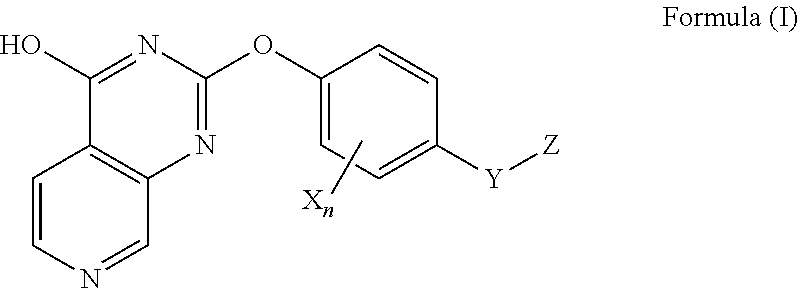
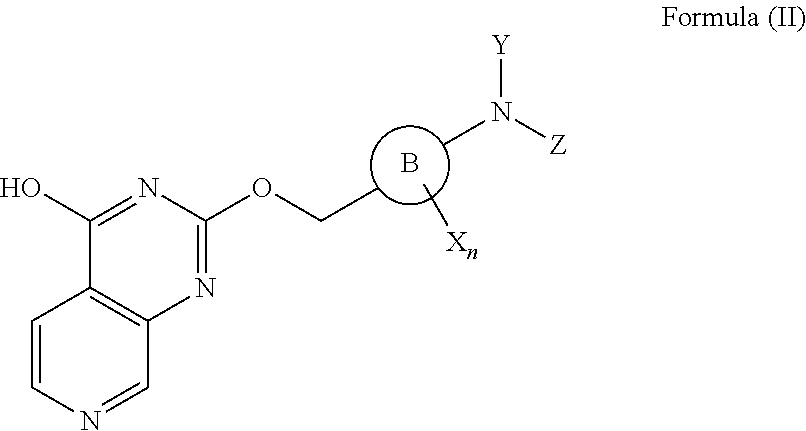
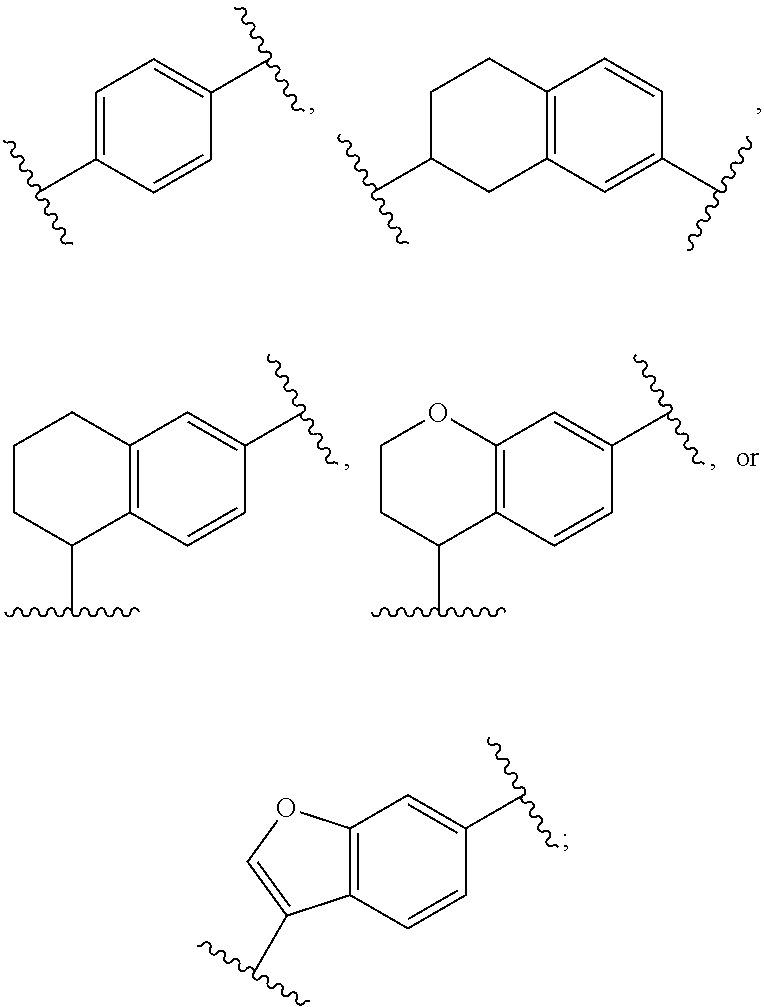
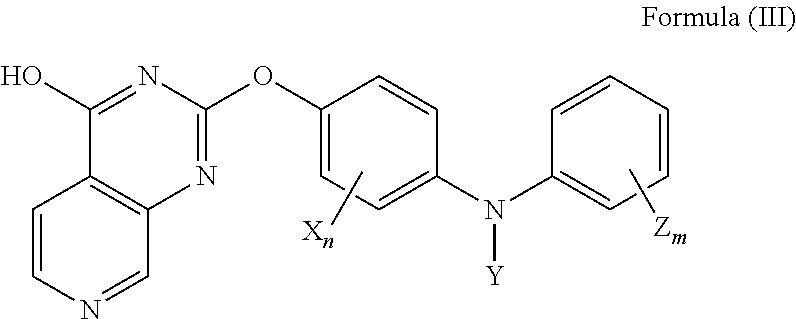
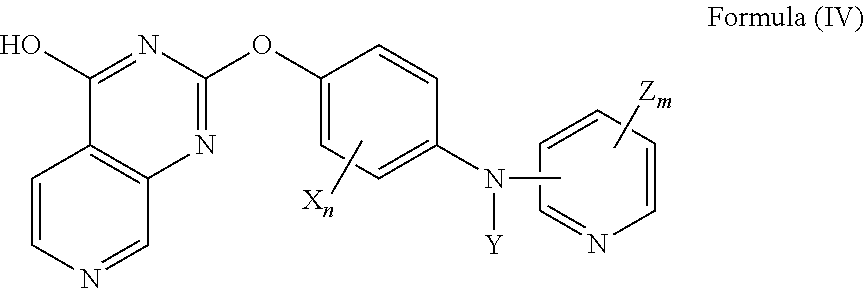
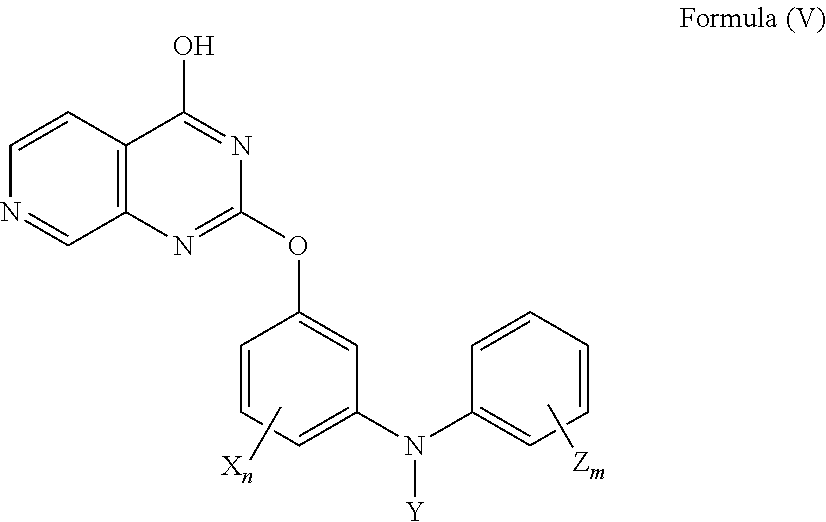
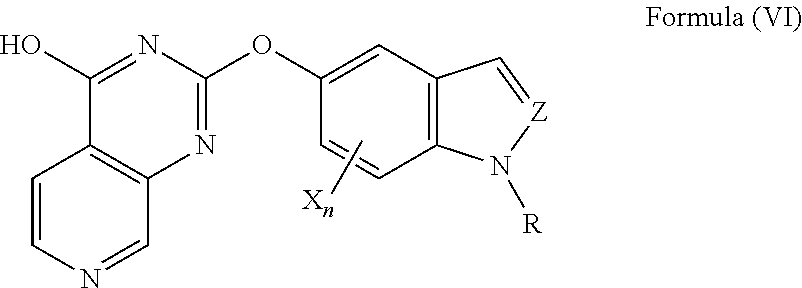
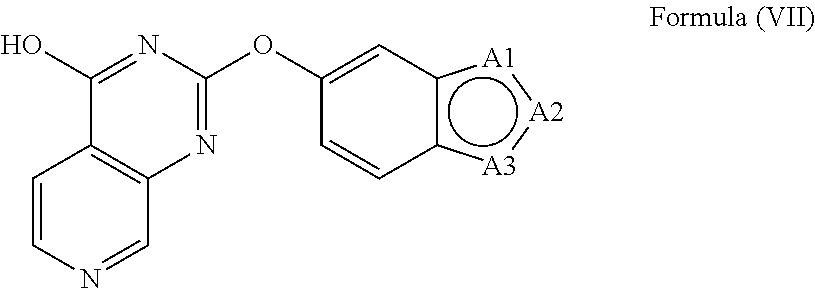
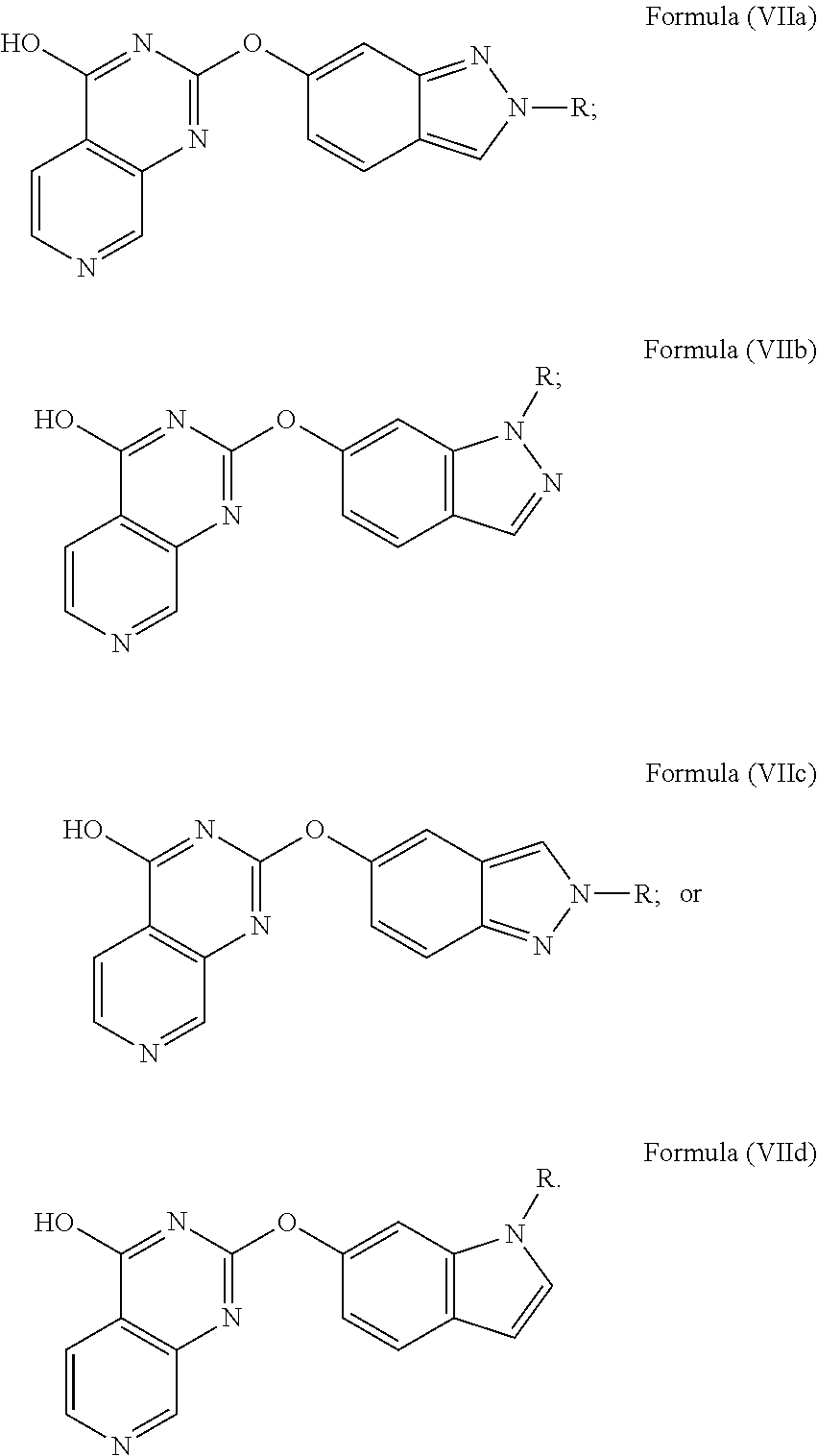

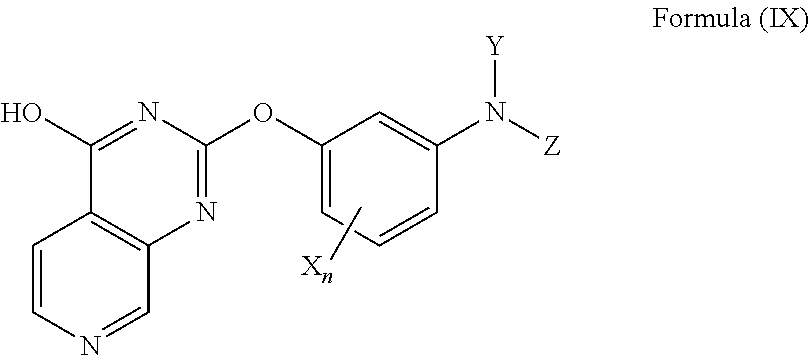
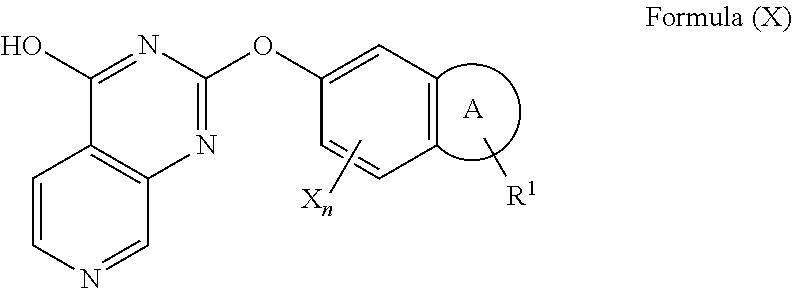
View All Diagrams
| United States Patent | 10,202,381 |
| Boloor , et al. | February 12, 2019 |
Histone demethylase inhibitors
Abstract
The present invention relates generally to compositions and methods for treating cancer and neoplastic disease. Provided herein are substituted pyrido[3,4-d]pyrimidin-4-one derivative compounds and pharmaceutical compositions comprising said compounds. The subject compounds and compositions are useful for inhibition of histone demethylase. Furthermore, the subject compounds and compositions are useful for the treatment of cancer, such as prostate cancer, breast cancer, bladder cancer, lung cancer, melanoma, and the like.
| Inventors: | Boloor; Amogh (San Diego, CA), Kanouni; Toufike (Rancho Santa Fe, CA), Stafford; Jeffrey Alan (San Diego, CA), Veal; James Marvin (Apex, NC), Wallace; Michael Brennan (San Diego, CA) | ||||||||||
|---|---|---|---|---|---|---|---|---|---|---|---|
| Applicant: |
|
||||||||||
| Assignee: | CELGENE QUANTICEL RESEARCH,
INC. (San Diego, CA) |
||||||||||
| Family ID: | 56286136 | ||||||||||
| Appl. No.: | 16/014,885 | ||||||||||
| Filed: | June 21, 2018 |
Prior Publication Data
| Document Identifier | Publication Date | |
|---|---|---|
| US 20180297999 A1 | Oct 18, 2018 | |
Related U.S. Patent Documents
| Application Number | Filing Date | Patent Number | Issue Date | ||
|---|---|---|---|---|---|
| 15071050 | Mar 15, 2016 | 10030017 | |||
| 14855950 | May 9, 2017 | 9643965 | |||
| 62051691 | Sep 17, 2014 | ||||
| Current U.S. Class: | 1/1 |
| Current CPC Class: | C07D 209/04 (20130101); C07D 239/00 (20130101); C07D 471/14 (20130101); C07D 227/00 (20130101); A61K 31/519 (20130101); A61K 31/404 (20130101); A61K 31/395 (20130101); A61K 31/505 (20130101); C07D 239/70 (20130101); C07D 471/04 (20130101) |
| Current International Class: | C07D 471/14 (20060101); C07D 471/04 (20060101) |
References Cited [Referenced By]
U.S. Patent Documents
| 2007/0190634 | August 2007 | Bebbington et al. |
| 2008/0045561 | February 2008 | Nemecek |
| 2014/0213591 | July 2014 | Chen et al. |
| 2014/0371195 | December 2014 | Labelle et al. |
| 2015/0376169 | December 2015 | Boloor et al. |
| 2016/0039808 | February 2016 | Kanouni et al. |
| 2008/033747 | Mar 2008 | WO | |||
| 2009/036055 | Mar 2009 | WO | |||
| 2014/053491 | Apr 2014 | WO | |||
| 2014/0100463 | Jun 2014 | WO | |||
| 2014/144850 | Sep 2014 | WO | |||
| 2014/151106 | Sep 2014 | WO | |||
| 2014/0164708 | Oct 2014 | WO | |||
Other References
|
Berge et al., Pharmaceutical Salts. Journal of Pharmaceutical Sciences 66(1):1-19 (Jan. 1977). cited by applicant . Bundgard et al., Design of Prodrugs, pp. 7-9, 21-24 (1985). cited by applicant . Extended European Search Report dated Feb. 7, 2018, in related European Patent Application No. 15842582.7, filed Sep. 14, 2015. cited by applicant . Higuchi et al., "Pro-drugs as Novel Delivery Systems," A.C.S. Symposium Series, 1975, vol. 14. cited by applicant . International Preliminary Report on Patentability dated Sep. 24, 2015, in related International Patent Application No. PCT/US2014/024998, filed Mar. 12, 2014. cited by applicant . International Preliminary Report on Patentability dated Mar. 30, 2017, in related International Application No. PCT/US2015/050432, filed Sep. 16, 2015. cited by applicant . International Search Report and Written Opinion dated Jul. 10, 2014, in related International Patent Application No. PCT/US2014/024998, filed Mar. 12, 2014. cited by applicant . International Search Report and Written Opinion dated Dec. 14, 2015, in related International Patent Application No. PCT/US15/050432, filed Sep. 16, 2015. cited by applicant . International Search Report and Written Opinion dated Jul. 19, 2017, in related International Patent Application No. PCT/US2017/022546, filed Mar. 15, 2017. cited by applicant . Klose et al., "JmjC-domain-containing proteins and histone demethylation." Nature Reviews Genetics 7:715-727 (Sep. 2006). cited by applicant . Lachner et al., An epigenetic road map for histone lysine methylation. Journal of Cell Science 116:2117-2124 (Jun. 1, 2003). cited by applicant . Lin et al., Loss of the retinoblastoma binding protein 2 (RBP2) histone demethylase suppresses tumorigenesis in mice lacking RB1 or Men 1.PNAS108(33):13379-13386 (2011). cited by applicant . Margueron et al. "The key to development: interpreting the histone code?" Current Opinion in Genetics & Development (2005) 15(2):163-176. cited by applicant . Search Report and Written Opinion dated Nov. 28, 2017, in related Singapore Patent Application No. 11201702147T, filed Sep. 16, 2015. cited by applicant . Stahl et al., Handbook of Pharmaceutical Salts. Verlag Helvetica Chimica Acta, Zurich (2002). cited by applicant . International Preliminary Report on Patentability dated Sep. 27, 2018 in related International Application No. PCT/US2017/022546, filed Mar. 15, 2017. cited by applicant. |
Primary Examiner: Lundgren; Jeffrey S
Assistant Examiner: Springer; Stephanie K
Attorney, Agent or Firm: Wiley Rein LLP
Parent Case Text
CROSS REFERENCE
This Application is a continuation of U.S. application Ser. No. 15/071,050, filed Mar. 15, 2016, which is a continuation-in-part of U.S. application Ser. No. 14/855,950, filed Sep. 16, 2015, now U.S. Pat. No. 9,643,965, which claims the benefit of U.S. Provisional Application No. 62/051,691, filed Sep. 17, 2014, the contents of which are hereby incorporated by reference in their entireties for all purposes.
Claims
We claim:
1. A compound of Formula (IV), or a pharmaceutically acceptable salt thereof, ##STR00812## wherein, X is halogen and n is 0 or 1; Y is hydrogen or C.sub.1-C.sub.3 alkyl; Z is halogen, --OH, --NH.sub.2, --CN, alkyl, alkoxy, alkylamino, carbocyclyl, aryl, heterocyclyl, heteroaryl, aralkyl, heterocyclylalkyl, or carbocyclylalkyl; and m is 0, 1, or 2.
2. The compound, or pharmaceutically acceptable salt thereof, of claim 1 wherein n is 0.
3. The compound, or pharmaceutically acceptable salt thereof, of claim 1, wherein n is 1.
4. The compound, or pharmaceutically acceptable salt thereof, of claim 3, wherein X is fluoro.
5. The compound, or pharmaceutically acceptable salt thereof, of claim 1, wherein Y is hydrogen.
6. The compound, or pharmaceutically acceptable salt thereof, of claim 1, wherein Y is C.sub.1alkyl.
7. The compound, or pharmaceutically acceptable salt thereof, of claim 1, wherein Y is C.sub.2alkyl.
8. The compound, or pharmaceutically acceptable salt thereof, of claim 1, wherein m is 0.
9. The compound, or pharmaceutically acceptable salt thereof, of claim 1, wherein m is 1.
10. The compound, or pharmaceutically acceptable salt thereof, of claim 1, wherein m is 2.
11. The compound, or pharmaceutically acceptable salt thereof, of claim 9, wherein Z is halogen, --CN, alkyl, alkoxy, carbocyclyl, or heterocyclyl.
12. The compound, or pharmaceutically acceptable salt thereof, of claim 9, wherein Z is fluoro, chloro, methyl, methoxy, or morpholinyl.
13. A pharmaceutical composition comprising a compound of claim 1, or a pharmaceutically acceptable salt thereof, and at least one pharmaceutically acceptable excipient.
14. The compound, or pharmaceutically acceptable salt thereof, of claim 1, selected from the group consisting of: 2-[4-(methyl-pyridin-2-yl-amino)-phenoxy]-pyrido[3,4-d]pyrimidin-4-ol; 2-{4-[(5-isopropyl-pyridin-2-yl)-methyl-amino]-phenoxy}-pyrido[3,4-d]pyri- midin-4-ol; 2-[4-[methyl-(5-methylpyridin-2-yl)amino]phenoxy]pyrido[3,4-d]pyrimidin-4- -ol; 2-[4-[methyl-(2-morpholin-4-ylpyridin-4-yl)amino]phenoxy]pyrido[3,4-d- ]pyrimidin-4-ol; 2-[4-[(5-ethylpyridin-2-yl)-methylamino]phenoxy]pyrido[3,4-d]pyrimidin-4-- ol; and 2-[4-[methyl-(6-propan-2-ylpyridin-3-yl)amino]phenoxy]pyrido[3,4-d- ]pyrimidin-4-ol.
15. A pharmaceutical composition comprising a compound of claim 14, or a pharmaceutically acceptable salt thereof, and at least one pharmaceutically acceptable excipient.
16. A compound of Formula (IX), or a pharmaceutically acceptable salt thereof, ##STR00813## wherein, X is halogen and n is 0 or 1; Y is C.sub.1-C.sub.3alkyl; and Z is aralkyl.
17. The compound, or pharmaceutically acceptable salt thereof, of claim 16, wherein n is 0.
18. The compound, or pharmaceutically acceptable salt thereof, of claim 16, wherein n is 1 and X is fluoro.
19. The compound, or pharmaceutically acceptable salt thereof, of claim 16, wherein Y is C.sub.1alkyl.
20. The compound, or pharmaceutically acceptable salt thereof, of claim 16, wherein Y is C.sub.2alkyl.
21. The compound, or pharmaceutically acceptable salt thereof, of claim 16, wherein Z is benzyl.
22. A pharmaceutical composition comprising a compound of claim 16, or a pharmaceutically acceptable salt thereof, and at least one pharmaceutically acceptable excipient.
23. The compound, or pharmaceutically acceptable salt thereof, of claim 16, selected from the group consisting of: 2-(1-benzyl-1H-indol-6-yloxy)-pyrido[3,4-d]pyrimidin-4-ol; 2-[3-(benzyl-methyl-amino)-phenoxy]-pyrido[3,4-d]pyrimidin-4-ol; 2-{4-[methyl(2-phenylethyl)amino]phenoxy}pyridino[3,4-d]pyrimidin-4-ol; N-[4-(4-hydroxy-pyrido[3,4-d]pyrimidin-2-yloxy)-phenyl]-N-methyl-2-phenyl- -acetamide; 2-[4-[methyl-[(1S)-1-phenylethyl]amino]phenoxy]pyrido[3,4-d]pyrimidin-4-o- l; 2-[4-[methyl-[(1R)-1-phenylethyl]amino]phenoxy]pyrido[3,4-d]pyrimidin-4- -ol; and 2-[4-[2,3-dihydro-1H-inden-1-ylmethyl(methyl)amino]phenoxy]pyrido- [3,4-d]pyrimidin-4-ol.
24. A pharmaceutical composition comprising a compound of claim 23, or a pharmaceutically acceptable salt thereof, and at least one pharmaceutically acceptable excipient.
Description
BACKGROUND
A need exists in the art for an effective treatment of cancer and neoplastic disease.
BRIEF SUMMARY OF THE INVENTION
Provided herein are substituted pyrido[3,4-d]pyrimidin-4-one derivative compounds and pharmaceutical compositions comprising said compounds. The subject compounds and compositions are useful for inhibition of histone demethylase. Furthermore, the subject compounds and compositions are useful for the treatment of cancer, such as prostate cancer, breast cancer, bladder cancer, lung cancer and/or melanoma and the like. The substituted pyrido[3,4-d]pyrimidin-4-one derivative compounds described herein are based upon a substituted pyrido[3,4-d]pyrimidin-4-one ring system bearing a hydroxy group at the 4-position, and an oxygen-based substituent at the 2-position.
One embodiment provides a compound of Formula (I), or pharmaceutically acceptable salt thereof,
##STR00001## wherein, X is halogen and n is 0 or 1; Y is --O--, --S--, --SO.sub.2--, --(CH.sub.2)--N(H)--, --(CH.sub.2)--N(H)--(C.dbd.O)--, --(CH.sub.2)--N(C.sub.1-C.sub.3alkyl)--(C.dbd.O)--; and Z is aryl, carbocyclyl, or heterocyclyl.
One embodiment provides a compound of Formula (II), or pharmaceutically acceptable salt thereof,
##STR00002## wherein, X is halogen and n is 0 or 1; ring B is chosen from:
##STR00003## Y is C.sub.1--C.sub.3alkyl; and Z is aryl or heteroaryl.
One embodiment provides a compound of Formula (III), or pharmaceutically acceptable salt thereof,
##STR00004## wherein, X is halogen and n is 0 or 1; Y is hydrogen or C.sub.1-C.sub.3alkyl; Z is halogen, --OH, --NH.sub.2, --CN, alkyl, alkoxy, alkylamino, carbocyclyl, aryl, heterocyclyl, heteroaryl, aralkyl, heterocyclylalkyl, or carbocyclylalkyl; and m is 0, 1, or 2.
One embodiment provides a compound of Formula (IV), or pharmaceutically acceptable salt thereof,
##STR00005## wherein, X is halogen and n is 0 or 1; Y is hydrogen or C.sub.1-C.sub.3 alkyl; Z is halogen, --OH, --NH.sub.2, --CN, alkyl, alkoxy, alkylamino, carbocyclyl, aryl, heterocyclyl, heteroaryl, aralkyl, heterocyclylalkyl, or carbocyclylalkyl; and m is 0, 1, or 2.
One embodiment provides a compound of Formula (V), or pharmaceutically acceptable salt thereof,
##STR00006## wherein, X is halogen and n is 0 or 1; Y is hydrogen or C.sub.1-C.sub.3 alkyl; Z is halogen, --OH, --NH.sub.2, --CN, alkyl, alkoxy, alkylamino, carbocyclyl, aryl, heterocyclyl, heteroaryl, aralkyl, heterocyclylalkyl, or carbocyclylalkyl; and m is 0, 1, or 2.
One embodiment provides a compound of Formula (VI), or pharmaceutically acceptable salt thereof,
##STR00007## wherein, X is halogen and n is 0 or 1; Z is N or C--H; R is alkyl, aryl, aralkyl, or carbocyclylalkyl.
One embodiment provides a compound of Formula (VII), or pharmaceutically acceptable salt thereof,
##STR00008## wherein, A1, A2, and A3 are chosen from C--H, N or N--R, provided that at least one of A1, A2, or A3 is C--H, and at least one of A1, A2, or A3 is N--R; and R is aryl, aralkyl, or carbocyclylalkyl.
Another embodiment provides the compound of Formula (VII), or pharmaceutically acceptable salt thereof, having a structure selected from Formula (VIIa)-(VIId) as described below:
##STR00009##
One embodiment provides a compound of Formula (VIII), or pharmaceutically acceptable salt thereof,
##STR00010## wherein, X is halogen and n is 0 or 1; Y is C.sub.1-C.sub.3alkyl; and Z is aralkyl.
One embodiment provides a compound of Formula (IX), or pharmaceutically acceptable salt thereof,
##STR00011## wherein, X is halogen and n is 0 or 1; Y is C.sub.1-C.sub.3alkyl; and Z is aralkyl.
One embodiment provides a compound of Formula (X), or pharmaceutically acceptable salt thereof,
##STR00012## wherein, X is halogen and n is 0 or 1; ring A, represented by
##STR00013## is chosen from:
##STR00014## and R.sup.1 is alkyl, aryl, aralkyl, carbocyclyl, carbocyclylalkyl, --(C.dbd.O)aryl, or --(SO.sub.2)aryl.
One embodiment provides a pharmaceutical composition comprising a compound of Formula (I)-(X), or pharmaceutically acceptable salt thereof, and at least one pharmaceutically acceptable excipient.
One embodiment provides a method for inhibiting a histone demethylase enzyme comprising contacting the histone demethylase enzyme with a compound of Formula (I)-(X).
One embodiment provides a method for treating cancer in subject in need thereof comprising administering to the subject a composition comprising a compound of Formula (I)-(X), or a pharmaceutically acceptable salt thereof.
INCORPORATION BY REFERENCE
All publications, patents, and patent applications mentioned in this specification are herein incorporated by reference to the same extent as if each individual publication, patent, or patent application was specifically and individually indicated to be incorporated by reference.
DETAILED DESCRIPTION
As used herein and in the appended claims, the singular forms "a," "and," and "the" include plural referents unless the context clearly dictates otherwise. Thus, for example, reference to "an agent" includes a plurality of such agents, and reference to "the cell" includes reference to one or more cells (or to a plurality of cells) and equivalents thereof known to those skilled in the art, and so forth. When ranges are used herein for physical properties, such as molecular weight, or chemical properties, such as chemical formulae, all combinations and subcombinations of ranges and specific embodiments therein are intended to be included. The term "about" when referring to a number or a numerical range means that the number or numerical range referred to is an approximation within experimental variability (or within statistical experimental error), and thus the number or numerical range may vary between 1% and 15% of the stated number or numerical range. The term "comprising" (and related terms such as "comprise" or "comprises" or "having" or "including") is not intended to exclude that in other certain embodiments, for example, an embodiment of any composition of matter, composition, method, or process, or the like, described herein, may "consist of" or "consist essentially of" the described features.
Definitions
As used in the specification and appended claims, unless specified to the contrary, the following terms have the meaning indicated below.
"Amino" refers to the --NH.sub.2 radical.
"Cyano" refers to the --CN radical.
"Nitro" refers to the --NO2 radical.
"Oxa" refers to the --O--radical.
"Oxo" refers to the .dbd.O radical.
"Thioxo" refers to the .dbd.S radical.
"Imino" refers to the .dbd.N--H radical.
"Oximo" refers to the .dbd.N--OH radical.
"Hydrazino" refers to the .dbd.N--NH2 radical.
"Alkyl" refers to a straight or branched hydrocarbon chain radical consisting solely of carbon and hydrogen atoms, containing no unsaturation, having from one to fifteen carbon atoms (e.g., C.sub.1-C.sub.15 alkyl). In certain embodiments, an alkyl comprises one to thirteen carbon atoms (e.g., C.sub.1-C.sub.13 alkyl). In certain embodiments, an alkyl comprises one to eight carbon atoms (e.g., C.sub.1-C.sub.8 alkyl). In other embodiments, an alkyl comprises one to five carbon atoms (e.g., C.sub.1-C.sub.5 alkyl). In other embodiments, an alkyl comprises one to four carbon atoms (e.g., C.sub.1-C.sub.4 alkyl). In other embodiments, an alkyl comprises one to three carbon atoms (e.g., C.sub.1-C.sub.3 alkyl). In other embodiments, an alkyl comprises one to two carbon atoms (e.g., C.sub.1-C.sub.2 alkyl). In other embodiments, an alkyl comprises one carbon atom (e.g., C.sub.1 alkyl). In other embodiments, an alkyl comprises five to fifteen carbon atoms (e.g., C.sub.5-C.sub.15 alkyl). In other embodiments, an alkyl comprises five to eight carbon atoms (e.g., C.sub.5-C.sub.8 alkyl). In other embodiments, an alkyl comprises two to five carbon atoms (e.g., C.sub.2-C.sub.5 alkyl). In other embodiments, an alkyl comprises three to five carbon atoms (e.g., C.sub.3-C.sub.5 alkyl). In other embodiments, the alkyl group is selected from methyl, ethyl, 1-propyl (n-propyl), 1-methylethyl (iso-propyl), 1-butyl (n-butyl), 1-methylpropyl (sec-butyl), 2-methylpropyl (iso-butyl), 1,1-dimethylethyl (tert-butyl), 1-pentyl (n-pentyl). The alkyl is attached to the rest of the molecule by a single bond. Unless stated otherwise specifically in the specification, an alkyl group is optionally substituted by one or more of the following substituents: halo, cyano, nitro, oxo, thioxo, imino, oximo, trimethylsilanyl, --OR.sup.a, --SR.sup.a, --OC(O)--R.sup.a, --N(R.sup.a).sub.2, --C(O)R.sup.a, --C(O)OR.sup.a, --C(O)N(R.sup.a).sub.2, --N(R.sup.a)C(O)OR.sup.a, --OC(O)--N(R.sup.a).sub.2, --N(R.sup.a)C(O)R.sup.a, --N(R.sup.a)S(O).sub.tR.sup.a (where t is 1 or 2), --S(O).sub.tOR.sup.a (where t is 1 or 2), --S(O).sub.tR.sup.a (where t is 1 or 2) and --S(O).sub.tN(R.sup.a).sub.2 (where t is 1 or 2) where each R.sup.a is independently hydrogen, alkyl, fluoroalkyl, carbocyclyl, carbocyclylalkyl, aryl, aralkyl, heterocyclyl, heterocyclylalkyl, heteroaryl or heteroarylalkyl.
"Alkoxy" refers to a radical bonded through an oxygen atom of the formula --O-- alkyl, where alkyl is an alkyl chain as defined above.
"Alkenyl" refers to a straight or branched hydrocarbon chain radical group consisting solely of carbon and hydrogen atoms, containing at least one carbon-carbon double bond, and having from two to twelve carbon atoms. In certain embodiments, an alkenyl comprises two to eight carbon atoms. In other embodiments, an alkenyl comprises two to four carbon atoms. The alkenyl is attached to the rest of the molecule by a single bond, for example, ethenyl (i.e., vinyl), prop-1-enyl (i.e., allyl), but-1-enyl, pent-1-enyl, penta-1,4-dienyl, and the like. Unless stated otherwise specifically in the specification, an alkenyl group is optionally substituted by one or more of the following substituents: halo, cyano, nitro, oxo, thioxo, imino, oximo, trimethylsilanyl, --OR.sup.a, --SR.sup.a, --OC(O)--R.sup.a, --N(R.sup.a).sub.2, --C(O)R.sup.a, --C(O)OR.sup.a, --C(O)N(R.sup.a).sub.2, --N(R.sup.a)C(O)OR.sup.a, --OC(O)--N(R.sup.a).sub.2, --N(R.sup.a)C(O)R.sup.a, --N(R.sup.a)S(O).sub.tR.sup.a (where t is 1 or 2), --S(O).sub.tOR.sup.a (where t is 1 or 2), --S(O).sub.tR.sup.a (where t is 1 or 2) and --S(O).sub.tN(R.sup.a).sub.2 (where t is 1 or 2) where each R.sup.a is independently hydrogen, alkyl, fluoroalkyl, carbocyclyl, carbocyclylalkyl, aryl, aralkyl, heterocyclyl, heterocyclylalkyl, heteroaryl or heteroarylalkyl.
"Alkynyl" refers to a straight or branched hydrocarbon chain radical group consisting solely of carbon and hydrogen atoms, containing at least one carbon-carbon triple bond, having from two to twelve carbon atoms. In certain embodiments, an alkynyl comprises two to eight carbon atoms. In other embodiments, an alkynyl has two to four carbon atoms. The alkynyl is attached to the rest of the molecule by a single bond, for example, ethynyl, propynyl, butynyl, pentynyl, hexynyl, and the like. Unless stated otherwise specifically in the specification, an alkynyl group is optionally substituted by one or more of the following substituents: halo, cyano, nitro, oxo, thioxo, imino, oximo, trimethylsilanyl, --OR.sup.a, --SR.sup.a, --OC(O)--R.sup.a, --N(R.sup.a).sub.2, --C(O)R.sup.a, --C(O)OR.sup.a, --C(O)N(R.sup.a).sub.2, --N(R.sup.a)C(O)OR.sup.a, --OC(O)--N(R.sup.a).sub.2, --N(R.sup.a)C(O)R.sup.a, --N(R.sup.a)S(O).sub.tR.sup.a (where t is 1 or 2), --S(O).sub.tOR.sup.a (where t is 1 or 2), --S(O).sub.tR.sup.a (where t is 1 or 2) and --S(O).sub.tN(R.sup.a).sub.2 (where t is 1 or 2) where each R.sup.a is independently hydrogen, alkyl, fluoroalkyl, carbocyclyl, carbocyclylalkyl, aryl, aralkyl, heterocyclyl, heterocyclylalkyl, heteroaryl or heteroarylalkyl.
"Alkylene" or "alkylene chain" refers to a straight or branched divalent hydrocarbon chain linking the rest of the molecule to a radical group, consisting solely of carbon and hydrogen, containing no unsaturation and having from one to twelve carbon atoms, for example, methylene, ethylene, propylene, n-butylene, and the like. The alkylene chain is attached to the rest of the molecule through a single bond and to the radical group through a single bond. The points of attachment of the alkylene chain to the rest of the molecule and to the radical group can be through one carbon in the alkylene chain or through any two carbons within the chain. In certain embodiments, an alkylene comprises one to eight carbon atoms (e.g., C.sub.1C.sub.8 alkylene). In other embodiments, an alkylene comprises one to five carbon atoms (e.g., C.sub.1-C.sub.5 alkylene). In other embodiments, an alkylene comprises one to four carbon atoms (e.g., C.sub.1-C.sub.4 alkylene). In other embodiments, an alkylene comprises one to three carbon atoms (e.g., C.sub.1-C.sub.3 alkylene). In other embodiments, an alkylene comprises one to two carbon atoms (e.g., C.sub.1-C.sub.2 alkylene). In other embodiments, an alkylene comprises one carbon atom (e.g., C.sub.1 alkylene). In other embodiments, an alkylene comprises five to eight carbon atoms (e.g., C.sub.5-C.sub.8 alkylene). In other embodiments, an alkylene comprises two to five carbon atoms (e.g., C.sub.2-C.sub.5 alkylene). In other embodiments, an alkylene comprises three to five carbon atoms (e.g., C.sub.3-C.sub.5 alkylene). Unless stated otherwise specifically in the specification, an alkylene chain is optionally substituted by one or more of the following substituents: halo, cyano, nitro, oxo, thioxo, imino, oximo, trimethylsilanyl, --OR.sup.a, --SR.sup.a, --OC(O)--R.sup.a, --N(R.sup.a).sub.2, --C(O)R.sup.a, --C(O)OR.sup.a, --C(O)N(R.sup.a).sub.2, --N(R.sup.a)C(O)OR.sup.a, --OC(O)--N(R.sup.a).sub.2, --N(R.sup.a)C(O)R.sup.a, --N(R.sup.a)S(O).sub.tR.sup.a (where t is 1 or 2), --S(O).sub.tOR.sup.a (where t is 1 or 2), --S(O).sub.tR.sup.a (where t is 1 or 2) and --S(O).sub.tN(R.sup.a).sub.2 (where t is 1 or 2) where each R.sup.a is independently hydrogen, alkyl, fluoroalkyl, carbocyclyl, carbocyclylalkyl, aryl, aralkyl, heterocyclyl, heterocyclylalkyl, heteroaryl or heteroarylalkyl.
"Aryl" refers to a radical derived from an aromatic monocyclic or multicyclic hydrocarbon ring system by removing a hydrogen atom from a ring carbon atom. The aromatic monocyclic or multicyclic hydrocarbon ring system contains only hydrogen and carbon from five to eighteen carbon atoms, where at least one of the rings in the ring system is fully unsaturated, i.e., it contains a cyclic, delocalized (4n+2) .pi.-electron system in accordance with the Huckel theory. The ring system from which aryl groups are derived include, but are not limited to, groups such as benzene, fluorene, indane, indene, tetralin and naphthalene. Unless stated otherwise specifically in the specification, the term "aryl" or the prefix "ar-" (such as in "aralkyl") is meant to include aryl radicals optionally substituted by one or more substituents independently selected from alkyl, alkenyl, alkynyl, halo, fluoroalkyl, cyano, nitro, optionally substituted aryl, optionally substituted aralkyl, optionally substituted aralkenyl, optionally substituted aralkynyl, optionally substituted carbocyclyl, optionally substituted carbocyclylalkyl, optionally substituted heterocyclyl, optionally substituted heterocyclylalkyl, optionally substituted heteroaryl, optionally substituted heteroarylalkyl, --R.sup.b--OR.sup.a, --R.sup.b--OC(O)--R.sup.a, --R.sup.b--OC(O)--OR.sup.a, --R.sup.b--OC(O)--N(R.sup.a).sub.2, --R.sup.b--N(R.sup.a).sub.2, --R.sup.b--C(O)R.sup.a, --R.sup.b--C(O)OR.sup.a, --R.sup.b--C(O)N(R.sup.a).sub.2, --R.sup.b--O--R.sup.c--C(O)N(R.sup.a).sub.2, --R.sup.b--N(R.sup.a)C(O)OR.sup.a, --R.sup.b--N(R.sup.a)C(O)R.sup.a, --R.sup.b--N(R.sup.a)S(O).sub.tR.sup.a (where t is 1 or 2), --R.sup.b--S(O).sub.tOR.sup.a (where t is 1 or 2), --R.sup.b--S(O).sub.tR.sup.a (where t is 1 or 2) and --R.sup.b--S(O).sub.tN(R.sup.a).sub.2 (where t is 1 or 2), where each .sup.a is independently hydrogen, alkyl, fluoroalkyl, cycloalkyl, cycloalkylalkyl, aryl (optionally substituted with one or more halo groups), aralkyl, heterocyclyl, heterocyclylalkyl, heteroaryl or heteroarylalkyl, each R.sup.b is independently a direct bond or a straight or branched alkylene or alkenylene chain, and R.sup.c is a straight or branched alkylene or alkenylene chain, and where each of the above substituents is unsubstituted unless otherwise indicated.
"Aralkyl" refers to a radical of the formula --R.sup.c-aryl where R.sup.c is an alkylene chain as defined above, for example, methylene, ethylene, and the like. The alkylene chain part of the aralkyl radical is optionally substituted as described above for an alkylene chain. The aryl part of the aralkyl radical is optionally substituted as described above for an aryl group.
"Aralkenyl" refers to a radical of the formula --R.sup.d-aryl where R.sup.d is an alkenylene chain as defined above. The aryl part of the aralkenyl radical is optionally substituted as described above for an aryl group. The alkenylene chain part of the aralkenyl radical is optionally substituted as defined above for an alkenylene group.
"Aralkynyl" refers to a radical of the formula --R.sup.e-aryl, where R.sup.e is an alkynylene chain as defined above. The aryl part of the aralkynyl radical is optionally substituted as described above for an aryl group. The alkynylene chain part of the aralkynyl radical is optionally substituted as defined above for an alkynylene chain.
"Aralkoxy" refers to a radical bonded through an oxygen atom of the formula --O--R.sup.c-aryl where R.sup.c is an alkylene chain as defined above, for example, methylene, ethylene, and the like. The alkylene chain part of the aralkyl radical is optionally substituted as described above for an alkylene chain. The aryl part of the aralkyl radical is optionally substituted as described above for an aryl group.
"Carbocyclyl" refers to a stable non-aromatic monocyclic or polycyclic hydrocarbon radical consisting solely of carbon and hydrogen atoms, which may include fused or bridged ring systems, having from three to fifteen carbon atoms. In certain embodiments, a carbocyclyl comprises three to ten carbon atoms. In other embodiments, a carbocyclyl comprises five to seven carbon atoms. The carbocyclyl is attached to the rest of the molecule by a single bond. Carbocyclyl may be saturated, (i.e., containing single C--C bonds only) or unsaturated (i.e., containing one or more double bonds or triple bonds). A fully saturated carbocyclyl radical is also referred to as "cycloalkyl." Examples of monocyclic cycloalkyls include, e.g., cyclopropyl, cyclobutyl, cyclopentyl, cyclohexyl, cycloheptyl, and cyclooctyl. An unsaturated carbocyclyl is also referred to as "cycloalkenyl." Examples of monocyclic cycloalkenyls include, e.g., cyclopentenyl, cyclohexenyl, cycloheptenyl, and cyclooctenyl. Polycyclic carbocyclyl radicals include, for example, adamantyl, norbornyl (i.e., bicyclo[2.2.1]heptanyl), norbornenyl, decalinyl, 7,7-dimethyl-bicyclo[2.2.1]heptanyl, and the like.
Unless otherwise stated specifically in the specification, the term "carbocyclyl" is meant to include carbocyclyl radicals that are optionally substituted by one or more substituents independently selected from alkyl, alkenyl, alkynyl, halo, fluoroalkyl, oxo, thioxo, cyano, nitro, optionally substituted aryl, optionally substituted aralkyl, optionally substituted aralkenyl, optionally substituted aralkynyl, optionally substituted carbocyclyl, optionally substituted carbocyclylalkyl, optionally substituted heterocyclyl, optionally substituted heterocyclylalkyl, optionally substituted heteroaryl, optionally substituted heteroarylalkyl, --R.sup.b--OR.sup.a, --R.sup.b--OC(O)--R.sup.a, --R.sup.b--OC(O)--OR.sup.a, --R.sup.b--OC(O)--N(R.sup.a).sub.2, --R.sup.b--N(R.sup.a).sub.2, --R.sup.b--C(O)R.sup.a, --R.sup.b--C(O)OR.sup.a, --R.sup.b--C(O)N(R.sup.a).sub.2, --R.sup.b--O--R.sup.c--C(O)N(R.sup.a).sub.2, --R.sup.b--N(R.sup.a)C(O)OR.sup.a, --R.sup.b--N(R.sup.a)C(O)R.sup.a, --R.sup.b--N(R.sup.a)S(O).sub.tR.sup.a (where t is 1 or 2), --R.sup.b--S(O).sub.tOR.sup.a (where t is 1 or 2), --R.sup.b--S(O).sub.tR.sup.a (where t is 1 or 2) and --R.sup.b--S(O).sub.tN(R.sup.a).sub.2 (where t is 1 or 2), where each R.sup.a is independently hydrogen, alkyl, fluoroalkyl, cycloalkyl, cycloalkylalkyl, aryl, aralkyl, heterocyclyl, heterocyclylalkyl, heteroaryl or heteroarylalkyl, each R.sup.b is independently a direct bond or a straight or branched alkylene or alkenylene chain, and R.sup.c is a straight or branched alkylene or alkenylene chain, and where each of the above substituents is unsubstituted unless otherwise indicated.
"Carbocyclylalkyl" refers to a radical of the formula --R.sup.c-carbocyclyl where R.sup.c is an alkylene chain as defined above. The alkylene chain and the carbocyclyl radical is optionally substituted as defined above.
"Carbocyclylalkoxy" refers to a radical bonded through an oxygen atom of the formula --O--R.sup.c-carbocyclyl where R.sup.c is an alkylene chain as defined above. The alkylene chain and the carbocyclyl radical is optionally substituted as defined above.
"Halo" or "halogen" refers to bromo, chloro, fluoro or iodo substituents.
"Fluoroalkyl" refers to an alkyl radical, as defined above, that is substituted by one or more fluoro radicals, as defined above, for example, trifluoromethyl, difluoromethyl, fluoromethyl, 2,2,2-trifluoroethyl, 1-fluoromethyl-2-fluoroethyl, and the like. The alkyl part of the fluoroalkyl radical may be optionally substituted as defined above for an alkyl group.
"Heterocyclyl" refers to a stable 3- to 18-membered non-aromatic ring radical that comprises two to twelve carbon atoms and from one to six heteroatoms selected from nitrogen, oxygen and sulfur. Unless stated otherwise specifically in the specification, the heterocyclyl radical is a monocyclic, bicyclic, tricyclic or tetracyclic ring system, which may include fused or bridged ring systems. The heteroatoms in the heterocyclyl radical may be optionally oxidized. One or more nitrogen atoms, if present, are optionally quaternized. The heterocyclyl radical is partially or fully saturated. The heterocyclyl may be attached to the rest of the molecule through any atom of the ring(s). Examples of such heterocyclyl radicals include, but are not limited to, dioxolanyl, thienyl[1,3]dithianyl, decahydroisoquinolyl, imidazolinyl, imidazolidinyl, isothiazolidinyl, isoxazolidinyl, morpholinyl, octahydroindolyl, octahydroisoindolyl, 2-oxopiperazinyl, 2-oxopiperidinyl, 2-oxopyrrolidinyl, oxazolidinyl, piperidinyl, piperazinyl, 4-piperidonyl, pyrrolidinyl, pyrazolidinyl, quinuclidinyl, thiazolidinyl, tetrahydrofuryl, trithianyl, tetrahydropyranyl, thiomorpholinyl, thiamorpholinyl, 1-oxo-thiomorpholinyl, and 1,1-dioxo-thiomorpholinyl.
Unless stated otherwise specifically in the specification, the term "heterocyclyl" is meant to include heterocyclyl radicals as defined above that are optionally substituted by one or more substituents selected from alkyl, alkenyl, alkynyl, halo, fluoroalkyl, oxo, thioxo, cyano, nitro, optionally substituted aryl, optionally substituted aralkyl, optionally substituted aralkenyl, optionally substituted aralkynyl, optionally substituted carbocyclyl, optionally substituted carbocyclylalkyl, optionally substituted heterocyclyl, optionally substituted heterocyclylalkyl, optionally substituted heteroaryl, optionally substituted heteroarylalkyl, --R.sup.b--OR.sup.a, --R.sup.b--OC(O)--R.sup.a, --R.sup.b--OC(O)--OR.sup.a, --R.sup.b--OC(O)--N(R.sup.a).sub.2, --R.sup.b--N(R.sup.a).sub.2, --R.sup.b--C(O)R.sup.a, --R.sup.b-C(O)OR.sup.a, --R.sup.b--C(O)N(R.sup.a).sub.2, --R.sup.b--O--R.sup.c--C(O)N(R.sup.a).sub.2, --R.sup.b--N(R.sup.a)C(O)OR.sup.a, --R.sup.b--N(R.sup.a)C(O)R.sup.a, --R.sup.b--N(R.sup.a)S(O).sub.tR.sup.a (where t is 1 or 2), --R.sup.b-S(O).sub.tOR.sup.a (where t is 1 or 2), --R.sup.b--S(O).sub.tR.sup.a (where t is 1 or 2) and --R.sup.b--S(O).sub.tN(R.sup.a).sub.2 (where t is 1 or 2), where each R.sup.a is independently hydrogen, alkyl, fluoroalkyl, cycloalkyl, cycloalkylalkyl, aryl, aralkyl, heterocyclyl, heterocyclylalkyl, heteroaryl or heteroarylalkyl, each R.sup.b is independently a direct bond or a straight or branched alkylene or alkenylene chain, and R.sup.c is a straight or branched alkylene or alkenylene chain, and where each of the above substituents is unsubstituted unless otherwise indicated.
"N-heterocyclyl" or "N-attached heterocyclyl" refers to a heterocyclyl radical as defined above containing at least one nitrogen and where the point of attachment of the heterocyclyl radical to the rest of the molecule is through a nitrogen atom in the heterocyclyl radical. An N-heterocyclyl radical is optionally substituted as described above for heterocyclyl radicals. Examples of such N-heterocyclyl radicals include, but are not limited to, 1-morpholinyl, 1-piperidinyl, 1-piperazinyl, 1-pyrrolidinyl, pyrazolidinyl, imidazolinyl, and imidazolidinyl.
"C-heterocyclyl" or "C-attached heterocyclyl" refers to a heterocyclyl radical as defined above containing at least one heteroatom and where the point of attachment of the heterocyclyl radical to the rest of the molecule is through a carbon atom in the heterocyclyl radical. A C-heterocyclyl radical is optionally substituted as described above for heterocyclyl radicals. Examples of such C-heterocyclyl radicals include, but are not limited to, 2-morpholinyl, 2- or 3- or 4-piperidinyl, 2-piperazinyl, 2- or 3-pyrrolidinyl, and the like.
"Heterocyclylalkyl" refers to a radical of the formula --R.sup.c-heterocyclyl where R.sup.c is an alkylene chain as defined above. If the heterocyclyl is a nitrogen-containing heterocyclyl, the heterocyclyl is optionally attached to the alkyl radical at the nitrogen atom. The alkylene chain of the heterocyclylalkyl radical is optionally substituted as defined above for an alkylene chain. The heterocyclyl part of the heterocyclylalkyl radical is optionally substituted as defined above for a heterocyclyl group.
"Heterocyclylalkoxy" refers to a radical bonded through an oxygen atom of the formula --O--R.sup.c-heterocyclyl where R.sup.c is an alkylene chain as defined above. If the heterocyclyl is a nitrogen-containing heterocyclyl, the heterocyclyl is optionally attached to the alkyl radical at the nitrogen atom. The alkylene chain of the heterocyclylalkoxy radical is optionally substituted as defined above for an alkylene chain. The heterocyclyl part of the heterocyclylalkoxy radical is optionally substituted as defined above for a heterocyclyl group.
"Heteroaryl" refers to a radical derived from a 3- to 18-membered aromatic ring radical that comprises two to seventeen carbon atoms and from one to six heteroatoms selected from nitrogen, oxygen and sulfur. As used herein, the heteroaryl radical may be a monocyclic, bicyclic, tricyclic or tetracyclic ring system, wherein at least one of the rings in the ring system is fully unsaturated, i.e., it contains a cyclic, delocalized (4n+2) .pi.-electron system in accordance with the Huckel theory. Heteroaryl includes fused or bridged ring systems. The heteroatom(s) in the heteroaryl radical is optionally oxidized. One or more nitrogen atoms, if present, are optionally quaternized. The heteroaryl is attached to the rest of the molecule through any atom of the ring(s).
Examples of heteroaryls include, but are not limited to, azepinyl, acridinyl, benzimidazolyl, benzindolyl, 1,3-benzodioxolyl, benzofuranyl, benzooxazolyl, benzo[d]thiazolyl, benzothiadiazolyl, benzo[b][1,4]dioxepinyl, benzo[b][1,4]oxazinyl, 1,4-benzodioxanyl, benzonaphthofuranyl, benzoxazolyl, benzodioxolyl, benzodioxinyl, benzopyranyl, benzopyranonyl, benzofuranyl, benzofuranonyl, benzothienyl (benzothiophenyl), benzothieno[3,2-d]pyrimidinyl, benzotriazolyl, benzo[4,6]imidazo[1,2-a]pyridinyl, carbazolyl, cinnolinyl, cyclopenta[d]pyrimidinyl, 6,7--dihydro-5H-cyclopenta[4,5]thieno[2,3-d]pyrimidinyl, 5,6-dihydrobenzo[h]quinazolinyl, 5,6--dihydrobenzo[h]cinnolinyl, 6,7--dihydro-5H-benzo[6,7]cyclohepta[1,2-c]pyridazinyl, dibenzofuranyl, dibenzothiophenyl, furanyl, furanonyl, furo[3,2-c]pyridinyl, 5,6,7,8,9,10-hexa-hydrocycloocta[d]pyrimidinyl, 5,6,7,8,9,10-hexahydrocycloocta[d]pyridazinyl, 5,6,7,8,9,10-hexa-hydrocycloocta[d]pyridinyl, isothiazolyl, imidazolyl, indazolyl, indolyl, indazolyl, isoindolyl, indolinyl, isoindolinyl, isoquinolyl, indolizinyl, isoxazolyl, 5,8--methano-5,6,7,8-tetra-hydroquina-zolinyl, naphthyridinyl, 1,6--naphthyridinonyl, oxadiazolyl, 2-oxoazepinyl, oxazolyl, oxiranyl, 5,6,6a,7,8,9,10,10a-octahydrobenzo[h]quinazolinyl, 1-phenyl-1H-pyrrolyl, phenazinyl, phenothiazinyl, phenoxazinyl, phthalazinyl, pteridinyl, purinyl, pyrrolyl, pyrazolyl, pyrazolo[3,4-d]-pyrimidinyl, pyridinyl, pyrido[3,2-d]pyrimidinyl, pyrido[3,4-d]pyrimidinyl, pyrazinyl, pyrimidinyl, pyridazinyl, pyrrolyl, quinazolinyl, quinoxalinyl, quinolinyl, isoquinolinyl, tetrahydroquinolinyl, 5,6,7,8-tetrahydroquinazolinyl, 5,6,7,8-tetrahydrobenzo[4,5]thieno-[2,3-d]pyrimidinyl, 6,7,8,9-tetrahydro-5H-cyclohepta[4,5]thieno[2,3-d]pyrimidinyl, 5,6,7,8--tetrahydropyrido-[4,5-c]pyridazinyl, thiazolyl, thiadiazolyl, triazolyl, tetrazolyl, triazinyl, thieno[2,3-d]pyrimidinyl, thieno[3,2-d]pyrimidinyl, thieno[2,3-c]pridinyl, and thiophenyl (i.e., thienyl).
Unless stated otherwise specifically in the specification, the term "heteroaryl" is meant to include heteroaryl radicals as defined above which are optionally substituted by one or more substituents selected from alkyl, alkenyl, alkynyl, halo, fluoroalkyl, haloalkenyl, haloalkynyl, oxo, thioxo, cyano, nitro, optionally substituted aryl, optionally substituted aralkyl, optionally substituted aralkenyl, optionally substituted aralkynyl, optionally substituted carbocyclyl, optionally substituted carbocyclylalkyl, optionally substituted heterocyclyl, optionally substituted heterocyclylalkyl, optionally substituted heteroaryl, optionally substituted heteroaryl alkyl, --R.sup.b--OC(O)--R.sup.a, --R.sup.b--OC(O)--OR.sup.a, --R.sup.b--OC(O)--N(R.sup.a).sub.2, --R.sup.b--N(R.sup.a).sub.2, --R.sup.b--C(O)R.sup.a, --R.sup.b--C(O)OR.sup.a, --R.sup.b--C(O)N(R.sup.a).sub.2, --R.sup.b--O--R.sup.c--C(O)N(R.sup.a).sub.2, --R.sup.b--N(R.sup.a)C(O)OR.sup.a, --R.sup.b--N(R.sup.a)C(O)R.sup.a, --R.sup.b--N(R.sup.a)S(O).sub.tR.sup.a (where t is 1 or 2), --R.sup.b--S(O).sub.tOR.sup.a (where t is 1 or 2), --R.sup.b-S(O).sub.tR.sup.a (where t is 1 or 2) and --R.sup.b--S(O).sub.tN(R.sup.a).sub.2 (where t is 1 or 2), where each R.sup.a is independently hydrogen, alkyl, fluoroalkyl, cycloalkyl, cycloalkylalkyl, aryl, aralkyl, heterocyclyl, heterocyclylalkyl, heteroaryl or heteroarylalkyl, each R.sup.b is independently a direct bond or a straight or branched alkylene or alkenylene chain, and R.sup.c is a straight or branched alkylene or alkenylene chain, and where each of the above substituents is unsubstituted unless otherwise indicated.
"N-heteroaryl" refers to a heteroaryl radical as defined above containing at least one nitrogen and where the point of attachment of the heteroaryl radical to the rest of the molecule is through a nitrogen atom in the heteroaryl radical. An N-heteroaryl radical is optionally substituted as described above for heteroaryl radicals.
"C-heteroaryl" refers to a heteroaryl radical as defined above and where the point of attachment of the heteroaryl radical to the rest of the molecule is through a carbon atom in the heteroaryl radical. A C-heteroaryl radical is optionally substituted as described above for heteroaryl radicals.
"Heteroarylalkyl" refers to a radical of the formula --R.sup.c-heteroaryl, where R.sup.c is an alkylene chain as defined above. If the heteroaryl is a nitrogen-containing heteroaryl, the heteroaryl is optionally attached to the alkyl radical at the nitrogen atom. The alkylene chain of the heteroarylalkyl radical is optionally substituted as defined above for an alkylene chain. The heteroaryl part of the heteroarylalkyl radical is optionally substituted as defined above for a heteroaryl group.
"Heteroarylalkoxy" refers to a radical bonded through an oxygen atom of the formula --O--R.sup.c-heteroaryl, where R.sup.c is an alkylene chain as defined above. If the heteroaryl is a nitrogen-containing heteroaryl, the heteroaryl is optionally attached to the alkyl radical at the nitrogen atom. The alkylene chain of the heteroarylalkoxy radical is optionally substituted as defined above for an alkylene chain. The heteroaryl part of the heteroarylalkoxy radical is optionally substituted as defined above for a heteroaryl group.
The compounds disclosed herein may contain one or more asymmetric centers and may thus give rise to enantiomers, diastereomers, and other stereoisomeric forms that may be defined, in terms of absolute stereochemistry, as (R)-- or (S)--. Unless stated otherwise, it is intended that all stereoisomeric forms of the compounds disclosed herein are contemplated by this disclosure. When the compounds described herein contain alkene double bonds, and unless specified otherwise, it is intended that this disclosure includes both E and Z geometric isomers (e.g., cis or trans). Likewise, all possible isomers, as well as their racemic and optically pure forms, and all tautomeric forms are also intended to be included. The term "geometric isomer" refers to E or Z geometric isomers (e.g., cis or trans) of an alkene double bond. The term "positional isomer" refers to structural isomers around a central ring, such as ortho-, meta-, and para-isomers around a benzene ring.
A "tautomer" refers to a molecule wherein a proton shift from one atom of a molecule to another atom of the same molecule is possible. The compounds presented herein may, in certain embodiments, exist as tautomers. In circumstances where tautomerization is possible, a chemical equilibrium of the tautomers will exist. The exact ratio of the tautomers depends on several factors, including physical state, temperature, solvent, and pH. Some examples of tautomeric equilibrium include:
##STR00015##
"Optional" or "optionally" means that a subsequently described event or circumstance may or may not occur and that the description includes instances when the event or circumstance occurs and instances in which it does not. For example, "optionally substituted aryl" means that the aryl radical may or may not be substituted and that the description includes both substituted aryl radicals and aryl radicals having no substitution.
"Pharmaceutically acceptable salt" includes both acid and base addition salts. A pharmaceutically acceptable salt of any one of the substituted pyrido[3,4-d]pyrimidin-4-one derivative compounds described herein is intended to encompass any and all pharmaceutically suitable salt forms. Preferred pharmaceutically acceptable salts of the compounds described herein are pharmaceutically acceptable acid addition salts and pharmaceutically acceptable base addition salts. "Pharmaceutically acceptable acid addition salt" refers to those salts which retain the biological effectiveness and properties of the free bases, which are not biologically or otherwise undesirable, and which are formed with inorganic acids such as hydrochloric acid, hydrobromic acid, sulfuric acid, nitric acid, phosphoric acid, hydroiodic acid, hydrofluoric acid, phosphorous acid, and the like. Also included are salts that are formed with organic acids such as aliphatic mono- and dicarboxylic acids, phenyl-substituted alkanoic acids, hydroxy alkanoic acids, alkanedioic acids, aromatic acids, aliphatic and aromatic sulfonic acids, etc. and include, for example, acetic acid, trifluoroacetic acid, propionic acid, glycolic acid, pyruvic acid, oxalic acid, maleic acid, malonic acid, succinic acid, fumaric acid, tartaric acid, citric acid, benzoic acid, cinnamic acid, mandelic acid, methanesulfonic acid, ethanesulfonic acid, p-toluenesulfonic acid, salicylic acid, and the like. Exemplary salts thus include sulfates, pyrosulfates, bisulfates, sulfites, bisulfites, nitrates, phosphates, monohydrogenphosphates, dihydrogenphosphates, metaphosphates, pyrophosphates, chlorides, bromides, iodides, acetates, trifluoroacetates, propionates, caprylates, isobutyrates, oxalates, malonates, succinate suberates, sebacates, fumarates, maleates, mandelates, benzoates, chlorobenzoates, methylbenzoates, dinitrobenzoates, phthalates, benzenesulfonates, toluenesulfonates, phenylacetates, citrates, lactates, malates, tartrates, methanesulfonates, and the like. Also contemplated are salts of amino acids, such as arginates, gluconates, and galacturonates (see, e.g., Berge et al., Pharmaceutical Salts, J. Pharma. Sci., 66:1-19 (1997), which is hereby incorporated by reference in its entirety). Acid addition salts of basic compounds may be prepared by contacting the free base forms with a sufficient amount of the desired acid to produce the salt according to methods and techniques with which a skilled artisan is familiar.
"Pharmaceutically acceptable base addition salt" refers to those salts that retain the biological effectiveness and properties of the free acids, which are not biologically or otherwise undesirable. These salts are prepared from addition of an inorganic base or an organic base to the free acid. Pharmaceutically acceptable base addition salts may be formed with metals or amines, such as alkali and alkaline earth metals or organic amines. Salts derived from inorganic bases include, but are not limited to, sodium, potassium, lithium, ammonium, calcium, magnesium, iron, zinc, copper, manganese, aluminum salts and the like. Salts derived from organic bases include, but are not limited to, salts of primary, secondary, and tertiary amines, substituted amines including naturally occurring substituted amines, cyclic amines and basic ion exchange resins, for example, isopropylamine, tri-methylamine, diethylamine, triethylamine, tripropylamine, ethanolamine, diethanolamine, 2-dimethyl-aminoethanol, 2-diethylaminoethanol, dicyclohexylamine, lysine, arginine, histidine, caffeine, procaine, N,N-dibenzylethylenediamine, chloroprocaine, hydrabamine, choline, betaine, ethylenediamine, ethylenedianiline, N-methylglucamine, glucosamine, methylglucamine, theobromine, purines, piperazine, piperidine, N-ethylpiperidine, polyamine resins and the like. See Berge et al., supra.
As used herein, "treatment" or "treating," or "palliating" or "ameliorating" are used interchangeably herein. These terms refer to an approach for obtaining beneficial or desired results including but not limited to therapeutic benefit and/or a prophylactic benefit. By "therapeutic benefit" is meant eradication or amelioration of the underlying disorder being treated. Also, a therapeutic benefit is achieved with the eradication or amelioration of one or more of the physiological symptoms associated with the underlying disorder such that an improvement is observed in the patient, notwithstanding that the patient may still be afflicted with the underlying disorder. For prophylactic benefit, the compositions may be administered to a patient at risk of developing a particular disease, or to a patient reporting one or more of the physiological symptoms of a disease, even though a diagnosis of this disease may not have been made.
"Prodrug" is meant to indicate a compound that may be converted under physiological conditions or by solvolysis to a biologically active compound described herein. Thus, the term "prodrug" refers to a precursor of a biologically active compound that is pharmaceutically acceptable. A prodrug may be inactive when administered to a subject, but is converted in vivo to an active compound, for example, by hydrolysis. The prodrug compound often offers advantages of solubility, tissue compatibility or delayed release in a mammalian organism (see, e.g., Bundgard, DESIGN OF PRODRUGS (1985), pp. 7-9, 21-24 (Elsevier, Amsterdam).
A discussion of prodrugs is provided in Higuchi et al., Prodrugs as Novel Delivery Systems, A.C.S. Symposium Series, Vol. 14, and in BIOREVERSIBLE CARRIERS IN DRUG DESIGN (Roche, ed., Am. Pharm. Assoc. & Pergamon Press, 1987), both of which are incorporated in full by reference herein.
The term "prodrug" is also meant to include any covalently bonded carriers, which release the active compound in vivo when such prodrug is administered to a mammalian subject. Prodrugs of an active compound, as described herein, may be prepared by modifying functional groups present in the active compound in such a way that the modifications are cleaved, either in routine manipulation or in vivo, to the parent active compound. Prodrugs include compounds wherein a hydroxy, amino or mercapto group is bonded to any group that, when the prodrug of the active compound is administered to a mammalian subject, cleaves to form a free hydroxy, free amino or free mercapto group, respectively. Examples of prodrugs include, but are not limited to, acetate, formate and benzoate derivatives of alcohol or amine functional groups in the active compounds and the like.
Substituted Pyrido[3,4-d]pyrimidin-4-one Derivative Compounds
Substituted pyrido[3,4-d]pyrimidin-4-one derivative compounds are described herein that inhibit a histone demethylase enzyme. These compounds, and compositions comprising these compounds, are useful for the treatment of cancer and neoplastic disease. The compounds described herein are useful for treating prostate cancer, breast cancer, bladder cancer, lung cancer and/or melanoma and the like.
One embodiment provides a compound of Formula (I), or pharmaceutically acceptable salt thereof,
##STR00016## wherein, X is halogen and n is 0 or 1; Y is --O--, --S--, --SO.sub.2--, --CF.sub.2--, --(CH.sub.2)--N(H)--, --(CH.sub.2)--N(H)--(C.dbd.O)--, --(CH.sub.2)--N(C.sub.1-C.sub.3alkyl)-(C.dbd.O)--; and Z is aryl, carbocyclyl, or heterocyclyl.
Another embodiment provides the compound of Formula (I), or pharmaceutically acceptable salt thereof, wherein n is 0. Another embodiment provides the compound of Formula (I), or pharmaceutically acceptable salt thereof, wherein n is 1 and X is fluoro.
Another embodiment provides the compound of Formula (I), or pharmaceutically acceptable salt thereof, wherein Y is --O--. Another embodiment provides the compound of Formula (I), or pharmaceutically acceptable salt thereof, wherein Y is --S--. Another embodiment provides the compound of Formula (I), or pharmaceutically acceptable salt thereof, wherein Y is --SO.sub.2. Another embodiment provides the compound of Formula (I), or pharmaceutically acceptable salt thereof, wherein Y is --CF.sub.2--. Another embodiment provides the compound of Formula (I), or pharmaceutically acceptable salt thereof, wherein Y is --(CH.sub.2)N(H)(C.dbd.O)--. Another embodiment provides the compound of Formula (I), or pharmaceutically acceptable salt thereof, wherein Y is --(CH.sub.2)--N(C.sub.1-C.sub.3alkyl)--.
Another embodiment provides the compound of Formula (I), or pharmaceutically acceptable salt thereof, wherein Z is aryl. Another embodiment provides the compound of Formula (I), or pharmaceutically acceptable salt thereof, wherein Z is phenyl optionally substituted with halogen, alkyl, alkoxy, or carbocyclyl. Another embodiment provides the compound of Formula (I), or pharmaceutically acceptable salt thereof, wherein Z is carbocyclyl. Another embodiment provides the compound of Formula (I), or pharmaceutically acceptable salt thereof, wherein Z is 1,2,3,4-tetrahydronaphthalenyl.
Another embodiment provides the compound of Formula (I), or pharmaceutically acceptable salt thereof, wherein Z is heterocyclyl. Another embodiment provides the compound of Formula (I), or pharmaceutically acceptable salt thereof, wherein Z is chromanyl.
One embodiment provides a compound of Formula (II), or pharmaceutically acceptable salt thereof,
##STR00017## wherein, X is halogen and n is 0 or 1; ring B is chosen from:
##STR00018## Y is C.sub.1-C.sub.3alkyl; and Z is aryl or heteroaryl.
Another embodiment provides the compound of Formula (II), or pharmaceutically acceptable salt thereof, wherein n is 0. Another embodiment provides the compound of Formula (II), or pharmaceutically acceptable salt thereof, wherein n is 1 and X is fluoro.
Another embodiment provides the compound of Formula (II), or pharmaceutically acceptable salt thereof, wherein Y is C.sub.3alkyl. Another embodiment provides the compound of Formula (II), or pharmaceutically acceptable salt thereof, wherein Y is C.sub.2alkyl.
Another embodiment provides the compound of Formula (II), or pharmaceutically
acceptable salt thereof, wherein ring B is
##STR00019## Another embodiment provides the compound of Formula (II), or pharmaceutically acceptable salt thereof, wherein ring B is
##STR00020##
Another embodiment provides the compound of Formula (II), or pharmaceutically acceptable salt thereof, wherein ring B is
##STR00021##
Another embodiment provides the compound of Formula (II), or pharmaceutically acceptable salt thereof, wherein ring B is
##STR00022## Another embodiment provides the compound of Formula (II), or pharmaceutically acceptable salt thereof, wherein ring B is
##STR00023##
Another embodiment provides the compound of Formula (II), or pharmaceutically acceptable salt thereof, wherein Z is aryl. Another embodiment provides the compound of Formula (II), or pharmaceutically acceptable salt thereof, wherein Z is phenyl optionally substituted with alkyl, --(C.dbd.O)N(R.sup.a).sub.2, heteroaryl, or heterocyclyl; wherein each R.sup.a is independently hydrogen or C.sub.1-C.sub.3alkyl. Another embodiment provides the compound of Formula (II), or pharmaceutically acceptable salt thereof, wherein Z is heteroaryl.
Another embodiment provides the compound of Formula (II), or pharmaceutically acceptable salt thereof, wherein Z is
##STR00024##
One embodiment provides a compound of Formula (III), or pharmaceutically acceptable salt thereof,
##STR00025## wherein, X is halogen and n is 0 or 1; Y is hydrogen, C.sub.1-C.sub.3alkyl, cycloalkyl, or heterocyclyl; Z is halogen, --OH, --NH.sub.2, --CN, alkyl, alkoxy, alkylamino, dialkylamino, --SO.sub.2-alkyl, carbocyclyl, aryl, heterocyclyl, heteroaryl, aralkyl, heterocyclylalkyl, heterocyclyl-(aminoalkyl)-, or carbocyclylalkyl; and m is 0, 1, or 2.
One embodiment provides a compound of Formula (III) having the structure of Formula (Ma), or pharmaceutically acceptable salt thereof,
##STR00026## wherein, X is halogen and n is 0 or 1; Y is hydrogen or C.sub.1-C.sub.3alkyl; Z is halogen, --OH, --NH.sub.2, --CN, alkyl, alkoxy, alkylamino, carbocyclyl, aryl, heterocyclyl, heteroaryl, aralkyl, heterocyclylalkyl, or carbocyclylalkyl; and m is 0, 1, or 2.
Another embodiment provides the compound of Formula (III), or pharmaceutically acceptable salt thereof, wherein n is 0. Another embodiment provides the compound of Formula (III), or pharmaceutically acceptable salt thereof, wherein n is 1. Another embodiment provides the compound of Formula (III), or pharmaceutically acceptable salt thereof, wherein X is fluoro.
Another embodiment provides the compound of Formula (III), or pharmaceutically acceptable salt thereof, wherein Y is hydrogen. Another embodiment provides the compound of Formula (III), or pharmaceutically acceptable salt thereof, wherein Y is C.sub.1alkyl. Another embodiment provides the compound of Formula (III), or pharmaceutically acceptable salt thereof, wherein Y is C.sub.2alkyl.
Another embodiment provides the compound of Formula (III), or pharmaceutically acceptable salt thereof, wherein m is 0. Another embodiment provides the compound of Formula (III), or pharmaceutically acceptable salt thereof, wherein m is 1. Another embodiment provides the compound of Formula (III), or pharmaceutically acceptable salt thereof, wherein m is 2.
Another embodiment provides the compound of Formula (III), or pharmaceutically acceptable salt thereof, wherein Z is halogen, --CN, alkyl, alkoxy, carbocyclyl, or heterocyclyl. Another embodiment provides the compound of Formula (III), or pharmaceutically acceptable salt thereof, wherein Z is fluoro, chloro, methyl, methoxy, or morpholinyl.
One embodiment provides a compound of Formula (IV), or pharmaceutically acceptable salt thereof,
##STR00027## wherein, X is halogen and n is 0 or 1; Y is hydrogen or C.sub.1-C.sub.3 alkyl; Z is halogen, --OH, --NH.sub.2, --CN, alkyl, alkoxy, alkylamino, carbocyclyl, aryl, heterocyclyl, heteroaryl, aralkyl, heterocyclylalkyl, or carbocyclylalkyl; and m is 0, 1, or 2.
Another embodiment provides the compound of Formula (IV), or pharmaceutically acceptable salt thereof, wherein n is 0. Another embodiment provides the compound of Formula (IV), or pharmaceutically acceptable salt thereof, wherein n is 1. Another embodiment provides the compound of Formula (IV), or pharmaceutically acceptable salt thereof, wherein X is fluoro.
Another embodiment provides the compound of Formula (IV), or pharmaceutically acceptable salt thereof, wherein Y is hydrogen. Another embodiment provides the compound of Formula (IV), or pharmaceutically acceptable salt thereof, wherein Y is C.sub.1alkyl. Another embodiment provides the compound of Formula (IV), or pharmaceutically acceptable salt thereof, wherein Y is C.sub.2alkyl.
Another embodiment provides the compound of Formula (IV), or pharmaceutically acceptable salt thereof, wherein m is 0. Another embodiment provides the compound of Formula (IV), or pharmaceutically acceptable salt thereof, wherein m is 1. Another embodiment provides the compound of Formula (IV), or pharmaceutically acceptable salt thereof, wherein m is 2.
Another embodiment provides the compound of Formula (IV), or pharmaceutically acceptable salt thereof, wherein Z is halogen, --CN, alkyl, alkoxy, carbocyclyl, or heterocyclyl. Another embodiment provides the compound of Formula (IV), or pharmaceutically acceptable salt thereof, wherein Z is fluoro, chloro, methyl, methoxy, or morpholinyl.
One embodiment provides a compound of Formula (V), or pharmaceutically acceptable salt thereof,
##STR00028## wherein, X is halogen and n is 0 or 1; Y is hydrogen or C.sub.1-C.sub.3 alkyl; Z is halogen, --OH, --NH.sub.2, --CN, alkyl, alkoxy, alkylamino, carbocyclyl, aryl, heterocyclyl, heteroaryl, aralkyl, heterocyclylalkyl, or carbocyclylalkyl; and m is 0, 1, or 2.
Another embodiment provides the compound of Formula (V), or pharmaceutically acceptable salt thereof, wherein n is 0. Another embodiment provides the compound of Formula (V), or pharmaceutically acceptable salt thereof, wherein n is 1. Another embodiment provides the compound of Formula (V), or pharmaceutically acceptable salt thereof, wherein X is fluoro.
Another embodiment provides the compound of Formula (V), or pharmaceutically acceptable salt thereof, wherein Y is hydrogen. Another embodiment provides the compound of Formula (V), or pharmaceutically acceptable salt thereof, wherein Y is C.sub.1alkyl. Another embodiment provides the compound of Formula (V), or pharmaceutically acceptable salt thereof, wherein Y is C.sub.2alkyl.
Another embodiment provides the compound of Formula (V), or pharmaceutically acceptable salt thereof, wherein m is 0. Another embodiment provides the compound of Formula (V), or pharmaceutically acceptable salt thereof, wherein m is 1. Another embodiment provides the compound of Formula (V), or pharmaceutically acceptable salt thereof, wherein m is 2.
Another embodiment provides the compound of Formula (V), or pharmaceutically acceptable salt thereof, wherein Z is halogen, --CN, alkyl, alkoxy, carbocyclyl, or heterocyclyl. Another embodiment provides the compound of Formula (V), or pharmaceutically acceptable salt thereof, wherein Z is fluoro, chloro, methyl, methoxy, or morpholinyl.
One embodiment provides a compound of Formula (VI), or pharmaceutically acceptable salt thereof,
##STR00029## wherein, X is halogen and n is 0 or 1; Z is N or C--H;
R is alkyl, aryl, aralkyl, cycloalkyl, heterocyclyl, or carbocyclylalkyl.
One embodiment provides a compound of Formula (VI) having the structure of Formula (VIa), or pharmaceutically acceptable salt thereof,
##STR00030## wherein, X is halogen and n is 0 or 1; Z is N or C--H; R is alkyl, aryl, aralkyl, or carbocyclylalkyl.
Another embodiment provides the compound of Formula (VI), or pharmaceutically acceptable salt thereof, wherein n is 0. Another embodiment provides the compound of Formula (VI), or pharmaceutically acceptable salt thereof, wherein n is 1 and X is fluoro.
Another embodiment provides the compound of Formula (VI), or pharmaceutically acceptable salt thereof, wherein Z is N. Another embodiment provides the compound of Formula (VI), or pharmaceutically acceptable salt thereof, wherein Z is C--H.
Another embodiment provides the compound of Formula (VI), or pharmaceutically acceptable salt thereof, wherein R is aralkyl. Another embodiment provides the compound of Formula (VI), or pharmaceutically acceptable salt thereof, wherein the aralkyl is benzyl.
Another embodiment provides the compound of Formula (VI), or pharmaceutically acceptable salt thereof, wherein R is alkyl. Another embodiment provides the compound of Formula (VI), or pharmaceutically acceptable salt thereof, wherein the alkyl is methyl.
One embodiment provides a compound of Formula (VII), or pharmaceutically acceptable salt thereof,
##STR00031## wherein, A1, A2, and A3 are chosen from C--H, N or N--R, provided that at least one of A1, A2, or A3 is C--H, and at least one of A1, A2, or A3 is N--R; and R is aryl, aralkyl, or carbocyclylalkyl.
Another embodiment provides the compound of Formula (VII), or pharmaceutically acceptable salt thereof, having a structure selected from Formula (VIIa)-(VIId) as described below:
##STR00032##
Another embodiment provides the compound of Formula (VII), or pharmaceutically acceptable salt thereof, wherein R is aralkyl. Another embodiment provides the compound of Formula (VII), or pharmaceutically acceptable salt thereof, wherein the aralkyl is benzyl.
One embodiment provides a compound of Formula (VIII), or pharmaceutically acceptable salt thereof,
##STR00033## wherein, X is halogen and n is 0 or 1; Y is C.sub.1-C.sub.3alkyl; and Z is aralkyl.
Another embodiment provides the compound of Formula (VIII), or pharmaceutically acceptable salt thereof, wherein n is 0. Another embodiment provides the compound of Formula (VIII), or pharmaceutically acceptable salt thereof, wherein n is 1 and X is fluoro.
Another embodiment provides the compound of Formula (VIII), or pharmaceutically acceptable salt thereof, wherein Y is C.sub.1alkyl. Another embodiment provides the compound of Formula (VIII), or pharmaceutically acceptable salt thereof, wherein Y is C.sub.2alkyl.
Another embodiment provides the compound of Formula (VIII), or pharmaceutically acceptable salt thereof, wherein Z is benzyl.
One embodiment provides a compound of Formula (IX), or pharmaceutically acceptable salt thereof,
##STR00034## wherein, X is halogen and n is 0 or 1; Y is C.sub.1-C.sub.3alkyl; and Z is aralkyl.
Another embodiment provides the compound of Formula (IX), or pharmaceutically acceptable salt thereof, wherein n is 0. Another embodiment provides the compound of Formula (IX), or pharmaceutically acceptable salt thereof, wherein n is 1 and X is fluoro.
Another embodiment provides the compound of Formula (IX), or pharmaceutically acceptable salt thereof, wherein Y is C.sub.1alkyl. Another embodiment provides the compound of Formula (IX), or pharmaceutically acceptable salt thereof, wherein Y is C.sub.2alkyl.
Another embodiment provides the compound of Formula (IX), or pharmaceutically acceptable salt thereof, wherein Z is benzyl.
One embodiment provides a compound of Formula (X), or pharmaceutically acceptable salt thereof,
##STR00035## wherein, X is halogen and n is 0 or 1; ring A, represented by
##STR00036## is chosen from:
##STR00037## and R.sup.1 is alkyl, aryl, aralkyl, carbocyclyl, carbocyclylalkyl, --(C.dbd.O)aryl, or --(SO.sub.2)aryl.
Another embodiment provides the compound of Formula (X), or pharmaceutically acceptable salt thereof, wherein n is 0. Another embodiment provides the compound of Formula (X), or pharmaceutically acceptable salt thereof, wherein n is 1 and X is fluoro.
Another embodiment provides the compound of Formula (X), or pharmaceutically acceptable salt thereof, wherein ring A is
##STR00038## Another embodiment provides the compound of Formula (X), or pharmaceutically acceptable salt thereof, wherein ring A is
##STR00039## Another embodiment provides the compound of Formula (X), or pharmaceutically acceptable salt thereof, wherein ring A is
##STR00040## Another embodiment provides the compound of Formula (X), or pharmaceutically acceptable salt thereof, wherein ring A is
##STR00041## Another embodiment provides the compound of Formula (X), or pharmaceutically acceptable salt thereof, wherein ring A is
##STR00042##
Another embodiment provides the compound of Formula (X), or pharmaceutically acceptable salt thereof, wherein R.sup.1 is alkyl. Another embodiment provides the compound of Formula (X), or pharmaceutically acceptable salt thereof, wherein R.sup.1 is aryl. Another embodiment provides the compound of Formula (X), or pharmaceutically acceptable salt thereof, wherein the aryl is phenyl optionally substituted with halogen. Another embodiment provides the compound of Formula (X), or pharmaceutically acceptable salt thereof, wherein R.sup.1 is aralkyl. Another embodiment provides the compound of Formula (X), or pharmaceutically acceptable salt thereof, wherein the aralkyl is benzyl optionally substituted with halogen. Another embodiment provides the compound of Formula (X), or pharmaceutically acceptable salt thereof, wherein R.sup.1 is carbocyclyl. Another embodiment provides the compound of Formula (X), or pharmaceutically acceptable salt thereof, wherein R.sup.1 is carbocyclylalkyl.
One embodiment provides a compound of Formula (XI), or pharmaceutically acceptable salt thereof,
##STR00043## wherein, X is halogen and n is 0 or 1; Y is a heterocyclylene-; and Z is aryl, carbocyclyl, or heterocyclyl.
Another embodiment provides the compound of Formula (XI), or pharmaceutically acceptable salt thereof, wherein Z is aryl. Another embodiment provides the compound of Formula (XI), or pharmaceutically acceptable salt thereof, wherein Y is chosen from
##STR00044##
One embodiment provides a compound, or pharmaceutically acceptable salt thereof, chosen from: 2-[4-(methyl-pyridin-2-yl-amino)-phenoxy]-pyrido[3,4-d]pyrimidin-4-ol; 2-(1-methyl-1H-indol-5-yloxy)-pyrido[3,4-d]pyrimidin-4-ol; 2-(1-phenethyl-1H-indol-5-yloxy)-pyrido[3,4-d]pyrimidin-4-ol; 2-(1-benzyl-1H-indol-5-yloxy)-pyrido[3,4-d]pyrimidin-4-ol; 2-[4-(methyl-phenyl-amino)-phenoxy]-pyrido[3,4-d]pyrimidin-4-ol; 2-[4-(benzyl-methyl-amino)-phenoxy]-pyrido[3,4-d]pyrimidin-4-ol; 2-[3-(methyl-phenyl-amino)-phenoxy]-pyrido[3,4-d]pyrimidin-4-ol; 2-(1-benzyl-1H-indol-6-yloxy)-pyrido[3,4-d]pyrimidin-4-ol; 2-[3-(benzyl-methyl-amino)-phenoxy]-pyrido[3,4-d]pyrimidin-4-ol; 2-[3-fluoro-4-(methyl-phenyl-amino)-phenoxy]-pyrido[3,4-d]pyrimidin-4-ol; 2-(1-benzyl-1H-indazol-6-yloxy)-pyrido[3,4-d]pyrimidin-4-ol; 2-(2-benzyl-2H-indazol-6-yloxy)-pyrido[3,4-d]pyrimidin-4-ol; 2-{4-[methyl(2-phenylethyl)amino]phenoxy}pyridino[3,4-d]pyrimidin-4-ol; 2[2-benzyl-2H-indazol-5-yloxy]pyridino[3,4-d]pyrimidin-4-ol; 2-(1-benzyl-1H-indazol-5-yloxy)-pyridino[3,4-d]pyrimidin-4-ol; 2-{4-[(4-methoxy-phenyl)-methyl-amino]-phenoxy }-pyrido[3,4-d]pyrimidin-4-ol; 2-{4-[(3-methoxy-phenyl)-methyl-amino]-phenoxy }-pyrido[3,4-d]pyrimidin-4-ol; 2-{4-[methyl-(4-morpholin-4-yl-phenyl)-amino]-phenoxy}-pyrido[3,4-d]pyrim- idin-4-ol; 2-{4-[methyl-(3-morpholin-4-yl-phenyl)-amino]-phenoxy}-pyrido[3- ,4-d]pyrimidin-4-ol; 2-[4-(methyl-p-tolyl-amino)-phenoxy]-pyrido[3,4-d]pyrimidin-4-ol; and 2-[4-(methyl-m-tolyl-amino)-phenoxy]-pyrido[3,4-d]pyrimidin-4-ol.
An additional embodiment provides a compound, or pharmaceutically acceptable salt thereof, chosen from: 2-(4-{methyl-[3-(4-methyl-piperazin-1-yl)-phenyl]-amino}-phenoxy)-pyrido[- 3,4-d]pyrimidin-4-ol; 2-(4-{[4-(4-amino-piperidin-1-yl)-phenyl]-methyl-amino}-phenoxy)-pyrido[3- ,4-d]pyrimidin-4-ol; N-[4-(4-hydroxy-pyrido[3,4-d]pyrimidin-2-yloxy)-phenyl]-N-methyl-2-phenyl- -acetamide; 2-[4-(3-phenyl-piperidin-1-yl)-phenoxy]-pyrido[3,4-d]pyrimidin-4-ol; 2-[4-(2-phenyl-morpholin-4-yl)-phenoxy]-pyrido[3,4-d]pyrimidin-4-ol; 2-{4-[methyl-(5-morpholin-4-yl-pyridin-3-yl)-amino]-phenoxy}-pyrido[3,4-d- ]pyrimidin-4-ol; 2-{4-[methyl-(1,2,3,4-tetrahydro-naphthalen-1-ylmethyl)-amino]-phenoxy}-p- yrido[3,4-d]pyrimidin-4-ol; 2-(4-{[4-(2-methoxy-1-methyl-ethyl)-phenyl]-methyl-amino}-phenoxy)-pyrido- [3,4-d]pyrimidin-4-ol; 3-(4-{[4-(4-hydroxy-pyrido[3,4-d]pyrimidin-2-yloxy)-phenyl]-methyl-amino }-phenyl)-butyronitrile; 2-(1-cyclopentyl-1H-indol-5-yloxy)-pyrido[3,4-d]pyrimidin-4-ol; 2-(1-phenyl-2,3-dihydro-1H-indol-5-yloxy)-pyrido[3,4-d]pyrimidin-4-ol; 2-(1-phenyl-1,2,3,4-tetrahydro-quinolin-6-yloxy)-pyrido[3,4-d]pyrimidin-4- -ol; 2-{4-[(5-isopropyl-pyridin-2-yl)-methyl-amino]-phenoxy}-pyrido[3,4-d]- pyrimidin-4-ol; 2-{4-[(4-isopropyl-3-morpholin-4-yl-phenyl)-methyl-amino]-phenoxy}-pyrido- [3,4-d]pyrimidin-4-ol; 2-(4-{[4-(1-methoxy-ethyl)-phenyl]-methyl-amino}-phenoxy)-pyrido[3,4-d]py- rimidin-4-ol; 2-(4-{[4-(2-amino-1-methyl-ethyl)-phenyl]-methyl-amino}-phenoxy)-pyrido[3- ,4-d]pyrimidin-4-ol; 2-{4-[(4-{2-[(2-methoxy-ethyl)-methyl-amino]-1-methyl-ethyl}-phenyl)-meth- yl-amino]-phenoxy}-pyrido[3,4-d]pyrimidin-4-ol; 2-(4-{[4-(1-cyclopropyl-ethyl)-phenyl]-methyl-amino}-phenoxy)-pyrido[3,4-- d]pyrimidin-4-ol; 3-{[4-(4-hydroxy-pyrido[3,4-d]pyrimidin-2-yloxy)-phenyl]-methyl-amino}-be- nzonitrile; 2-(4-{methyl-[3-(4-methyl-piperazin-1-ylmethyl)-phenyl]-amino}-phenoxy)-p- yrido[3,4-d]pyrimidin-4-ol; 2-{4-[(4-cyclopropyl-phenyl)-methyl-amino]-phenoxy}-pyrido[3,4-d]pyrimidi- n-4-ol; 2-[4-[methyl-(5-methylpyridin-2-yl)amino]phenoxy]pyrido[3,4-d]pyri- midin-4-ol; 2-[4-[4-(dimethylamino)-N-methylanilino]phenoxy]pyrido[3,4-d]pyrimidin-4-- ol; 4-[3-[4-(4-hydroxypyrido[3,4-d]pyrimidin-2-yl)oxy-N-methylanilino]phen- yl]-1-methylpiperazin-2-one; 2-[4-[N-methyl-4-(4-methylpiperazin-1-yl)anilino]phenoxy]pyrido[3,4-d]pyr- imidin-4-ol; 2-[4-[3-(dimethylamino)-N-methylanilino]phenoxy]pyrido[3,4-d]pyrimidin-4-- ol; 2-[4-(N-methyl-3-pyrrolidin-1-ylanilino)phenoxy]pyrido[3,4-d]pyrimidin- -4-ol; 2-[4-(N-methyl-4-pyrrolidin-1-ylanilino)phenoxy]pyrido[3,4-d]pyrimi- din-4-ol; 2-[4-[3-(4-aminopiperidin-1-yl)-N-methylanilino]phenoxy]pyrido[3- ,4-d]pyrimidin-4-ol; 2-[4-[methyl-[(1S)-1-phenylethyl]amino]phenoxy]pyrido[3,4-d]pyrimidin-4-o- l; 2-[4-[methyl-[(1R)-1-phenylethyl]amino]phenoxy]pyrido[3,4-d]pyrimidin-4- -ol; 2-[4-(3-fluoro-N,4-dimethylanilino)phenoxy]pyrido[3,4-d]pyrimidin-4-o- l; 2-[4-(3-phenylpyrrolidin-1-yl)phenoxy]pyrido[3,4-d]pyrimidin-4-ol; 2-[4-(N,4-dimethyl-3-morpholin-4-ylanilino)phenoxy]pyrido[3,4-d]pyrimidin- -4-ol; 2-[4-(N-methyl-3-methylsulfonylanilino)phenoxy]pyrido[3,4-d]pyrimid- in-4-ol; 2-[4-(N-methyl-4-methyl sulfonylanilino)phenoxy]pyrido[3,4-d]pyrimidin-4-ol; 2-[4-[3-(3-aminopiperidin-1-yl)-N-methylanilino]phenoxy]pyrido[3,4-d]pyri- midin-4-ol; 2-[4-(4-ethyl-N-methyl-3-morpholin-4-ylanilino)phenoxy]pyrido[3,4-d]pyrim- idin-4-ol; 2-[4-[4-ethyl-N-methyl-3-(4-methylpiperazin-1-yl)anilino]phenox- y]pyrido[3,4-d]pyrimidin-4-ol; 2-[4-[methyl-(2-morpholin-4-ylpyridin-4-yl)amino]phenoxy]pyrido[3,4-d]pyr- imidin-4-ol; 2-[4-[2,3-dihydro-1H-inden-1-ylmethyl(methyl)amino]phenoxy]pyrido[3,4-d]p- yrimidin-4-ol; 2-[4-[N-methyl-4-(2-methylpropyl)anilino]phenoxy]pyrido[3,4-d]pyrimidin-4- -ol; 2-[4-[4-(2-hydroxypropan-2-yl)-N-methylanilino]phenoxy]pyrido[3,4-d]p- yrimidin-4-ol; 2-[4-[3-[2-(dimethylamino)ethoxy]-4-ethyl-N-methylanilino]phenoxy]pyrido[- 3,4-d]pyrimidin-4-ol; 2-[4-[4-ethyl-3-(2-methoxyethoxy)-N-methylanilino]phenoxy]pyrido[3,4-d]py- rimidin-4-ol; 2-[4-[4-(1-methoxy-2-methylpropan-2-yl)-N-methylanilino]phenoxy]pyrido[3,- 4-d]pyrimidin-4-ol; 2-[4-[4-(1-hydroxy-2-methylpropan-2-yl)-N-methyl anilino]phenoxy]pyrido[3,4-d]pyrimidin-4-ol; 2-[4-(N-methyl-4-propylanilino)phenoxy]pyrido[3,4-d]pyrimidin-4-ol; 2-[4-[N-methyl-4-[1-(methylamino)propan-2-yl]anilino]phenoxy]pyrido[3,4-d- ]pyrimidin-4-ol; 2-[4-[4-(4-aminobutan-2-yl)-N-methylanilino]phenoxy]pyrido[3,4-d]pyrimidi- n-4-ol; 2-[4-[N-methyl-4-[4-(methylamino)butan-2-yl]anilino]phenoxy]pyrido- [3,4-d]pyrimidin-4-ol; 2-[4-[N-methyl-4-(2,2,2-trifluoroethoxy)anilino]phenoxy]pyrido[3,4-d]pyri- midin-4-ol; 2-[4-[N-methyl-4-(2-methylpropoxy)anilino]phenoxy]pyrido[3,4-d]pyrimidin-- 4-ol; 2-[4-[4-(2,2-dimethylpropoxy)-N-methylanilino]phenoxy]pyrido[3,4-d]p- yrimidin-4-ol; 2-[4-[4-(cyclopropylmethyl)-N-methylanilino]phenoxy]pyrido[3,4-d]pyrimidi- n-4-ol; 2-[4-[4-[(2S)-butan-2-yl]-N-methylanilino]phenoxy]pyrido[3,4-d]pyr- imidin-4-ol; 2-[4-[4-[(2R)-butan-2-yl]-N-methylanilino]phenoxy]pyrido[3,4-d]pyrimidin-- 4-ol; 2-[4-[N-methyl-3-(4-methylpiperazin-1-yl)anilino]phenoxy]pyrido[3,4-- d]pyrimidin-4-ol; 2-[4-(N-ethylanilino)phenoxy]pyrido[3,4-d]pyrimidin-4-ol; 4-[4-(4-hydroxypyrido[3,4-d]pyrimidin-2-yl)oxy-N-methylanilino]benzonitri- le; 2-[4-[methyl-(2-methylindazol-5-yl)amino]phenoxy]pyrido[3,4-d]pyrimidi- n-4-ol; 2-[4-(N,3,4-trimethylanilino)phenoxy]pyrido[3,4-d]pyrimidin-4-ol; 2-[4-(4-ethyl-N-methylanilino)phenoxy]pyrido[3,4-d]pyrimidin-4-ol; 2-[4-(N-methyl-4-propan-2-ylanilino)phenoxy]pyrido[3,4-d]pyrimidin-4-ol; 2-[4-[N-methyl-3-(trifluoromethyl)anilino]phenoxy]pyrido[3,4-d]pyrimidin-- 4-ol; 2-[4-[N-methyl-4-(trifluoromethyl)anilino]phenoxy]pyrido[3,4-d]pyrim- idin-4-ol; 2-[4-[N-methyl-3-(4-methyl-1,4-diazepan-1-yl)anilino]phenoxy]py- rido[3,4-d]pyrimidin-4-ol; 2-[4-[N-methyl-3-[methyl-(1-methylpiperidin-4-yl)amino]anilino]phenoxy]py- rido[3,4-d]pyrimidin-4-ol; 2-[4-[N,3-dimethyl-5-(4-methylpiperazin-1-yl)anilino]phenoxy]pyrido[3,4-d- ]pyrimidin-4-ol; 2-[1-(oxan-4-yl)indol-5-yl]oxypyrido[3,4-d]pyrimidin-4-ol; 2-[4-(4-tert-butyl-N-methylanilino)phenoxy]pyrido[3,4-d]pyrimidin-4-ol; 2-[4-(N-methyl-3-propan-2-ylanilino)phenoxy]pyrido[3,4-d]pyrimidin-4-ol; 2-[4-(4-chloro-N-methylanilino)phenoxy]pyrido[3,4-d]pyrimidin-4-ol; 2-[4-(3-chloro-N-methylanilino)phenoxy]pyrido[3,4-d]pyrimidin-4-ol; 2-[4-(3-fluoro-N-methylanilino)phenoxy]pyrido[3,4-d]pyrimidin-4-ol; 2-[4-[(5-ethylpyridin-2-yl)-methylamino]phenoxy]pyrido[3,4-d]pyrimidin-4-- ol; 2-[4-[4-(3,6-dihydro-2H-pyran-4-yl)-N-methylanilino]phenoxy]pyrido[3,4- -d]pyrimidin-4-ol; 2-[4-[N-methyl-4-(oxan-4-yl)anilino]phenoxy]pyrido[3,4-d]pyrimidin-4-ol; 2-[4-[4-[1-(2-methoxyethylamino)propan-2-yl]-N-methylanilino]phenoxy]pyri- do[3,4-d]pyrimidin-4-ol; 2-[4-[4-(cyclopropylmethoxy)-N-methylanilino]phenoxy]pyrido[3,4-d]pyrimid- in-4-ol; 2-[4-[N-(2-methoxyethyl)-4-propan-2-ylanilino]phenoxy]pyrido[3,4-- d]pyrimidin-4-ol; 2-(1-phenylindol-5-yl)oxypyrido[3,4-d]pyrimidin-4-ol; 2-(1-piperidin-4-ylindol-5-yl)oxypyrido[3,4-d]pyrimidin-4-ol; 2-[4-[N,4-dimethyl-3-(4-methylpiperazin-1-yl)anilino]phenoxy]pyrido[3,4-d- ]pyrimidin-4-ol; 2-[4-[N-methyl-4-(2,2,2-trifluoroethyl)anilino]phenoxy]pyrido[3,4-d]pyrim- idin-4-ol; 2-[4-[N-methyl-4-[1-(trifluoromethyl)cyclopropyl]anilino]phenox- y]pyrido[3,4-d]pyrimidin-4-ol; 2-[4-[N-methyl-4-(1,1,1-trifluoropropan-2-yl)anilino]phenoxy]pyrido[3,4-d- ]pyrimidin-4-ol; 2-[4-[methyl-(6-propan-2-ylpyridin-3-yl)amino]phenoxy]pyrido[3,4-d]pyrimi- din-4-ol; 2-[4-[N-methyl-4-(trifluoromethoxy)anilino]phenoxy]pyrido[3,4-d]- pyrimidin-4-ol; 2-[4-(N-methyl-4-propan-2-yloxyanilino)phenoxy]pyrido[3,4-d]pyrimidin-4-o- l; 2-[4-[N-(oxolan-3-yl)-4-propan-2-ylanilino]phenoxy]pyrido[3,4-d]pyrimid- in-4-ol; 2-[4-(N-cyclobutyl-4-propan-2-ylanilino)phenoxy]pyrido[3,4-d]pyri- midin-4-ol; 2-{4-[(4-i sopropyl-phenyl)-(2,2,2-trifluoro-ethyl)-amino]-phenoxy}-pyrido[3,4-d]pyr- imidin-4-ol; 2-(4-{[4-(3-dimethylamino-1-methyl-propyl)-phenyl]-methyl-amino}-phenoxy)- -pyrido[3,4-d]pyrimidin-4-ol; (3,3-dimethyl-2, 3-dihydro-benzofuran-6-yl)-methyl-[4-(4-methyl-pyrido[3,4-d]pyrimidin-2-y- loxy)-phenyl]amine; 2-(4-(ethyl(4-isopropylphenyl)amino)phenoxy)pyrido[3,4-d]pyrimidin-4-ol; 2-(4-((4-isopropylphenyl)(tetrahydro-2H-pyran-4-yl)amino)phenoxy)pyrido[3- ,4-d]pyrimidin-4-ol; 2-(4-((4-i sopropylphenyl)(1-methylpiperidin-4-yl)amino)phenoxy)pyrido[3,4-d]pyrimid- in-4-ol; 2-(4-((4-isopropylphenyl)(propyl)amino)phenoxy)pyrido[3,4-d]pyrim- idin-4-ol; 2-(4-((4-isopropylphenyl)amino)phenoxy)pyrido[3,4-d]pyrimidin-4- -ol; 2-(4-(isopropyl(4-isopropylphenyl)amino)phenoxy)pyrido[3,4-d]pyrimidi- n-4-ol; 2-(4-(isobutyl(4-isopropylphenyl)amino)phenoxy)pyrido[3,4-d]pyrimi- din-4-ol; 2-(4-((4-isopropylphenyl)(1-methylpiperidin-3-yl)amino)phenoxy)p- yrido[3,4-d]pyrimidin-4-ol; 2-(4-(cyclopentyl(4-isopropylphenyl)amino)phenoxy)pyrido[3,4-d]pyrimidin-- 4-ol; 2-(4-((4-isopropylphenyl)(pyrrolidin-3-yl)amino)phenoxy)pyrido[3,4-d- ]pyrimidin-4-ol; 2-(4-((4-isopropylphenyl)(1-methylpyrrolidin-3-yl)amino)phenoxy)pyrido[3,- 4-d]pyrimidin-4-ol; 2-(4-(5-isopropylindolin-1-yl)phenoxy)pyrido[3,4-d]pyrimidin-4-ol; 2-(4-(5-isopropyl-1H-indol-1-yl)phenoxy)pyrido[3,4-d]pyrimidin-4-ol; 2-(4-((4-isopropylphenyl)(piperidin-3-yl)amino)phenoxy)pyrido[3,4-d]pyrim- idin-4-ol; 2-(4-((4-isopropylphenyl)(methyl)amino)-3-methylphenoxy)pyrido[- 3,4-d]pyrimidin-4-ol; 2-(4-((3-(4-isopropylpiperazin-1-yl)phenyl)(methyl)amino)phenoxy)pyrido[3- ,4-d]pyrimidin-4-ol; 2-(4-((3-(4-isopropylpiperazin-1-yl)phenyl)(methyl)amino)phenoxy)pyrido[3- ,4-d]pyrimidin-4-ol; 2-(4-(methyl(3-(4-methylpiperazin-1-yl)phenyl)amino)-3-(trifluoromethyl)p- henoxy)pyrido[3,4-d]pyrimidin-4-ol; 2-(3-methyl-4-(methyl(3-(4-methylpiperazin-1-yl)phenyl)amino)phenoxy)pyri- do[3,4-d]pyrimidin-4-ol; 2-(4-((4-ethyl-3-methoxyphenyl)(methyl)amino)phenoxy)pyrido[3,4-d]pyrimid- in-4-ol; 2-(4-(methyl(3-(4-methylpiperazin-1-yl)-4-(2,2,2-trifluoroethoxy)- phenyl)amino)phenoxy) pyrido[3,4-d]pyrimidin-4-ol; 2-(4-((4-ethyl-2-methoxyphenyl)(methyl)amino)phenoxy)pyrido[3,4-d]pyrimid- in-4-ol; 2-(4-((3-(4-ethylpiperazin-1-yl)phenyl)(methyl)amino)phenoxy)pyri- do[3,4-d]pyrimidin-4-ol; 2-(4-(methyl(3-(1-methyl-1,2,3,6-tetrahydropyridin-4-yl)phenyl)amino)phen- oxy)pyrido[3,4-d]pyrimidin-4-ol; 2-(4-(methyl(3-(1-methylpiperidin-4-yl)phenyl)amino)phenoxy)pyrido[3,4-d]- pyrimidin-4-ol; 2-(4-(ethyl(3-(4-methylpiperazin-1-yl)phenyl)amino)phenoxy)pyrido[3,4-d]p- yrimidin-4-ol; 2-(4-((cyclopropylmethyl)(3-(4-methylpiperazin-1-yl)phenyl)amino)phenoxy)- pyrido[3,4-d]pyrimidin-4-ol; 2-(4-((4-isopropylphenyl)(methyl)amino)-3-(trifluoromethyl)phenoxy)pyrido- [3,4-d]pyrimidin-4-ol; 2-(4-((4-ethylphenyl)(methyl)amino)-3-methylphenoxy)pyrido[3,4-d]pyrimidi- n-4-ol; 2-(4-((2-methoxy-5-(4-methylpiperazin-1-yl)phenyl)(methyl)amino)ph- enoxy)pyrido[3,4-d]pyrimidin-4-ol; 2-(4-((2-ethoxy-5-(4-methylpiperazin-1-yl)phenyl)(methyl)amino)phenoxy)py- rido[3,4-d]pyrimidin-4-ol; 2-(4-(methyl(2-methyl-5-(4-methylpiperazin-1-yl)phenyl)amino)phenoxy)pyri- do[3,4-d]pyrimidin-4-ol; 2-(4-((4-(tert-butyl)phenyl)(methyl)amino)-3-methylphenoxy)pyrido[3,4-d]p- yrimidin-4-ol;
and 2-(3-methyl-4-(methyl(4-propylphenyl)amino)phenoxy)pyrido[3,4-d]pyr- imidin-4-ol.
In some embodiments, the compound disclosed herein has a structure provided in Table 1.
TABLE-US-00001 TABLE 1 Ex. Structure Name 1 ##STR00045## 2-[4-(methyl-pyridin-2-yl-amino)-phenoxy]- pyrido[3,4-d]pyrimidin-4-ol 2 ##STR00046## 2-(1-methyl-1H-indol-5-yloxy)-pyrido [3,4-d]pyrimidin-4-ol 3 ##STR00047## 2-(1-phenethyl-1H-indol-5-yloxy)- pyrido[3,4-d]pyrimidin-4-ol 4 ##STR00048## 2-(1-benzyl-1H-indol-5-yloxy)-pyrido [3,4-d]pyrimidin-4-ol 5 ##STR00049## 2-[4-(methyl-phenyl-amino)-phenoxy]- pyrido[3,4-d]pyrimidin-4-ol 6 ##STR00050## 2-[4-(benxyl-methyl-amino)-phenoxy]- pyrido[3,4-d]pyrimidin-4-ol 7 ##STR00051## 2-[3-(methyl-phenyl-amino)-phenoxy]- pyrido[3,4-d]pyrimidin-4-ol 8 ##STR00052## 2-(1-benzyl-1H-indol-6-yloxy)-pyrido [3,4-d]pyrimidin-4-ol 9 ##STR00053## 2-[3-(benzyl-methyl-amino)-phenoxy]- pyrido[3,4-d]pyrimidin-4-ol 10 ##STR00054## 2-[3-fluoro-4-(methyl-phenyl-amino)- phenoxy]-pyrido[3,4-d]pyrimidin-4-ol 11 ##STR00055## 2-(1-benzyl-1H-indazol-6-yloxy)- pyrido[3,4-d]pyrimidin-4-ol 12 ##STR00056## 2-(2-benzyl-2H-indazol-6-yloxy)- pyrido[3,4-d]pyrimidin-4-ol 13 ##STR00057## 2-{4-[methyl(2- phenylethyl)amino]phenoxy}pyridino [3,4-d]pyrimidin-4-ol 14 ##STR00058## 2-[2-benzyl-2H-indazol-5- yloxy]pyridino[3,4-d]pyrimidin-4-ol 15 ##STR00059## 2-(1-benzyl-1H-indazol-5-yloxy)- pyridino[3,4-d]pyrimidin-4-ol 16 ##STR00060## 2-{4-[(4-methoxy-phenyl)-methyl-amino]- phenoxy}-pyrido[3,4-d]pyrimidin-4-ol 17 ##STR00061## 2-{4-[(3-methoxy-phenyl)-metthyl-amino]- phenoxy}-pyrido[3,4-d]pyrimidin-4-ol 18 ##STR00062## 2-{4-[methyl-(4-morpholin-4-yl-phenyl)- amino]-phenoxy}-pyrido [3,4-d]pyrimidin-4-ol 19 ##STR00063## 2-{4-[methyl-(3-morpholin-4-yl-phenyl)- amino]-phenoxy}-pyrido [3,4-d]pyrimidin-4-ol 20 ##STR00064## 2-[4-(methyl-p-tolyl-amino)-phenoxy]- pyrido[3,4-d]pyrimidin-4-ol 21 ##STR00065## 2-[4-(methyl-m-tolyl-amino)-phenoxy]- pyrido[3,4-d]pyrimidin-4-ol 22 ##STR00066## 2-(4-{methyl-[3-(4-methyl-piperazin-1-yl)- phenyl]-amino}-phenoxy)-pyrido[3,4-d] pyrimidin-4-ol 23 ##STR00067## 2-(4-{[4-(4-amino-piperidin-1-yl)-phenyl]- methyl-amino}-phenoxy)-pyrido [3,4-d]pyrimidin-4-ol 24 ##STR00068## N-[4-(4-hydroxy-pyrido[3,4-d] pyrimidin-2-yloxy)-phenyl]- N-methyl-2-phenyl-acetamide 25 ##STR00069## 2-[4-(3-phenyl-piperidin-1-yl)-phenoxy]- pyrido[3,4-d]pyrimidin-4-ol 26 ##STR00070## 2-[4-(2-phenyl-morpholin-4-yl)-phenoxy]- pyrido[3,4-d]pyrimidin-4-ol 27 ##STR00071## 2-{4-[methyl-(5-morpholin-4-yl-pyridin-3- yl)-amino]-phenoxy}-pyrido [3,4-d]pyrimidin-4-ol 28 ##STR00072## 2-{4-[methyl-(1,2,3,4-tetrahydro- naphthalen-1-ylmethyl)-amino]-phenoxy}- pyrido[3,4-d]pyrimidin-4-ol 29 ##STR00073## 2-(4-{[4-(2-methoxy-1-methyl-ethyl)- phenyl]-methyl-amino}-phenoxy)- pyrido[3,4-d]pyrimidin-4-ol 30 ##STR00074## 3-(4-{[4-(4-hydroxy-pyrido[3,4-d]pyrimidin- 2-yloxy)-phenyl]-methyl-amino}-phenyl)- butyronitrile 31 ##STR00075## 2-(1-cyclopentyl-1H-indol-5-yloxy)- pyrido[3,4-d]pyrimidin-4-ol 32 ##STR00076## 2-(1-phenyl-2,3-dihydro-1H-indol-5-yloxy)- pyrido[3,4-d]pyrimidin-4-ol 33 ##STR00077## 2-(1-phenyl-1,2,3,4-tetrahydro-quinolin-6- yloxy)-pyrido[3,4-d]pyrimidin-4-ol 34 ##STR00078## 2-{4-[(5-isopropyl-pyridin-2-yl)-methyl- amino]-phenoxy}-pyrido [3,4-d]pyrimidin-4-ol 35 ##STR00079## 2-{4-[(4-isopropyl-3-morpholin-4-yl- phenyl)-methyl-amino]-phenoxy}- pyrido[3,4-d]pyrimidin-4-ol 36 ##STR00080## 2-(4-{[4-(1-methoxy-ethyl)-phenyl]- methyl-amino}-phenoxy)-pyrido [3,4-d]pyrimidin-4-ol 37 ##STR00081## 2-(4-{[4-(2-amino-1-methyl-ethyl)- phenyl]-methyl-amino}-phenoxy)- pyrido[3,4-d]pyrimidin-4-ol 38 ##STR00082## 2-{4-[(4-{2-[(2-methoxy-ethyl)- methyl-amino]-1-methyl-ethyl}-phenyl)- methyl-amino]-phenoxy}-pyrido [3,4-d]pyrimidin-4-ol 39 ##STR00083## 2-(4-{[4-(1-cyclopropyl-ethyl)-phenyl]- methyl-amino}-phenoxy)-pyrido [3,4-d]pyrimidin-4-ol 40 ##STR00084## 3-{[4-(4-hydroxy-pyrido[3,4-d]pyrimidin-2- yloxy)-phenyl]-methyl-amino}-benzonitrile 41 ##STR00085## 2-(4-{methyl-[3-(4-methyl-piperazin-1- ylmethyl)-phenyl]-amino}-phenoxy)- pyrido[3,4-d]pyrimidin-4-ol 42 ##STR00086## 2-{4-[(4-cyclopropyl-phenyl)- methyl-amino]-phenoxy}-pyrido [3,4-d]pyrimidin-4-ol 43 ##STR00087## 2-[4-[methyl-(5-methylpyridin-2- yl)amino]phenoxy]pyrido[3,4-d] pyrimidin-4-ol 44 ##STR00088## 2-[4-[4-(dimethylamino)-N- methylanilino]phenoxy]pyrido [3,4-d]pyrimidin-4-ol 45 ##STR00089## 4-[3-[4-(4-hydroxypyrido[3,4-d]pyrimidin- 2-yl)oxy-N-methylanilino]phenyl]-1- methylpiperazin-2-one 46 ##STR00090## 2-[4-[N-methyl-4-(4-methylpiperazin-1- yl)anilino]phenoxy]pyrido [3,4-d]pyrimidin-4-ol 47 ##STR00091## 2-[4-[3-(dimethylamino)-N- methylanilino]phenoxy]pyrido [3,4-d]pyrimidin-4-ol 48 ##STR00092## 2-[4-(N-methyl-3-pyrrolidin-1- ylanilino)phenoxy]pyrido [3,4-d]pyrimidin-4-ol 49 ##STR00093## 2-[4-(N-methyl-4-pyrrolidin-1- ylanilino)phenoxy]pyrido [3,4-d]pyrimidin-4-ol 50 ##STR00094## 2-[4-[3-(4-aminopiperidin-1-yl)- N-methylanilino]phenoxy]pyrido [3,4-d]pyrimidin-4-ol 51 ##STR00095## 2-[4-[methyl-[(1S)-1- phenylethyl]amino]phenoxy]pyrido [3,4-d]pyrimidin-4-ol 52 ##STR00096## 2-[4-[methyl-[(1R)-1- phenylethyl]amino]phenoxy]pyrido [3,4-d]pyrimidin-4-ol 53 ##STR00097## 2-[4-(3-fluoro-N,4- dimethylanilino)phenoxy]pyrido [3,4-d]pyrimidin-4-ol 54 ##STR00098## 2-[4-(3-phenylpyrrolidin-1- yl)phenoxy]pyrido[3,4-d]pyrimidin-4-ol 55 ##STR00099## 2-[4-(N,4-dimethyl-3- morpholin-4-ylanilino)phenoxy] pyrido[3,4-d]pyrimidin-4-ol 56 ##STR00100## 2-[4-(N-methyl-3-methylsulfonylanilino) phenoxy]pyrido[3,4-d]pyrimidin-4-ol 57 ##STR00101## 2-[4-(N-methyl-4-methylsulfonylanilino) phenoxy]pyrido[3,4-d]pyrimidin-4-ol 58 ##STR00102## 2-[4-[3-(3-aminopiperidin-1-yl)- N-methylanilino]phenoxy]pyrido [3,4-d]pyrimidin-4-ol 59 ##STR00103## 2-[4-(4-ethyl-N-methyl-3- morpholin-4-ylanilino)phenoxy] pyrido[3,4-d]pyrimidin-4-ol 60 ##STR00104## 2-[4-[4-ethyl-N-methyl-3-(4- methylpiperazin-1-yl)anilino] phenoxy]pyrido[3,4-d]pyrimidin-4-ol 61 ##STR00105## 2-[4-[methyl-(2-morpholin-4-yl pyridin-4-yl)amino]phenoxy]pyrido [3,4-d]pyrimidin-4-ol 62 ##STR00106## 2-[4-[2,3-dihydro-1H-inden-1- ylmethyl(methyl)amino]phenoxy] pyrido[3,4-d]pyrimidin-4-ol 63 ##STR00107## 2-[4-[N-methyl-4-(2-methylpropyl)anilino] phenoxy]pyrido[3,4-d]pyrimidin-4-ol 64 ##STR00108## 2-[4-[4-(2-hydroxypropan-2-yl)- N-methylanilino]phenoxy] pyrido[3,4-d]pyrimidin-4-ol 65 ##STR00109## 2-[4-[3-[2-(dimethylamino)ethoxy]-4- ethyl-N-methylanilino]phenoxy] pyrido[3,4-d]pyrimidin-4-ol 66 ##STR00110## 2-[4-[4-ethyl-3-(2-methoxyethoxy)- N-methylanilino]phenoxy]pyrido [3,4-d]pyrimidin-4-ol 67 ##STR00111## 2-[4-[4-(1-methoxy-2-methylpropan-2-yl)- N-methylanilino]phenoxy]pyrido [3,4-d]pyrimidin-4-ol 68 ##STR00112## 2-[4-[4-(1-hydroxy-2-methylpropan-2-yl)-N- methylanilino]phenoxy]pyrido [3,4-d]pyrimidin-4-ol 69 ##STR00113## 2-[4-(N-methyl-4- propylanilino)phenoxy]pyrido [3,4-d]pyrimidin-4-ol 70 ##STR00114## 2-[4-[N-methyl-4-[1-(methylamino)propan- 2-yl]anilino]phenoxy]pyrido [3,4-d]pyrimidin-4-ol 71 ##STR00115## 2-[4-[4-(4-aminobutan-2-yl)-N- methylanilino]phenoxy]pyrido [3,4-d]pyrimidin-4-ol 72 ##STR00116## 2-[4-[N-methyl-4-[4-(methylamino)butan-2- yl]anilino]phenoxy]pyrido [3,4-d]pyrimidin-4-ol 73 ##STR00117## 2-[4-[N-methyl-4-(2,2,2- trifluoroethoxy)anilino]phenoxy]pyrido [3,4-d]yrimidin-4-ol 74 ##STR00118## 2-[4-[N-methyl-4-(2- methylpropoxy)anilino]phenoxy]pyrido [3,4-d]pyrimidin-4-ol 75 ##STR00119## 2-[4-[4-(2,2-dimethylpropoxy)-N- methylanilino]phenoxy]pyrido [3,4-d]pyrimidin-4-ol 76 ##STR00120## 2-[4-[4-(cyclopropylmethyl)-N- methylanilino]phenoxy]pyrido [3,4-d]pyrimidin-4-ol 77 ##STR00121## 2-[4-[4-[(2S)-butan-2-yl]-N- methylanilino]phenoxy]pyrido [3,4-d]pyrimidin-4-ol 78 ##STR00122## 2-[4-[4-[(2R)-butan-2-yl]-N- methylanilino]phenoxy]pyrido [3,4-d]pyrimidin-4-ol 79 ##STR00123## 2-[4-[N-methyl-3-(4-methylpiperazin-1- yl)anilino]phenoxy]pyrido[3,4-d] pyrimidin-4-ol 80 ##STR00124## 2-[4-(N-ethylanilino)phenoxy]pyrido [3,4-d]pyrimidin-4-ol 81 ##STR00125## 4-[4-(4-hydroxypyrido[3,4-d]pyrimidin-2- yl)oxy-N-methylanilino]benzonitrile 82 ##STR00126## 2-[4-[methyl-(2-methylindazol-5-
yl)amino]phenoxy]pyrido[3,4-d] pyrimidin-4-ol 83 ##STR00127## 2-[4-(N,3,4-trimethylanilino) phenoxy]pyrido[3,4-d]pyrimidin-4-ol 84 ##STR00128## 2-[4-(4-ethyl-N-methylanilino) phenoxy]pyrido[3,4-d]pyrimidin-4-ol 85 ##STR00129## 2-[4-(N-methyl-4-propan-2-ylanilino) phenoxy]pyrido[3,4-d]pyrimidin-4-ol 86 ##STR00130## 2-[4-[N-methyl-3-(trifluoromethyl)anilino] phenoxy]pyrido[3,4-d]pyrimidin-4-ol 87 ##STR00131## 2-[4-[N-methyl-4-(trifluoromethyl)anilino] phenoxy]pyrido[3,4-d]pyrimidin-4-ol 88 ##STR00132## 2-[4-[N-methyl-3-(4-methyl-1,4-diazepan-1- yl)anilino]phenoxy]pyrido [3,4-d]pyrimidin-4-ol 89 ##STR00133## 2-[4-[N-methyl-3-[methyl-(1-methyl piperidin-4-yl)amino]anilino] phenoxy]pyrido[3,4-d]pyrimidin-4-ol 90 ##STR00134## 2-[4-[N,3-dimethyl-5-(4-methylpiperazin-1- yl)anilino]phenoxy]pyrido [3,4-d]pyrimidin-4-ol 91 ##STR00135## 2-[1-(oxan-4-yl)indol-5-yl]oxypyrido [3,4-d]pyrimidin-4-ol 92 ##STR00136## 2-[4-(4-tert-butyl-N-methylanilino) phenoxy]pyrido[3,4-d]pyrimidin-4-ol 93 ##STR00137## 2-[4-(N-methyl-3-propan-2-ylanilino) phenoxy]pyrido[3,4-d]pyrimidin-4-ol 94 ##STR00138## 2-[4-(4-chloro-N-methylanilino) phenoxy]pyrido[3,4-d]pyrimidin-4-ol 95 ##STR00139## 2-[4-(3-chloro-N-methylanilino) phenoxy]pyrido[3,4-d]pyrimidin-4-ol 96 ##STR00140## 2-[4-(3-fluoro-N-methylanilino) phenoxy]pyrido[3,4-d]pyrimidin-4-ol 97 ##STR00141## 2-[4-[(5-ethylpyridin-2-yl)-methylamino] phenoxy]pyrido[3,4-d]pyrimidin-4-ol 98 ##STR00142## 2-[4-[4-(3,6-dihydro-2H-pyran-4-yl)- N-methylanilino]phenoxy]pyrido [3,4-d]pyrimidin-4-ol 99 ##STR00143## 2-[4-[N-methyl-4-(oxan-4-yl)anilino] phenoxy]pyrido[3,4-d]pyrimidin-4-ol 100 ##STR00144## 2-[4-[4-[1-(2-methoxyethylamino)propan-2- yl]-N-methylanilino]phenoxy]pyrido [3,4-d]pyrimidin-4-ol 101 ##STR00145## 2-[4-[4-(cyclopropylmethoxy)- N-methylanilino]phenoxy]pyrido [3,4-d]pyrimidin-4-ol 102 ##STR00146## 2-[4-[N-(2-methoxyethyl)-4- propan-2-ylanilino]phenoxy]pyrido [3,4-d]pyrimidin-4-ol 103 ##STR00147## 2-(1-phenylindol-5-yl)oxypyrido [3,4-d]pyrimidin-4-ol 104 ##STR00148## 2-(1-piperidin-4-ylindol-5-yl)oxypyrido[3,4- d]pyrimidin-4-ol 105 ##STR00149## 2-[4-[N,4-dimethyl-3-(4-methylpiperazin-1- yl)anilino]phenoxy]pyrido[3,4-d] pyrimidin-4-ol 106 ##STR00150## 2-[4-[N-methyl-4-(2,2,2- trifluoroethyl)anilino]phenoxy]pyrido [3,4-d]pyrimidin-4-ol 107 ##STR00151## 2-[4-[N-methyl-4-[1-(trifluoromethyl cyclopropyl]anilino]phenoxy] pyrido[3,4-d]pyrimidin-4-ol 108 ##STR00152## 2-[4-[N-methyl-4-(1,1,1-trifluoropropan-2- yl)anilino]phenoxy]pyrido[3,4-d] pyrimidin-4-ol 109 ##STR00153## 2-[4-[methyl-(6-propan-2-ylpyridin-3- yl)amino]phenoxy]pyrido[3,4-d] pyrimidin-4-ol 110 ##STR00154## 2-[4-[N-methyl-4- (trifluoromethoxy)anilino]phenoxy]pyrido [3,4-d]pyrimidin-4-ol 111 ##STR00155## 2-[4-(N-methyl-4-propan-2- yloxyanilino)phenoxy]pyrido [3,4-d]pyrimidin-4-ol 112 ##STR00156## 2-[4-[N-(oxolan-3-yl)-4-propan-2ylanilino] phenoxy]pyrido[3,4-d]pyrimidin-4-ol 113 ##STR00157## 2-[4-(N-cyclobutyl-4-propan-2-ylanilino) phenoxy]pyrido[3,4-d]pyrimidin-4-ol 114 ##STR00158## 2-{4-[(4-isorpopyl-phenyl)-(2,2,2-trifluoro- ethyl)-amino]-phenoxy}-pyrido [3,4-d]pyrimidin-4-ol 115 ##STR00159## 2-(4-{[4-(3-dimethylamino-1-methyl- propyl)-phenyl]-methyl-amino}-phenoxy)- pyrido[3,4-d]pyrimidin-4-ol 116 ##STR00160## (3,3-dimethyl-2,3-dihydro-benxofuran-6-yl)- methyl-[4(4-methyl-pyrido[3,4- d[pyrimidin-2-yloxy)-phenyl]-amine 117 ##STR00161## 2-(4-(ethyl(4-isopropylphenyl)amino) phenoxy)pyrido[3,4-d]pyrimidin-4-ol 118 ##STR00162## 2-(4-((4-isopropylphenyl)(tetrahydro-2H- pyran-4-yl)amino)phenoxy)pyrido [3,4-d]pyrimidin-4-ol 119 ##STR00163## 2-(4-((4-isopropylphenyl)(1-methyl piperidin-4-yl)amino)phenoxy)pyrido [3,4-d]pyrimidin-4-ol 120 ##STR00164## 2-(4-((4-isopropylphenyl)(propyl)amino) phenoxy)pyrido[3,4-d]pyrimidin-4-ol 121 ##STR00165## 2-(4-((4-isopropylphenyl)amino) phenoxy)pyrido[3,4-d]pyrimidin-4-ol 122 ##STR00166## 2-(4-isopropyl(4-isopropylphenyl)amino) phenoxy)pyrido[3,4-d]pyrimidin-4-ol 123 ##STR00167## 2-(4-(isobutyl(4-isopropylphenyl)amino) phenoxy)pyrido[3,4-d]pyrimidin-4-ol 124 ##STR00168## 2-(4-((4-isopropylphenyl)(1-methyl piperidin-3-yl)amino)phenoxy) pyrido[3,4-d]pyrimidin-4-ol 125 ##STR00169## 2-(4-(cyclopentyl(4-isopropylphenyl)amino) phenoxy)pyrido[3,4-d] pyrimidin-4-ol 126 ##STR00170## 2-(4-((4-isopropylphenyl) (pyrrolidin-3-yl)amino)phenoxy) pyrido[3,4-d]pyrimidin-4-ol 127 ##STR00171## 2-(4-((4-isopropylphenyl) (1-methylpyrrolidin-3-yl)amino) phenoxy)pyrido[3,4-d]pyrimidin-4-ol 128 ##STR00172## 2-(4-(5-methylindolin-1-yl)phenoxy pyrido[3,4-d]pyrimidin-4-ol 129 ##STR00173## 2-(4-(5-methyl-1H-indol-1-yl)phenoxy) pyrido[3,4-d]pyrimidin-4-ol 130 ##STR00174## 2-(4-((4-isopropylphenyl) (piperidin-3-yl)amino)phenoxy) pyrido[3,4-d]pyrimidin-4-ol 131 ##STR00175## 2-(4-((4-isopropylphenyl)(methyl)amino)-3- methylphenoxy)pyrido[3,4-d]pyrimidin-4-ol 132 ##STR00176## 2-(4-((3-(4-isopropylpiperazin-1- yl)phenyl)(methyl)amino)phenoxy) pyrido[3,4-d]pyrimidin-4-ol 133 ##STR00177## 2-(4-(methyl(3-(4-methylpiperazin-1- yl)phenyl)amino)-3-(trifluoromethyl) phenoxy)pyrido[3,4-d]pyrimidin-4-ol 134 ##STR00178## 2-(3-methyl-4-(methyl(3-(4-methyl- piperazin-1-yl)phenyl)amino)phenoxy) pyrido[3,4-d]pyrimidin-4-ol 135 ##STR00179## 2-(4-((4-ethyl-3-methoxyphenyl) (methyl)amino)phenoxy) pyrido[3,4-d]pyrimidin-4-ol 136 ##STR00180## -(4-(methyl(3-(4-methylpiperazin-1-yl)-4- (2,2,2-trifluoroethoxy)phenyl)amino) phenoxy)pyrido[3,4-d]pyrimidin-4-ol 137 ##STR00181## 2-(4-((4-ethyl-2-methoxyphenyl) (methyl)amino)phenoxy)pyrido [3,4-d]pyrimidin-4-ol 138 ##STR00182## 2-(4-((3-(4-ethylpiperazin-1-yl) phenyl)(methyl)amino)phenoxy) pyrido[3,4-d]pyrimidin-4-ol 139 ##STR00183## 2-(4-(methyl(3-(1-methyl-1,2,3,6- tetrahydropyridin-4-yl)phenyl)amino) phenoxy)pyrido[3,4-d]pyrimidin-4-ol 140 ##STR00184## 2-(4-(methyl(3-(1-methylpiperidin-4- yl)phenyl)amino)phenoxy) pyrido[3,4-d]pyrimidin-4-ol 141 ##STR00185## 2-(4-(ethyl(3-(4-methylpiperazin-1- yl)phenyl)amino)phenoxy)pyrido [3,4-d]pyrimidin-4-ol 142 ##STR00186## 2-(4-((cyclopropylmethyl)(3-(4-methyl piperazin-1-yl)phenyl)amino)phenoxy) pyrido[3,4-d]pyrimidin-4-ol 143 ##STR00187## 2-(4-((4-isopropylphenyl)(methyl) amino)-3-(trifluoromethyl)phenoxy) pyrido[3,4-d]pyrimidin-4-ol 144 ##STR00188## 2-(4-((4-ethylphenyl)(methyl)amino)-3- methylphenoxy)pyrido[3,4-d]pyrimidin-4-ol 145 ##STR00189## 2-(4-((2-methoxy-5-(4-methylpiperazin-1-yl) phenyl)(methyl)amino)phenoxy) pyrido[3,4-d]pyrimidin-4-ol 146 ##STR00190## 2-(4-((2-ethoxy-5-(4-methylpiperazin-1-yl) phenyl)(methyl)amino)phenoxy) pyrido[3,4-d]pyrimidin-4-ol 147 ##STR00191## 2-(4-(methyl(2-methyl-5-(4- methylpiperazin-1-yl)phenyl)amino) phenoxy)pyrido[3,4-d]pyrimidin-4-ol 148 ##STR00192## 2-(4-((4-(tert-butyl)phenyl)(methyl) amino)-3-methylphenoxy)pyrido [3,4-d]pyrimidin-4-ol 149 ##STR00193## 2-(3-methyl-4-(methyl(4- propylphenyl)amino)phenoxy) pyrido[3,4-d]pyrimidin-4-ol
In some embodiments, the compound disclosed herein has a structure provided in Table 2.
TABLE-US-00002 TABLE 2 ##STR00194## ##STR00195## ##STR00196## ##STR00197## ##STR00198## ##STR00199## ##STR00200## ##STR00201## ##STR00202## ##STR00203## ##STR00204## ##STR00205## ##STR00206## ##STR00207## ##STR00208## ##STR00209## ##STR00210## ##STR00211## ##STR00212## ##STR00213## ##STR00214## ##STR00215## ##STR00216## ##STR00217## ##STR00218## ##STR00219## ##STR00220## ##STR00221## ##STR00222## ##STR00223## ##STR00224## ##STR00225## ##STR00226## ##STR00227## ##STR00228## ##STR00229## ##STR00230## ##STR00231## ##STR00232## ##STR00233## ##STR00234## ##STR00235## ##STR00236## ##STR00237## ##STR00238## ##STR00239## ##STR00240## ##STR00241## ##STR00242## ##STR00243## ##STR00244## ##STR00245## ##STR00246## ##STR00247## ##STR00248## ##STR00249## ##STR00250## ##STR00251## ##STR00252## ##STR00253## ##STR00254## ##STR00255## ##STR00256## ##STR00257## ##STR00258## ##STR00259## ##STR00260## ##STR00261## ##STR00262## ##STR00263## ##STR00264## ##STR00265## ##STR00266## ##STR00267## ##STR00268## ##STR00269## ##STR00270## ##STR00271## ##STR00272## ##STR00273## ##STR00274## ##STR00275## ##STR00276## ##STR00277## ##STR00278## ##STR00279## ##STR00280## ##STR00281## ##STR00282## ##STR00283## ##STR00284## ##STR00285## ##STR00286## ##STR00287## ##STR00288## ##STR00289## ##STR00290## ##STR00291## ##STR00292## ##STR00293## ##STR00294## ##STR00295## ##STR00296## ##STR00297## ##STR00298## ##STR00299## ##STR00300## ##STR00301## ##STR00302## ##STR00303## ##STR00304## ##STR00305## ##STR00306## ##STR00307## ##STR00308## ##STR00309## ##STR00310## ##STR00311## ##STR00312## ##STR00313## ##STR00314## ##STR00315## ##STR00316## ##STR00317##
##STR00318## ##STR00319## ##STR00320## ##STR00321## ##STR00322## ##STR00323## ##STR00324## ##STR00325## ##STR00326## ##STR00327## ##STR00328## ##STR00329## ##STR00330## ##STR00331## ##STR00332## ##STR00333## ##STR00334## ##STR00335## ##STR00336## ##STR00337## ##STR00338## ##STR00339## ##STR00340## ##STR00341## ##STR00342## ##STR00343## ##STR00344## ##STR00345## ##STR00346## ##STR00347## ##STR00348## ##STR00349## ##STR00350## ##STR00351## ##STR00352## ##STR00353## ##STR00354## ##STR00355## ##STR00356## ##STR00357## ##STR00358## ##STR00359## ##STR00360## ##STR00361## ##STR00362## ##STR00363## ##STR00364## ##STR00365## ##STR00366## ##STR00367## ##STR00368## ##STR00369## ##STR00370## ##STR00371## ##STR00372## ##STR00373## ##STR00374## ##STR00375## ##STR00376## ##STR00377## ##STR00378## ##STR00379## ##STR00380## ##STR00381## ##STR00382## ##STR00383## ##STR00384## ##STR00385## ##STR00386## ##STR00387## ##STR00388## ##STR00389## ##STR00390## ##STR00391## ##STR00392## ##STR00393## ##STR00394## ##STR00395## ##STR00396## ##STR00397## ##STR00398## ##STR00399## ##STR00400## ##STR00401## ##STR00402## ##STR00403## ##STR00404## ##STR00405## ##STR00406## ##STR00407## ##STR00408## ##STR00409## ##STR00410## ##STR00411## ##STR00412## ##STR00413## ##STR00414## ##STR00415## ##STR00416## ##STR00417## ##STR00418## ##STR00419## ##STR00420## ##STR00421## ##STR00422## ##STR00423## ##STR00424## ##STR00425## ##STR00426## ##STR00427## ##STR00428## ##STR00429## ##STR00430## ##STR00431## ##STR00432## ##STR00433## ##STR00434## ##STR00435## ##STR00436## ##STR00437## ##STR00438## ##STR00439## ##STR00440## ##STR00441## ##STR00442## ##STR00443##
##STR00444## ##STR00445## ##STR00446## ##STR00447## ##STR00448## ##STR00449## ##STR00450## ##STR00451## ##STR00452## ##STR00453## ##STR00454## ##STR00455## ##STR00456## ##STR00457## ##STR00458## ##STR00459## ##STR00460## ##STR00461## ##STR00462## ##STR00463## ##STR00464## ##STR00465## ##STR00466## ##STR00467## ##STR00468## ##STR00469## ##STR00470## ##STR00471## ##STR00472## ##STR00473## ##STR00474## ##STR00475## ##STR00476## ##STR00477## ##STR00478## ##STR00479## ##STR00480## ##STR00481## ##STR00482## ##STR00483## ##STR00484## ##STR00485## ##STR00486## ##STR00487## ##STR00488## ##STR00489## ##STR00490## ##STR00491## ##STR00492## ##STR00493## ##STR00494## ##STR00495## ##STR00496## ##STR00497## ##STR00498## ##STR00499## ##STR00500## ##STR00501## ##STR00502## ##STR00503## ##STR00504## ##STR00505## ##STR00506## ##STR00507## ##STR00508## ##STR00509## ##STR00510## ##STR00511## ##STR00512## ##STR00513## ##STR00514## ##STR00515## ##STR00516## ##STR00517## ##STR00518## ##STR00519## ##STR00520## ##STR00521## ##STR00522## ##STR00523## ##STR00524## ##STR00525## ##STR00526## ##STR00527## ##STR00528## ##STR00529## ##STR00530## ##STR00531## ##STR00532## ##STR00533## ##STR00534## ##STR00535## ##STR00536## ##STR00537## ##STR00538## ##STR00539## ##STR00540## ##STR00541##
Preparation of the Substituted Pyrido[3,4-d]pyrimidin-4-one Derivative Compounds
The compounds used in the reactions described herein are made according to organic synthesis techniques known to those skilled in this art, starting from commercially available chemicals and/or from compounds described in the chemical literature. "Commercially available chemicals" are obtained from standard commercial sources including Acros Organics (Pittsburgh, Pa.), Aldrich Chemical (Milwaukee, Wis., including Sigma Chemical and Fluka), Apin Chemicals Ltd. (Milton Park, UK), Avocado Research (Lancashire, U.K.), BDH Inc. (Toronto, Canada), Bionet (Cornwall, U.K.), Chemservice Inc. (West Chester, Pa.), Crescent Chemical Co. (Hauppauge, N.Y.), Eastman Organic Chemicals, Eastman Kodak Company (Rochester, N.Y.), Fisher Scientific Co. (Pittsburgh, Pa.), Fisons Chemicals (Leicestershire, UK), Frontier Scientific (Logan, Utah), ICN Biomedicals, Inc. (Costa Mesa, Calif.), Key Organics (Cornwall, U.K.), Lancaster Synthesis (Windham, N.H.), Maybridge Chemical Co. Ltd. (Cornwall, U.K.), Parish Chemical Co. (Orem, Utah), Pfaltz & Bauer, Inc. (Waterbury, Conn.), Polyorganix (Houston, Tex.), Pierce Chemical Co. (Rockford, Ill.), Riedel de Haen AG (Hanover, Germany), Spectrum Quality Product, Inc. (New Brunswick, N.J.), TCI America (Portland, Oreg.), Trans World Chemicals, Inc. (Rockville, Md.), and Wako Chemicals USA, Inc. (Richmond, Va.).
Methods known to one of ordinary skill in the art are identified through various reference books and databases. Suitable reference books and treatise that detail the synthesis of reactants useful in the preparation of compounds described herein, or provide references to articles that describe the preparation, include for example, SYNTHETIC ORGANIC CHEM. (John Wiley & Sons, Inc., New York); Sandler et al., ORGANIC FUNCTIONAL GROUP PREP. (2nd Ed., Acad. Press, NY, 1983); House, MODERN SYNTHETIC REACTIONS (2nd Ed., W.A. Benjamin, Inc., Menlo Park, Calif. 1972); Gilchrist, HETEROCYCLIC CHEM. (2nd Ed., John Wiley & Sons, New York, 1992); March, ADVANCED ORGANIC CHEM.: REACTIONS, MECHANISMS & STRUCTURE (4th Ed., Wiley-Intersci., New York, 1992). Additional suitable reference books and treatise that detail the synthesis of reactants useful in the preparation of compounds described herein, or provide references to articles that describe the preparation, include for example, Fuhrhop and Penzlin, ORGANIC SYNTHESIS: CONCEPTS, METHODS, STARTING MATERIALS, SECOND, REVISED & ENLARGED ED. (John Wiley & Sons ISBN: 3-527-29074-5, 1994); Hoffman, ORGANIC CHEMISTRY, INTERMEDIATE TEXT (Oxford Univ. Press, ISBN 0-19-509618-5, 1996); Larock, COMPREHENSIVE ORGANIC TRANSFORMATIONS: A GUIDE TO FUNCTIONAL GROUP PREPARATIONS (2nd Ed., Wiley-VCH, ISBN: 0-471-19031-4, 1999); Otera (ed.), MODERN CARBONYL CHEMISTRY (Wiley-VCH, ISBN: 3-527-29871-1, 2000; Patai, PATAI'S 1992 GUIDE TO THE CHEMISTRY OF FUNCTIONAL GROUPS (Interscience ISBN: 0-471-93022-9); Solomons, ORGANIC CHEMISTRY (7th Ed. John Wiley & Sons, ISBN: 0-471-19095-0, 2000); Stowell, INTERMEDIATE ORGANIC CHEMISTRY (2nd Ed., Wiley-Interscience, ISBN: 0-471-57456-2,1993); INDUSTRIAL ORGANIC CHEM.: STARTING MATS. & INTERMEDIATES: ULLMANN'S ENCYCLO. (John Wiley & Sons, ISBN: 3-527-29645-X, 1999) (in eight volumes); ORGANIC REACTIONS (1942-2000) (John Wiley & Sons) (in over 55 volumes); and CHEM. OF FUNCT. GROUPS (John Wiley & Sons) (in 73 volumes).
Specific and analogous reactants may also be identified through the indices of known chemicals prepared by the Chemical Abstract Service of the American Chemical Society, which are available in most public and university libraries, as well as through on-line databases (the American Chemical Society, Washington, DC, may be contacted for more details). Chemicals that are known but not commercially available in catalogs may be prepared by custom chemical synthesis houses, where many of the standard chemical supply houses (e.g., those listed above) provide custom synthesis services. A reference for the preparation and selection of pharmaceutical salts of the substituted pyrido[3,4-d]pyrimidin-4-one derivative compounds described herein is Stahl & Wermuth, HANDBOOK OF PHARM. (Verlag Helvetica Chimica Acta, Zurich, 2002).
The substituted pyrido[3,4-d]pyrimidin-4-one derivative compounds are prepared by the general synthetic routes described below in Scheme 1.
##STR00542##
Referring to Scheme 1, compound A is converted to compound B by condensation with urea. The azaquinazolinedione compound B is converted to compound C using an appropriate chlorinating agent, such as POCl.sub.3. Compound C is selectively hydrolyzed to form compound D under a variety of basic conditions, such as hydrolysis in a NaOH solution. Nucleophilic substitution of the chloride in compound D is carried out with an alcohol, such as G--OH, under a variety of basic conditions to form compound F. For example, compound D can be treated with the sodium salt of the alcohol E. Additionally, compound D can be heated with the alcohol or phenol G--OH in the presence of CuI and CsCO.sub.3 in an appropriate solvent to form compound F.
In each of the above reaction procedures or schemes, the various substituents may be selected from among the various substituents otherwise taught herein.
Pharmaceutical Compositions
In certain embodiments, a substituted pyrido[3,4-d]pyrimidin-4-one derivative compound as described by Formula (I)-(XI) is administered as a pure chemical. In other embodiments, the substituted pyrido[3,4-d]pyrimidin-4-one derivative compound as described by Formula (I)-(XI) is combined with a pharmaceutically suitable or acceptable carrier (also referred to herein as a pharmaceutically suitable (or acceptable) excipient, physiologically suitable (or acceptable) excipient, or physiologically suitable (or acceptable) carrier) selected on the basis of a chosen route of administration and standard pharmaceutical practice as described, for example, in REMINGTON: SCIENCE & PRACTICE OF PHARMACY (Gennaro, 21s.sup.t Ed. Mack Pub. Co., Easton, Pa., 2005), the disclosure of which is hereby incorporated herein by reference, in its entirety.
Accordingly, provided herein is a pharmaceutical composition comprising at least one substituted pyrido[3,4-d]pyrimidin-4-one derivative compound, or a stereoisomer, pharmaceutically acceptable salt, hydrate, solvate, or N-oxide thereof, together with one or more pharmaceutically acceptable carriers. The carrier(s) (or excipient(s)) is acceptable or suitable if the carrier is compatible with the other ingredients of the composition and not deleterious to the recipient (i.e., the subject) of the composition.
One embodiment provides a pharmaceutical composition comprising a pharmaceutically acceptable carrier and a compound of Formula (I) or a pharmaceutically acceptable salt thereof. One embodiment provides a pharmaceutical composition comprising a pharmaceutically acceptable carrier and a compound of Formula (II) or a pharmaceutically acceptable salt thereof. One embodiment provides a pharmaceutical composition comprising a pharmaceutically acceptable carrier and a compound of Formula (III) or a pharmaceutically acceptable salt thereof. One embodiment provides a pharmaceutical composition comprising a pharmaceutically acceptable carrier and a compound of Formula (IV) or a pharmaceutically acceptable salt thereof. One embodiment provides a pharmaceutical composition comprising a pharmaceutically acceptable carrier and a compound of Formula (V) or a pharmaceutically acceptable salt thereof. One embodiment provides a pharmaceutical composition comprising a pharmaceutically acceptable carrier and a compound of Formula (VI) or a pharmaceutically acceptable salt thereof. One embodiment provides a pharmaceutical composition comprising a pharmaceutically acceptable carrier and a compound of Formula (VII) or a pharmaceutically acceptable salt thereof. One embodiment provides a pharmaceutical composition comprising a pharmaceutically acceptable carrier and a compound of Formula (VIII) or a pharmaceutically acceptable salt thereof. One embodiment provides a pharmaceutical composition comprising a pharmaceutically acceptable carrier and a compound of Formula (IX) or a pharmaceutically acceptable salt thereof. One embodiment provides a pharmaceutical composition comprising a pharmaceutically acceptable carrier and a compound of Formula (X) or a pharmaceutically acceptable salt thereof. One embodiment provides a pharmaceutical composition comprising a pharmaceutically acceptable carrier and a compound of Formula (XI) or a pharmaceutically acceptable salt thereof.
In certain embodiments, the substituted pyrido[3,4-d]pyrimidin-4-one derivative compound as described by Formula (I)-(XI) is substantially pure, in that it contains less than about 5%, or less than about 1%, or less than about 0.1%, of other organic small molecules, such as contaminating intermediates or by-products that are created, for example, in one or more of the steps of a synthesis method.
Suitable oral dosage forms include, for example, tablets, pills, sachets, or capsules of hard or soft gelatin, methylcellulose or of another suitable material easily dissolved in the digestive tract. Suitable nontoxic solid carriers can be used which include, for example, pharmaceutical grades of mannitol, lactose, starch, magnesium stearate, sodium saccharin, talcum, cellulose, glucose, sucrose, magnesium carbonate, and the like. See, e.g., REMINGTON, 2005.
The dose of the composition comprising at least one substituted pyrido [3,4-d]pyrimidin-4-one derivative compound as described herein may differ, depending upon the patient's (e.g., human) condition, that is, stage of the disease, general health status, age, and other factors that a person skilled in the medical art will use to determine dose.
Pharmaceutical compositions may be administered in a manner appropriate to the disease to be treated (or prevented) as determined by persons skilled in the medical arts. An appropriate dose and a suitable duration and frequency of administration will be determined by such factors as the condition of the patient, the type and severity of the patient's disease, the particular form of the active ingredient, and the method of administration. In general, an appropriate dose and treatment regimen provides the composition(s) in an amount sufficient to provide therapeutic and/or prophylactic benefit (e.g., an improved clinical outcome, such as more frequent complete or partial remissions, or longer disease-free and/or overall survival, or a lessening of symptom severity. Optimal doses may generally be determined using experimental models and/or clinical trials. The optimal dose may depend upon the body mass, weight, or blood volume of the patient.
Oral doses can typically range from about 1.0 mg to about 1000 mg, one to four times, or more, per day.
Histone Demethylase
Chromatin is the complex of DNA and protein that makes up chromosomes. Histones are the major protein component of chromatin, acting as spools around which DNA winds. Changes in chromatin structure are affected by covalent modifications of histone proteins and by non-histone binding proteins. Several classes of enzymes are known which can covalently modify histones at various sites.
Proteins can be post-translationally modified by methylation on amino groups of lysines and guanidino groups of arginines or carboxymethylated on aspartate, glutamate, or on the C-terminus of the protein. Post-translational protein methylation has been implicated in a variety of cellular processes such as RNA processing, receptor mediated signaling, and cellular differentiation. Post-translational protein methylation is widely known to occur on histones, such reactions known to be catalyzed by histone methyltransferases, which transfer methyl groups from S-adenyosyl methionine (SAM) to histones. Histone methylation is known to participate in a diverse range of biological processes including heterochromatin formation, X-chromosome inactivation, and transcriptional regulation (Lachner et al., (2003) J. Cell Sci. 116:2117-2124; Margueron et al., (2005) Curr. Opin. Genet. Dev. 15:163-176).
Unlike acetylation, which generally correlates with transcriptional activation, whether histone methylation leads to transcription activation or repression depends on the particular site of methylation and the degree of methylation (e.g., whether a particular histone lysine residue is mono-, di-, or tri-methylated). Generally, however, methylation on H3K9, H3K27 and H4K20 is linked to gene silencing, while methylation on H3K4, H3K36, and H3K79 is generally associated with active gene expression. In addition, tri- and di-methylation of H3K4 generally marks the transcriptional start sites of actively transcribed genes, whereas mono-methylation of H3K4 is associated with enhancer sequences.
A "demethylase" or "protein demethylase," as referred to herein, refers to an enzyme that removes at least one methyl group from an amino acid side chain. Some demethylases act on histones, e.g., act as a histone H3 or H4 demethylase. For example, an H3 demethylase may demethylate one or more of H3K4, H3K9, H3K27, H3K36 and/or H3K79. Alternately, an H4 demethylase may demethylate histone H4K20. Demethylases are known which can demethylate either a mono-, di- and/or a tri-methylated substrate. Further, histone demethylases can act on a methylated core histone substrate, a mononucleosome substrate, a dinucleosome substrate and/or an oligonucleosome substrate, peptide substrate and/or chromatin (e.g., in a cell-based assay).
The first lysine demethylase discovered was lysine specific demethylase 1 (LSD1/KDM1), which demethylates both mono- and di-methylated H3K4 or H3K9, using flavin as a cofactor. A second class of Jumonji C (JmjC) domain containing histone demthylases were predicted, and confirmed when a H3K36 demethylase was found using a formaldehyde release assay, which was named JmjC domain containing histone demethylase 1 (JHDM1/KDM2A).
More JmjC domain-containing proteins were subsequently identified and they can be phylogenetically clustered into seven subfamilies: JHDM1, JHDM2, JHDM3, JMJD2, JARID, PHF2/PHF8, UTX/UTY, and JmjC domain only.
JMJD2 Family
The JMJD2 family of proteins are a family of histone-demethylases known to demethylate tri- and di-methylated H3-K9, and were the first identified histone tri-methyl demethylases. In particular, ectopic expression of JMJD2 family members was found to dramatically decrease levels of tri-and di-methylated H3-K9, while increasing levels of mono-methylated H3-K9, which delocalized Heterochromatin Protein 1 (HP1) and reduced overall levels of heterochromatin in vivo. Members of the JMJD2 subfamily of jumonji proteins include JMJD2C and its homologues JMJD2A, JMJD2B, JMJD2D and JMJD2E. Common structural features found in the JMJD2 subfamily of Jumonji proteins include the JmjN, JmjC, PHD and Tdr sequences.
JMJD2C, also known as GASC.sub.1 and KDM4C, is known to demethylate tri-methylated H3K9 and H3K36. Histone demethylation by JMJD2C occurs via a hydroxylation reaction dependent on iron and .alpha.-ketoglutarate, wherein oxidative decarboxylation of .alpha.-ketoglutarate by JMJD2C produces carbon dioxide, succinate, and ferryl and ferryl subsequently hydroxylates a methyl group of lysine H3K9, releasing formaldehyde. JMJD2C is known to modulate regulation of adipogenesis by the nuclear receptor PPAR.gamma. and is known to be involved in regulation of self-renewal in embryonic stem cells.
JARID Family
As used herein, a "JARID protein" includes proteins in the JARID1 subfamily (e.g., JARID1A, JARID1B, JARID1C and JARID1D proteins) and the JARID2 subfamily, as well as homologues thereof. A further description and listing of JARID proteins can be found in Klose et al. (2006) Nature Reviews/Genetics 7:715-727. The JARID1 family contains several conserved domains: JmjN, ARID, JmjC, PHD and a C5HC2 zing finger.
JARID1A, also called KDM5A or RBP2, was initially found as a binding partner of retinoblastoma (Rb) protein. JARID1A was subsequently found to function as a demethylase of tri- and di-methylated H3K4 , and has been found to promote cell growth, while inhibiting senescence and differentiation. For instance, abrogation of JARID1A from mouse cells inhibits cell growth, induces senescence and differentiation, and causes loss of pluripotency of embryonic stem cells in vitro. JARID1A has been found to be overexpressed in gastric cancer and the loss of JARID1A has been found to reduce tumorigenesis in a mouse cancer model. Additionally, studies have demonstrated that loss of the retinoblastome binding protein 2 (RBP2) histone demethylase suppresses tumorigenesis in mice lacking Rb1 or Men1 (Lin etal. Proc. Natl. Acad. Sci. USA, Aug. 16, 2011, 108(33),13379-86; doi: 10.1073/pnas.1110104108) and lead to the conclusion that RBP2-inhibitory drugs would have anti-cancer activity.
JARID1B, also referred to as KDM5B and PLU1, was originally found in experiments to discover genes regulated by the HER2 tyrosine kinase. JARID1B has consistently been found to be expressed in breast cancer cell lines, although restriction of JARID1B has been found in normal adult tissues, with the exception of the testis. In addition, 90% of invasive ductal carcinomas have been found to express JARID1B. In addition, JARID1B has been found to be up-regulated in prostate cancers, while having more limited expression in benign prostate, and has also been found to be up-regulated in bladder cancer and lung cancer (both SCLC and NSCLC). JARID1B has also been found to repress tumor suppressor genes such as BRCA1, CAV1 and 14-3-3.sigma., and knockdown of JARID1B was found to increase the levels of tri-methylated H3K4 at these genes.
In an additional embodiment is a method for inhibiting a histone-demethylase enzyme comprising contacting a histone demethylase enzyme with a compound of Formula (I) or a pharmaceutically acceptable salt thereof. In an additional embodiment is a method for inhibiting a histone-demethylase enzyme comprising contacting a histone demethylase enzyme with a compound of Formula (II) or a pharmaceutically acceptable salt thereof. In an additional embodiment is a method for inhibiting a histone-demethylase enzyme comprising contacting a histone demethylase enzyme with a compound of Formula (III) or a pharmaceutically acceptable salt thereof. In an additional embodiment is a method for inhibiting a histone-demethylase enzyme comprising contacting a histone demethylase enzyme with a compound of Formula (IV) or a pharmaceutically acceptable salt thereof. In an additional embodiment is a method for inhibiting a histone-demethylase enzyme comprising contacting a histone demethylase enzyme with a compound of Formula (V) or a pharmaceutically acceptable salt thereof. In an additional embodiment is a method for inhibiting a histone-demethylase enzyme comprising contacting a histone demethylase enzyme with a compound of Formula (VI) or a pharmaceutically acceptable salt thereof. In an additional embodiment is a method for inhibiting a histone-demethylase enzyme comprising contacting a histone demethylase enzyme with a compound of Formula (VII) or a pharmaceutically acceptable salt thereof. In an additional embodiment is a method for inhibiting a histone-demethylase enzyme comprising contacting a histone demethylase enzyme with a compound of Formula (VIII) or a pharmaceutically acceptable salt thereof. In an additional embodiment is a method for inhibiting a histone-demethylase enzyme comprising contacting a histone demethylase enzyme with a compound of Formula (IX) or a pharmaceutically acceptable salt thereof. In an additional embodiment is a method for inhibiting a histone-demethylase enzyme comprising contacting a histone demethylase enzyme with a compound of Formula (X) or a pharmaceutically acceptable salt thereof. In an additional embodiment is a method for inhibiting a histone-demethylase enzyme comprising contacting a histone demethylase enzyme with a compound of Formula (XI) or a pharmaceutically acceptable salt thereof.
In an additional embodiment is the method for inhibiting a histone-demethylase enzyme, wherein the histone-demethylase enzyme comprises a jumonji domain. In an additional embodiment is the method for inhibiting a histone-demethylase enzyme, wherein the histone-demethylase enzyme is JMJD2C.
Methods of Treatment
Disclosed herein are methods of modulating demethylation in a cell or in a subject, either generally or with respect to one or more specific target genes. Demethylation can be modulated to control a variety of cellular functions, including without limitation: differentiation; proliferation; apoptosis; tumorigenesis, leukemogenesis or other oncogenic transformation events; hair loss; or sexual differentiation. For example, in particular embodiments, the invention provides a method of treating a disease regulated by histone methylation and/or demethylation in a subject in need thereof by modulating the activity of a demethylase comprising a jumonji domain (e.g., a histone demethylase such as a JMJD2C protein).
In an additional embodiment is a method for treating cancer in subject in need thereof comprising administering a composition comprising a compound of Formula (I), or a pharmaceutically acceptable salt thereof. In an additional embodiment is a method for treating cancer in subject in need thereof comprising administering a composition comprising a compound of Formula (II), or a pharmaceutically acceptable salt thereof. In an additional embodiment is a method for treating cancer in subject in need thereof comprising administering a composition comprising a compound of Formula (III), or a pharmaceutically acceptable salt thereof. In an additional embodiment is a method for treating cancer in subject in need thereof comprising administering a composition comprising a compound of Formula (IV), or a pharmaceutically acceptable salt thereof. In an additional embodiment is a method for treating cancer in subject in need thereof comprising administering a composition comprising a compound of Formula (V), or a pharmaceutically acceptable salt thereof. In an additional embodiment is a method for treating cancer in subject in need thereof comprising administering a composition comprising a compound of Formula (VI), or a pharmaceutically acceptable salt thereof. In an additional embodiment is a method for treating cancer in subject in need thereof comprising administering a composition comprising a compound of Formula (VII), or a pharmaceutically acceptable salt thereof. In an additional embodiment is a method for treating cancer in subject in need thereof comprising administering a composition comprising a compound of Formula (VIII), or a pharmaceutically acceptable salt thereof. In an additional embodiment is a method for treating cancer in subject in need thereof comprising administering a composition comprising a compound of Formula (IX), or a pharmaceutically acceptable salt thereof. In an additional embodiment is a method for treating cancer in subject in need thereof comprising administering a composition comprising a compound of Formula (X), or a pharmaceutically acceptable salt thereof. In an additional embodiment is a method for treating cancer in subject in need thereof comprising administering a composition comprising a compound of Formula (XI), or a pharmaceutically acceptable salt thereof.
In a further embodiment is the method for treating cancer in a subject wherein the cancer is selected from prostate cancer, breast cancer, bladder cancer, lung cancer or melanoma.
In an additional embodiment is a method for inhibiting the growth of a tumor comprising administering a composition comprising a compound selected from any one of Formula (I) to (XI), or a pharmaceutically acceptable salt thereof, wherein the tumor is characterized by a loss of retinoblastoma gene (RB1) function.
In an additional embodiment is a method for inhibiting the growth of a tumor comprising administering a composition comprising a compound selected from any one of Formula (I) to (XI) or a pharmaceutically acceptable salt thereof, wherein the tumor is characterized by a loss of multiple endocrine neoplasia type 1 gene (Men1) function.
Other embodiments and uses will be apparent to one skilled in the art in light of the present disclosures. The following examples are provided merely as illustrative of various embodiments and shall not be construed to limit the invention in any way.
EXAMPLES
I. Chemical Synthesis
Unless otherwise noted, reagents and solvents were used as received from commercial suppliers. Anhydrous solvents and oven-dried glassware were used for synthetic transformations sensitive to moisture and/or oxygen. Yields were not optimized. Reaction times are approximate and were not optimized. Column chromatography and thin layer chromatography (TLC) were performed on silica gel unless otherwise noted. Spectra are given in ppm (.delta.) and coupling constants, J are reported in Hertz. For proton spectra the solvent peak was used as the reference peak.
Preparation I: 2-Chloropyrido[3,4-d]pyrimidin-4-ol
##STR00543##
Step A: Pyrido[3,4-d]pyridine-2,4(1H,3H)-dione
##STR00544##
To a solution of 3-aminopyridine-4-carboxamide (5 g, 36.5 mmol) in THF (100 mL) was added triphosgene (11.9 g, 40.1 mmol) and TEA (7.4 g, 73 mmol). The reaction mixture was refluxed for 2 h. The solution was concentrated in vacuo and the residue was triturated in water. The solid was filtered and washed with water and THF. The solid was dried to afford 4.1 g (70%) of the title compound. .sup.1H NMR (400 MHz, DMSO-d.sub.6): .delta. 11.62 (s, 1H), 11.58 (s, 1H), 8.66 (s, 1H), 8.40 (d, 1H, J=5.2 Hz), 7.80 (d, 1H, J=5.2 Hz).
Step B: 2,4-Dichloropyrido[3,4-d]pyrimidine
##STR00545##
To a mixture of pyrido[3,4-d]pyridine-2,4(1H,3H)-dione (2 g, 12.3 mmol) in toluene (50 mL) was added DIEA (3.15 g, 25 mmol) and POCl.sub.3 (9.5 g, 61.4 mmol). The reaction mixture was refluxed overnight. The solution was concentrated in vacuo and the residue was taken in ethyl acetate and washed with aq. NaHCO.sub.3 and brine. The organics were dried and concentrated. The residue was purified by silica gel chromatography (25% EA:PE) to afford 1 g(41%) of the title compound. .sup.1H NMR (400 MHz, DMSO-d.sub.6): .delta. 9.50 (s, 1H), 8.90 (d, 1H, J=5.2 Hz), 8.02 (d, 1H, J=5.2 Hz).
Step C: 2-Chloropyrido[3,4-d]pyrimidin-4-ol
##STR00546##
To a solution of 2,4-dichloropyrido[3,4-d]pyrimidine (1 g, 5 mmol) in THF (20 mL) was added a solution of NaOH (0.5 g, 12.5 mmol) in water (20 mL). The reaction mixture was stirred at r.t. for 2 h. The solution was adjusted to pH=2 using 5N HCl and the resulting precipitate was filtered and washed with water and THF, and dried to afford 0.8 g (88%) of the title compound. .sup.1H NMR (400 MHz, DMSO-d.sub.6): .delta. 13.61 (s, 1H), 8.99 (s, 1H), 8.69 (d, 1H, J=5.2 Hz), 7.94 (d, 1H, J=5.2 Hz).
Preparation 1A: (4-Methoxy-phenyl)-pyridin-2-yl-amine
##STR00547##
A mixture of 2-bromo-pyridine (2.00 g, 12.7 mmol), 4-methoxy-phenylamine (1.56 g, 12.7 mmol), Pd(OAc).sub.2 (290 mg, 1.27 mmol), BINAP (791 mg, 1.27 mmol) and t-BuOK (2.84 g, 25.3 mmol) in toluene (30 mL) was stirred under nitrogen atmosphere for 4 h at 125.degree. C. The reaction mixture was concentrated. The residue was purified by silica gel chromatography (PE:EA 15:1) to give 1.78 g (70%) of the title compound. .sup.1H NMR (400 MHz, CDCl.sub.3): .delta. 3.81 (s, 3H), 6.47 (s, 1H), 6.67-6.68 (m, 2H), 6.88-6.92 (m, 2H), 7.21-7.26 (m, 2H), 7.41-7.45 (m, 1H), 8.14 (d, J=4.0 Hz, 1H). [M+H] Calc'd for C.sub.19H.sub.15N.sub.5O.sub.2, 201; Found, 201.
Preparation 1B: (4-Methoxy-phenyl)-methyl-pyridin-2-yl-amine
##STR00548##
To a solution of (4-methoxy-phenyl)-pyridin-2-yl-amine (1.78 g, 8.9 mmol) in DMF (20 mL) was added t-BuOK (2.0 g, 17.8 mmol) at 0.degree. C. After stirring for 30 min, MeI (2.53 g, 17.8 mmol) was added dropwise over 10 min and the reaction mixture was stirred at rt overnight. The reaction mixture was diluted with water (100 mL), extracted with DCM (30 mL*3). The combined organic layers were washed with water (150 mL*3), brine (150 mL), dried over Na.sub.2SO.sub.4, and concentrated to give 1.47 g (77%) of the title product. .sup.1H NMR (400 MHz, CDCl.sub.3): .delta. 3.42 (s, 3H), 3.83 (s, 3H), 6.37 (d, J=8.8 Hz, 1H), 6.54-6.57 (m, 1H), 6.93-6.95 (m, 2H), 7.16-7.19 (m, 2H), 7.26-7.28 (m, 1H), 8.19-8.21 (m, 1H). [M+H] Calc'd for C.sub.13H.sub.14N.sub.2O, 215; Found, 215.
Preparation 1C: 4-(Methyl-pyridin-2-yl-amino)-phenol
##STR00549##
To a solution of (4-methoxy-phenyl)-methyl-pyridin-2-yl-amine (600 mg, 2.8 mmol) in DCM (12 mL) was added dropwise BBr.sub.3 (28 mL, 28 mmol, 1M in DCM) at 0.degree. C. The reaction mixture was stirred for 30 min and carefully quenched with MeOH at 0.degree. C. The volatiles were concentrated in vacuo. The residue was dissolved in DCM (20 mL), washed with saturated NaHCO.sub.3 solution (50 mL) and brine (50 mL), dried over Na.sub.2SO.sub.4, and concentrated to give 450 mg (80%) of the title product. .sup.1H NMR (400 MHz, CDCl.sub.3): .delta. 3.41 (s, 3H), 6.41 (d, J=8.8 Hz, 1H), 6.56-6.59 (m, 1H), 6.85-6.87 (m, 2H), 7.08-7.11 (m, 2H), 7.29-7.33 (m, 1H), 8.17-8.19 (m, 1H). [M+H] Calc'd for C.sub.12H.sub.12N.sub.2O, 200; Found, 201.
Example 1
2-[4-(Methyl-pyridin-2-yl-amino)-phenoxy]-pyrido[3,4-d]pyrimidin-4-ol
##STR00550##
A mixture of 2-chloro-pyrido[3,4-d]pyrimidin-4-ol (408 mg, 2.25 mmol), 4-(methyl-pyridin-2-yl-amino)-phenol (450 mg, 2.25 mmol), Cs.sub.2CO.sub.3 (734 mg, 2.25 mmol), and CuI (428 mg, 2.25 mmol) in DMF (5 mL) was stirred at 130.degree. C. under nitrogen atmosphere overnight. The reaction mixture was concentrated. The residue was purified by HPLC to obtain 156 mg (20%) of the title product. .sup.1H NMR (400 MHz, DMSO-d.sub.6): .delta. 3.43 (s, 3H), 6.63 (d, J=7.2 Hz, 1H), 6.70-6.73 (m, 2H), 7.38-7.40 (m, 4H), 7.48-7.52 (m, 1H), 8.02-8.11 (m, 1H), 8.17 (d, J=4.0 Hz, 1H), 8.62-8.7 (m, 1H), 13.14 (s, 1H). [M+H] Calc'd for C.sub.19H.sub.15N.sub.5O.sub.2, 346; Found, 346.
Preparation 2A: 5-Benzyloxy-1-methyl-1H-indole
##STR00551##
To a solution of 5-benzyloxy-1H-indole (2.23 g, 10 mmol) in DMF (20 mL) at 0.degree. C. was added NaH (480 mg, in mineral oil, 60%, 12 mmol) in portions and the mixture was stirred for 30 min. MeI was then added and the mixture was stirred at rt overnight. The reaction mixture was diluted with water (100 mL) and extracted with DCM (30 mL*3). Organics were dried over Na.sub.2SO.sub.4 and concentrated. The residue was purified by silica gel chromatography (PE:EA 50:1) to give 1.97 g (83%) of the title product. .sup.1H NMR (400 MHz, CDCl.sub.3): .delta. 3.77 (s, 3H), 5.11 (s, 2H), 6.39 (d, J=3.2 Hz, 1H), 6.97 (dd, J=2.4, 8.8 Hz, 1H), 7.01 (d, J=3.2 Hz, 1H), 7.17 (d, J=2.0 Hz, 1H), 7.22 (J=10.8 Hz, 1H), 7.31 (t, J=7.2 Hz, 1H), 7.39 (t, J=7.2 Hz, 2H), 7.48 (d, J=7.2 Hz, 2H). [M+H] Calc'd for C.sub.16H.sub.15NO, 238; Found, 238.
Preparation 2B: 1-Methyl-1H-indol-5-ol
##STR00552##
A mixture of 5-benzyloxy-1-methyl-1H-indole (1.97 g, 8.31 mmol) and Pd/C (0.5 g, 10% wet) in EtOH was stirred overnight under H.sub.2 atmosphere. The reaction mixture was filtered through a Celite pad. The filtrate was concentrated to give 1.2 g (98%) of the title product. .sup.1H NMR (400 MHz, CDCl.sub.3): .delta. 3.75 (s, 3H), 6.35 (d, J=2.8 Hz, 1H), 6.80 (dd, J=2.4, 8.8 Hz, 1H), 7.01-7.03 (m, 2H), 7.17 (d, J=8.8 Hz, 1H). [M+H] Calc'd for C.sub.9H.sub.9NO, 148; Found, 148.
Example 2
2-(1-Methyl-1H-indol-5-yloxy)-pyrido[3,4-d]pyrimidin-4-ol
##STR00553##
The title compound was prepared in 2.5% yield from 2-chloro-pyrido[3,4-d]pyrimidin-4-ol and 1-methyl-1H-indol-5-ol according to the preparation of Example 1. .sup.1H NMR (400 MHz, DMSO-d.sub.6): .delta. 3.83 (s, 3H), 6.45 (d, J=2.8 Hz,1H), 7.07 (d, J=7.6 Hz, 1H), 7.40-7.43 (m, 2H), 7.48 (d, J=8.8 Hz, 1H), 7.84 (d, J=4.8 Hz, 1H), 8.44 (d, J=4.4 Hz, 1H), 8.59 (s, 1H). [M+H] Calc'd for C.sub.16H.sub.12N.sub.4O.sub.2, 293; Found, 293.
Preparation 3A: 5-Benzyloxy-1-phenethyl-1H-indole
##STR00554##
A mixture of 5-benzyloxy-1H-indole (3.0 g, 13.5 mmol), (2-bromo-ethyl)-benzene (3.0 g, 16.1 mmol) and KOH (2.7 g, 40.4 mmol) in DMSO (25 mL) was stirred at 100.degree. C. overnight. The reaction mixture was diluted with water (50 mL) and extracted with EA (20 mL*3). The organic layers were combined, washed with water (30 mL*3), washed with brine, dried over Na.sub.2SO.sub.4, and concentrated. The residue was purified by silica gel chromatography (PE:EA 50:1) to give 1.9 g (43%) of the title product. .sup.1H NMR (400 MHz, CDCl.sub.3): .delta. 3.08 (t, J=7.2 Hz, 2H), 4.29 (t, J=7.2 Hz, 2H), 5.10 (s, 2H), 6.33 (d, J=2.8 Hz, 1H), 6.88 (d, J=2.8 Hz, 1H), 6.94 (dd, J=2.8, 8.8 Hz, 1H), 7.07 (d, J=6.8 Hz, 2H), 7.16 (d, J=2.4 Hz, 1H), 7.21-7.26 (m, 4H), 7.31 (t, J=7.2 Hz, 1H), 7.38 (t, J=7.2 Hz, 2H), 7.47 (d, J=7.6 Hz, 2H). [M+H] Calc'd for C.sub.23H.sub.21NO, 328; Found, 328.
Preparation 3B: 1-Phenethyl-1H-indol-5-ol
##STR00555##
A mixture of 5-benzyloxy-1-phenethyl-1H-indole (1.9 g, 5.8 mmol) and Pd/C (0.5 g, 10% wet) in EtOH was stirred under H.sub.2 atmosphere overnight. The reaction mixture was filtered through a Celite pad. The filtrate was concentrated to give 1.2 g (87%) of the title product. .sup.1H NMR (400 MHz, CDCl.sub.3): .delta. 3.08 (t, J=7.2 Hz, 2H), 4.29 (t, J=7.2 Hz, 2H), 6.29 (d, J=2.8 Hz, 1H), 6.79 (dd, J=2.4, 8.8 Hz, 1H), 6.88 (d, J=2.8 Hz, 1H), 7.02 (d, J=2.4 Hz, 1H), 7.06-7.08 (m, 2H), 7.16-7.29 (m, 5H). [M+H] Calc'd for C.sub.16H.sub.15NO, 238; Found, 238.
Example 3
2-(1-Phenethyl-1H-indol-5-yloxy)-pyrido[3,4-d]pyrimidin-4-ol
##STR00556##
The title compound was prepared in 6% yield from 2-chloro-pyrido[3,4-d] pyrimidin-4-ol and 1-phenethyl-1H-indol-5-ol according to the procedure for the preparation of Example 1. .sup.1H NMR (400 MHz, DMSO-d.sub.6): .delta. 3.10 (t, J=7.0 Hz, 2H), 4.44 (t, J=7.0 Hz, 2H), 6.43 (s, 1H), 7.06 (d, J=7.6 Hz, 1H), 7.21-7.26 (m, 5H), 7.39 (s, 1H), 7.44 (s, 1H), 7.56 (d, J=8.8 Hz, 1H), 7.87 (t, J=2.0 Hz, 1H), 8.48 (d, J=4.8 Hz, 1H), 8.63 (s, 1H). [M+H] Calc'd for C.sub.23H.sub.18N.sub.4O.sub.2, 383; Found, 383.
Preparation 4A: 1-Benzyl-5-methoxy-1H-indole
##STR00557##
To a solution of 5-methoxy-1H-indole (1.50 g, 10 mmol) in DMF (20 mL) at 0.degree. C. was added NaH (480 mg, in mineral oil, 60%, 12 mmol) in portions, and the mixture was stirred for 30 min. BnBr (2.09 g, 12 mmol) was then added and the mixture was stirred at rt overnight. The reaction mixture was diluted with water (100 mL) and extracted with DCM (30 mL*3). Organics were dried over Na.sub.2SO.sub.4 and concentrated. The residue was purified by silica gel chromatography (PE:EA 20:1) to give 2.40 g (99%) of the title product. [M+H] Calc'd for C.sub.16H.sub.15NO, 238; Found, 238.
Example 4B
1-Benzyl-1H-indol-5-ol
##STR00558##
To a solution of 1-benzyl-5-methoxy-1H-indole (2.40 g, 10 mmol) in DCM (20 mL) was added BBr.sub.3 (40 mL, 1.0 M in DCM, 40 mmol) in portions at 0.degree. C., and the mixture was stirred at rt for 2 h. The reaction mixture was diluted with water (30 mL), basified to pH 5 with sat. Na.sub.2CO.sub.3, and extracted with DCM (30 mL*3). Organics were dried over Na.sub.2SO.sub.4 and concentrated. The residue was purified by silica gel chromatography (PE:EA 10:1) to give 1.20 g (53%) of the title product. [M+H] Calc'd for C.sub.15H.sub.13NO, 224; Found, 224.
Example 4
2-(1-Benzyl-1H-indol-5-yloxy)-pyrido[3,4-d]pyrimidin-4-ol
##STR00559##
The title compound was prepared in 19% yield from 2-chloro-pyrido [3,4-d]pyrimidin-4-ol and 1-benzyl-1H-indol-5-ol according to the procedure for the preparation of Example 1. .sup.1H NMR (300 MHz, DMSO-d.sub.6): .delta. 5.45 (s, 2H), 6.53 (d, J=2.1 Hz, 1H), 7.04-7.08 (m, 1H), 7.24-7.36 (m, 5H),7.49-7.55 (m, 2H), 7.63 (d, J=1.5 Hz, 1H), 7.85-7.89 (m, 1H), 8.15 (brs, 2H), 13.04 (s, 1H). [M+H] Calc'd for C.sub.22H.sub.16N.sub.4O.sub.2, 369; Found, 369.
Preparation 5A: 4-(Methyl-phenyl-amino)-phenol
##STR00560##
To a suspension of 4-bromo-phenol (2.00 g, 12 mmol), methyl-phenyl-amine (1.48 g, 14 mmol), Pd.sub.2(dba).sub.3 (267 mg, 0.29 mmol) and 2-dicyclohexyphosphino-biphenyl (121 mg, 0.35 mmol) in toluene (40 mL) was added LiHMDS (25 mL, 1.0 M in THF, 25 mmol) in portions under nitrogen atmosphere. The reaction mixture was stirred at 65.degree. C. overnight, acidified to pH 6 with 1N HCl, washed with brine (50 mL), dried over Na.sub.2SO.sub.4, filtered, and concentrated. The residue was purified by silica gel column (PE:EA 10:1) to give 2 g (87%) of the title product. [M+H] Calc'd for C.sub.13H.sub.13NO, 200; Found, 200.
Example 5
2-[4-(Methyl-phenyl-amino)-phenoxy]-pyrido[3,4-d]pyrimidin-4-ol
##STR00561##
The title compound was prepared in 18% yield from 2-chloro-pyrido[3,4-d]pyrimidin-4-ol and 4-(methyl-phenyl-amino)-phenol according to the procedure for the preparation of Example 1. .sup.1H NMR (400 MHz, DMSO-d.sub.6): .delta. 3.30 (s, 3H), 6.97-7.08 (m, 5H), 7.23-7.25 (m, 2H), 7.30-7.34 (m, 2H), 7.90-7.92 (m, 1H), 8.51-8.78 (m, 2H), 13.06 (s, 1H). [M+H] Calc'd for C.sub.20H.sub.16N.sub.4O.sub.2, 345; Found, 345.
Preparation 6A: 4-(Benzyl-methyl-amino)-phenol
##STR00562##
The title compound was prepared in 41% yield from 4-bromo-phenol and benzyl-methyl-amine according to the procedure of Preparation 5A. [M+H] Calc'd for C.sub.14H15NO, 214; Found, 214.
Example 6
2-[4-(Benzyl-methyl-amino)-phenoxy]-pyrido[3,4-d]pyrimidin-4-ol
##STR00563##
The title compound was prepared in 5% yield from 2-chloro-pyrido[3,4-d] pyrimidin-4-ol and 4-(benzyl-methyl-amino)-phenol according to the procedure for the preparation of Example 1. .sup.1H NMR (300 MHz, DMSO-d.sub.6): .delta. 3.04 (s, 3H), 4.56 (s, 2H), 6.75-6.77 (m, 2H), 7.09-7.12 (m, 2H), 7.20-7.36 (m, 5H), 7.91-7.95 (m, 1H), 8.47-8.96 (m, 2H), 12.98 (s, 1H). [M+H] Calc'd for C.sub.21H.sub.18N.sub.4O.sub.2, 359; Found, 359.
Preparation 7A: 3-(Methyl-phenyl-amino)-phenol
##STR00564##
The title compound was prepared in 78% yield from 3-bromo-phenol and methyl-phenyl-amine according to the procedure of Preparation 5A. [M+H] Calc'd for C.sub.13H.sub.13NO, 200; Found, 200.
Example 7
2-[3-(Methyl-phenyl-amino)-phenoxy]-pyrido[3,4-d]pyrimidin-4-ol
##STR00565##
The title compound was prepared in 26% yield from 2-chloro-pyrido [3,4-d]pyrimidin-4-ol and 3-(methyl-phenyl-amino)-phenol according to the procedure for the preparation of Example 1. .sup.1H NMR (400 MHz, DMSO-d.sub.6): .delta. 3.31 (s, 3H), 6.79-6.86 (m, 3H), 7.05 (t, J=7.2 Hz, 1H), 7.17-7.19 (m, 2H), 7.32-7.36 (m, 3H), 7.88-7.95 (m, 1H), 8.45-8.73 (m, 2H), 13.03 (s, 1H). [M+H] Calc'd for C.sub.20H.sub.16N.sub.4O.sub.2, 345; Found, 345.
Example 8
2-(1-Benzyl-1H-indol-6-yloxy)-pyrido[3,4-d]pyrimidin-4-ol
##STR00566##
The title compound was prepared in 16% yield from 2-chloro-pyrido[3,4-d]pyrimidin-4-ol and 1-benzyl-1H-indol-6-ol according to the procedure for the preparation of Example 1. .sup.1H NMR (400 MHz, DMSO-d.sub.6): .delta. 5.41 (s, 2H), 6.55 (d, J=2.8 Hz, 1H), 6.98-7.01 (m, 1H), 7.23-7.32 (m, 5H), 7.50-7.52 (m, 1H), 7.57-7.62 (m, 2H), 7.87-7.94 (m, 1H), 8.52-8.63 (m, 2H), 13.07 (s, 1H). [M+H] Calc'd for C.sub.22H.sub.16N.sub.4O.sub.2, 369; Found, 369.
Preparation 9A: 3-(Benzyl-methyl-amino)-phenol
##STR00567##
The title compound was prepared in 24% yield from 3-bromo-phenol and benzyl-methyl-amine according to the procedure of Preparation 5A. [M+H] Calc'd for C.sub.14H.sub.15NO, 214; Found, 214.
Example 9
2-[3-(Benzyl-methyl-amino)-phenoxy]-pyrido[3,4-d]pyrimidin-4-ol
##STR00568##
The title compound was prepared in 19% yield from 2-chloro-pyrido[3,4-d]pyrimidin-4-ol and 3-(benzyl-methyl-amino)-phenol according to the procedure for the preparation of Example 1. .sup.1H NMR (400 MHz, DMSO-d.sub.6): .delta. 3.03 (s, 3H), 4.59 (s, 2H), 6.55-6.57 (m, 1H), 6.64-6.69 (m, 2H), 7.23-7.32 (m, 7H), 7.92-8.20 (br, 2H), 13.02 (s, 1H). [M+H] Calc'd for C.sub.21H.sub.18N.sub.4O.sub.2, 359; Found, 359.
Preparation 10A: 3-Fluoro-4-(methyl-phenyl-amino)-phenol
##STR00569##
The title compound was prepared in 18% yield from 4-bromo-3-fluoro-phenol and methyl-phenyl-amine according to the procedure of Preparation 5A. [M+H] Calc'd for C.sub.13H.sub.12FNO, 218; Found, 218.
Example 10
2-[3-Fluoro-4-(methyl-phenyl-amino)-phenoxy]-pyrido[3,4-d]pyrimidin-4-ol
##STR00570##
The title compound was prepared in 4% yield from 2-chloro-pyrido[3,4-d]pyrimidin-4-ol and 3-fluoro-4-(methyl-phenyl-amino)-phenol according to the procedure for the preparation of Example 5. .sup.1H NMR (400 MHz, DMSO-d.sub.6): .delta. 3.32 (s, 3H), 6.68-6.77 (m, 5H), 7.17-7.20 (m, 4H), 7.34-7.42 (m, 2H). [M+H] Calc'd for C.sub.20H.sub.15FN.sub.4O.sub.2, 363; Found, 363.
Preparation 11A: 1-Benzyl-6-methoxy-1H-indazole
##STR00571##
The title compound was prepared in 62% yield from 6-methoxy-1H-indazole and bromomethyl-benzene according to the procedure of Preparation 4A. .sup.1H NMR (400 MHz, CDCl.sub.3): .delta. 3.85 (s, 3H), 5.53 (s, 2H), 6.76-6.78 (m, 1H), 6.98 (s, 1H), 7.26-7.37 (m, 5H), 7.47-7.49 (m, 1H), 7.78 (s, 1H). [M+H] Calc'd for C.sub.15H.sub.14N.sub.2O, 239; Found, 239.
Preparation 11B: 1-Benzyl-1H-indazol-6-ol
##STR00572##
The title compound was prepared in 69% yield from 1-benzyl-6-methoxy-1H-indazole according to the procedure of Preparation 4B. .sup.1H NMR (400 MHz, DMSO-d6): .delta. 5.51 (s, 2H), 6.65-6.68 (m, 1H), 6.79 (s, 1H), 7.15-7.32 (m, 5H), 7.54 (d, J=8.8 Hz, 1H), 7.91 (s, 1H), 9.63 (s, 1H). [M+H] Calc'd for C.sub.14H.sub.12N.sub.2O, 225; Found, 225.
Example 11
2-(1-Benzyl-1H-indazol-6-yloxy)-pyrido[3,4-d]pyrimidin-4-ol
##STR00573##
The title compound was prepared in 16% yield from 2-chloro-pyrido[3,4-d]pyrimidin-4-ol and 1-benzyl-1H-indazol-6-ol according to the procedure for the preparation of Example 1. .sup.1H NMR (300 MHz, DMSO-d.sub.6): .delta. 5.64 (s, 2H), 7.13-7.16 (m, 1H), 7.25-7.33 (m, 5H), 7.79-7.91 (m, 3H), 8.17 (m, 1H), 8.44-8.78 (m, 2H), 13.20 (s, 1H). [M+H] Calc'd for C.sub.21H.sub.15N.sub.5O.sub.2, 370; Found, 370.
Preparation 12A: 2-Benzyl-6-methoxy-1H-indazole
##STR00574##
The title compound was prepared in 31% yield from 6-methoxy-1H-indazole and bromomethyl-benzene according to the procedure of Preparation 4A. [M+H] Calc'd for C.sub.15H.sub.14N.sub.2O, 239; Found, 239.
Preparation 12B: 2-Benzyl-1H-indazol-6-ol
##STR00575##
The title compound was prepared in 74% yield from 2-benzyl-6-methoxy-1H-indazole according to the procedure of Preparation 4B. [M+H] Calc'd for C.sub.14H.sub.12N.sub.2O, 225; Found, 225.
Example 12
2-(2-Benzyl-2H-indazol-6-yloxy)-pyrido[3,4-d]pyrimidin-4-ol
##STR00576##
The title compound was prepared in 1% yield from 2-chloro-pyrido[3,4-d]pyrimidin-4-ol and 2-benzyl-1H-indazol-6-ol according to the procedure for the preparation of Example 1. .sup.1H NMR (300 MHz, DMSO-d.sub.6): .delta. 5.66 (s, 2H), 7.01-7.05 (m, 1H), 7.29-7.37 (m, 5H), 7.52 (s, 1H), 7.79-7.88 (m, 2H), 8.49-8.65 (m, 3H), 13.11 (s, 1H). [M+H] Calc'd for C.sub.21H.sub.15N.sub.5O.sub.2, 370; Found, 370.
Preparation 13A: 4-[Methyl(2-phenylethyl)amino]phenol
##STR00577##
To a solution of 4-bromophenol (2.0 g, 11.56 mmol) and methyl(2-phenylethyl)amine (1.88 g, 13.9 mmol) in toluene (20 mL) was added Pd.sub.2(dba).sub.3 (110 mg, 0.12 mmol) and dicyclohexyl(2-phenylphenyl)phosphine (98 mg, 0.28 mmol), then LiHMDS (25.4 mL, 25.4 mmol) was added under nitrogen. The mixture was stirred overnight at 65.degree. C. under nitrogen. The reaction mixture was filtered and concentrated. The residue was purified by prep-HPLC to give the 1.52 g (58%) of the title product. [M+H] Calc'd for C.sub.15H.sub.17NO, 228; Found, 228.
Example 13
2-{4-[Methyl(2-phenylethyl)amino]phenoxy}pyridino[3,4-d]pyrimidin-4-ol
##STR00578##
The title compound was prepared in 17% yield from 2-chloro-pyrido[3,4-d]pyrimidin-4-ol and 4-[methyl(2-phenylethyl)amino]phenol according to the procedure for the preparation of Example 1. .sup.1H NMR (400 MHz, DMSO-d.sub.6): .delta. 2.82 (t, J=7.6 Hz, 2H), 2.90 (s, 3H), 3.56 (t, J=7.8 Hz, 2H), 6.76 (d, J=9.2 Hz, 2H), 7.13 (d, J=8.8 Hz, 2H), 7.20-7.23 (m, 1H), 7.28-7.31 (m, 4H), 7.86 (d, J=4.8 Hz, 1H), 8.49 (d, J=4.8 Hz, 1H), 8.68 (s, 1H). [M+H] Calc'd for C.sub.22H.sub.20N.sub.4O.sub.2, 373; Found, 373.
Preparation 14A and 15A: 5-Methoxy-2-benzyl-2H-indazole and 5-methoxy-1-benzyl-1H-indazole
##STR00579##
To a solution of 5-methoxy-1H-indazole (1.0 g, 6.76 mmol) in DMF (10 mL) was added Cs.sub.2CO.sub.3 (2.2 g, 6.76 mmol) and BnBr (1.38 g, 8.1 mmol). The mixture was stirred at rt for 3 h, diluted with water (100 mL), and extracted with EA. Organics were washed with brine, dried over Na.sub.2SO.sub.4, and concentrated. The residue was purified by prep-HPLC to give 576 mg of the product 14A (54%) and 863 mg of the product 15A (36%). 14A: .sup.1H NMR (400 MHz, CDCl.sub.3): .delta. 3.81 (s, 3H), 5.56 (s, 2H), 6.84 (d, J=2.4 Hz, 1H), 6.99 (dd, J=2.0, 7.2 Hz, 1H), 7.25-7.28 (m, 2H), 7.31-7.37 (m, 3H), 7.61 (d, J=9.6 Hz, 1H), 7.75 (s, 1H). 15A: .sup.1H NMR (400 MHz, CDCl.sub.3): .delta. 3.84 (s, 3H), 5.57 (s, 2H), 7.00 (dd, J=2.8, 6.4 Hz, 1H), 7.08 (d, J=2.0 Hz, 1H), 7.17-7.19 (m, 1H), 7.21-7.29 (m, 5H), 7.94 (s, 1H).
Preparation 14B: 2-Benzyl-2H-indazol-5-ol
##STR00580##
The title compound was prepared in 47% yield from 5-methoxy-2-benzyl-2H-indazole according to the procedure of Preparation 1C. [M+H] Calc'd for C.sub.14H.sub.12N.sub.2O, 225; Found 225.
Example 14
2[2-Benzyl-2H-indazol-5-yloxy]pyridino[3,4-d]pyrimidin-4-ol
##STR00581##
The title compound was prepared in 16% yield from 2-chloro-pyrido[3,4-d]pyrimidin-4-ol and 2-benyl-2H-indazol-5-ol according to the procedure for the preparation of Example 1. .sup.1H NMR (400 MHz, DMSO-d.sub.6): .delta. 5.66 (s, 2H), 7.19 (d, J=7.2 Hz, 1H), 7.32-7.37 (m, 5H), 7.59 (d, J=1.6 Hz, 1H), 7.66 (d, J=9.6 Hz, 1H), 7.84 (d, J=4.8 Hz, 1H), 8.45 (d, J=4.8 Hz, 1H), 8.52 (s, 1H), 8.62 (s, 1H). [M+H] Calc'd for C.sub.21H.sub.15N.sub.5O.sub.2, 370; Found, 370.
Preparation 15B: 1-Benzyl-1H-indazol-5-ol
##STR00582##
The title compound was prepared in 75% yield from 5-methoxy-1-benzyl-1H-indazole according to the procedure of Preparation 1C. [M+H] Calc'd for C.sub.14H.sub.12N.sub.2O, 225; Found, 225.
Example 15
2-(1-Benzyl-1H-indazol-5-yloxy)-pyridino[3,4-d]pyrimidin-4-ol
##STR00583##
The title compound was prepared in 16% yield from 2-chloro-pyrido[3,4-d]pyrimidin-4-ol and 1-benzyl-1H-indazol-5-ol according to the procedure for the preparation of Example 1. .sup.1H NMR (300 MHz, DMSO-d.sub.6): .delta. 5.71 (s, 2H), 7.22-7.41 (m, 9H), 7.78-7.83 (m, 2H), 7.16 (s, 1H), 13.12 (s, 1H). [M+H] Calc'd for C.sub.21H.sub.15N.sub.5O.sub.2, 370; Found, 370.
Preparation 16A: 4-[(4-Methoxy-phenyl)-methyl-amino]-phenol
##STR00584##
The title compound was prepared in 34% yield from 4-bromo-phenol and benzyl-methyl-amine according to the Preparation 5A. [M+H] Calc'd for C.sub.14H.sub.15NO.sub.2, 230; Found, 230.
Example 16
2-{4-[(4-Methoxy-phenyl)-methyl-amino]-phenoxy}-pyrido[3,4-d]pyrimidin-4-o- l
##STR00585##
The title compound was prepared in 15% yield from 2-chloro-pyrido[3,4-d]pyrimidin-4-ol and 1-benzyl-1H-indazol-5-ol according to the procedure for the preparation of Example 1. .sup.1H NMR (400 MHz, DMSO-d.sub.6): .delta. 3.26 (s, 3H), 3.73 (s, 3H), 6.76 (d, J=9.2 Hz, 2H), 6.97 (d, J=9.2 Hz, 2H), 7.12-7.16 (m, 4H), 7.89 (s, 1H), 8.52 (s, 1H), 8.75 (s, 1H), 13.02 (s, 1H). [M+H] Calc'd for C.sub.21H.sub.18N.sub.4O.sub.3, 375; Found, 375.
Preparation 17A: 4-[(3-Methoxy-phenyl)-methyl-amino]-phenol
##STR00586##
The title compound was prepared in 34% yield from 4-bromo-phenol and benzyl-methyl-amine according to the procedure of Preparation 5A. [M+H] Calc'd for C.sub.14H.sub.15NO.sub.2, 230; Found, 230.
Example 17
2-{4-[(3-Methoxy-phenyl)-methyl-amino]-phenoxy}-pyrido[3,4-d]pyrimidin-4-o- l
##STR00587##
The title compound was prepared in 5% yield from 2-chloro-pyrido[3,4-d]pyrimidin-4-ol and 1-benzyl-1H-indazol-5-ol according to the procedure for preparation of Example 1. .sup.1H NMR (400 MHz, DMSO-d.sub.6): .delta. 3.29 (s, 3H), 3.73 (s, 3H), 6.54-6.61 (m, 3H), 7.08-7.27 (m, 5H), 7.89 (s, 1H), 8.52 (s, 1H), 8.71 (s, 1H), 13.08 (s, 1H). [M+H] Calc'd for C.sub.21H.sub.18N.sub.4O.sub.3, 375; Found, 375.
Preparation 18A: Methyl-(4-morpholin-4-yl-phenyl)-amine
##STR00588##
A solution of 4-morpholin-4-yl-phenylamine (4 g, 22.5 mmol) in HCOOH (40 mL) was heated at 110.degree. C. overnight. The solution was diluted with water (100 mL) and extracted with DCM (30 mL.times.3). Organics were washed with H.sub.2O and brine, dried over Na.sub.2SO.sub.4, and concentrated in vacuo. To the residue in THF (100 mL) at 0.degree. C. was added a 2M LiAlH.sub.4 solution (33 mL), and the mixture was stirred at rt for 2 h. H.sub.2O (3 mL) was added at 0.degree. C., followed by 10% NaOH solution (6 mL). The mixture was filtered and the filtrate was extracted with DCM (50 mL.times.2). The extracts were washed with brine, dried over Na.sub.2SO.sub.4, concentrated in vacuo. The residue was purified by silica gel chromatography (PE:EA 2:1) to give 4 g (93%) of the title compound. [M+H] Calc'd for C.sub.11H.sub.16N.sub.2O, 193; Found, 193.
Preparation 18B: 4-[Methyl-(4-morpholin-4-yl-phenyl)-amino]-phenol
##STR00589##
The title compound was prepared in 34% yield from 4-bromo-phenol and methyl-(4-morpholin-4-yl-phenyl)-amine according to the procedure of Preparation 5A. [M+H] Calc'd for C.sub.17H.sub.20N.sub.2O.sub.2, 285; Found, 285.
Example 18
2-{4-[Methyl-(4-morpholin-4-yl-phenyl)-amino]-phenoxy}-pyrido[3,4-d]pyrimi- din-4-ol
##STR00590##
The title compound was prepared in 2% yield from 2-chloro-pyrido[3,4-d]pyrimidin-4-ol and 4-[methyl-(4-morpholin-4-yl-phenyl)-amino]-phenol according to the procedure for the preparation of Example 1. .sup.1H NMR (300 MHz, DMSO-d.sub.6): .delta. 3.05-3.10 (m, 4H), 3.19 (s, 3H), 3.73-3.78 (m, 4H), 6.75 (d, J=9.2 Hz, 2H), 6.97 (d, J=9.2 Hz, 2H), 7.06-7.12 (m, 4H), 7.86 (d, J=5.2 Hz, 1H), 8.49-8.53 (m, 1H), 8.69 (s, 1H), 13.03 (s, 1H). [M+H] Calc'd for C.sub.24H.sub.55N.sub.5O.sub.3, 430; Found, 430.
Preparation 19A: Methyl-(3-morpholin-4-yl-phenyl)-amine
##STR00591##
The title compound was prepared in 90% yield from 3-morpholin-4-yl-phenylamine according to the procedure of Preparation 18. [M+H] Calc'd for C.sub.11H.sub.16N.sub.2O, 193; Found, 193.
Preparation 19B: 4-[Methyl-(3-morpholin-4-yl-phenyl)-amino]-phenol
##STR00592##
The title compound was prepared in 45% yield from 4-bromo-phenol and methyl-(3-morpholin-4-yl-phenyl)-amine according to the procedure of preparation of 5A. [M+H] Calc'd for C.sub.17H.sub.20N.sub.2O.sub.2, 285; Found, 285.
Example 19
2-{4-[Methyl-(3-morpholin-4-yl-phenyl)-amino]-phenoxy}-pyrido[3,4-d]pyrimi- din-4-ol
##STR00593##
The title compound was prepared in 3% yield from 2-chloro-pyrido[3,4-d]pyrimidin-4-ol and 4-[methyl-(3-morpholin-4-yl-phenyl)-amino]-phenol according to the procedure for the preparation of Example 1. .sup.1H NMR (300 MHz, DMSO-d.sub.6): .delta. 3.06-3.09 (m, 4H), 3.29 (s, 3H), 3.71-3.73 (m, 4H), 6.53-6.55 (m, 1H), 6.62-6.64 (m, 2H), 6.97-6.99 (m, 2H), 7.16-7.21 (m, 3H), 7.87 (d, J=5.2 Hz, 1H), 8.51 (d, J=4.8 Hz, 1H), 8.69 (s, 1H), 13.03 (s, 1H). [M+H] Calc'd for C.sub.24H.sub.55N.sub.5O.sub.3, 430; Found, 430.
Preparation 20: 4-(Methyl-p-tolyl-amino)-phenol
##STR00594##
The title compound was prepared in 53% yield from 4-bromo-phenol and methyl-p-tolyl-amine according to the procedure of preparation 5A. [M+H] Calc'd for C.sub.14H.sub.15NO, 214; Found 214.
Example 20
2-[4-(Methyl-p-tolyl-amino)-phenoxy]-pyrido[3,4-d]pyrimidin-4-ol
##STR00595##
The title compound was prepared in 18% yield from 2-chloro-pyrido[3,4-d]pyrimidin-4-ol and 4-(methyl-p-tolyl-amino)-phenol according to the procedure for the preparation of Example 1. .sup.1H NMR (400 MHz, DMSO-d.sub.6): .delta. 2.33 (s, 3H), 3.26 (s, 3H), 6.90 (d, J=8.8 Hz, 2H), 6.99 (d, J=9.6 Hz, 2H), 7.15-7.22 (m, 4H), 7.86 (d, J=5.2 Hz,1H), 8.50 (d, J=4.8 Hz, 1H), 8.69 (s, 1H), 13.07 (s, 1H). [M+H] Calc'd for C.sub.21H.sub.18N.sub.4O.sub.2, 359; Found, 359.
Preparation 21: 4-(Methyl-m-tolyl-amino)-phenol
##STR00596##
The title compound was prepared in 53% yield from 4-bromo-phenol and methyl-m-tolyl-amine according to the procedure of Preparation 5A. [M+H] Calc'd for C.sub.14H.sub.15NO, 214; Found 214.
Example 21
2-[4-(Methyl-m-tolyl-amino)-phenoxy]-pyrido[3,4-d]pyrimidin-4-ol
##STR00597##
The title compound was prepared in 15% yield from 2-chloro-pyrido[3,4-d]pyrimidin-4-ol and 4-(methyl-m-tolyl-amino)-phenol according to the procedure for the preparation of Example 1. .sup.1H NMR (400 MHz, DMSO-d.sub.6): .delta. 2.28 (s, 3H), 3.29 (s, 3H), 6.82-6.88 (m, 3H), 7.01 (d, J=8.8 Hz, 2H), 7.19-7.23 (m, 3H), 7.87 (d, J=4.8 Hz, 1H), 8.51 (d, J=4.8 Hz, 1H), 8.71 (s, 1H). [M+H] Calc'd for C.sub.21H.sub.18N.sub.4O.sub.2, 359; Found, 359.
Preparation 22A: (3-chloro-phenyl)-(4-methoxy-phenyl)-methyl-amine
##STR00598##
To a solution of (3-chloro-phenyl)-methyl-amine (10 g, 71 mmol) in toluene was added 1-bromo-4-methoxy-benzene (14.0 g, 74.5 mmol), biphenyl-2-yl-dicyclohexyl-phosphane (270 mg, 0.71 mmol), Pd.sub.2(dba).sub.3 (650 mg, 0.71 mmol), t-BuOK (12.0 g, 106.5 mmol) and the mixture was refluxed overnight under nitrogen atmosphere. The reaction mixture was cooled to RT and the solvent was concentrated. The residue was purified by silica gel chromatography (PE:EA, 50:1) to give 15 g (86%) of the title compound. [M+H] Calc'd for C.sub.14H.sub.14ClNO, 248; Found, 248.
Preparation 22B: (4-methoxy-phenyl)-methyl-[3-(4-methyl-piperazin-1-yl)-phenyl]-amine
##STR00599##
To a solution of ((3-chloro-phenyl)-(4-methoxy-phenyl)-methyl-amine (2.0 g, 8.1 mmol) in toluene was added 1-methyl-piperazine (0.97 g, 9.7 mmol), biphenyl-2-yl-dicyclohexyl-phosphane (155 mg, 0.4 mmol), Pd.sub.2(dba).sub.3 (450 mg, 0.48 mmol), t-BuOK (2.5 g, 22.3 mmol) and the mixture was refluxed overnight under nitrogen atmosphere. The reaction mixture was cooled to RT and the solvent was concentrated. The residue was purified by silica gel chromatography (DCM:MeOH, 20:1) to give 1.1 g (48%) of the title compound. [M+H] Calc'd for C.sub.19H.sub.25N.sub.3O, 312; Found, 312.
Preparation 22C: 4-{methyl-[3-(4-methyl-piperazin-1-yl)-phenyl]-amino}-phenol
##STR00600##
To a solution of (4-methoxy-phenyl)-methyl-[3-(4-methyl-piperazin-1-yl)-phenyl]-amine (1.0 g, 3.2 mmol) in DCM (10 mL) was added BBr.sub.3 (20 mL, 1M) at -20.degree. C. and the mixture was stirred at RT for 1 h. The mixture was then warmed to 0.degree. C., quenched with MeOH and the PH of the solution was neutralized with aqueous NaHCO.sub.3. The organic layer was washed brine, dried over Na.sub.2SO.sub.4 and concentrated. The residue was purified by silica gel chromatography (DCM:MeOH, 10:1) to give 370 mg (39%) of the title compound. [M+H] Calc'd for C.sub.18H.sub.23N.sub.3O, 298; Found, 298.
Example 22
2-(4-{methyl-[3-(4-methyl-piperazin-1-yl)-phenyl]amino}-phenoxy)-pyrido[3,- 4-d] pyrimidin-4-ol
##STR00601##
A mixture of 2-chloro-pyrido[3,4-d]pyrimidin-4-ol (200 mg, 1.1 mmol), 4-{methyl-[3-(4-methyl-piperazin-1-yl)-phenyl]-amino}-phenol (370 mg, 1.24 mmol), Cs.sub.2CO.sub.3 (400 mg, 1.22 mmol), and CuI (230 mg, 1.22 mmol) in DMF (10 mL) was stirred overnight at 130.degree. C. under nitrogen atmosphere. The reaction mixture was concentrated and the residue was purified by prep-HPLC to give 30 mg (6%) of the title product. .sup.1H NMR (400 MHz, DMSO-d.sub.6): .delta. 2.24 (s, 3H), 2.47-2.49 (m, 4H), 3.10-3.12 (m, 4H), 3.26 (s, 3H), 6.49 (d, J=10.0 Hz, 1H), 6.60 (d, J=9.2 Hz, 2H), 6.96-7.17 (m, 5H), 7.84(d, J=6.8 Hz, 1H), 8.46 (d, J=6.8 Hz, 1H), 8.67 (s, 1H). [M+H] Calc'd for C.sub.25H.sub.26N.sub.6O.sub.2, 443; Found, 443.
Preparation 23A: (1-{3-[(4-methoxy-phenyl)-methyl-amino]-phenyl }-piperidin-4-yl)-carbamic acid tert-butyl ester
##STR00602##
To a solution of ((3-chloro-phenyl)-(4-methoxy-phenyl)-methyl-amine (3.0 g, 12.1 mmol) in toluene was added piperidin-4-yl-carbamic acid tert-butyl ester (3.65 g, 18.2 mmol), S-Phos (250 mg, 0.61 mmol), Pd.sub.2(dba).sub.3 (670 mg, 0.73 mmol), t-BuOK (2.74 g, 24.5 mmol) and the mixture was stirred overnight at 95.degree. C. under nitrogen atmosphere. The reaction mixture was cooled to RT and the solvent was concentrated. The residue was purified by silica gel chromatography (DCM:MeOH, 10:1) to give 0.65 g (27%) of the title compound. [M+H] Calc'd for C.sub.24H.sub.33N.sub.3O.sub.3, 412; Found, 412.
Preparation 23B: 4-{[3-(4-amino-piperidin-1-yl)-phenyl]-methyl-amino}-phenol
##STR00603##
To a solution of (1-{3-[(4-methoxy-phenyl)-methyl-amino]-phenyl }-piperidin-4-yl)-carbamic acid tert-butyl ester (650 mg, 1.58 mmol) in DCM (10 mL) was added BBr.sub.3 (10 mL, 1 M) at -20.degree. C. and the mixture was stirred at RT for 1 h. The mixture was then warmed to 0.degree. C., quenched with MeOH and the PH of the solution was neutralized with aqueous NaHCO.sub.3 The residue was purified by silica gel chromatography (DCM:MeOH, 10:1) to give 360 mg (77%) of the title compound. [M+H] Calc'd for C.sub.18H.sub.23N.sub.3O, 298; Found, 298.
Preparation 23B: (1-{3-[(4-hydroxy-phenyl)-methyl-amino]-phenyl}-piperidin-4-yl)-carbamic acid tert-butyl ester
##STR00604##
To a solution of compound 4-{[3-(4-amino-piperidin-1-yl)-phenyl]-methyl-amino}-phenol (360 mg, 1.21 mmol) in MeOH (5 mL) was added was added 1N NaOH (2.42 mL) and (Boc)20 (287 mg, 1.32 mmol) and the mixture was stirred at RT for 2 h. The reaction mixture was diluted with water and extracted with DCM (3.times.). The organics were concentrated and the residue was purified by silica gel chromatography (PE:EA, 5:1) to give 400 mg (83%) of the title compound. [M+H] Calc'd for C.sub.23H.sub.31N.sub.3O.sub.3, 398; Found, 398.
Example 23
2-(4-{[4-(4-amino-piperidin-1-yl)-phenyl]-methyl-amino}-phenoxy)-pyrido[3,- 4-d]pyrimidin-4-ol
##STR00605##
A mixture of 2-chloro-pyrido[3,4-d]pyrimidin-4-ol (150 mg, 0.83 mmol), (1-{3-[(4-hydroxy-phenyl)-methyl-amino]-phenyl}-piperidin-4-yl)-carbamic acid tert-butyl ester (400 mg, 1.24 mmol), Cs.sub.2CO.sub.3 (300 mg, 0.92 mmol), and CuI (175 mg, 0.92 mmol) in DMF (10 mL) was stirred overnight at 130.degree. C. under nitrogen atmosphere. The reaction mixture was concentrated. The residue was purified by silica gel chromatography (DCM:MeOH, 10:1) to give 30 mg of boc protected product, which was subsequently taken in DCM (10 mL). TFA (2 mL) was added to the solution and the mixture was stirred at RT for 1 h. The solvent was concentrated and the residue was purified by preparative HPLC to give 10 mg (3%) of the title product. [M+H] Calc' d for C.sub.25H.sub.26N.sub.6O.sub.2, 443; Found, 443.
Preparation 24A: N-(4-methoxy-phenyl)-N-methyl-2-phenyl-acetamide
##STR00606##
Phenyl-acetyl chloride (2.0 g, 1.31 mmol) was added at 0.degree. C. to a solution of (4-methoxy-phenyl)-methyl-amine (1.5 g, 1.1mmol) and TEA (2.2 g, 2.2 mmol) in DCM (20 mL). The mixture was stirred at RT for 2 h and quenched with NH.sub.4Cl. The mixture was concentrated and the residue was purified by silica gel chromatography (PE:EA, 5:1) to give 2.0 g (71%) of the title compound. [M+H] Calc'd for C.sub.16H.sub.17NO.sub.2, 256; Found, 256.
Preparation 24B: N-(4-hydroxy-phenyl)-N-methyl-2-phenyl-acetamide
##STR00607##
To a solution of N-(4-methoxy-phenyl)-N-methyl-2-phenyl-acetamide (2.0 g, 10 mmol) in DCM (20 mL) was added BBr.sub.3 (40 mL, 1.0 M in DCM, 40 mmol) in portions at 0.degree. C., and the mixture was stirred at RT for 2 h. The reaction mixture was diluted with water (30 mL), basified to pH 5 with sat. Na.sub.2CO.sub.3 and extracted with DCM (30 mL*3). The combined organics were dried over Na.sub.2SO.sub.4 and concentrated. The residue was purified by silica gel chromatography (PE:EA, 2:1) to give 1.5 g (94%) of the title product. [M+H] Calc'd for C.sub.15H.sub.15NO.sub.2, 242; Found, 242.
Example 24
N-[4-(4-hydroxy-pyrido[3,4-d]pyrimidin-2-yloxy)-phenyl]-N-methyl-2-phenyl-- acetamide
##STR00608##
The title compound was prepared in 28% yield from 2-chloro-pyrido[3,4-d]pyrimidin-4-ol and N-(4-hydroxy-phenyl)-N-methyl-2-phenyl-acetamide according to the procedure for the preparation of Example 1. .sup.1H NMR (400 MHz, DMSO-d.sub.6): .delta. 3.20 (s, 2H), 3.44 (s, 3H), 7.05-7.40 (m, 9H), 7.87 (d, J=6.8 Hz, 1H), 8.50 (d, J=6.8 Hz, 1H), 8.67 (s, 1H), 13.07 (s, 1H). [M+H] Calc'd for C.sub.22H.sub.18N.sub.4O.sub.3, 387; Found, 387.
Preparation 25A: 1-(4-methoxy-phenyl)-3-phenyl-piperidine
##STR00609##
To a solution of 1-bromo-4-methoxy-benzene (0.5 g, 2.9 mmol) in toluene was added 3-phenyl-piperidine (0.5 g, 3.2 mmol), S-Phos (60 mg, 0.15 mmol), Pd.sub.2(dba).sub.3 (160 mg, 0.17 mmol), t-BuOK (0.81 g, 7.23 mmol) and the mixture was stirred overnight at 95.degree. C. under nitrogen atmosphere. The reaction mixture was cooled to RT and the solvent was concentrated. The residue was purified by silica gel chromatography (PE:EA, 10:1) to give 0.5 g (52%) of the title compound. [M+H] Calc'd for C.sub.18H.sub.21NO, 268; Found, 268.
Preparation 25B: 4-(3-phenyl-piperidin-1-yl)-phenol
##STR00610##
The title compound was prepared in 53% yield from 1-(4-methoxy-phenyl)-3-phenyl-piperidine according to the procedure of Preparation 22C. [M+H] Calc'd for C.sub.17H.sub.19NO, 254; Found 254.
Example 25
2-[4-(3-phenyl-piperidin-1-yl)-phenoxy]-pyrido[3,4-d]pyrimidin-4-ol
##STR00611##
The title compound was prepared in 15% yield from 2-chloro-pyrido[3,4-d]pyrimidin-4-ol and 4-(3-phenyl-piperidin-1-yl)-phenol according to the procedure for the preparation of Example 1. .sup.1H NMR (400 MHz, DMSO-d.sub.6): .delta. 1.62-1.94 (m, 4H), 2.72-2.83 (m, 3H), 3.69-3.76 (m, 2H), 7.00 (d, J=12.0 Hz, 2H), 7.13 (d, J=12.0 Hz, 2H), 7.19-7.35 (m, 5H), 7.84 (d, J=7.6 Hz, 1H), 8.47 (d, J=7.2 Hz, 1H), 8.65(s, 1H). [M+H] Calc'd for C.sub.24H.sub.22N.sub.4O.sub.2, 399; Found, 399.
Preparation 26A: 4-(4-benzyloxy-phenyl)-2-phenyl-morpholine
##STR00612##
The title compound was prepared in 80% yield from 2-phenylmorpholine and 1-(benzyloxy)-4-bromobenzene according to the procedure of Preparation 25A. [M+H] Calc'd for C.sub.23H.sub.23NO.sub.2, 346 Found, 346.
Preparation 26B: 4-(2-phenyl-morpholin-4-yl)-phenol
##STR00613##
To a solution of 4-(4-benzyloxy-phenyl)-2-phenyl-morpholine (1.5 g, 3.9 mmol) in MeOH (20 mL) was added Pd/C (0.15 g), and the mixture was stirred overnight under H.sub.2 atmosphere. The reaction mixture was filtered and the filtrate was concentrated to give 0.99 g (99%) of the title compound. [M+H] Calc'd for C.sub.16H.sub.17NO.sub.2, 256; Found, 256.
Example 26
2-[4-(2-phenyl-morpholin-4-yl)-phenoxy]-pyrido[3,4-d]pyrimidin-4-ol
##STR00614##
The title compound was prepared in 32% yield from 2-chloro-pyrido[3,4-d]pyrimidin-4-ol and 4-(2-phenyl-morpholin-4-yl)-phenol according to the procedure for the preparation of Example 1. .sup.1H NMR (400 MHz, DMSO-d.sub.6): .delta. 2.25-2.63 (m, 1H), 2.79-2.87 (m, 1H), 3.27-3.86 (m, 3H), 4.09-4.14 (m, 1H), 4.62-4.66 (m, 1H), 7.06 (d, J=12.8 Hz, 2H), 7.17 (d, J=12.4 Hz, 2H), 7.29-7.48 (m, 5H), 7.84 (d, J=7.6 Hz, 1H), 8.47 (d, J=7.2 Hz, 1H), 8.65 (s, 1H), 13.07 (s, 1H). [M+H] Calc'd for C.sub.23H.sub.20N.sub.4O.sub.3, 401; Found, 401.
Preparation 27A: (5-bromo-pyridin-3-yl)-methyl-carbamic acid tert-butyl ester
##STR00615##
A solution of (5-bromo-pyridin-3-yl)-carbamic acid tert-butyl ester (3.4 g, 12.5 mmol) in THF (10 mL) was added to a solution of NaH (0.75 g, 18.8 mmol, 60% in mineral oil) in THF (15 mL) and the mixture was stirred at RT for 10 min. CH.sub.3I (2.13 g, 15.0 mmol) was added and the mixture was stirred at RT for 2 h. The reaction was quenched with aqueous NH.sub.4Cl and extracted with EtOAc (3.times.). The organics were combined, dried over Na.sub.2SO.sub.4 and concentrated. The residue was purified by silica gel chromatography (PE:EA, 10:1) to give 2.7 g (76%) of the title compound. [M+H] Calc'd for C.sub.11H.sub.15BrN.sub.2O.sub.2, 287; Found, 287.
Preparation 27B: methyl-(5-morpholin-4-yl-pyridin-3-yl)-amine
##STR00616##
To a solution of (5-bromo-pyridin-3-yl)-methyl-carbamic acid tert-butyl ester (200 mg, 0.7 mmol) in toluene was added morpholine (120 mg, 1.4 mmol), BINAP (87 mg, 0.14 mmol), Pd(OAc).sub.2 (16 mg, 0.07 mmol), Cs.sub.2CO.sub.3 (2.5 g, 2.1 mmol) and the mixture was refluxed overnight under N.sub.2 atmosphere. The solvent was concentrated and the residue was purified by silica gel chromatography (PE:EA, 1:1) to give boc-protected product, which was dissolved in DCM (2 mL). TFA was added to the solution and the mixture was stirred at RT for 1h. The solution was concentrated to give 100 mg (74%) of the title compound as the TFA salt. [M+H] Calc'd for C.sub.10H.sub.15N.sub.3O, 194; Found, 194.
Preparation 27C: 4-[methyl-(5-morpholin-4-yl-pyridin-3-yl)-amino]-phenol
##STR00617##
The title compound was prepared in 34% yield from 4-bromo-phenol and methyl-(5-morpholin-4-yl-pyridin-3-yl)-amine according to the procedure of Preparation 5A. [M+H] Calc'd for C.sub.16H.sub.19N.sub.3O.sub.2, 286; Found, 286.
Example 27
2-{4-[methyl-(5-morpholin-4-yl-pyridin-3-yl)-amino]-phenoxy}-pyrido[3,4-d]- pyrimidin-4-ol
##STR00618##
The title compound was prepared in 10% yield from 2-chloro-pyrido[3,4-d]pyrimidin-4-ol and 4-[methyl-(5-morpholin-4-yl-pyridin-3-yl)-amino]-phenol according to the procedure for the preparation of Example 1. .sup.1H NMR (400 MHz, DMSO-d6): .delta. 3.12-3.13 (m, 4H), 3.20 (s, 3H), 3.71-3.73 (m, 4H), 6.90 (s, 1H), 7.07-7.09 (m, 2H), 7.23-7.26 (m, 2H), 7.75 (s, 1H), 7.86-7.90 (m, 2H), 8.49 (s, 1H), 8.67(s, 1H). [M+H] Calc'd for C.sub.23H.sub.22N.sub.6O.sub.3, 431; Found, 431.
Preparation 28A: 1,2,3,4-tetrahydro-naphthalene-1-carboxylic acid (4-methoxy-phenyl)-methyl-amide
##STR00619##
SOCl.sub.2 (2 mL) was added to a solution of 1,2,3,4-tetrahydro-naphthalene-1-carboxylic acid (0.6 g, 3.4 mmol) in DCM (10 mL) and the mixture was refluxed for 2 h. The solvent was concentrated and the residue was added to a mixture of (4-methoxy-phenyl)-methyl-amine (470 mg, 3.4 mmol) and TEA (2 mL) in DCM (10 mL). The reaction mixture was stirred at RT for 5 h and quenched with 1N HCl (10 mL). The organic layer was separated, washed with water, washed with brine, dried over Na.sub.2SO.sub.4 and concentrated. The residue was purified by silica gel chromatography (PE:EA, 4:1) to give 630 mg (63%) of the title compound. [M+H] Calc'd for C.sub.19H.sub.21NO.sub.2, 296; Found, 296.
Preparation 28B: (4-methoxy-phenyl)-methyl-(1,2,3,4-tetrahydro-naphthalen-1-ylmethyl)-amin- e
##STR00620##
To a solution of 1,2,3,4-tetrahydro-naphthalene-1-carboxylic acid (4-methoxy-phenyl)-methyl-amide (600 mg, 2.0 mmol) in THF (10 mL) was added BH.sub.3 (8 mL, 1N in Me.sub.2S). The mixture was stirred at 40.degree. C. for 2h, cooled to RT and quenched with MeOH. The solution was adjusted to PH=9 with 1N NaOH and extracted with EA (3.times.). The organics were combined, washed with water, washed with brine, dried over Na.sub.2SO.sub.4 and concentrated. The residue was purified by silica gel chromatography (PE:EA, 10:1) to give 300 mg (53%) of the title compound. [M+H] Calc'd for C.sub.19H.sub.23NO, 282; Found, 282.
Preparation 28C: 4-[methyl-(1,2,3,4-tetrahydro-naphthalen-1-ylmethyl)-amino]-phenol
##STR00621##
The title compound was prepared in 82% yield from 4-bromo-phenol and (4-methoxy-phenyl)-methyl-(1,2,3,4-tetrahydro-naphthalen-1-ylmethyl)-amin- e according to the procedure of Preparation 5A. [M+H] Calc'd for C.sub.18H.sub.21NO, 268; Found, 268.
Example 28
2-{4-[methyl-(1,2,3,4-tetrahydro-naphthalen-1-ylmethyl)-amino]-phenoxy}-py- rido[3,4-d]pyrimidin-4-ol
##STR00622##
The title compound was prepared in 20% yield from 2-chloro-pyrido[3,4-d]pyrimidin-4-ol and 4-[methyl-(1,2,3,4-tetrahydro-naphthalen-1-ylmethyl)-amino]-phenol according to the procedure for the preparation of Example 1. .sup.1H NMR (400 MHz, DMSO-d6): .delta. 1.65-1.89 (m, 4H), 2.67-2.74 (m, 2H), 2.96 (s, 3H), 3.29-3.56 (m, 3H), 6.78 (d, J=11.2 Hz, 2H), 7.07-7.22 (m, 6H), 7.86 (s, 1H), 8.49 (s, 1H), 8.67(s, 1H), 12.99 (s, 1H). [M+H] Calc'd for C.sub.25H.sub.24N.sub.4O.sub.2, 413; Found, 413.
Preparation 29A: 2-(4-bromo-phenyl)-propionic acid methyl ester
##STR00623##
To a solution of (4-bromo-phenyl)-acetic acid methyl ester (1.0 g, 4.37 mmol) in THF was added LDA (4.4 mL, 1N) at -78.degree. C. under N.sub.2 atmosphere and the mixture was stirred at this temperature for 10 min. CH.sub.3I (0.74 g, 5.2 mmol) was added and the mixture was stirred at RT for 1 h, quenched with aqueous NH.sub.4Cl and extracted with EA (3.times.). The organics were combined, washed with water, washed with brine, dried over Na.sub.2SO.sub.4 and concentrated. The residue was purified by silica gel chromatography (PE:EA, 20:1) to give 0.6 g (57%) of the title compound. [M+H] Calc'd for C.sub.10H.sub.11BrO.sub.2, 242; Found, 242.
Preparation 29B: 2-{4-[(4-benzyloxy-phenyl)-methyl-amino]-phenyl}-propionic acid methyl ester
##STR00624##
To a solution of 2-(4-bromo-phenyl)-propionic acid methyl ester (0.6 g, 2.47 mmol) in toluene was added (4-benzyloxy-phenyl)-methyl-amine (526 mg, 2.47 mmol), X-Phos (140 mg, 0.29 mmol), Pd(OAc).sub.2 (33 mg, 0.15 mmol), Cs.sub.2CO.sub.3 (3.2 g, 9.8 mmol) and the mixture was refluxed overnight. The solvent was concentrated and the residue was purified by silica gel chromatography (PE:EA, 10:1) to give 0.7 g (76%) of the title compound. [M+H] Calc'd for C.sub.24H.sub.25NO.sub.3, 376; Found, 376.
Preparation 29C: 2-{4-[(4-benzyloxy-phenyl)-methyl-amino]-phenyl}-propan-1-ol
##STR00625##
To a solution of 2-{4-[(4-benzyloxy-phenyl)-methyl-amino]-phenyl}-propionic acid methyl ester (0.7 g, 1.87mmol) in THF (15 mL) was added LAH (1.6 mL, 1N) at 0.degree. C. under N.sub.2 atmosphere and the mixture was stirred at this temperature for 2 h. The reaction was warmed to RT, quenched with water and extracted with EA (3.times.). The organics were combined, washed with brine, dried over Na.sub.2SO.sub.4 and concentrated to give 0.6 g (92%) of the title compound. [M+H] Calc'd for C.sub.23H.sub.25NO.sub.2, 348; Found, 348.
Preparation 29D: (4-benzyl oxy-phenyl)-[4-(2-methoxy-1-methyl-ethyl)-phenyl]-methyl-amine
##STR00626##
To a solution of 2-{4-[(4-benzyloxy-phenyl)-methyl-amino]-phenyl}-propan-1-ol (1.5 g, 4.3 mmol) in DMF (20 mL) was added NaH (0.32 g, 7.8 mmol, 60% in mineral oil) at 0.degree. C. After stirring for 30 min, MeI (0.92 g, 6.5 mmol) was added dropwise over 10 min and the reaction mixture was stirred at RT for 3 h. The reaction mixture was diluted with water (100 mL), extracted with EA (10 mL*3). The combined organic were washed with water (150 mL*3), brine (150 mL), dried over Na.sub.2SO.sub.4, and concentrated to give 1.47 g (77%) of the title product. [M+H] Calc'd for C.sub.24H.sub.27NO.sub.2, 362; Found, 362.
Preparation 29E: 4-{[4-(2-methoxy-1-methyl-ethyl)-phenyl]-methyl-amino }-phenol
##STR00627##
The title compound was prepared in 100% yield from (4-benzyloxy-phenyl)-[4-(2-methoxy-1-methyl-ethyl)-phenyl]-methyl-amine according to the procedure of Preparation 26B. [M+H] Calc'd for C.sub.17H.sub.2NO.sub.2, 272 Found, 272.
Example 29
2-(4-{[4-(2-methoxy-1-methyl-ethyl)-phenyl]-methyl-amino}-phenoxy)-pyrido[- 3,4-d]pyrimidin-4-ol
##STR00628##
The title compound was prepared in 20% yield from 2-chloro-pyrido[3,4-d]pyrimidin-4-ol and 4-{[4-(2-methoxy-1-methyl-ethyl)-phenyl]-methyl-amino }-phenol according to the procedure for the preparation of Example 1. .sup.1H NMR (400 MHz, DMSO-d6): .delta. 1.17 (t, J=9.2 Hz,3 H), 2.91-2.95 (m, 1H), 3.20 (s, 3H), 3.30 (s, 3H), 3.35-3.38 (m, 2H), 6.93 (d, J=12.0 Hz, 2H), 7.01(m, J=11.2 Hz, 2H), 7.16-7.19 (m, 4H), 7.86 (d, J=6.4 Hz, 1H), 8.48 (d, J=6.4 Hz, 1H), 8.67(s, 1H). [M+H] Calc'd for C.sub.24H.sub.24N.sub.4O.sub.3, 417; Found, 417.
Preparation 30A: methanesulfonic acid 2-{4-[(4-benzyloxy-phenyl)-methyl-amino]-phenyl }-propyl ester
##STR00629##
To a solution of 2-{4-[(4-benzyloxy-phenyl)-methyl-amino]-phenyl}-propan-1-ol (1.5 g, 4.32 mmol) in DCM (20 mL) was added TEA (0.72 g, 6.5 mmol) and MSCl (0.65 g, 5.6 mmol) at 0.degree. C. and the mixture was stirred at RT for 2 h. The reaction mixture was washed with aqueous NH.sub.4Cl, washed with brine, dried over Na.sub.2SO.sub.4 and concentrated. The residue was purified by silica gel chromatography (PE:EA, 3:1) to give 1.4 g (76%) of the title compound. [M+H] Calc'd for C.sub.24H.sub.27NO.sub.4S, 426; Found, 426.
Preparation 30B: 3-{4-[(4-benzyloxy-phenyl)-methyl-amino]-phenyl}-butyronitrile
##STR00630##
To a solution of methanesulfonic acid 2-{4-[(4-benzyloxy-phenyl)-methyl-amino]-phenyl}-propyl ester (1.35 g, 3.17 mmol) in DMSO (20 mL) was added KCN (0.4 g, 6.34 mmol) and 18-crown-6 (0.84 g, 3.17 mmol), and the mixture was stirred overnight at 65.degree. C. The reaction mixture was cooled to RT, quenched with water and extracted with EA (3.times.). The combined organics were washed with brine, dried over Na.sub.2SO.sub.4 and concentrated. The residue was purified by silica gel chromatography (PE:EA, 5:1) to give 0.56 g (50%) of the title compound. [M+H] Calc'd for C.sub.24H.sub.24N.sub.2O, 357; Found, 357.
Preparation 30C: 3-{4-[(4-hydroxy-phenyl)-methyl-amino]-phenyl}-butyronitrile
##STR00631##
The title compound was prepared in 88% yield from 3-{4-[(4-benzyloxy-phenyl)-methyl-amino]-phenyl}-butyronitrile according to the procedure of Preparation 26B. [M+H] Calc'd for C.sub.17H.sub.18N.sub.2O, 267 Found, 267.
Example 30
3-(4-{[4-(4-hydroxy-pyrido[3,4-d]pyrimidin-2-yloxy)-phenyl]-methyl-amino}-- phenyl)-butyronitrile
##STR00632##
The title compound was prepared in 17% yield from 2-chloro-pyrido[3,4-d]pyrimidin-4-ol and 3-{4-[(4-hydroxy-phenyl)-methyl-amino]-phenyl}-butyronitrile according to the procedure for the preparation of Example 1. .sup.1H NMR (400 MHz, DMSO-d6): .delta. 1.28 (d, J=9.2 Hz, 3H), 2.77 (d, J=9.2 Hz, 2H), 3.05-3.09 (m, 1H), 3.27 (s, 3H), 6.95-6.99 (m, 4H), 7.19-7.27 (m, 4H), 7.86 (d, J=6.8 Hz, 1H), 8.49 (d, J=6.4 Hz, 1H), 8.70 (s, 1H). [M+H] Calc'd for C.sub.24H.sub.21N.sub.5O.sub.2, 412; Found, 412.
Preparation 31A: 1-cyclopentyl-5-methoxy-1H-indole
##STR00633##
To a solution of 5-methoxy-1H-indole (1.5 g, 10 mmol) in DMF (20 mL) at 0.degree. C. was added NaH (480 mg, in mineral oil, 60%, 12 mmol) in portions and the mixture was stirred for 30 min. Bromo-cyclopentane (2.3 g, 15 mmol) was then added and the mixture was stirred overnight at 90.degree. C. The reaction mixture was diluted with water (100 mL) and extracted with DCM (30 mL*3). The organics were combined, dried over Na.sub.2SO.sub.4 and concentrated. The residue was purified by silica gel chromatography (PE:EA, 20:1) to give 450 mg (21%) of the title product. [M+H] Calc'd for C.sub.14H.sub.17NO, 216; Found, 216.
Preparation 31B: 1-cyclopentyl-1H-indol-5-ol
##STR00634##
The title compound was prepared in 21% yield from 1-cyclopentyl-5-methoxy-1H-indole according to the procedure for the preparation of Example 4B. [M+H] Calc'd for C.sub.13H.sub.15NO, 202; Found, 202.
Example 31
2-(1-cyclopentyl-1H-indol-5-yloxy)-pyrido[3,4-d]pyrimidin-4-ol
##STR00635##
The title compound was prepared in 3% yield from 2-chloro-pyrido[3,4-d]pyrimidin-4-ol and 1-cyclopentyl-1H-indol-5-ol according to the procedure for the preparation of Example 1. .sup.1H NMR (400 MHz, DMSO-d.sub.6): .delta. 1.72-1.76 (m, 2H), 1.87-1.91 (m, 4H), 2.15-2.21 (m, 2H), 4.92 (t, J=6.4 Hz, 1H), 6.49 (d, J=3.2 Hz, 1H), 7.08 (dd, J=1.6, 7.2 Hz, 1H), 7.45 (d, J=1.6 Hz, 1H), 7.54-7.59 (m, 2H), 7.88 (s, 1H), 8.51 (brs, 1H), 8.64 (brs, 1H). [M+H] Calc'd for C.sub.20H.sub.18N.sub.4O.sub.2, 347; Found, 347.
Preparation 32A: 5-benzyloxy-1-phenyl-1H-indole
##STR00636##
A mixture of iodobenzene (1.83 g, 8.97 mmol), 5-benzyloxy-1H-indole (2.0 g, 8.97 mmol), CuI (171 mg, 0.90 mmol) and Cs.sub.2CO.sub.3 (5.8 g, 17.94 mmol) in DMF (17 mL) was heated overnight at 120.degree. C. The reaction mixture was filtered and the filtrate was concentrated. The residue was purified by flash chromatography (PE:EA, 15:1 to 10:1) to give 1.29 g (49%) of the title compound. [M+H] Calc'd for C.sub.21H.sub.17NO, 300; Found, 300.
Preparation 32B: 1-phenyl-1H-indol-5-ol
##STR00637##
To a solution of 5-benzyloxy-1-phenyl-1H-indole (100 mg, 0.33 mmol) in EtOH (20 mL) was added Pd/C (20 mg) and the mixture was stirred overnight at RT under H.sub.2 atmosphere. The reaction mixture was filtered on celite and concentrated to give 70 mg (100%) of the title crude product. [M+H] Calc'd for C.sub.14H.sub.11NO, 210; Found, 210.
Preparation 32C: 1-phenyl-2,3-dihydro-1H-indol-5-ol
##STR00638##
To a solution of 1-phenyl-1H-indol-5-ol (500 mg, 2.4 mmol) in AcOH (10 mL) was added NaBH.sub.3CN (1.2 g, 19.1 mmol) and the reaction mixture was stirred overnight at RT. The reaction was diluted with water, basified to pH 8 with sat. Na.sub.2CO.sub.3 and extracted with EA (3.times.). The combined organics were washed with brine, dried over Na.sub.2SO.sub.4, filtered and concentrated to give 200 mg (40%) of the title crude product. [M+H] Calc'd for C.sub.15H.sub.15NO, 226; Found, 226.
Example 32
2-(1-phenyl-2,3-dihydro-1H-indol-5-yloxy)-pyrido[3,4-d]pyrimidin-4-ol
##STR00639##
The title compound was prepared in 16% yield from 2-chloro-pyrido[3,4-d]pyrimidin-4-ol and 1-phenyl-2,3-dihydro-1H-indol-5-ol according to the procedure for the preparation of Example 1. .sup.1H NMR (400 MHz, DMSO-d.sub.6): .delta. 3.14 (t, J=8.0 Hz, 2H), 4.00 (t, J=8.4 Hz, 2H), 6.97 (d, J=6.8 Hz, 2H), 7.11 (d, J=8.4 Hz, 1H), 7.16 (s, 1H), 7.27 (d, J=8.0 Hz, 2H), 7.35-7.39 (m, 2H), 7.87 (d, J=4.8 Hz, 1H), 8.50 (d, J=5.2 Hz, 1H), 8.70 (s, 1H), 13.04 (brs, 1H). [M+H] Calc'd for C.sub.21H.sub.16N.sub.4O.sub.2, 357; Found, 357.
Preparation 33A: 6-(tert-butyl-dimethyl-silanyloxy)-1,2,3,4-tetrahydro-quinoline
##STR00640##
To a solution of 1,2,3,4-tetrahydro-quinolin-6-ol (1.0 g, 6.7 mmol) and imidazole (1.4 g, 20.1 mmol) in DCM (20 mL) was added TBSC.sub.1 (1.7 g, 7.4 mmol) at ice-bath temperature, and the reaction was stirred at RT for 3 h. The reaction was diluted with water and extracted with EA (3.times.). The combined organics were washed with brine, dried over Na.sub.2SO.sub.4, filtered and concentrated. The residue was purified by silica gel chromatography (PE:EA, 20:1) to give 1.7g (97%) of the title product.
Preparation 33B: 6-(tert-butyl-dimethyl-silanyloxy)-1-phenyl-1,2,3,4-tetrahydro-quinoline
##STR00641##
To a suspension of 6-(tert-butyl-dimethyl-silanyloxy)-1,2,3,4-tetrahydro-quinoline (100 mg, 0.38 mmol), iodo-benzene (78 mg, 0.38 mmol), BINAP (24 mg, 0.038 mmol) and Cs.sub.2CO.sub.3 (248 mg, 0.76 mmol) in toluene (10 mL) was added Pd.sub.2(dba).sub.3 (18 mg, 0.019 mmol) under N.sub.2 atmosphere. The reaction was stirred at reflux overnight, filtered and the filtrate was concentrated. The residue was purified by silica gel chromatography (PE) to give 100 mg (78%) of the title product. [M+H] Calc'd for C.sub.21H.sub.29NOSi, 340; Found, 340.
Preparation 33C: 1-phenyl-1,2,3,4-tetrahydro-quinolin-6-ol
##STR00642##
To a solution 6-(tert-butyl-dimethyl-silanyloxy)-1-phenyl-1,2,3,4-tetrahydro-quinoline (700 mg, 2.1 mmol) in THF (20 mL) was added TBAF (4.1 mL, 1.0 M in THF, 4.1 mmol) at RT and the reaction was stirred at RT for 30 min. The reaction was diluted with water, extracted with EA (3.times.). The combined organics were washed with brine, dried over Na.sub.2SO.sub.4, filtered and concentrated. The residue was purified by silica gel chromatography (PE:EA, 6:1) to give 250 mg (54%) of the title product. [M+H] Calc'd for C.sub.15H.sub.15NO, 226; Found, 226.
Example 33
2-(1-phenyl-1,2,3,4-tetrahydro-quinolin-6-yloxy)-pyrido[3,4-d]pyrimidin-4-- ol
##STR00643##
The title compound was prepared in 26% yield from 2-chloro-pyrido[3,4-d]pyrimidin-4-ol and 1-phenyl-1,2,3,4-tetrahydro-quinolin-6-ol according to the procedure for the preparation of Example 1. .sup.1H NMR (300 MHz, DMSO-d.sub.6): .delta. 1.96-1.98 (m, 2H), 2.80 (t, J=6.0 Hz, 2H), 3.57 (t, J=6.0 Hz, 2H), 6.61 (d, J=9.0 Hz, 1H), 6.84 (d, J=8.4 Hz, 1H), 6.98 (s, 1H), 7.08-7.12 (m, 1H), 7.24 (d, J=7.8 Hz, 2H),7.34-7.39 (m, 2H), 7.84 (d, J=2.7 Hz, 1H), 8.48 (brs, 1H), 8.68 (brs, 1H). [M+H] Calc'd for C.sub.22H.sub.18N.sub.4O.sub.2, 371; Found, 371.
Preparation 34A: 2-chloro-5-isopropenyl-pyridine
##STR00644##
To a suspension of 2-chloro-5-iodo-pyridine (100 mg, 0.42 mmol), 2-isopropenyl-4,4,5,5-tetramethyl-[1,3,2]dioxaborolane (75 mg, 0.42 mmol), S-Phos (17 mg, 0.042 mmol) and K.sub.3PO.sub.4 (178 mg, 0.84 mmol) in toluene (10 mL) was added Pd.sub.2(dba)3 (8 mg, 0.008 mmol) under N.sub.2 atmosphere. The reaction was stirred at reflux overnight, filtered and the filtrate was concentrated. The residue was purified by silica gel chromatography (PE:EA, 50:1) to give 30 mg (47%) of the title product. [M+H] Calc'd for C.sub.8H.sub.8ClN, 154; Found, 154.
Preparation 34B: (5-isopropenyl-pyridin-2-yl)-(4-methoxy-phenyl)-methyl-amine
##STR00645##
The title compound was prepared in 77% yield from 2-chloro-5-isopropenyl-pyridine and (4-methoxy-phenyl)-methyl-amine according to the procedure of Preparation 34A. [M+H] Calc'd for C.sub.16H.sub.18N.sub.2O, 255; Found, 255.
Preparation 34C: (5-isopropyl-pyridin-2-yl)-(4-methoxy-phenyl)-methyl-amine
##STR00646##
The title compound was prepared in 99% yield from (5-isopropenyl-pyridin-2-yl)-(4-methoxy-phenyl)-methyl-amine according to the procedure of Preparation 32B. [M+H] Calc'd for C.sub.16H.sub.20N.sub.2O, 257; Found, 257.
Preparation 34D: 4-[(5-isopropyl-pyridin-2-yl)-methyl-amino]-phenol
##STR00647##
The title compound was prepared in 59% yield from (5-isopropyl-pyridin-2-yl)-(4-methoxy-phenyl)-methyl-amine according to the procedure of Preparation 4B. [M+H] Calc'd for C.sub.15H.sub.18N.sub.2O, 243; Found, 243.
Example 34
2-{4-[(5-isopropyl-pyridin-2-yl)-methyl-amino]-phenoxy}-pyrido[3,4-d]pyrim- idin-4-ol
##STR00648##
The title compound was prepared in 28% yield from 2-chloro-pyrido[3,4-d]pyrimidin-4-ol and 4-[(5-isopropyl-pyridin-2-yl)-methyl-amino]-phenol according to the procedure for the preparation of Example 1. .sup.1H NMR (300 MHz, DMSO-d6): .delta. 1.16 (d, J=6.6 Hz, 6H), 2.77-2.82 (m, 1H), 3.38 (s, 3H), 6.62 (d, J=8.7 Hz, 1H), 7.34 (s, 4H), 7.41 (dd, J=2.7, 9.0 Hz, 1H), 7.87 (d, J=5.1 Hz, 1H), 8.04 (d, J=2.1 Hz, 1H), 8.51 (d, J=3.9 Hz, 1H), 8.72 (s, 1H), 13.12 (s, 1H). [M+H] Calc'd for C.sub.22H.sub.21N.sub.5O.sub.2, 388; Found, 388.
Preparation 35A: (4-i sopropyl-3-nitro-phenyl)-(4-methoxy-phenyl)-methyl-amine
##STR00649##
The title compound was prepared in 81% yield from (4-methoxy-phenyl)-methyl-amine and 4-bromo-1-isopropyl-2-nitro-benzene according to the procedure of Preparation 27B. [M+H] Calc'd for C.sub.17H.sub.20N.sub.2O.sub.3, 301; Found, 301.
Preparation 35B: 4-isopropyl-N1-(4-methoxy-phenyl)-N1-methyl-benzene-1,3-diamine
##STR00650##
The title compound was prepared in 96% yield from (4-isopropyl-3-nitro-phenyl)-(4-methoxy-phenyl)-methyl-amine according to the procedure of Preparation 32B. [M+H] Calc'd for C.sub.17H.sub.22N.sub.2O, 271; Found, 271.
Preparation 35C: (4-isopropyl-3-morpholin-4-yl-phenyl)-(4-methoxy-phenyl)-methyl-amine
##STR00651##
To a suspension of 4-i sopropyl-N1-(4-methoxy-phenyl)-N1-methyl-benzene-1,3-diamine (2.0 g, 7.4 mmol), K.sub.2CO.sub.3 (5.1 g, 37.1 mmol) and NaI (2.0 g) in DMF (100 mL) was added 1-chloro-2-(2-chloro-ethoxy)-ethane (1.1 g, 7.4 mmol) and the reaction was stirred overnight at RT. The reaction was diluted with water and extracted with EA (3.times.). The combined organics were washed with brine, dried over Na.sub.2SO.sub.4, filtered and concentrated. The residue was purified by silica gel chromatography (PE:EA, 20:1) to give 1.5 g (60%) of the title product. [M+H] Calc'd for C.sub.21H.sub.28N.sub.2O.sub.2, 341; Found, 341.
Preparation 35D: 4-[(4-i sopropyl-3-morpholin-4-yl-phenyl)-methyl-amino] -phenol
##STR00652##
The title compound was prepared in 59% yield from (4-isopropyl-3-morpholin-4-yl-phenyl)-(4-methoxy-phenyl)-methyl-amine according to the procedure of Preparation 4B. [M+H] Calc'd for C.sub.20H.sub.26N.sub.2O.sub.2, 327; Found, 327.
Example 35
2-{4-[(4-isopropyl-3-morpholin-4-yl-phenyl)-methyl-amino]-phenoxy}-pyrido[- 3,4-d]pyrimidin-4-ol
##STR00653##
The title compound was prepared in 23% yield from 2-chloro-pyrido [3,4-d]pyrimidin-4-ol and 4-[(5-isopropyl-pyridin-2-yl)-methyl-amino]-phenol according to the procedure for the preparation of Example 1. .sup.1H NMR (400 MHz, DMSO-d.sub.6): .delta. 1.17 (d, J=6.8 Hz, 6H), 2.78 (t, J=4.0 Hz, 4H), 3.28 (s, 3H), 3.34-3.41 (m, 1H), 3.72 (t, J=4.0 Hz, 4H), 6.84-6.86 (m, 2H), 6.96 (d, J=8.0 Hz, 2H), 7.18-7.25 (m, 3H), 7.88 (d, J=5.2 Hz, 1H), 8.51 (d, J=5.2 Hz, 1H), 8.70 (s, 1H), 13.06 (brs, 1H). [M+H] Calc'd for C.sub.27H.sub.29N.sub.5O.sub.3, 472; Found, 472.
Preparation 36A: 1-[4-(4-benzyloxy-phenylamino)-phenyl]-ethanone
##STR00654##
A mixture of 1-(4-bromo-phenyl)-ethanone (10 g, 0.05 mol), 4-benzyloxy-phenylamine (12 g, 0.06 mol), X-Phos (1.2 g, 2.5 mmol), Pd.sub.2(dba).sub.3 (1.16 g, 1.26 mmol) and K.sub.3PO.sub.4 (16 g, 0.075 mol) in toluene (200 mL) was refluxed overnight under N.sub.2 atmosphere. The reaction mixture was filtered and the filtrate was concentrated. The residue was purified by silica gel chromatography (PE:EA, 5:1) to give 11.7 g of the title product. [M+H] Calc'd for C.sub.21H.sub.19NO.sub.2, 318; Found, 318.
Preparation 36B: 1-{4-[(4-benzyloxy-phenyl)-methyl-amino]-phenyl}-ethanone
##STR00655##
The title compound was prepared in 68% yield from 1-[4-(4-benzyloxy-phenylamino)-phenyl]-ethanone according to the procedure of Preparation 27A. [M+H] Calc'd for C.sub.22H.sub.21NO.sub.2, 332 Found, 332.
Preparation 36C: 1-{4-[(4-benzyloxy-phenyl)-methyl-amino]-phenyl}-ethanol
##STR00656##
The title compound was prepared in 99% yield from 1-{4-[(4-benzyloxy-phenyl)-methyl-amino]-phenyl}-ethanone according to the procedure of Preparation 29C. [M+H] Calc'd for C.sub.22H.sub.23NO.sub.2, 334 Found, 334.
Preparation 36D: (4-benzyloxy-phenyl)-[4-(1-methoxy-ethyl)-phenyl]-methyl-amine
##STR00657##
The title compound was prepared in 45% yield from 1-[4-(4-benzyloxy-phenylamino)-phenyl]-ethanone according to the procedure of Preparation 29D. [M+H] Calc'd for C.sub.23H.sub.25NO.sub.2, 348 Found, 348.
Preparation 36E: 4-{[4-(1-methoxy-ethyl)-phenyl]-methyl-amino}-phenol
##STR00658##
To a solution of (4-benzyloxy-phenyl)-[4-(1-methoxy-ethyl)-phenyl]-methyl-amine (0.947 g, 2.73 mmol) in THF (20 mL) was added Pd/C (0.10 g) and the mixture was stirred overnight under H.sub.2 atmosphere. The reaction mixture was filtered on celite and the filtrate was concentrated to give 0.34 g (50%) of the title compound. [M+H] Calc'd for C.sub.16H.sub.19NO.sub.2, 258; Found, 258.
Example 36
2-(4-{[4-(1-methoxy-ethyl)-phenyl]-methyl-amino}-phenoxy)-pyrido[3,4-d]pyr- imidin-4-ol
##STR00659##
The title compound was prepared in 23% yield from 2-chloro-pyrido [3,4-d]pyrimidin-4-ol and 4-{[4-(1-methoxy-ethyl)-phenyl]-methyl-amino}-phenol according to the procedure for the preparation of Example 1. .sup.1H NMR (300 MHz, DMSO-d.sub.6): .delta. 1.41 (d, J=6.6 Hz, 3H), 3.07 (s, 3H), 3.27 (s, 3H), 4.23-4.25 (m, 1H), 7.01-7.04 (m, 4H), 7.20-7.24 (m, 4H), 7.86 (d, J=5.1 Hz, 1H), 8.50 (d, J=5.1 Hz, 1H), 8.69 (s, 1H). [M+H] Calc'd for C.sub.23H.sub.22N.sub.4O.sub.3, 403; Found, 403.
Preparation 37A: methanesulfonic acid 2-{4-[(4-benzyloxy-phenyl)-methyl-amino]-phenyl}-propyl ester
##STR00660##
The title compound was prepared in 60% yield from 2-{4-[(4-benzyloxy-phenyl)-methyl-amino]-phenyl}-propan-1-ol according to the procedure of Preparation 30A. [M+H] Calc'd for C.sub.24H.sub.27NO.sub.4S, 426; Found, 426.
Preparation 37B: [4-(2-amino-isopropyl)phenyl]methyl[4-(phenylmethoxy)phenyl]amine
##STR00661##
A solution of methanesulfonic acid 2-{4-[(4-benzyloxy-phenyl)-methyl-amino]-phenyl}-propyl ester (3.5 g, 8.24 mmol) in NH.sub.3/THF (20 mL) was stirred overnight at 148.degree. C. in a sealed tube. The reaction mixture was concentrated and the residue was purified by silica gel chromatography (DCM:MeOH, 10:1) to give 1.71 g (60%) of the title product. [M+H] Calc'd for C.sub.23H.sub.26N.sub.2O, 347; Found, 347.
Preparation 37C: (2-{4-[(4-benzyl oxy-phenyl)-methyl-amino]-phenyl}-propyl)-carbamic acid tert-butyl ester
##STR00662##
A solution of [4-(2-amino-isopropyl)phenyl]methyl[4-(phenylmethoxy)phenyl]amine (1.7 g, 4.91 mmol), (Boc).sub.2O (1.29 g, 5.90 mmol) and TEA (744 mg, 7.37 mmol) in THF (20 mL) was stirred for 2 h at RT. The reaction mixture was concentrated and the residue was purified by silica gel chromatography (PE:EA, 10:1) to give 1.67 g (76%) of the title product. [M+H] Calc'd for C.sub.28H.sub.34N.sub.2O.sub.3, 447; Found, 447.
Preparation 37D: (2-{4-[(4-hydroxy-phenyl)-methyl-amino]-phenyl}-propyl)-carbamic acid tert-butyl ester
##STR00663##
The title compound was prepared in 88% yield from (2-{4-[(4-benzyloxy-phenyl)-methyl-amino]-phenyl}-propyl)-carbamic acid tert-butyl ester according to the procedure of Preparation 36E. [M+H] Calc'd for C.sub.21H.sub.28N.sub.2O.sub.3, 357; Found, 357.
Example 37
2-(4-{[4-(2-amino-1-methyl-ethyl)-phenyl]-methyl-amino}-phenoxy)-pyrido[3,- 4-d]pyrimidin-4-ol
##STR00664##
The title compound was prepared in 3.3% yield from 2-chloro-pyrido [3,4-d] pyrimidin-4-ol and (2-{4-[(4-hydroxy-phenyl)-methyl-amino]-phenyl}-propyl)-carbamic acid tert-butyl ester according to the procedure of Example 23. .sup.1H NMR (300 MHz, CD3OD-d.sub.4): .delta. 1.28 (d, J=6.3 Hz, 3H), 2.73-2.96 (m, 2H), 3.32 (s, 3H), 3.41-3.50 (m, 1H), 7.04-7.08 (m, 4H), 7.17-7.24 (m, 4H), 7.98 (d, J=4.8 Hz, 1H), 8.47 (d, J=4.8 Hz, 1H), 8.73 (s, 1H). [M+H] Calc'd for C.sub.23H.sub.23N.sub.5O.sub.2, 402; Found, 402.
Preparation 38A: (4-{2-[(2-methoxyethyl)amino]-isopropyl}phenyl)methyl[4-(phenylmethoxy)ph- enyl]amine
##STR00665##
A mixture of methanesulfonic acid 2-{4-[(4-benzyloxy-phenyl)-methyl-amino]-phenyl}-propyl ester (1.22 g, 2.88 mmol), 2-methoxy-ethylamine (1.08 g, 14.4 mmol) and NaHCO.sub.3 (720 mg, 8.64 mmol) in ACN (20 mL) was stirred overnight at 70.degree. C. The reaction mixture was concentrated and the residue was purified by silica gel chromatography (DCM:MeOH, 10:1) to give 1.14 g (100%) of the title product. [M+H] Calc'd for C.sub.26H.sub.32N.sub.2O.sub.2, 405; Found, 405.
Preparation 38B: (4-{2-[(2-methoxyethyl)methylamino]-isopropyl}phenyl)methyl [4-(phenylmethoxy)phenyl]amine
##STR00666##
The title compound was prepared in 25% yield from (4-{2-[(2-methoxyethyl)amino]-isopropyl}phenyl)methyl[4 (phenylmethoxy)phenyl]amine according to the procedure of Preparation 27A. [M+H] Calc'd for C.sub.27H.sub.34N.sub.2O.sub.2, 419 Found, 419.
Preparation 38C: 4-[(4(4-{2-[(2-methoxy-ethyl)-methyl-amino]-1-methyl-ethyl}-phenyl)methyl- -amino]-phenol
##STR00667##
The title compound was prepared in 100% yield from (4-{2-[(2-methoxyethyl)methylamino]-isopropyl}phenyl)methyl[4-(phenylmeth- oxy)phenyl]amine according to the procedure of Preparation 36E. [M+H] Calc'd for C.sub.20H.sub.28N.sub.2O.sub.2, 329; Found, 329.
Example 38
2-{4-[(4-{2-[(2-methoxy-ethyl)-methyl-amino]-1-methyl-ethyl}-phenyl)-methy- l-amino]-phenoxy}-pyrido[3,4-d]pyrimidin-4-ol
##STR00668##
The title compound was prepared in 23% yield from 2-chloro-pyrido[3,4-d]pyrimidin-4-ol and 4-[(4-{2-[(2-methoxy-ethyl)-methyl-amino]-1-methyl-ethyl}-phenyl)-methyl-- amino]-phenol according to the procedure for the preparation of Example 1. .sup.1H NMR (300 MHz, CD3OD-d.sub.4): .delta. 1.12-1.14 (m, 3H), 2.59-2.60 (m, 1H), 2.72 (s, 3H), 3.04-3.66 (m, 12H), 6.94-7.12 (m, 8H), 7.90-7.95 (m, 1H), 8.34-8.35 (m, 1H), 8.73-8.74 (m, 1H). [M+H] Calc'd for C.sub.27H.sub.31N.sub.5O.sub.3, 474; Found, 474.
Preparation 39A: 1-(4-bromo-phenyl)-1-cyclopropyl-ethanol
##STR00669##
To a solution of (4-bromo-phenyl)-cyclopropyl-methanone (225 mg, 1 mmol) in THF (10 mL) was added CH.sub.3MgBr (0.4 mL, 1.1 mmol) at 0.degree. C., and the mixture was stirred for 2 h at RT. The reaction was quenched with aqueous NH.sub.4Cl, extracted with EA (3.times.), dried over Na.sub.2SO.sub.4, filtered and concentrated. The residue was purified by silica gel chromatography (PE:EA, 10:1) to give 179 mg (75%) of the title product. [M+H] Calc'd for C.sub.11H.sub.13BrO, 241; Found, 241.
Preparation 39B: 1-bromo-4-(1-cyclopropyl-ethyl)-benzene
##STR00670##
To a solution of 1-(4-bromo-phenyl)-1-cyclopropyl-ethanol (138 mg, 0.575 mmol) in DCM (5 mL) at -78.degree. C. was added under N.sub.2 atmosphere Et.sub.3SiH (87 mg, 0.75 mmol) and TFA (131 mg, 1.15 mmol) and the mixture was stirred overnight at RT. The reaction was quenched with aqueous NaHCO.sub.3, extracted with EA (3.times.), dried over Na.sub.2SO.sub.4, filtered and concentrated. The residue was purified by silica gel chromatography (PE) to give 120 mg (94%) of the title product. [M+H] Calc'd for C.sub.11H.sub.13Br, 225; Found, 225.
Preparation 39C: [4-(1-cyclopropyl-ethyl)-phenyl]-methyl-amine
##STR00671##
A mixture of 1-bromo-4-(1-cyclopropyl-ethyl)-benzene (3.7 g, 16.52 mmol) and Cu (53 mg, 0.825 mmol) in a methylamine solution (40 wt. % in H.sub.2O, 35 mL) was stirred overnight at 100.degree. C. in a sealed tube. The reaction was cooled to RT, diluted with H.sub.2O and extracted with EA (3.times.). The combined organics were washed with brine, dried over Na.sub.2SO.sub.4, filtered and concentrated. The residue was purified by silica gel chromatography (PE:EA, 10:1) to give 440 mg (15%) of the title product. [M+H] Calc'd for C.sub.12H.sub.17N, 176; Found, 176.
Preparation 39D: 4-{[4-(1-cyclopropyl-ethyl)-phenyl]-methyl-amino}-phenol
##STR00672##
The title compound was prepared in 35% yield from [4-(1-cyclopropyl-ethyl)-phenyl]-methyl-amine according to the procedure of Preparation 5A. [M+H] Calc'd for C.sub.18H.sub.21NO, 268; Found, 268.
Example 39
2-(4-{[4-(1-cyclopropyl-ethyl)-phenyl]-methyl-amino}-phenoxy)-pyrido[3,4-d- ]pyrimidin-4-ol
##STR00673##
The title compound was prepared in 15% yield from 2-chloro-pyrido[3,4-d]pyrimidin-4-ol and 4-{[4-(1-cyclopropyl-ethyl)-phenyl]-methyl-amino}-phenol according to the procedure for the preparation of Example 1. .sup.1H NMR (300 MHz, DMSO-d.sub.6): .delta. 0.10-0.20 (m, 2H), 0.35-0.38 (m, 1H), 0.46-0.50 (m, 1H), 0.89-0.93 (m, 1H), 1.25 (d, J=6.9 Hz, 3H), 1.91-1.97 (m, 1H), 3.23 (s, 3H), 6.93 (d, J=9.0 Hz, 2H), 7.04 (d, J=8.7 Hz, 2H), 7.16-7.25 (m, 4H), 7.86 (d, J=4.5 Hz, 1H), 8.49 (d, J=4.5 Hz, 1H), 8.69 (s, 1H), 13.02 (s, 1H). [M+H] Calc'd for C.sub.25H.sub.24N.sub.4O.sub.2, 413; Found, 413.
Preparation 40A: 3-(4-methoxy-phenylamino)-benzonitrile
##STR00674##
The title compound was prepared in 55% yield from 1-bromo-4-methoxy-benzene and 3-amino-benzonitrile according to the procedure of Preparation 1A. [M+H] Calc'd for C.sub.14H.sub.12N.sub.2O, 225; Found, 225.
Preparation 40B: 3-[(4-methoxy-phenyl)-methyl-amino]-benzonitrile
##STR00675##
The title compound was prepared in 67% yield from 3-(4-methoxy-phenylamino)-benzonitrile according to the procedure of Preparation 1B. [M+H] Calc'd for C.sub.15H.sub.14N.sub.2O, 239; Found, 239.
Preparation 40C: 3-[(4-hydroxy-phenyl)-methyl-amino]-benzonitrile
##STR00676##
The title compound was prepared in 39% yield from 3-[(4-methoxy-phenyl)-methyl-amino]-benzonitrile according to the procedure of Preparation 4B. [M+H] Calc'd for C.sub.14H.sub.12N.sub.2O, 225; Found, 225.
Example 40
3-{[4-(4-hydroxy-pyrido[3,4-d]pyrimidin-2-yloxy)-phenyl]-methyl-amino}-ben- zonitrile
##STR00677##
The title compound was prepared in 37% yield from 2-chloro-pyrido[3,4-d]pyrimidin-4-ol and 3-[(4-hydroxy-phenyl)-methyl-amino]-benzonitrile according to the procedure for the preparation of Example 1. .sup.1H NMR (300 MHz, DMSO-d.sub.6): .delta. 3.30 (s, 3H), 7.16-7.29 (m, 5H), 7.35-7.44 (m, 3H), 7.89 (d, J=5.1 Hz, 1H), 8.53 (d, J=4.8 Hz, 1H), 8.72 (s, 1H). [M+H] Calc'd for C.sub.21H.sub.15N.sub.5O.sub.2, 370; Found, 370.
Preparation 41A: 1-methyl-4-(3-nitro-benzyl)-piperazine
##STR00678##
A mixture of 1-bromomethyl-3-nitro-benzene (5.0 g, 23 mmol), 1-methyl-piperazine (2.3 g, 23 mmol) and K.sub.2CO.sub.3 (6.4 g, 46 mmol) in DMF (80 mL) was stirred overnight at RT. The reaction mixture was diluted with water and the mixture was extracted with EA (3.times.). The combined organics were washed with brine, dried over Na.sub.2SO.sub.4, filtered and concentrated to give 3.2 g (59%) of the title product without further purification. [M+H] Calc'd for C.sub.12H.sub.17N.sub.3O.sub.2, 236; Found, 236.
Preparation 41B: 3-(4-methyl-piperazin-1-ylmethyl)-phenylamine
##STR00679##
A mixture of 1-methyl-4-(3-nitro-benzyl)-piperazine (3.20 g, 13.6 mmol), Fe (7.60 g, 136 mmol), NH.sub.4C.sub.1 (364 mg, 6.81 mmol) in EtOH (40 mL) and H.sub.2O (10 mL) was stirred for 2h at 80.degree. C. The mixture was concentrated, redissolved in methanol and filtered through celite. The filtrate concentrated to give 1.3 g (46%) of the title product without further purification. [M+H] Calc'd for C.sub.12H.sub.19N.sub.3, 206; Found, 206.
Preparation 41C: methyl-[3-(4-methyl-piperazin-1-ylmethyl)-phenyl]-amine
##STR00680##
The title compound was prepared in 57% yield from 3-(4-methyl-piperazin-1-ylmethyl)-phenylamine according to the procedure of Preparation 18A.
Preparation 41D: (4-benzyloxy-phenyl)-methyl-[3-(4-methyl-piperazin-1-ylmethyl)-phenyl]-am- ine
##STR00681##
To a solution of methyl-[3-(4-methyl-piperazin-1-ylmethyl)-phenyl]-amine (1.0 g, 4.6 mmol) in toluene (5 mL) was added 1-benzyloxy-4-bromo-benzene (1.26 g, 4.79 mmol), biphenyl-2-yl-dicyclohexyl-phosphane (16 mg, 0.046 mmol), Pd.sub.2(dba).sub.3 (42 mg, 0.046 mmol) and t-BuOK (767 mg, 6.85 mmol), and the mixture was stirred overnight at 110.degree. C. under N.sub.2 atmosphere. The reaction mixture was filtered and concentrated. The residue was purified by silica gel chromatography (PE:EA, 20:1) to give 1.29 g (70%) of the title compound. [M+H] Calc'd for C.sub.26H.sub.31N.sub.3O, 402; Found, 402.
Preparation 41E: 4-{methyl-[3-(4-methyl-piperazin-1-ylmethyl)-phenyl]-amino}-phenol
##STR00682##
The title compound was prepared in 36% yield from (4-benzyloxy-phenyl)-methyl-[3-(4-methyl-piperazin-1-ylmethyl)-phenyl]-am- ine according to the procedure of Preparation 36E. [M+H] Calc'd for C.sub.19H.sub.25N.sub.3O, 312; Found, 312.
Example 41
2-(4-{methyl-[3-(4-methyl-piperazin-1-ylmethyl)-phenyl]-amino}-phenoxy)-py- rido[3,4-d]pyrimidin-4-ol
##STR00683##
The title compound was prepared in 8% yield from 2-chloro-pyrido[3,4-d]pyrimidin-4-ol and 4-{methyl-[3-(4-methyl-piperazin-1-ylmethyl)-phenyl]-amino}-phenol according to the procedure for the preparation of Example 1. .sup.1H NMR (300 MHz, DMSO-d6): .delta. 2.29 (s, 3H), 2.38-2.57 (m, 8H), 3.20 (s, 3H), 3.44 (s, 2H), 6.86-7.04 (m, 5H), 7.16-7.26 (m, 3H), 7.82 (d, J=5.1 Hz, 1H), 8.44 (d, J=5.1 Hz, 1H), 8.67 (s, 1H). [M+H] Calc'd for C.sub.26H.sub.28N.sub.6O.sub.2, 457; Found, 457.
Preparation 42A: (4-bromo-phenoxy)-tert-butyl-dimethyl-silane
##STR00684##
The title compound was prepared in 90% yield from 4-bromo-phenol according to the procedure of Preparation 33A. [M+H] Calc'd for C.sub.12H.sub.19BrOSi, 288; Found, 288.
Preparation 42B: [4-(tert-butyl-dimethyl-silanyloxy)-phenyl]-(4-cyclopropyl-phenyl)-methyl- -amine
##STR00685##
The title compound was prepared in 38% yield from (4-bromo-phenoxy)-tert-butyl-dimethyl-silane and (4-cyclopropyl-phenyl)-methyl-amine according to the procedure of Preparation 41D. [M+H] Calc'd for C.sub.22H.sub.31NOSi, 354; Found, 354.
Preparation 42C: 4-[(4-cyclopropyl-phenyl)-methyl-amino]-phenol
##STR00686##
The title compound was prepared in 28% yield from [4-(tert-butyl-dimethyl-silanyloxy)-phenyl]-(4-cyclopropyl-phenyl)-methyl- -amine according to the procedure of Preparation 33C. [M+H] Calc'd for C.sub.16H.sub.17NO, 240; Found, 240.
Example 42
2-{4-[(4-cyclopropyl-phenyl)-methyl-amino]-phenoxy}-pyrido[3,4-d]pyrimidin- -4-ol
##STR00687##
The title compound was prepared in 3% yield from 2-chloro-pyrido[3,4-d]pyrimidin-4-ol and 4-[(4-cyclopropyl-phenyl)-methyl-amino]-phenol according to the procedure for the preparation of Example 1. .sup.1H NMR (300 MHz, DMSO-d.sub.6): .delta. 0.60-0.63 (m, 2H), 0.86-0.90 (m, 2H), 1.86-1.88 (m, 1H), 3.23 (s, 3H), 6.88-7.16 (m, 8H), 7.84-7.86 (m, 1H), 8.47-8.49 (m, 1H), 8.68 (s, 1H). [M+H] Calc'd for C.sub.23H.sub.20N.sub.4O.sub.2, 385; Found, 385.
TABLE-US-00003 MS Structure (ESI) Ex. (prepared by procedure of cited Example) m/z NMR spectrum data 43 ##STR00688## 360 .sup.1H NMR (400 MHz, DMSO-d.sub.6): .delta. 2.15 (s, 3H), 3.36 (s, 3H), 6.61 (d, J = 11.6 Hz, 1H), 7.32-7.34 (m, 5H), 7.87 (d, J = 6.4 Hz, 1H), 7.99 (s, 1H), 8.50 (d, J = 6.8 Hz, 1H), 8.72 (s, 1H). 44 ##STR00689## 388 .sup.1H NMR (400 MHz, DMSO-d.sub.6): .delta. 2.89 (s, 6H), 3.20 (s, 3H), 6.69 (d, J = 12.4 Hz, 2H), 6.78 (d, J = 12.4 Hz, 2H), 7.04-7.09 (m, 4H),7.86 (d, J = 6.4 Hz, 1H), 8.50 (d, J = 6.8 Hz, 1H), 8.68 (s, 1H). 45 ##STR00690## 457 .sup.1H NMR (400 MHz, DMSO-d.sub.6): .delta. 2.89 (s, 3H), 3.41 (s, 3H), 3.42- 3.46 (m, 4H), 3.72 (s, 2H), 6.51 (d, J = 7.6 Hz, 1H), 6.60 (d, J = 8.4 Hz, 2H), 6.99-7.20 (m, 5H), 7.86 (d, J = 5.2 Hz, 1H), 8.48 (d, J = 5.6 Hz, 1H), 8.68 (s, 1H). 46 ##STR00691## 443 .sup.1H NMR (400 MHz, DMSO-d.sub.6): .delta. 2.23 (s, 3H), 2.47-2.49 (m, 4H), 3.10-3.12 (m, 4H), 3.21 (s, 3H), 6.74 (d, J = 12.0 Hz, 2H), 6.95 (d, J = 12.0 Hz, 2H), 7.02-7.09 (m, 4H), 7.82(d, J = 6.8 Hz, 1H), 8.45 (d, J = 6.8 Hz, 1H), 8.67 (s, 1H). 47 ##STR00692## 388 .sup.1H NMR (400 MHz, DMSO-d.sub.6): .delta. 2.87 (s, 6H), 3.32 (s, 3H), 6.38-6.44 (m, 3H), 6.93-6.96 (m, 2H), 7.13-7.17 (m, 3H), 7.86 (d, J = 6.4 Hz, 1H), 8.47 (d, J = 6.8 Hz, 1H), 8.68 (s, 1H). 48 ##STR00693## 414 .sup.1H NMR (400 MHz, DMSO-d.sub.6): .delta. 1.96 (m, 4H), 3.20 (s, 4H), 3.32 (s 3H), 6.57-6.66 (m, 4H), 7.03-7.08 (m, 4H), 7.86 (d, J = 4.8 Hz, 1H), 8.50 (d, J = 4.8 Hz, 1H), 8.69 (s, 1H), 12.99 (s, 1H). 49 ##STR00694## 414 .sup.1H NMR (400 MHz, DMSO-d.sub.6): .delta. 1.96 (m, 4H), 3.20 (m, 4H), 3.32 (s, 3H), 6.25-6.35 (m, 3H), 6.94-7.18 (m, 5H), 7.87 (d, J = 4.8 Hz, 1H), 8.51 (d, J = 4.8 Hz, 1H), 8.69 (s, 1H), 13.00 (s, 1H). 50 ##STR00695## 443 .sup.1H NMR (400 MHz, CD.sub.3OD): .delta. 1.91-2.95 (m, 2H), 2.19-2.25 (m, 2H), 3.25-3.45 (m, 6H), 3.74-3.78(m, 2H), 6.81-6.90 (m, 2H), 7.15-7.33 (m, 6H), 8.11 (d, J = 6.4Hz, 1H), 8.53 (d, J = 6.4Hz, 1H), 8.81 (s, 1H). 51 ##STR00696## 373 .sup.1H NMR (400 MHz, DMSO-d.sub.6): .delta. 1.50 (d, J = 9.2 Hz, 3H), 2.69 (s, 3H), 5.14-5.16 (m, 1H), 6.85 (d, J = 9.6 Hz, 2H), 7.10 (d, J = 9.2 Hz, 2H), 7.24-7.37 (m, 5H), 7.80 (d, J = 6.8 Hz, 1H), 8.48 (d, J = 7.2 Hz, 1H), 8.67 (s, 1H), 13.05 (s, 1H). 52 ##STR00697## 373 .sup.1H NMR (400 MHz, DMSO-d.sub.6): .delta. 1.50 (d, J = 9.2 Hz, 3H), 2.69 (s, 3H), 5.14-5.16 (m, 1H), 6.85 (d, J = 9.6 Hz, 2H), 7.10 (d, J = 9.2 Hz, 2H), 7.24-7.37 (m, 5H), 7.80 (d, J = 6.8 Hz, 1H), 8.48 (d, J = 7.2 Hz, 1H), 8.67 (s, 1H), 13.05 (s, 1H). 53 ##STR00698## 377 .sup.1H NMR (400 MHz, DMSO-d.sub.6): .delta. 2.14 (s, 3H), 3.25 (s, 3H), 6.69- 6.77 (m, 2H), 7.08-7.26 (m, 5H), 7.86 (d, J = 6.4 Hz, 1H), 8.48 (d, J = 6.8 Hz, 1H), 8.67 (s, 1H). 54 ##STR00699## 385 .sup.1H NMR (400 MHz, DMSO-d.sub.6): .delta. 1.96-2.06 (m, 2H), 2.47-2.49 (m, 1H), 3.36-3.53 (m, 3H), 3.67-3.70 (m, 1H), 6.59 (d, J = 12.4 Hz, 2H), 7.08 (d, J = 12.4 Hz, 2H),7.22-7.34 (m, 5H), 7.82 (d, J = 6.8Hz, 1H), 8.43 (d, J = 6.8 Hz, 1H), 8.63(s, 1H). 55 ##STR00700## 444 .sup.1H NMR (300 MHz, DMSO-d.sub.6): .delta. 2.19 (s, 3H), 2.77-2.80 (m, 4H), 3.24 (s, 3H), 3.68-3.71 (m, 4H), 6.69-6.73(m, 2H), 6.80 (d, J = 12.0 Hz, 2H), 7.09-7.14 (m, 3H), 7.81 (d, J = 6.4 Hz, 1H), 8.43 (d, J = 6.0 Hz, 1H), 8.65(s, 1H). 56 ##STR00701## 423 .sup.1H NMR (300 MHz, DMSO-d.sub.6): .delta. 3.18 (s, 3H), 3.35 (s, 3H), 7.17- 7.50 (m, 8H), 7.87 (d, J = 6.4 Hz, 1H), 8.50 (d, J = 6.0 Hz, 1H), 8.70 (s, 1H). 57 ##STR00702## 423 .sup.1H NMR (300 MHz, DMSO-d.sub.6): .delta. 3.08 (s, 3H), 3.35 (s, 3H), 6.89 (d, J = 12.0 Hz, 2H), 7.37-7.44 (m, 4H), 7.68 (d, J = 12.0 Hz, 2H), 7.87 (d, J = 6.4 Hz, 1H), 8.51 (d, J = 6.0 Hz, 1H), 8.71(s, 1H). 58 ##STR00703## 443 .sup.1H NMR (400 MHz, CD.sub.3OD): .delta. 1.70-1.81 (m, 2H), 1.93-2.04 (m, 2H), 3.11-3.23 (m, 3H), 3.32 (s, 3H), 3.45-3.49 (m, 2H), 6.66- 6.77 (m, 2H), 7.02-7.24 (m, 6H), 8.19(d, J = 6.8 Hz, 1H), 8.53 (d, J = 6.4 Hz, 1H), 8.83 (s, 1H). 59 ##STR00704## 458 .sup.1H NMR (300 MHz, DMSO-d.sub.6): .delta. 1.17 (t, J = 10.0 Hz, 3H), 2.60 (q, J = 10.0 Hz, 2H), 2.76-2.79 (m, 4H), 3.30 (s, 3H), 3.68-3.71 (m, 4H), 6.79 (d, J = 9.2 Hz, 2H), 6.93 (d, J = 9.2 Hz, 2H), 7.14-7.17 (m, 3H), 7.85(d, J = 6.8 Hz, 1H), 8.49 (d, J = 7.2 Hz, 1H), 8.67(s, 1H). 60 ##STR00705## 471 .sup.1H NMR (300 MHz, DMSO-d.sub.6): .delta. 1.16 (t, J = 10.0 Hz, 3H), 2.25 (s, 3H), 2.48-2.62 (m, 6H), 2.76- 2.79 (m, 4H), 3.25 (s, 3H), 6.77 (d, J = 8.0 Hz, 2H), 6.93 (d, J = 8.0 Hz, 2H), 7.14-7.17 (m, 3H), 7.84 (d, J = 6.4 Hz, 1H), 8.47 (d, J = 6.4 Hz, 1H), 8.66 (s, 1H). 61 ##STR00706## 431 .sup.1H NMR (300 MHz, DMSO-d.sub.6): .delta. 3.28-3.36 (m, 7H), 3.66-3.69 (m, 4H), 6.03-6.07 (m, 2H), 7.32-7.42 (m, 4H), 7.77 (d, J = 7.6 Hz, 1H), 7.89 (d, J = 7.6 Hz, 1H), 8.53 (d, J = 7.6 Hz, 1H), 8.71 (s, 1H), 13.15 (s, 1H). 62 ##STR00707## 399 .sup.1H NMR (300 MHz, DMSO-d.sub.6): .delta. 1.82-1.86 (m, 1H), 2.07- 2.17 (m, 1H), 2.77-2.84 (m, 1H), 2.95-3.02 (m, 1H), 3.30- 3.36 (m, 4H), 3.52-3.55 (m, 1H), 3.67-3.72 (m, 1H), 6.79 (d, J = 9.6 Hz, 1H), 7.12-7.30 (m, 6H), 7.80 (d, J = 5.2 Hz, 1H), 8.50 (d, J = 5.2 Hz, 1H), 8.68 (s, 1H), 13.00 (s, 1H). 63 ##STR00708## 401 .sup.1H NMR (300 MHz, DMSO-d.sub.6): .delta. 0.85 (d, J = 8.4 Hz, 6H), 1.75- 1.82 (m, 1H), 2.38 (d, J = 7.6 Hz, 2H), 3.22 (s, 3H), 6.93 (d, J = 11.6 Hz, 2H), 7.01 (d, J = 10.8 Hz, 2H), 7.11 (d, J = 11.2 Hz, 2H), 7.17 (d, J = 11.6 Hz, 1H), 7.85(d, J = 7.2 Hz, 1H), 8.49 (d, J = 6.0 Hz, 1H), 8.68 (s, 1H), 13.01 (s, 1H). 64 ##STR00709## 403 .sup.1H NMR (300 MHz, DMSO-d.sub.6): .delta. 1.40 (s, 6H), 3.26 (s, 3H), 4.93 (s, 1H), 6.93 (d, J = 11.6 Hz, 2H), 7.03 (d, J = 11.2 Hz, 2H), 7.17 (d, J = 12.0 Hz, 2H), 7.41 (d, J = 11.6 Hz, 1H), 7.85 (d, J = 6.8 Hz, 1H), 8.49 (d, J = 6.8 Hz, 1H), 8.68 (s, 1H), 13.01 (s, 1H). 65 ##STR00710## 460 .sup.1H NMR (300 MHz, DMSO-d.sub.6): .delta. 1.12 (t, J = 10.0 Hz, 3H), 2.52- 2.60 (m, 2H), 2.87 (s, 6H), 3.28 (s, 3H), 3.51 (t, J = 6.0 Hz, 2H), 4.26 (t, J = 6.0 Hz, 2H), 6.66-6.74 (m, 2H), 6.94 (d, J = 11.6 Hz, 2H), 7.10-7.19 (m, 3H), 7.87(d, J = 6.4 Hz, 1H), 8.50(d, J = 6.0 Hz, 1H), 8.68 (s, 1H). 66 ##STR00711## 447 .sup.1H NMR (300 MHz, DMSO-d.sub.6): .delta. 1.11 (t, J = 10.0 Hz, 3H), 2.47- 2.52 (m, 2H), 3.26 (s, 3H), 3.32 (s, 3H), 3.63 (t, J = 6.0 Hz, 2H), 4.03 (t, J = 6.0 Hz, 2H), 6.59-6.66 (m, 2H), 6.94 (d, J = 11.6 Hz, 2H), 7.06-7.17 (m, 3H), 7.87 (d, J = 6.4 Hz, 1H), 8.48(d, J =6.0 Hz, 1H), 8.67 (s, 1H). 67 ##STR00712## 431 .sup.1H NMR (400 MHz, DMSO-d.sub.6): .delta. 1.22 (s, 6H), 3.20 (s, 3H), 3.30 (s, 3H), 3.32 (s, 2H), 6.93 (d, J = 11.6 Hz, 2H), 7.01 (d, J = 11.2 Hz, 2H), 7.19 (d, J = 11.6 Hz, 2H), 7.31 (d, J = 11.2 Hz, 2H), 7.86 (d, J = 6.4 Hz, 1H), 8.48 (d, J = 6.4 Hz, 1H), 8.67 (s, 1H). 68 ##STR00713## 417 .sup.1H NMR (400 MHz, DMSO-d.sub.6): .delta. 1.20 (s, 6H), 3.25 (s, 3H), 3.38 (s, J = 12.0 Hz, 2H), 7.01 (d, J = 11.2 Hz, 2H), 7.16 (d, J = 12.0 Hz, 2H), 7.31 (d, J = 11.2 Hz, 2H), 7.84 (d, J = 6.8 Hz, 1H), 8.48 (d, J = 6.4 Hz, 1H), 8.67(s, 1H). 69 ##STR00714## 387 .sup.1H NMR (400 MHz, DMSO-d.sub.6): .delta. 0.88 (t, J = 9.6 Hz, 3H), 1.53- 1.57 (m, 2H), 2.49 (J = 6.8 Hz, 2H) 3.24 (s, 3H), 6.93 (d, J = 11.2 Hz, 2H), 7.01 (d, J = 11.2 Hz, 2H), 7.12-7.17 (m, 4H), 7.85 (d, J = 6.4 Hz, 1H), 8.48 (d, J = 6.4 Hz, 1H), 8.67 (s, 1H). 70 ##STR00715## 416 .sup.1H NMR (400 MHz, DMSO-d.sub.6): .delta. 1.25 (d, J = 8.4 Hz, 3H), 2.71 (s, 3H), 3.08 (d, J = 8.4 Hz, 2H), 3.21-3.23 (m, 1H), 3.32 (s, 3H), 7.05-7.26 (m, 8H), 7.24 (d, J = 7.2 Hz, 1H), 8.55 (d, J = 7.2 Hz, 1H), 8.87(s, 1H). 71 ##STR00716## 416 .sup.1H NMR (400 MHz, DMSO-d.sub.6): .delta. 1.18 (d, J = 7.2 Hz, 3H), 1.76- 1.79 (m, 2H), 2.52-2.58 (m, 1H), 2.69-2.72 (m, 2H), 3.23 (s, 3H), 6.88-7.11 (m, 8H),, 7.67 (d, J = 4.8 Hz, 1H), 8.19 (d, J = 4.8 Hz, 1H), 8.57 (s, 1H). 72 ##STR00717## 430 .sup.1H NMR (400 MHz, DMSO-d.sub.6): .delta. 1.18 (d, J = 7.2 Hz, 3H), 1.76- 1.79 (m, 2H), 2.48 (s, 3H), 2.58- 2.72 (m, 3H), 3.26 (s, 3H), 6.88- 7.11 (m, 8H), 7.67 (d, J = 7.2 Hz, 1H), 8.20 (d, J = 7.2 Hz, 1H), 8.57 (s, 1H). 73 ##STR00718## 443 .sup.1H NMR (300 MHz, DMSO-d.sub.6): .delta. 3.23 (s, 3H), 4.68-4.77 (m, 2H), 6.82 (d, J = 11.6 Hz, 2H), 7.06- 7.15 (m, 6H), 7.87(d, J = 6.4 Hz, 1H), 8.48 (d, J = 6.0 Hz, 1H), 8.67 (s, 1H), 13.01 (s, 1H). 74 ##STR00719## 417 .sup.1H NMR (400 MHz, DMSO-d.sub.6): .delta. 0.96 (d, J = 9.2 Hz, 6H), 1.94- 2.01 (m, 1H), 3.20 (s, 3H), 3.71 (d, J = 8.4 Hz, 2H), 6.75 (d, J = 12.4 Hz, 2H), 6.94 (d, J = 12.0 Hz, 2H), 7.06-7.10 (m, 4H), 7.81 (d, J = 6.4 Hz, 1H), 8.43 (d, J = 6.4 Hz, 1H), 8.64 (s, 1H). 75 ##STR00720## 431 .sup.1H NMR (400 MHz, DMSO-d.sub.6): .delta. 0.96 (s, 9H), 3.21 (s, 3H), 3.60 (s, 2H), 6.74 (d, J = 12.4 Hz, 2H), 6.94 (d, J = 12.0 Hz, 2H), 7.06- 7.10 (m, 4H), 7.84 (d, J = 6.8 Hz, 1H), 8.43 (d, J = 6.4 Hz, 1H), 8.66 (s, 1H). 76 ##STR00721## 399 .sup.1H NMR (400 MHz, DMSO-d.sub.6): .delta. 0.17-0.20 (m, 2H), 0.43-0.48 (m, 2H), 0.92-0.96 (m, 1H), 2.44 (s, 3H), 3.27 (d, J = 9.2 Hz, 2H), 6.94 (d, J = 12.0 Hz, 2H), 7.03 (d, J = 12.0 Hz, 2H), 7.15-7.23 (m, 4H), 7.86 (d, J = 6.8 Hz, 1H), 8.49 (d, J = 7.2 Hz, 1H), 8.68 (s, 1H), 13.02 (s, 1H). 77 ##STR00722## 401 .sup.1H NMR (300 MHz, DMSO-d.sub.6): .delta. 0.77 (t, J = 7.2 Hz, 3H), 1.17 (d, J = 7.2 Hz, 3H), 1.50-1.55 (m, 2H), 2.48-2.55 (m, 1H), 3.27 (d, J = 13.5 Hz, 3H), 6.92 (d, J = 9.3 Hz, 2H), 7.03 (d, J = 9.0 Hz, 2H), 7.15- 7.29 (m, 4H), 7.86 (d, J = 5.1 Hz, 1H), 8.49 (d, J = 5.4 Hz, 1H), 8.68 (s, 1H), 13.02 (s, 1H). 78 ##STR00723## 401 .sup.1H NMR (300 MHz, DMSO-d.sub.6): .delta. 0.77 (t, J = 7.2 Hz, 3H), 1.17 (d, J = 7.2 Hz, 3H), 1.50-1.55 (m, 2H), 2.48-2.55 (m, 1H), 3.27 (d, J = 13.5 Hz, 3H), 6.92 (d, J = 9.3 Hz, 2H), 7.03 (d, J = 9.0 Hz, 2H), 7.15-7.29 (m, 4H), 7.86 (d, J = 5.1 Hz, 1H), 8.49 (d, J = 5.4 Hz, 1H), 8.68 (s, 1H), 13.02 (s, 1H). 79 ##STR00724## 442 .sup.1H NMR (300 MHz, DMSO-d.sub.6): .delta. 2.22 (s, 3H), 3.08-3.11 (m, 4H), 3.25 (s, 3H), 3.32-2.39 (m, 4H), 6.48 (d, J = 8.4 Hz, 1H), 6.93- 6.96 (m, 2H), 6.94 (d, J = 9.3 Hz, 2H), 7.13-7.17 (m, 3H), 7.83 (d, J = 5.1 Hz, 1H), 8.46 (d, J = 5.1 Hz, 1H), 8.66(s, 1H). 80 ##STR00725## 358 .sup.1H NMR (300 MHz, DMSO-d.sub.6): .delta. 1.17 (t, J = 2.1 Hz, 3H), 3.74- 3.81 (m, 2H), 6.95-7.03 (m, 5H), 7.20-7.23 (m, 2H), 7.31 (t, J = 7.2 Hz, 2H), 7.87 (d, J = 5.1 Hz, 1H), 8.51 (d, J = 5.1 Hz, 1H), 8.71 (s, 1H). 81 ##STR00726## 369 .sup.1H NMR (300 MHz, DMSO-d.sub.6): .delta. 3.39 (s, 3H), 6.81 (d, J = 2.4 Hz, 2H), 7.33-7.43 (m, 4H), 7.54-7.59 (m, 2H), 7.87 (d, J = 4.8 Hz, 1H), 8.51 (brs, 1H), 8.71 (brs, 1H), 13.13 (brs, 1H). 82 ##STR00727## 398 .sup.1H NMR (300 MHz, DMSO-d.sub.6): .delta. 3.29 (s, 3H), 4.13 (s, 3H), 6.82 (d, J = 9.3 Hz, 2H), 7.03 (d, J = 9.3 Hz, 1H), 7.13 (d, J = 9.0 Hz, 2H), 7.42 (s, 1H), 7.57 (d, J = 9.0 Hz, 1H), 7.85 (d, J =5.1 Hz, 1H), 8.23 (s, 1H), 8.49 (d, J = 4.5 Hz, 1H), 8.68(s, 1H). 83 ##STR00728## 372 H NMR (300 MHz, DMSO-d.sub.6): .delta. 2.17 (d, J = 2.4 Hz, 6H), 3.22 (s, 3H), 6.83-6.87 (m, 4H), 7.08- 7.14 (m, 3H), 7.83 (d, J = 4.8 Hz, 1H), 8.47 (d, J = 5.1 Hz, 1H), 8.66 (s, 1H). 84 ##STR00729## 372 .sup.1H NMR (300 MHz, DMSO-d.sub.6): .delta. 1.16 (t, J = 7.2 Hz, 3H), 2.55- 2.60 (m, 2H), 3.23 (s, 3H), 6.90 (d, J = 8.4 Hz, 2H), 7.03 (d, J = 8.4 Hz, 2H), 7.14-7.18 (m, 4H), 7.85 (d, J = 5.7 Hz, 1H), 8.48 (d, J = 5.7 Hz, 1H), 8.67 (s, 1H). 85 ##STR00730## 386 .sup.1H NMR (300 MHz, DMSO-d.sub.6): .delta. 1.18 (d, J = 7.5 Hz, 6H), 2.80- 2.89 (m, 1H), 3.24 (s, 3H), 6.92 (d, J = 9.3 Hz, 2H), 7.14-7.21 (m, 4H), 7.84 (d, J = 5.1 Hz, 1H), 8.47 (d, J = 5.1 Hz, 1H), 8.67 (s, 1H). 86 ##STR00731## 412 .sup.1H NMR (300 MHz, DMSO-d.sub.6): .delta. 3.31 (s, 3H), 7.10-7.15 (m, 3H), 7.23 (d, J = 9.0 Hz, 2H), 7.35 (d, J = 9.0 Hz, 2H), 7.44 (t, J = 7.8 Hz, 1H), 7.87 (d, J = 5.1 Hz, 1H), 8.50 (d, J = 4.5 Hz, 1H), 8.69 (s, 1H). 87 ##STR00732## 412 .sup.1H NMR (300 MHz, DMSO-d.sub.6): .delta. 3.32 (s, 3H), 6.94 (d, J = 6.6 Hz, 2H), 7.34 (d, J = 6.6 Hz, 2H), 7.40 (d, J = 6.3 Hz, 2H), 7.53(d, J = 6.6 Hz, 2H), 7.90 (d, J = 3.6 Hz, 1H), 8.53 (d, J = 3.9 Hz, 1H), 8.73 (s, 1H). 88 ##STR00733## 456 .sup.1H NMR (300 MHz, DMSO-d.sub.6): .delta. 1.86-1.89 (m, 2H), 2.32 (s, 3H), 2.48-2.53 (m, 2H), 2.67 (m, 2H), 3.24 (s, 3H), 3.31-3.38 (m, 2H), 3.47-3.48 (m, 2H), 6.30-6.39 (m, 3H), 6.93 (d, J = 8.7 Hz, 2H), 7.08-7.13 (m, 3H), 7.80 (d, J = 4.5 Hz, 1H), 8.42 (d, J = 5.1 Hz, 1H), 8.64 (s, 1H). 89 ##STR00734## 470 .sup.1H NMR (300 MHz, DMSO-d.sub.6): .delta.
1.56-1.59 (m, 2H), 1.71-1.76 (m, 2H), 2.14-2.21 (m, 2H), 2.25 (s, 3H), 2.66 (s, 3H), 2.92(d, J = 11.7 Hz, 2H), 3.23 (s, 3H), 3.36- 3.38 (m, 1H), 6.34-6.37 (m, 1H), 6.43-6.49 (m, 2H), 6.91-6.94 (m, 2H), 7.07-7.13 (m, 3H), 7.81(d, J = 5.1 Hz, 1H), 8.42 (d, J = 5.1 Hz, 1H), 8.65 (s, 1H). 90 ##STR00735## 456 .sup.1H NMR (300 MHz, DMSO-d.sub.6): .delta. 2.21 (s, 3H), 2.24 (s, 3H), 2.49- 2.50 (m, 4H), 3.09-3.10 (m, 4H), 3.24 (s, 3H), 6.35 (s, 1H), 6.45 (d, J = 4.8 Hz, 2H), 6.93 (d, J = 8.7 Hz, 2H), 7.17 (d, J = 9.0 Hz, 2H), 7.86(d, J = 4.8 Hz, 1H), 8.49 (d, J = 5.1 Hz, 1H), 8.68 (s, 1H). 91 ##STR00736## 363 .sup.1H NMR (300 MHz, DMSO-d.sub.6): .delta. 1.92-2.08 (m, 4H), 3.58 (t, J = 8.7 Hz, 2H), 4.00-4.03 (m, 2H), 4.64- 4.71 (m, 1H), 9.49 (s, 1H), 7.05 (d, J = 1.5 Hz, 1H), 7.42 (s, 1H), 7.61- 7.63 (m, 2H), 7.82(d, J = 3.9 Hz, 1H), 8.43 (d, J = 3.9 Hz, 1H), 8.60 (s, 1H). 92 ##STR00737## 400 .sup.1H NMR (400 MHz, DMSO-d.sub.6): .delta. 1.28 (s, 9H), 3.27 (s, 3H), 6.95 (d, J = 8.0 Hz, 2H), 7.05 (d, J = 8.0 Hz, 2H), 7.18 (d, J = 8.0 Hz, 2H), 7.36 (d, J = 8.0 Hz, 2H), 7.87 (s, 1H), 8.47 (m, 1H), 8.72 (m, 1H), 13.05 (s, 1H). 93 ##STR00738## 386 .sup.1H NMR (300 MHz, DMSO-d.sub.6): .delta. 1.20 (d, J = 6.8 Hz, 6H), 2.85 (m, 1H), 3.29 (s, 3H), 6.89-7.01 (m, 5H), 7.20-7.25 (m, 3H), 7.88 (s, 1H), 8.52-8.73 (m, 2H), 13.07 (s, 1H). 94 ##STR00739## 379 .sup.1H NMR (300 MHz, DMSO-d.sub.6): .delta. 3.28 (s, 3H), 6.99 (d, J = 9.0 Hz, 2H), 7.13 (d, J = 9.0 Hz, 2H), 7.26 (d, J = 9.0 Hz, 2H), 7.30 (d, J = 9.0 Hz, 2H), 7.86 (d, J = 5.1 Hz, 1H), 8.49 (d, J = 5.1 Hz, 1H), 8.70 (s, 1H). 95 ##STR00740## 379 .sup.1H NMR (300 MHz, DMSO-d.sub.6): .delta. 3.32 (s, 3H), 6.85-6.92 (m, 3H), 7.21-7.26 (m, 3H) 7.34 (d, J = 5.1 Hz, 2H), 7.89 (d, J = 3.9 Hz, 1H), 8.52 (d, J = 3.9 Hz, 1H), 8.72 (s, 1H), 13.11 (s, 1H). 96 ##STR00741## 363 .sup.1H NMR (300 MHz, DMSO-d.sub.6): .delta. 3.36 (s, 3H), 6.70 (d, J = 8.1 Hz, 2H), 7.13 (d, J = 8.1 Hz, 2H), 7.29- 7.40 (m, 4H), 7.85 (s, 1H), 8.47-8.49 (br, 1H), 8.65-8.70 (br 1H). 97 ##STR00742## 374 .sup.1H NMR (300 MHz, DMSO-d.sub.6): .delta. 1.14 (t, J = 7.5 Hz, 3H), 2.45-2.47 (m, 2H), 3.36 (s, 3H), 8.64 (d, J = 8.7 Hz, 1H), 7.36-7.40 (m, 5H), 7.89 (d, J = 5.1 Hz, 1H), 8.03 (s, 1H), 8.53 (d, J = 4.5 Hz, 1H), 874 (s, 1H), 13.16 (s, 1H). 98 ##STR00743## 427 .sup.1H NMR (300 MHz, DMSO-d.sub.6): .delta. 2.43-2.50 (m, 2H), 3.23 (s, 3H), 3.80-3.84 (m, 2H), 4.21-4.22 (m, 2H), 6.16 (s, 1H), 7.01-7.10 (m, 4H), 7.24-7.41 (m, 4H), 7.88 (d, J = 4.8 Hz, 1H), 8.52 (d, J = 5.1 Hz, 1H), 8.72 (s, 1H), 13.02 (s, 1H). 99 ##STR00744## 429 H NMR (300 MHz, DMSO-d.sub.6): .delta. 1.65-1.68 (m, 4H), 2.49-2.51 (m, 1H), 3.26 (s, 3H), 3.40-3.41 (m, 2H), 3.91-3.94 (m, 2H), 6.93-7.05 (m, 4H), 7.16-7.22 (m, 4H), 7.85 (d, J = 5.1 Hz, 1H), 8.49 (d, J = 5.1 Hz, 1H), 8.68 (s, 1H), 13.07 (s, 1H). 100 ##STR00745## 460 .sup.1H NMR (300 MHz, CD3OD-d.sub.4): .delta. 1.19-1.26 (m, 3H), 2.64-2.70 (m, 1H), 3.07-3.66 (m, 12H), 7.07-7.20 (m, 8H), 8.00-8.05 (m, 1H), 8.47- 8.50 (m, 1H), 8.75-8.77 (m, 1H). 101 ##STR00746## 415 .sup.1H NMR (300 MHz, DMSO-d.sub.6): .delta. 0.29-0.31 (m, 2H), 0.54-0.57 (m, 2H), 1.20-1.21 (m, 1H), 3.21 (s, 3H), 3.79 (d, J = 7.2 Hz, 2H), 6.74 (d, J = 9.0 Hz, 2H), 6.94 (d, J = 8.7 Hz, 2H), 7.09-7.12 (m, 4H), 7.85 (d, J = 5.1 Hz, 1H), 8.48 (d, J = 5.1 Hz, 1H), 8.67 (s, 1H), 13.00 (s, 1H). 102 ##STR00747## 413 .sup.1H NMR (300 MHz, CD3OD-d.sub.4): .delta. 1.25 (d, J = 6.9 Hz, 6H), 2.86-2.88 (m, 1H), 3.34 (s, 3H), 3.60 (t, J = 6.0 Hz, 2H), 3.90 (t, J = 5.7 Hz, 2H), 6.95 (d, J = 9.0 Hz, 2H), 7.06-7.13 (m, 4H), 7.20 (d, J = 8.7 Hz, 2H), 7.98 (d, J = 5.1 Hz, 1H), 8.47 (d, J = 5.1 Hz, 1H), 8.75 (s, 1H). 103 ##STR00748## 355 1H NMR (400 MHz, DMSO-d.sub.6): .delta. 6.75 (d, J = 2.4 Hz, 1H), 7.16 (d, J = 8.4 Hz, 1H), 7.44 (t, J = 6.4 Hz, 1H), 7.61-7.65 (m, 6H), 7.76 (d, J = 3.2 Hz, 1H), 7.89 (s, 1H), 8.50-8.67 (m, 2H), 13.10 (s, 1H). 104 ##STR00749## 362 1H NMR (400 MHz, DMSO-d.sub.6): .delta. 1.63-1.88 (m, 4H), 2.58-2.67 (m, 2H), 3.01-3.10 (m, 2H), 4.27-4.30 (m, 1H), 6.46 (d, J = 2.0 Hz, 1H), 7.01 (d, J = 8.8 Hz, 1H), 7.29 (s, 1H), 7.37 (d, J = 2.5 Hz, 1H), 7.62 (d, J = 8.8 Hz, 1H), 7.71 (d, J = 4.8 Hz, 1H), 8.25 (d, J = 4.8 Hz, 1H), 8.64 (s, 1H). 105 ##STR00750## 457 1H NMR (300 MHz, DMSO-d.sub.6): .delta. 2.18 (s, 3H), 2.25 (s, 3H), 2.48-2.49 (m, 4H), 2.80-2.85 (m, 4H), 3.24 (s, 3H), 6.69-6.73 (m, 2H), 6.90 (d, J = 5.7 Hz, 2H), 7.09-7.14 (m, 3H), 7.83 (d, J = 5.1 Hz), 8.46 (d, J = 5.1 Hz), 8.66 (s, 1H). 106 ##STR00751## 426 .sup.1H NMR (400 MHz, DMSO-d.sub.6): .delta. ppm 3.28-3.31 (m, 3H) 3.49- 3.63 (m, 2 H) 6.98-7.06 (m, 2 H) 7.08-7.15 (m, 2 H) 7.26 (br. s., 4 H) 7.81-7.94 (m, 1 H) 8.44-8.58 (m, 1 H) 8.65-8.79 (m, 1 H) 12.78- 13.25 (s, 1 H) 107 ##STR00752## 452 .sup.1H NMR (400 MHz, DMSO-d.sub.6): .delta. ppm 1.02-1.13 (m, 2 H) 1.22- 1.38 (m, 2 H) 2.48-2.50 (m, 3 H) 6.95-7.03 (m, 2 H) 7.13-7.19 (m, 2 H) 7.27-7.39 (m, 4 H) 7.85-7.93 (m, 1 H) 8.47-8.57 (m, 1 H) 8.70- 8.75 (m, 1 H) 13.02-13.18 (s, 1 H) 108 ##STR00753## 440 .sup.1H NMR (400 MHz, DMSO-d.sub.6): .delta. ppm 1.38-1.47(m, 3H) 3.29- 3.31 (s, 3 H) 3.62-3.79 (m, 1 H) 6.98-7.07 (m, 2 H) 7.09-7.17 (m, 2 H) 7.23-7.36 (m, 4 H) 7.84- 7.93 (s, 1 H) 8.45-8.59 (s, 1 H) 8.65-8.79 (s, 1 H) 12.98-13.20 (s, 1H) 109 ##STR00754## 387 .sup.1H NMR (400 MHz, DMSO-d.sub.6): .delta. ppm 1.19-1.27 (m, 6 H) 2.47- 2.49 (m, 3 H) 2.93-3.09 (m, 1 H) 7.02-7.09 (m, 2 H) 7.21-7.30 (m, 3 H) 7.40-7.49 (m, 1 H) 7.85- 7.93 (m, 1 H) 8.23-8.32 (m, 1 H) 8.48-8.58 (m, 1 H) 8.66-8.77 (m, 1 H) 13.01-13.16 (s, 1 H) 110 ##STR00755## 429 H NMR (300 MHz, DMSO-d.sub.6): .delta. ppm 3.29 (s, 3 H) 7.02-7.05 (m, 2 H) 7.13-7.16 (m, 2 H) 7.23-7.30 (m, 4 H) 7.86-7.88 (m, 1 H) 8.50- 8.52 (m, 1 H) 8.70 (s, 1 H) 13.10 (s, 1 H) 111 ##STR00756## 403 H NMR (300 MHz, DMSO-d.sub.6): .delta. ppm 1.25 (d, J = 8.0 Hz, 6H), 3.21 (s, 3 H), 4.51-4.59 (m, 1H), 6.75 (d, J = 12.0 Hz, 2H), 6.92 (d, J = 12.0 Hz, 2H), 7.08-7.13 (m, 4 H), 7.85 (d, J = 6.8 Hz,1 H), 8.48 (d, J = 6.8 Hz,1 H) 8.67(s, 1 H) 12.98 (s, 1 H) 112 ##STR00757## 422 .sup.1H NMR (400 MHz, DMSO-d.sub.6): .delta. 1.20 (d, J = 8.0 Hz, 6H), 1.81-1.83 (m, 1H), 2.19-2.21 (m, 1H), 2.87- 2.92 (m, 1H), 3.58-3.65 (m, 3H), 3.90-3.95 (m, 1H), 4.58-4.62 (m, 1H), 6.76 (d, J = 12.0 Hz, 2H), 6.97 (d, J = 12.0 Hz, 2H), 7.19 (d, J = 12.0 Hz, 2H), 7.25 (d, J = 12.0 Hz, 2H), 7.87 (d, J = 6.4 Hz, 1H), 8.52 (dd, J = 2.0 Hz, 3.2 Hz, 1H), 8.69 (s, 1H), 13.02 (s, 1H). 113 ##STR00758## 426 1H NMR (300 MHz, DMSO-d.sub.6): .delta. 1.22 (d, J = 7.2 Hz, 6H), 1.58-1.77 (m, 4H), 2.20-2.24 (m, 2H), 2.87- 2.91 (m, 1H), 4.29 (t, J = 7.8 Hz, 1H), 6.71 (d, J = 8.7 Hz, 2H), 6.92 (d, J = 8.1 Hz, 2H), 7.14 (d, J = 8.7 Hz, 2H), 7.26 (d, J = 8.1 Hz, 2H), 7.86 (d, J = 4.8 Hz, 1H), 8.48-8.50 (m, 1H), 8.69 (s, 1H), 13.01 (brs, 1H).
Preparation 114A: 2,2,2-trifluoro-N-(4-isopropyl-phenyl)-acetamide
##STR00759##
To a solution of 4-isopropyl-phenylamine (1.0 g, 7.4 mmol) in DCM (60m1) was added pyridine (1.8 g, 22.2 mmol) and TFAA (1.9 g, 8.9 mmol) at 0.degree. C., and the mixture was stirred for 2 h at RT. The reaction was quenched with aqueous NaHCO.sub.3 and the mixture was extracted with EA (80 mL.times.3). The combined organics were dried over MgSO.sub.4 and concentrated in vacuo. The resulting residue was purified by silica gel column chromatography (PE:EtOAc, 30:1) to give the title compound (1.6 g, 94%) as a yellow oil. [M+H] Calc'd for C.sub.11H.sub.12F.sub.3NO, 232; Found, 232.
Preparation 114B: (4-isopropyl-phenyl)-(2,2,2-trifluoro-ethyl)-amine
##STR00760##
To a solution of 2,2,2-trifluoro-N-(4-isopropyl-phenyl)-acetamide (1.6 g, 7.0 mmol) in THF (70 mL) was added DMSB (7 mL, 14.0 mmol) and the mixture was refluxed for 2 h. The reaction was quenched with H.sub.2O (70 mL), extracted with ether (80 mL.times.3). The combined organics were dried over MgSO.sub.4 and concentrated in vacuo. The resulting residue was purified by silica gel column chromatography (PE:EtOAc, 50:1) to give the title compound (800 mg, 53%) as a yellow oil. [M+H] Calc'd for C.sub.11H.sub.14F.sub.3N, 218; Found, 218.
Preparation 114C: 4-[(4-isopropyl-phenyl)-(2,2,2-trifluoro-ethyl)-amino]-phenol
##STR00761##
The title compound was prepared in 73% yield from 2-chloro-pyrido[3,4-d]pyrimidin-4-ol and (4-isopropyl-phenyl)-(2,2,2-trifluoro-ethyl)-amine according to the procedure of Preparation 33C. [M+H] Calc'd for C.sub.17H.sub.18F.sub.3NO, 310; Found, 310.
Example 114
2-{4-[(4-isopropyl-phenyl)-(2,2,2-trifluoro-ethyl)-amino]-phenoxy}-pyrido[- 3,4-d]pyrimidin-4-ol
##STR00762##
The title compound was prepared in 11% yield from 2-chloro-pyrido [3,4 d]pyrimidin-4-ol and 4-[(4-isopropyl-phenyl)-(2,2,2-trifluoro-ethyl)-amino]-phenol according to the procedure for the preparation of Example 1; .sup.1H NMR (300 MHz, DMSO-d.sub.6): .delta. 1.20-1.22 (m, 6H), 2.88-2.89 (m, 1H), 4.59-4.62 (m, 2H), 6.94 (d, J=5.4 Hz, 2H), 7.07-7.10 (d, J=8.4 Hz, 2H), 7.25 (m, 4H), 7.86-7.88 (d, J=4.5 Hz, 1H), 8.51 (d, J=5.1 Hz, 1H), 8.70 (s, 1 H). [M+H] Calc'd for C.sub.24H.sub.21F.sub.3N.sub.4O.sub.2, 455; Found, 455.
Preparation 115A: [4-(3-amino-1-methylpropyl)phenyl]methyl[4-(phenylmethoxy)phenyl]amine
##STR00763##
To a solution of 3-{4-[(4-benzyloxy-phenyl)-methyl-amino]-phenyl}-butyronitrile (1.0 g, 2.8 mmol) in THF (10 mL) was added LAH (2.3 mL, 2.4M) at 0.degree. C., and the mixture was stirred at RT for 2 h. The reaction was quenched with water and extracted with EA (3.times.). The combined organics were dried over MgSO.sub.4 and concentrated to give 0.68 g (68%) of the title compound. [M+H] Calc'd for C.sub.24H.sub.28N.sub.2O, 361; Found, 361.
Preparation 115B: (3-{4-[(4-benzyloxy-phenyl)-methyl-amino]-phenyl}-butyl)-carbamic acid tert-butyl ester
##STR00764##
To a solution of [4-(3-amino-1-methylpropyl)phenyl]methyl[4-(phenylmethoxy)phenyl]amine (0.68g, 1.9mmol) in DCM (5mL) was added (Boc).sub.2O (0.5 g, 2.3 mmol) and TEA (0.38 g, 3.8 mmol), and the mixture was stirred at RT for 2 h. The reaction was quenched with aqueous NH.sub.4Cl and extracted with DCM (3.times.). The combined organics were dried over MgSO.sub.4 and concentrated to give 0.83 g (95%) of the title compound. [M+H] Calc'd for C.sub.29H.sub.36N.sub.2O.sub.3, 461; Found, 461.
Preparation 115C: (3-{4-[(4-benzyloxy-phenyl)-methyl-amino]-phenyl}-butyl)-methyl-carbamic acid tert-butyl ester
##STR00765##
To a solution of (3-{4-[(4-benzyloxy-phenyl)-methyl-amino]-phenyl}-butyl)-carbamic acid tert-butyl ester (1.9 g, 4.1 mmol) in THF (20 mL) was added NaH (0.25 g, 6.15 mmol) at 0.degree. C., and the mixture was stirred at RT for 30 min at 0.degree. C. CH.sub.3I (0.7 g, 4.92 mmol) was added and the mixture was stirred at 45.degree. C. for 2 h. The reaction was quenched with aqueous NH.sub.4Cl and extracted with EA (3.times.). The combined organics were dried over MgSO.sub.4 and concentrated. The residue was purified by silica gel chromatography (EA:PE, 1:10) give 1.2 g (61%) of the title compound. [M+H] Calc'd for C.sub.30H.sub.38N.sub.2O.sub.3, 475; Found, 475.
Preparation 115D: 4-{[4-(3-dimethylamino-1-methyl-propyl)-phenyl]-methyl-amino}-phenol
##STR00766##
To a solution of (3-{4-[(4-benzyloxy-phenyl)-methyl-amino]-phenyl}-butyl)-methyl-carbamic acid tert-butyl ester (0.89 g, 1.88 mmol) in THF (10 mL) was added LAH (1.2 mL, 2.4M) at 0.degree. C., and the mixture was refluxed overnight. The reaction was quenched with water and extracted with EA (3.times.). The combined organics were dried over MgSO.sub.4 and concentrated. The residue was dissolved in MeOH and Pd/C (30 mg) was added. The mixture was stirred overnight at RT under H.sub.2 atmosphere and filtered. The filtrate was concentrated and the residue was purified by silica gel chromatography (MeOH:DCM, 1:10) to give 0.4 g (72%) of the title compound. [M+H] Calc'd for C.sub.19H.sub.26N.sub.2O, 299; Found, 299.
Example 115
2-(4- {[4-(3-dimethylamino-1-methyl-propyl)-phenyl]-methyl-amino}-phenoxy)- -pyrido[3,4-d]pyrimidin-4-ol
##STR00767##
The title compound was prepared in 5% yield from 2-chloro-pyrido[3,4-d]pyrimidin-4-ol and N-(4-hydroxy-phenyl)-N-methyl-2-phenyl-acetamide according to the procedure for the preparation of Example 1. .sup.1H NMR (400 MHz, DMSO-d.sub.6): .delta. 61.02 (d, J=8.4 Hz, 3H), 2.25-2.27 (m, 1H), 2.44-2.52 (m, 1H), 2.67-2.73 (m, 1H), 2.88 (d, J=26.0 Hz, 6H), 3.04-3.08 (m, 2H), 3.30 (s, 3H), 7.00-7.20 (m, 8H), 7.87 (d, J=6.8 Hz, 1H), 8.50 (d, J=6.8 Hz, 1H), 8.67 (s, 1H). [M+H] Calc'd for C.sub.26H.sub.29N.sub.5O.sub.2, 444; Found, 444.
Preparation 116A: 1-bromo-2-(2-methyl-allyloxy)-4-nitro-benzene
##STR00768##
To a solution of 2-bromo-5-nitro-phenol (0.5 g, 2.3 mmol) in acetone (20 mL) was added 3-bromo-2-methyl-propene (465 mg, 3.4 mmol) and K.sub.2CO.sub.3 (633 mg, 4.6 mmol), and the mixture was refluxed overnight. The reaction mixture was cooled to RT and the solvent was concentrated. The residue was dissolved in EA, washed with water, washed with brine. The organics were concentrated and purified by silica gel chromatography (EA: PE, 1:20) to give 0.5 g (80%) of the title compound. [M+H] Calc'd for C.sub.10H.sub.10BrNO.sub.3, 271; Found, 271.
Preparation 116B: [4-bromo-3-(2-methyl-allyloxy)-phenyl]-carbamic acid tert-butyl ester
##STR00769##
To a solution of 1-bromo-2-(2-methyl-allyloxy)-4-nitro-benzene (3.1 g, 114 mmol) in methanol (100 mL) was added iron powder (1.95 g, 343 mmol) and NH.sub.4Cl (2.0 g, 37mmol), and the mixture was refluxed overnight, the solvent was concentrated. The residue was adjusted with aqueous NaHCO.sub.3 to PH.about.8, extracted with EA (3.times.). The combined organics were dried and concentrated. The residue was dissolved in THF (50 mL), (Boc).sub.2O (3.0 g, 137 mmol) and TEA (2.5 g, 228 mmol) were added, and the mixture was refluxed overnight. The reaction mixture was cooled to RT and the solvent was concentrated. The residue was purified by silica gel chromatography (EA:PE, 1:20) to give 3.0 g (77%) of the title compound. [M+H] Calc'd for C.sub.15H.sub.20BrNO.sub.3, 342; Found, 342.
Preparation 116C: (3,3-dimethyl-2,3-dihydro-benzofuran-6-yl)-carbamic acid tert-butyl ester
##STR00770##
To a solution of [4-bromo-3-(2-methyl-allyloxy)-phenyl]-carbamic acid tert-butyl ester (340 mg, 1 mmol) in toluene (10 mL) was added was AIBI (16.5 mg, 0.1 mmol) and tributytin hydride (360 mg, 1.2 mmol), and the mixture was stirred overnight at 110.degree. C. The reaction mixture was cooled to RT, EA and 10% KF solution were added and the mixture was stirred for 2 h. The organic layer was washed with water, washed with brine and concentrated. The residue was purified by silica gel chromatography (PE:EA, 20:1) to give 150 mg (57%) of the title compound. [M+H] Calc'd for C.sub.15H.sub.21NO.sub.3, 264; Found, 264.
Preparation 116D: (3,3-dimethyl-2,3-dihydro-benzofuran-6-yl)-methyl-amine
##STR00771##
To a solution of (3,3-dimethyl-2,3-dihydro-benzofuran-6-yl)-carbamic acid tert-butyl ester (1.0 g, 3.8 mmol) in DMF (10 mL) was added NaH (0.23 g, 5.7 mmol) at 0.degree. C., and the mixture was stirred for 30 min at 0.degree. C. CH.sub.3I (0.65 g, 4.5 mmol) was added and the mixture was stirred at RT for 2h, quenched with aqueous NH.sub.4Cl, and extracted with EA (3.times.). The combined organics were washed with water, washed with brine, dried and concentrated. The residue was dissolved in DCM (10 mL), TFA (2 mL) was added and the mixture was stirred at RT for 1 h. The organics were concentrated and the residue was purified by silica gel chromatography (EA:PE, 1:20) to give 600 mg (94%) of the title compound. [M+H] Calc'd for C.sub.11H.sub.15NO, 178; Found, 178.
Preparation 116E: 4-[(3,3-dimethyl-2,3-dihydro-benzofuran-6-yl)-methyl-amino]-phenol
##STR00772##
A solution of (3,3-dimethyl-2,3-dihydro-benzofuran-6-yl)-methyl-amine (300 mg, 1.7 mmol), 1-benzyloxy-4-bromo-benzene (535 mg, 2.0 mmol), S-Phos (35 mg, 0.085 mmol), Pd.sub.2(dba).sub.3 (80 mg, 0.085 mmol), t-BuOK (475 mg, 4.25 mmol) in toluene (10 mL) was refluxed overnight under nitrogen atmosphere. The solvent was concentrated and the residue was purified by silica gel chromatography (EA:PE, 1:20) to give (4-benzyloxy-phenyl)-(3,3-dimethyl-2,3-dihydro-benzofuran-6-yl)-methyl-am- ine (600 mg, 99%). This benzyl protected product was in turn dissolved in THF/MeOH and Pd/C (50 mg) was added. The mixture was stirred overnight at RT under H.sub.2 atmosphere. The mixture was filtered on celite and the filtrate was concentrated. The residue was purified by silica gel chromatography (EA:PE, 1:10) to give 430 mg (94%) of the title compound. [M+H] Calc'd for C.sub.17H.sub.19NO.sub.2, 270; Found, 270.
Example 116
(3,3-dimethyl-2,3-dihydro-benzofuran-6-yl)-methyl-[4-(4-methyl-pyrido[3,4-- d]pyrimidin-2-yloxy)-phenyl]-amine
##STR00773##
The title compound was prepared in 48% yield from 2-chloro-pyrido[3,4-d]pyrimidin-4-ol and N-(4-hydroxy-phenyl)-N-methyl-2-phenyl-acetamide according to the procedure for the preparation of Example 1. .sup.1H NMR (400 MHz, DMSO-d.sub.6): .delta. 1.26 (s, 6H), 3.22 (s, 3H), 4.19 (s, 2H), 6.46-6.57 (m, 2H), 6.97 (d, J=7.6 Hz, 1H), 7.10 (d, J=10.8 Hz, 1H), 7.19 (d, J=10.8 Hz, 2H), 7.86 (d, J=6.0 Hz, 1H), 8.50 (d, J=6.0 Hz, 1H), 8.69 (s, 1H), 13.04 (s, 1H). [M+H] Calc'd for C.sub.22H.sub.18N.sub.4O.sub.3, 387; Found, 387.
Preparation 117A: 4-(benzyloxy)-N-(4-i sopropylphenyl)aniline
##STR00774##
A mixture of 4-(benzyloxy)aniline (7.8 g, 39.03 mmol), 1-bromo-4-isopropylbenzene (8.5 g, 42.93 mmol), X-Phos (2.3 g, 4.68 mmol), Pd(OAc).sub.2 (0.53 g, 2.34 mmol) and Cs.sub.2CO.sub.3 (50.9 g, 156.12 mmol) in toluene(150 mL) was purged with N.sub.2 and then reflux overnight. The reaction mixture was cooled to RT and filtered. The filtrate was concentrated and purified by silica column chromatography (PE:EA, 20:1) to give 7.1 g (57%) of the title compound. .sup.1H NMR (CDCl.sub.3, 300 MHz): .delta. 1.23 (d, J=6.9 Hz, 6H), 2.77-2.92 (m, 1H), 5.04 (s, 2H), 6.87-6.94 (m, 4H), 7.01-7.04 (m, 2H), 7.08-7.10 (m, 2H), 7.31-7.46 (m, 5H). [M+H] Calc'd for C.sub.22H.sub.23NO, 318; Found, 318.
Preparation 117B: 4-(benzyloxy)-N-ethyl-N-(4-isopropylphenyl)aniline
##STR00775##
To a solution of compound 4-(benzyloxy)-N-(4-isopropylphenyl)aniline (0.5 g, 1.58 mmol) in DMF (5 mL) was added NaH (189 mg, 4.73 mmol) and the mixture was stirred at 0.degree. C. for 30 min. Iodoethane (761 mg, 4.9 mmol) was then added and the reaction mixture was stirred overnight at RT. The mixture was quenched with aqueous NH.sub.4Cl solution and extracted with ethyl acetate (3.times.10 mL). The combined organic layers were washed with water (3.times.10 mL), washed with brine (10 mL), dried over Na.sub.2SO.sub.4 and concentrated to give 350 mg (64%) of the title compound as brown liquid. .sup.1H NMR (CDCl.sub.3, 300 MHz): .delta. 1.19 (t, J=6.9 Hz, 3H), 1.22 (d, J=6.9 Hz, 6H), 2.76-2.90 (m, 1H), 3.69 (q, J=6.9 Hz, 2H), 5.06 (s, 2H), 6.72-6.76 (m, 2H), 6.93-6.98 (m, 2H), 7.00-7.08 (m, 4H), 7.31-7.47 (m, 5H). [M+H] Calc'd for C.sub.24H.sub.27NO, 346; Found, 346.
Preparation 117C: 4-(ethyl(4-isopropylphenyl)amino)phenol
##STR00776##
The title compound was prepared in 85% yield from 4-(benzyloxy)-N-ethyl-N-(4-isopropylphenyl)aniline according to the procedure of Preparation 26B. [M+H] Calc'd for C.sub.17H.sub.21NO, 256 Found, 256.
Example 117
2-(4-(ethyl(4-isopropylphenyl)amino)phenoxy)pyrido[3,4-d]pyrimidin-4-ol
##STR00777##
The title compound was prepared in 5% yield from 2-chloro-pyrido[3,4-d]pyrimidin-4-ol and 4-(ethyl(4-isopropylphenyl)amino)phenol according to the procedure for the preparation of Example 1. .sup.1H NMR (400 MHz, CDCl.sub.3): .delta. 1.23-1.28 (m, 9H), 2.87-2.94 (m, 1H), 3.77 (q, J=6.8 Hz, 2H), 6.88 (d, J=8.0 Hz, 2H), 7.05-7.11 (m, 4H), 7.20 (d, J=8.0 Hz, 2H), 8.01 (brs, 1H), 8.59 (brs, 1H), 8.93 (s, 1H), 9.69 (brs, 1H). [M+H] Calc'd for C.sub.24H.sub.24N.sub.4O.sub.2, 401; Found, 401.
Preparation 118A: N-(4-i sopropylphenyl)tetrahydro-2H-pyran-4-amine
##STR00778##
To a solution of compound 4-isopropylaniline (1.0 g, 7.4 mmol), dihydro-2H-pyran-4(3H)-one (1.5 g, 14.8 mmol) in DMF (10 mL) was added AcOH (2 mL). After stirring at RT for 30 min, the reaction mixture was cooled to 0.degree. C., and sodium triacetoxyborohydride (3.2 g, 14.8 mmol) was added slowly. The mixture was stirred at RT for 2 h and then cooled to 0.degree. C., quenched with Na.sub.2CO.sub.3 solution and extracted with EA (2.times.20 mL). The combined organics were washed with water (2.times.10 mL), washed with brine, dried over Na.sub.2SO.sub.4 and concentrated. The residue was purified by silica column chromatography (PE: EA =10: 1) to give 1.5 g (93%) of the title compound as colorless oil. .sup.1H NMR (CDCl.sub.3, 300 MHz): .delta. 1.20 (d, J=7.2 Hz, 6H), 1.39-1.53 (m, 2H), 2.00-2.05 (m, 2H), 2.75-2.85 (m, 1H), 3.41-3.55 (m, 3H), 3.96-4.03 (m, 2H), 6.57 (d, J=8.4 Hz, 2H), 7.04 (d, J=8.4 Hz, 2H). [M+H] Calc'd for C.sub.14H.sub.21NO, 220; Found, 220.
Preparation 118B: 4-((4-isopropylphenyl)(tetrahydro-2H-pyran-4-yl)amino)phenol
##STR00779##
The title compound was prepared in 30% yield from N-(4-isopropylphenyl)tetrahydro-2H-pyran-4-amine according to the procedure of Preparation 5A. [M+H] Calc'd for C.sub.20H.sub.25NO.sub.2, 312 Found, 312.
Example 118
2-(4-((4-isopropylphenyl)(tetrahydro-2H-pyran-4-yl)amino)phenoxy)pyrido[3,- 4-d]pyrimidin-4-ol
##STR00780##
The title compound was prepared in 8% yield from 2-chloro-pyrido[3,4-d]pyrimidin-4-ol and 4-((4-isopropylphenyl)(tetrahydro-2H-pyran-4-yl)amino)phenol according to the procedure for the preparation of Example 1. .sup.1H NMR (400 MHz, CDCl.sub.3): .delta. 1.28 (d, J=6.8 Hz, 6H), 1.54-1.66 (m, 2H), 1.91-1.92 (m, 2H), 2.90-2.97 (m, 1H), 3.50-3.57 (m, 2H), 4.01-4.12 (m, 3H), 6.71 (d, J=9.2 Hz, 2H), 6.97 (d, J=8.4 Hz, 2H), 7.08 (d, J=9.2 Hz, 2H), 7.24 (d, J=8.4 Hz, 2H), 8.02 (d, J=4.8 Hz, 1H), 8.58 (d, J=4.8 Hz, 1H), 8.90 (s, 1H), 9.09 (brs, 1H). [M+H] Calc'd for C.sub.27H.sub.28N.sub.4O.sub.3, 457; Found. 457.
TABLE-US-00004 Ex. Structure (prepared by procedure of cited Example) MS (ESI) NMR spectrum data 119 ##STR00781## 470 .sup.1H NMR (400 MHz, DMSO): .delta. 1.18 (d, J = 9.2 Hz ,6H), 1.31-1.43 (m, 2H), 1.89 (d, J = 8.0 Hz, 2H), 2.25-2.34 (m, 5H), 2.81-2.94 (m, 3H), 3.85-3.93 (m, 1H), 6.80 (d, J = 10.8 Hz, 2H), 6.87 (d, J = 11.2 Hz, 2H), 7.09 (d, J = 12.0 Hz, 2H), 7.22 (d, J = 10.8 Hz, 2H), 7.79 (d, J = 6.4 Hz, 1H), 8.40 (d, J = 6.4 Hz, 1H), 8.65 (s, 1H). 120 ##STR00782## 415 .sup.1H NMR (300 MHz, CDCl.sub.3): .delta. 0.95 (t, J = 7.5 Hz, 3H), 1.26 (d, J = 6.9 Hz 6H), 1.65-1.77 (m, 2H), 2.85-2.95 (m, 1H), 3.64 (t, J = 7.8 Hz, 2H), 6.87 (d, J = 9 Hz, 2H), 7.04-7.11 (m, 4H), 7.20 (d, J = 8.1 Hz, 2H) 8.02 (d, J = 5.4 Hz, 1H), 8.59 (d, J = 5.4 Hz, 1H), 8.94 (s, 1H), 10.22 (s, 1H). 121 ##STR00783## 373 .sup.1H NMR (300 MHz, DMSO-d6): .delta. 1.18 (d, J = 6.6 Hz, 6H), 2.80-2.85 (m, 1H), 7.13-7.17 (m, 8H), 8.06 (d, J = 6.9 Hz, 1H), 8.56 (d, J = 6.9 Hz, 1H), 8.87 (s, 1H). 122 ##STR00784## 415 .sup.1H NMR (300 MHz, DMSO-d6): .delta. 1.10 (d, J = 6.6 Hz, 6H), 1.22 (d, J = 6.9 Hz, 6H), 2.85-2.93 (m, 1H), 4.28-4.34 (m, 1H), 6.67 (d, J = 9.0 Hz, 2H), 6.93 (d, J = 8.1 Hz, 2H), 7.13 (d, J = 9.0 Hz, 2H), 7.27 (d, J = 8.1 Hz, 2H), 7.86 (d, J = 6.9 Hz, 1H), 8.50 (d, J = 6.9 Hz, 1H), 8.70 (s, 1H). 123 ##STR00785## 429 .sup.1H NMR (400 MHz, DMSO-d6): .delta. 0.93 (d, J = 8.4 Hz, 6H), 1.20 (d, J = 8.8 Hz, 6H), 1.88-1.96 (m, 1H), 2.81-2.90 (m, 1H), 3.50 (d, J = 9.2 Hz, 2H), 6.89 (d, J = 12.0 Hz, 2H), 7.01 (d, J = 12.0 Hz, 2H), 7.14-7.22 (m, 4H), 7.87 (d, J = 6.0 Hz, 1H), 8.50 (s, 1H), 8.70 (s, 1H). 124 ##STR00786## 470 .sup.1H NMR (400 MHz, DMSO-d6): .delta. 0.83-0.96 (m, 2H), 1.20 (d, J = 6.9 Hz ,6H), 1.67-1.93 (m, 4H), 2.27 (s, 3H), 2.77-2.92 (m, 2H), 3.15-3.18 (m, 1H), 3.99-4.02 (m, 1H), 6.67 (d, J = 9.0 Hz, 2H), 6.90 (d, J = 8.1 Hz, 2H), 7.12 (d, J = 9.0 Hz, 2H), 7.25 (d, J = 8.1 Hz, 2H), 7.84 (d, J = 4.5 Hz, 1H), 8.46 (d, J = 4.5 Hz, 1H), 8.67 (s, 1H). 125 ##STR00787## 441 .sup.1H NMR (400 MHz, CDCl.sub.3): .delta. 1.27 (d, J = 6.8 Hz, 6H), 1.44-1.47 (m, 2H), 1.58-1.61 (m, 4H), 1.96-2.02 (m, 2H), 2.89-2.96 (m, 1H), 4.20-4.28 (m, 1H), 6.74 (d, J = 9.2 Hz, 2H), 6.99 (d, J = 8.4 Hz, 2H), 7.07 (d, J = 9.2 Hz, 2H), 7.23 (d, J = 8.4 Hz, 2H), 8.00 (d, J = 12.4 Hz, 1H), 8.57 (d, J = 12.4 Hz, 1H), 8.89 (s, 1H), 9.20 (s, 1H). 126 ##STR00788## 442 .sup.1H NMR (400 MHz, DMSO-d6): .delta. 1.22 (d, J = 6.9 Hz ,6H), 1.63-1.71 (m, 1H), 2.21-2.28 (m, 1H), 2.89-3.17 (m, 4H), 3.57-3.59 (m, 1H), 4.67-4.72 (m, 1H), 6.82 (d, J = 9.0 Hz, 2H), 7.05 (d, J = 8.1 Hz, 2H), 7.12 (d, J = 9.0 Hz, 2H), 7.22 (d, J = 8.1 Hz, 2H), 7.89 (d, J = 5.4 Hz, 1H), 8.52 (d, J = 5.4 Hz, 1H), 8.71 (s, 1H). 127 ##STR00789## 456 .sup.1H NMR (400 MHz, DMSO-d6): .delta. 1.20 (d, J = 7.2 Hz, 6H), 1.70-1.81 (m, 1H), 2.14-2.20 (m, 1H), 2.28 (s, 3H), 2.54-2.59 (m, 3H), 2.83-2.91 (m, 2H), 4.52-4.57 (m, 1H), 6.81 (d, J = 9.0 Hz, 2H), 6.96 (d, J = 8.1 Hz, 2H), 7.13 (d, J = 9.0 Hz, 2H), 7.23 (d ,J = 8.1 Hz, 2H), 7.83 (d, J = 5.1 Hz, 1H), 8.45 (d, J = 5.1 Hz, 1H), 8.67 (s, 1H). 128 ##STR00790## 371 .sup.1H NMR (400 MHz, DMSO-d6): .delta. 2.27 (s, 3H), 3.07 (t, J = 6.3 Hz, 2H), 3.94 (t, J = 6.3 Hz, 2H), 6.87 (d, J = 6.6 Hz, 1H), 7.02-7.06 (m, 2H), 7.25-7.31 (m, 4H), 7.88 (d, J = 3.9 Hz, 1H), 8.51 (d, J = 3.9 Hz, 1H), 8.70 (s, 1H). 129 ##STR00791## 369 .sup.1H NMR (400 MHz, DMSO-d6): .delta. 2.41 (s, 3H), 6.63 (d, J = 2.4 Hz, 1H), 7.04-7.06 (m, 1 H), 7.27-7.29 (m, 1H), 7.45-7.69 (m, 6H), 7.88 (d, J = 3.9 Hz, 1H), 8.50 (d, J = 3.9 Hz, 1H), 8.72 (s, 1H). 130 ##STR00792## 456 .sup.1H NMR (400 MHz, DMSO- d.sub.6 + D.sub.2O): .delta. 1.20-1.22 (m, 7H), 1.78-1.90 (m, 2H), 1.98-2.03 (m, 1H), 2.62-2.71 (m, 2H), 2.88-2.92 (m, 1H), 3.20-3.23 (m, 1H), 3.50-3.54 (m, 1H), 4.20-4.27 (m, 1H), 6.72 (d, J = 8.7 Hz, 2H), 6.97 (d, J = 7.8 Hz, 2H), 7.19 (d, J = 9.7 Hz, 2H), 7.31 (d, J = 7.8 Hz, 2H), 7.89 (s, 1H), 8.52 (s, 1H), 8.68 (s, 1H). 131 ##STR00793## 401 .sup.1H NMR (400 MHz, DMSO- d.sub.6 + D.sub.2O): .delta. 1.15 (d, J = 7.2 Hz, 6H), 2.11 (s, 3H), 2.75-2.8 (m, 1H), 3.18 (s, 3H), 6.47 (d, J = 8.8 Hz, 2H), 7.04 (d, J = 8.8 Hz, 2H), 7.14 (d, J = 8.0 Hz, 1H), 7.22-7.24 (m, 1H), 7.3 (d, J = 2.0 Hz, 1H), 7.90 (d, J = 4.8 Hz, 1H), 8.53 (d, J = 4.8 Hz, 1H), 8.75 (s, 1H), 13.10 (s, 1H). 132 ##STR00794## 470 .sup.1H NMR (400 MHz, DMSO-d6): .delta. 1.03 (d, J = 6.4 Hz, 6H), 2.65- 2.68 (m, 4H), 2.65-2.72-2.75 (m, 1H), 3.12-3.16 (m, 4H), 3.28 (s, 3H), 6.81-6.53 (d, J = 7.6 Hz, 1H), 6.25 (d, J = 6.4 Hz, 2H), 6.98 (t, J = 7.2, 2 Hz, 2H), 7.14-7.20 (m, 3H), 7.87 (d, J = 5.2 Hz, 1H), 8.50 (d, J = 5.2 Hz, 1H), 8.69 (s, 1H). 133 ##STR00795## 511 .sup.1H NMR (300 MHz, CDCl.sub.3): .delta. 2.44 (s, 3H), 2.70-2.74 (m, 4H), 3.20-3.25 (m, 7H), 6.13 (s, 1H), 6.18 (d, J = 8.7 Hz, 1H), 6.42 (d, J = 10.2 Hz, 1H), 7.11 (t, J = 7.8 Hz, 1H), 7.36 (d, J = 8.7 Hz, 1H), 7.50-7.54 (m, 1H), 7.67 (s, 1H), 7.99 (d, J = 5.1 Hz, 1H), 8.61 (d, J = 5.1 Hz, 1H), 8.89 (s, 1H). 134 ##STR00796## 457 .sup.1H NMR (400 MHz, DMSO-d6): .delta. 2.09 (s, 3H), 2.24 (s, 3H), 2.46- 2.51 (m, 4H), 3.04-3.06 (m, 4H), 3.19 (s, 3H), 5.94 (d, J = 8.4 Hz, 1H), 6.08 (s, 1H), 6.30 (d, J = 1.2 Hz, 1H), 6.97 (t, J = 8.4 Hz, 1H), 7.18 (s, 2H), 7.23 (s, 1H), 7.84 (d, J = 5.6 Hz, 1H), 8.45 (d, J = 4.4 Hz, 1H), 8.67 (s, 1H). 135 ##STR00797## 403 .sup.1H NMR (400 MHz, DMSO-d.sub.6): .delta. 1.12 (t, J = 7.6 Hz, 3H), 2.50- 2.56 (m, 2H), 3.16 (s, 3H), 3.75 (s, 3H), 6.63-6.65 (m, 1H), 6.71 (d, J = 2.4 Hz, 1H), 6.95 (d, J = 8.8 Hz, 2H), 7.10 (d, J = 8.4 Hz, 1H), 7.18 (d, J = 9.2 Hz, 2H), 7.87 (d, J = 5.2 Hz, 1H), 8.51 (d, J = 4.8 Hz, 1H), 8.69 (s, 1H). 136 ##STR00798## 541 .sup.1H NMR (400 MHz, DMSO-d.sub.6): .delta. 2.27 (s, 3H), 2.49-2.51 (m, 4H), 2.98-3.04 (m, 4H), 3.25 (s, 3H), 4.68-4.71 (m, 2H), 6.72 (s, 1H), 6.73 (d, J = 5.2 Hz, 1H), 6.85 (d, J = 9.2 Hz, 2H), 7.03 (d, J = 9.2 Hz, 1H), 7.14 (d, J = 9.2 Hz, 2H), 7.86 (d, J = 5.2 Hz, 1H), 8.50 (d, J = 5.2 Hz, 1H), 8.68 (s, 1H). 137 ##STR00799## 403 .sup.1H NMR(400 MHz, DMSO-d.sub.6): .delta. 1.29 (t, J = 7.6 Hz, 3H), 2.69 (q, J = 8.0 Hz, 2H), 3.24 (s, 3H), 3.81 (s, 3H), 6.65-6.68 (m, 2H), 6.83 (d, J = 7.6 Hz, 2H), 7.03-7.05 (m, 2H), 7.14 (d, J = 8.0 Hz, 1H), 7.97 (s, 1H), 8.58 (s, 1H), 8.87 (s, 1H), 9.13 (s, 1H). 138 ##STR00800## 457 .sup.1H NMR (400 MHz, DMSO-d.sub.6): .delta. 1.04 (t, J = 7.2 Hz, 3H), 2.43 (q, J = 7.2 Hz, 2H), 2.54-2.56 (m, 4H), 3.12-3.14 (m, 4H), 3.27 (s, 3H), 6.50 (d, J = 8.0 Hz, 1H), 6.62-6.64 (m, 2H), 6.97 (d, J = 8.8 Hz, 2H), 7.14-7.20 (m, 3H), 7.87 (d, J = 4.8 Hz, 1H), 8.49 (d, J = 4.8 Hz, 1H), 8.69 (s, 1H). 139 ##STR00801## 440 .sup.1H NMR (400 MHz, DMSO-d.sub.6): .delta. 2.36 (s, 3H), 2.50 (s, 2H), 2.67-2.70 (m, 2H), 3.14 (s, 2H), 3.31 (s, 3H), 6.12 (s, 1H), 6.94- 6.96 (m, 1H), 7.03-7.09 (m, 4H), 7.21 (d, J = 8.8 Hz, 2H), 7.28 (t, J = 8.8 Hz, 1H), 7.85 (d, J = 4.8 Hz, 1H), 7.47 (d, J = 4.8 Hz, 1H), 8.68 (s, 1H). 140 ##STR00802## 442 .sup.1H NMR (400 MHz, DMSO-d.sub.6): .delta. 1.66-1.73 (m, 2H), 1.77-1.80 (m, 2H), 2.24-2.29 (m, 2H), 2.36 (s, 3H), 2.49-2.51 (m, 1H), 3.01-3.04 (m, 2H), 3.28 (s, 3H), 6.82-6.88 (m, 3H), 7.04 (d, J = 8.8 Hz, 2H), 7.18 (d, J = 8.8 Hz, 2H) 7.23 (m, 1H), 7.82 (d, J = 5.2 Hz, 1H), 8.42 (d, J = 5.2 Hz, 1H), 8.67 (s, 1H). 141 ##STR00803## 457 .sup.1H NMR (300 MHz, DMSO-d.sub.6): .delta. 1.55 (t, J = 5.1 Hz, 3H), 2.23 (s, 3H), 2.45-2.51 (m, 4H), 3.09-3.11 (m, 4H), 3.72-3.77 (m, 2H), 6.47-6.50 (m, 1H), 6.59-6.63 (m, 2H), 6.92 (d, J = 5.1 Hz, 2H), 7.14-7.18 (m, 3H), 7.85 (d, J = 3.6 Hz, 1H), 8.48 (d, J = 3.6 Hz, 1H), 8.69 (s, 1H). 142 ##STR00804## 483 .sup.1H NMR (300 MHz, DMSO-d.sub.6): .delta. 0.13-0.17 (m, 2H), 0.42-0.46 (m, 2H), 1.08-1.12 (m, 1H), 2.21 (s, 3H), 2.43-2.45 (m, 4H), 3.07- 3.10 (m, 4H), 3.56 (d, J = 4.8 Hz, 2H), 6.47 (d, J = 6.9 Hz, 1H), 6.58-6.59 (m, 2H), 6.94 (d, J = 6.9 Hz, 2H), 7.10-7.15 (m, 3H), 7.79 (d, J = 3.9 Hz, 1H), 8.38 (d, J = 3.9 Hz, 1H), 8.64 (s, 1H). 143 ##STR00805## 455 .sup.1H NMR (400 MHz, DMSO-d.sub.6): .delta. 1.15 (d, J = 6.8 Hz, 6H), 2.76- 2.78 (m, 1H), 3.13 (s, 3H), 6.48 (d, J = 8.8 Hz, 2H), 7.05 (d, J = 8.8 Hz, 2H), 7.41 (d, J = 8.4 Hz, 1H), 7.62 (d, J = 8.4 Hz, 1H), 7.70 (s, 1H), 7.79 (d, J = 4.4 Hz, 1H), 8.37 (d, J = 8.8 Hz, 1H), 8.68 (s, 1H). 144 ##STR00806## 387 .sup.1H NMR (400 MHz, DMSO-d.sub.6): .delta. 1.13 (t, J = 7.6 Hz, 3H), 2.10 (s, 3H), 2.48 (q, J = 7.6 Hz, 2H), 3.18 (s, 3H), 6.46 (d, J = 8.8 Hz, 2H), 7.01 (d, J = 8.8 Hz, 2H), 7.20-7.26 (m, 2H), 7.29 (s, 1H), 7.89 (d, J = 5.2 Hz, 1H), 8.53 (d, J = 5.2 Hz, 1H), 8.74 (s,1H). 145 ##STR00807## 473 1H NMR (400 MHz, CDCl3): 2.55 (s, 3H), 2.82-2.87 (m, 4H), 3.23 (s, 3H), 3.24-3.31 (m, 4H), 3.76 (s, 3H), 6.66 (d, J = 9.2 Hz, 2H), 6.83 (dd, J = 8.8 Hz, 2.8 Hz, 1H), 6.88 (d, J = 2.8 Hz, 1H), 6.93 (d, J = 8.8 Hz, 1H), 7.03 (d, J = 9.2 Hz, 2H), 7.96 (d, J = 5.2 Hz, 1H), 8.55 (d, J = 5.2 Hz, 1H), 8.87(s, 1H). 146 ##STR00808## 487 .sup.1H NMR (300 MHz, DMSO-d.sub.6): .delta. 1.14 (t, J = 6.6 Hz, 3H), 2.24 (s, 3H), 2.50-2.55 (m, 4H), 3.01-3.09 (m, 4H), 3.18 (s, 3H), 3.87-3.94 (m, 2H), 6.58 (d, J = 9.0 Hz, 2H), 6.81 (d, J = 5.7 Hz, 2H), 6.98-7.07 (m, 3H), 7.85-7.86 (m, 1H), 8.48 (d, J = 5.1 Hz, 1H), 8.66 (s, 1H). 147 ##STR00809## 457 .sup.1H NMR (400 MHz, DMSO-d.sub.6): 2.00 (s, 3H), 2.43 (s, 3H), 2.70-2.76 (m, 4H), 3.20 (s, 3H), 3.28-3.40 (m, 4H), 6.50 (d, J = 9.2 Hz, 2H), 6.77 (d, J = 2.4 Hz, 1H), 6.85 (dd, J = 8.8 Hz, 2.4 Hz, 1H), 6.50 (d, J = 9.2 Hz, 2H), 7.19 (d, J = 8.8 Hz, 1H), 7.86 (dd, J = 5.2 Hz, 0.8 Hz, 1H), 8.50 (d, J = 5.2 Hz, 1H), 8.68(s, 1H). 148 ##STR00810## 415 .sup.1H NMR (400 MHz, DMSO-d.sub.6): .delta. 1.23 (s, 9H), 2.12 (s, 3H), 3.18 (s, 3H), 6.47 (d, J = 8.8 Hz, 2H), 7.11-7.26 (m, 4H), 7.30 (s, 1H), 7.90 (d, J = 5.2 Hz, 1H), 8.54 (d, J = 5.2 Hz, 1H), 8.75 (s, 1H). 149 ##STR00811## 401 .sup.1H NMR (400 MHz, DMSO-d.sub.6): .delta. 0.87 (t, J = 7.6 Hz, 3H), 1.52 (m, 2H), 2.10 (s, 3H), 2.43 (t, J = 7.6 Hz, 2H), 3.18 (s, 3H), 6.46 (d, J = 8.8 Hz, 2H), 6.99 (d, J = 8.8 Hz, 2H), 7.22- 7.24 (m, 2H), 7.29 (s, 1H), 7.90 (d, J = 4.8 Hz, 1H), 8.53 (d, J = 4.8 Hz, 1H), 8.75 (s, 1H).
II. Biological Evaluation
Example 1
In Vitro Enzyme Inhibition Assay
This assay determines the ability of a test compound to inhibit JMJD2C demethylase activity. Baculovirus expressed JMJD2C (GenBank Accession #BC.sub.143571, AA 2-372) was purchased from BPS Bioscience (Cat#50105).
JMJD2C Assay
The ability of test compounds to inhibit the activity of JMJD2C was determined in 384-well plate-format under the following reaction conditions: 0.3 nM JMJD2C, 300 nM H3K9me3-biotin labeled peptide (Anaspec cat #64360), 2 .mu.M alpha-ketoglutaric acid in assay buffer of 50 mM HEPES, pH 7.3, 0.005% Brij35, 0.5 mM TCEP, 0.2 mg/ml BSA, 50 .mu.M sodium L-ascorbate, and 2 .mu.M ammonium iron(II) sulfate. Reaction product was determined quantitatively by TR-FRET after the addition of detection reagent Phycolink Streptavidin-allophycocyanin (Prozyme) and Europium-anti-di-methylated histone H.sub.3 lysine 9 (H3K9me2) antibody (PerkinElmer) in the presence of 5 mM EDTA in LANCE detection buffer (PerkinElmer) at a final concentration of 50 nM and 1 nM, respectively.
The assay reaction was initiated by the following: 2 .mu.l of the mixture of 900 nM H3K9me3-biotin labeled peptide and 6 .mu.M alpha-ketoglutaric acid with 2 .mu.l of 11-point serial diluted inhibitor in 3% DMSO were added to each well of the plate, followed by the addition of 2 .mu.l of 0.9 nM JMJD2C to initiate the reaction. The reaction mixture was incubated at room temperature for 30 min, and terminated by the addition of 6 .mu.l of 5 mM EDTA in LANCE detection buffer containing 100 nM Phycolink Streptavidin-allophycocyanin and 2 nM Europium-anti-H3K9me2 antibody. Plates were read by EnVisionMultilabel Reader in TR-FRET mode (excitation at 320 nm, emission at 615 nm and 665 nm) after 1 hr incubation at room temperature. A ratio was calculated (665/615) for each well and fitted to determine inhibition constant (IC.sub.50).
The ability of the compounds disclosed herein to inhibit demethylase activity was quantified and the respective IC.sub.50 value was determined. Table 3 provides the IC.sub.50 values of various compounds disclosed herein.
TABLE-US-00005 TABLE 3 In vitro enzyme inhibition JMJD2C Ex. Compound Name IC.sub.50 1 2-[4-(methyl-pyridin-2-yl-amino)-phenoxy]- B pyrido[3,4-d]pyrimidin-4-ol 2 2-(1-methyl-1H-indol-5-yloxy)-pyrido[3,4- B d]pyrimidin-4-ol 3 2-(1-phenethyl-1H-indol-5-yloxy)-pyrido[3,4- B d]pyrimidin-4-ol 4 2-(1-benzyl-1H-indol-5-yloxy)-pyrido[3,4- B d]pyrimidin-4-ol 5 2-[4-(methyl-phenyl-amino)-phenoxy]-pyrido[3,4- B d]pyrimidin-4-ol 6 2-[4-(benzyl-methyl-amino)-phenoxy]-pyrido[3,4- B d]pyrimidin-4-ol 7 2-[3-(methyl-phenyl-amino)-phenoxy]-pyrido[3,4- C d]pyrimidin-4-ol 8 2-(1-benzyl-1H-indol-6-yloxy)-pyrido[3,4- C d]pyrimidin-4-ol 9 2-[3-(benzyl-methyl-amino)-phenoxy]-pyrido[3,4- C d]pyrimidin-4-ol 10 2-[3-fluoro-4-(methyl-phenyl-amino)- B phenoxy]-pyrido[3,4-d]pyrimidin-4-ol 11 2-(1-benzyl-1H-indazol-6-yloxy)-pyrido[3,4- B d]pyrimidin-4-ol 12 2-(2-benzyl-2H-indazol-6-yloxy)-pyrido[3,4- B d]pyrimidin-4-ol 13 2-{4-[methyl(2- B phenylethyl)amino]phenoxy}pyridino[3,4- d]pyrimidin-4-ol 14 2-[2-benzyl-2H-indazol-5-yloxy]pyridino[3,4- B d]pyrimidin-4-ol 15 2-(1-benzyl-1H-indazol-5-yloxy)-pyridino[3,4- B d]pyrimidin-4-ol 16 2-{4-{(4-methoxy-phenyl)-methyl-amino]- B phenoxy}-pyrido[3,4-d] pyrimidin-4-ol 17 2-{4-{(3-methoxy-phenyl)-methyl-amino]- B phenoxy}-pyrido[3,4-d]pyrimidin-4-ol 18 2-{4-[methyl-(4-morpholin-4-yl-phenyl)- B amino]-phenoxy}-pyrido[3,4-d]pyrimidin-4-ol 19 2-{4-[methyl-(3-morpholin-4-yl-phenyl)- B amino]-phenoxy}-pyrido[3,4 d]pyrimidin-4-ol 20 2-[4-(methyl-p-tolyl-amino)-phenoxy]-pyrido[3,4- B d]pyrimidin-4-ol 21 2-[4-(methyl-m-tolyl-amino)-phenoxy]-pyrido[3,4- B d]pyrimidin-4-ol 22 2-(4-{methyl-[3-(4-methyl-piperazin-1-yl)-phenyl]- A amino}-phenoxy)-pyrido[3,4-d] pyrimidin-4-ol 23 2-(4-{[4-(4-amino-piperidin-1-yl)- B phenyl]-methyl-amino}-phenoxy)- pyrido[3,4-d]pyrimidin-4-ol 24 N-[4-(4-hydroxy-pyrido[3,4-d]pyrimidin-2-yloxy)- B phenyl]-N-methyl-2-phenyl-acetamide 25 2-[4-(3-phenyl-piperidin-1-yl)-phenoxy]- B pyrido[3,4-d]pyrimidin-4-ol 26 2-[4-(2-phenyl-morpholin-4-yl)-phenoxy]- B pyrido[3,4-d]pyrimidin-4-ol 27 2-{4-[methyl-(5-morpholin-4-yl- B pyridin-3-yl)-amino]-phenoxy}-pyrido [3,4-d]pyrimidin-4-ol 28 2-{4-[methyl-(1,2,3,4-tetrahydro-naphthalen- A 1-ylmethyl)-amino]- phenoxy}-pyrido[3,4-d]pyrimidin-4-ol 29 2-(4-{[4-(2-methoxy-1-methyl-ethyl)- B phenyl]-methyl-amino}-phenoxy)- pyrido[3,4-d]pyrimidin-4-ol 30 3-(4-{[4-(4-hydroxy-pyrido[3,4-d]pyrimidin- B 2-yloxy)-phenyl]-methyl-amino}- phenyl)-butyronitrile 31 2-(1-cyclopentyl-1H-indol-5-yloxy)-pyrido[3,4- C d]pyrimidin-4-ol 32 2-(1-phenyl-2,3-dihydro-1H-indol-5- B yloxy)-pyrido[3,4-d]pyrimidin-4-ol 33 2-(1-phenyl-1,2,3,4-tetrahydro-quinolin- C 6-yloxy)-pyrido[3,4-d]pyrimidin-4-ol 34 2-{4-[(5-isopropyl-pyridin-2-yl)-methyl- A amino]-phenoxy}-pyrido [3,4-d]pyrimidin-4-ol 35 2-{4-[(4-isopropyl-3-morpholin-4-yl- B phenyl)-methyl-amino]-phenoxy}- pyrido[3,4-d]pyrimidin-4-ol 36 2-(4-{[4-(1-methoxy-ethyl)-phenyl]- B methyl-amino}-phenoxy)- pyrido[3,4-d]pyrimidin-4-ol 37 2-(4-{[4-(2-amino-1-methyl-ethyl)-phenyl]-methyl- A amino}-phenoxy)-pyrido[3,4-d]pyrimidin-4-ol 38 2-{4-[(4-{2-[(2-methoxy-ethyl)-methyl- B amino]-1-methyl-ethyl}-phenyl)- methyl-amino]-phenoxy}-pyrido[3,4-d]pyrimidin-4-ol 39 2-(4-{[4-(1-cyclopropyl-ethyl)-phenyl]- C methyl-amino}-phenoxy)- pyrido[3,4-d]pyrimidin-4-ol 40 3-{[4-(4-hydroxy-pyrido[3,4-d]pyrimidin-2-yloxy)- B phenyl]-methyl-amino}-benzonitrile 41 2-(4-{methyl-[3-(4-methyl-piperazin- A 1-ylmethyl)-phenyl]-amino}-phenoxy)- pyrido[3,4-d]pyrimidin-4-ol 42 2-{4-[(4-cyclopropyl-phenyl)-methyl-amino]- B phenoxy}-pyrido[3,4-d]pyrimidin-4-ol 43 2-[4-[methyl-(5-methylpyridin-2- B yl)amino]phenoxy]pyrido[3,4-d]pyrimidin-4-ol 44 2-[4-[4-(dimethylamino)-N- A methylanilino]phenoxy]pyrido[3,4-d]pyrimidin-4-ol 45 4-[3-[4-(4-hydroxypyrido[3,4-d]pyrimidin- B 2-yl)oxy-N-methylanilino] phenyl]-1-methylpiperazin-2-one 46 2-[4-[N-methyl-4-(4-methylpiperazin-1- B yl)anilino]phenoxy]pyrido[3,4-d]pyrimidin-4-ol 47 2-[4-[3-(dimethylamino)-N- B methylanilino]phenoxy]pyrido[3,4-d]pyrimidin-4-ol 48 2-[4-(N-methyl-3-pyrrolidin-1- B ylanilino)phenoxy]pyrido[3,4-d]pyrimidin-4-ol 49 2-[4-(N-methyl-4-pyrrolidin-1- C ylanilino)phenoxy]pyrido[3,4-d]pyrimidin-4-ol 50 2-[4-[3-(4-aminopiperidin-1-yl)-N- A methylanilino]phenoxy]pyrido[3,4-d]pyrimidin-4-ol 51 2-[4-[methyl-[(1S)-1- B phenylethyl]amino]phenoxy]pyrido[3,4-d]pyrimidin-4-ol 52 2-[4-[methyl-[(1R)-1- B phenylethyl]amino]phenoxy]pyrido[3,4-d]pyrimidin-4-ol 53 2-[4-(3-fluoro-N,4- B dimethylanilino)phenoxy]pyrido[3,4-d]pyrimidin-4-ol 54 2-[4-(3-phenylpyrrolidin-1-yl)phenoxy]pyrido[3,4- C d]pyrimidin-4-ol 55 2-[4-(N,4-dimethyl-3-morpholin-4- B ylanilino)phenoxy]pyrido[3,4-d]pyrimidin-4-ol 56 2-[4-(N-methyl-3- B methylsulfonylanilino)phenoxy]pyrido[3,4- d]pyrimidin-4-ol 57 2-[4-N-methyl-4- B methylsulfonylanilino)phenoxy]pyrido[3,4- d]pyrimidin-4-ol 58 2-[4-[3-(3-aminopiperidin-1-yl)-N- A methylanilino]phenoxy]pyrido[3,4-d]pyrimidin-4-ol 59 2-[4-(4-ethyl-N-methyl-3-morpholin-4- A ylanilino)phenoxy]pyrido[3,4-d]pyrimidin-4-ol 60 2-[4-[4-ethyl-N-methyl-3-(4- A methylpiperazin-1-yl)anilino] phenoxy]pyrido[3,4-d]pyrimidin-4-ol 61 2-[4-[methyl-(2-morpholin-4-ylpyridin-4- A yl)amino]phenoxy]pyrido[3,4-d]pyrimidin-4-ol 62 2-[4-[2,3-dihydro-1H-inden-1- B ylmethyl(methyl)amino]phenoxy]pyrido [3,4-d]pyrimidin-4-ol 63 2-[4-N-methyl-4-(2- B methylpropyl)anilino]phenoxy]pyrido [3,4-d]pyrimidin-4-ol 64 2-[4-[4-(2-hydroxypropan-2-yl)-N- B methylanilino]phenoxy]pyrido[3,4-d]pyrimidin-4-ol 65 2-[4-[3-[2-(dimethylamino)ethoxy]- A 4-ethyl-N-methylanilino] phenoxy]pyrido[3,4-d]pyrimidin-4-ol 66 2-[4-[4-ethyl-3-(2-methoxyethoxy)-N- C methylanilino]phenoxy] pyrido[3,4-d]pyrimidin-4-ol 67 2-[4-[4-(1-methoxy-2-methylpropan-2-yl)- C N-methylanilino]phenoxy]pyrido[3,4- d]pyrimidin-4-ol 68 2-[4-[4-(1-hydroxy-2-methylpropan-2-yl)-N- B methylanilino]phenoxy]pyrido[3,4- d]pyrimidin-4-ol 69 2-[4-(N-methyl-4-propylanilino)phenoxy]pyrido[3,4- C d]pyrimidin-4-ol 70 2-[4-[N-methyl-4-[1-(methylamino)propan-2-yl]anilino] A phenoxy]pyrido[3,4-d]pyrimidin-4-ol 71 2-[4-[4-(4-aminobutan-2-yl)-N- A methylanilino]phenoxy]pyrido[3,4-d]pyrimidin-4-ol 72 2-[4-[N-methyl-4-[4-(methylamino)butan-2-yl]anilino] A phenoxy]pyrido[3,4-d]pyrimidin-4-ol 73 2-[4-[N-methyl-4-(2,2,2- B trifluoroethoxy)anilino]phenoxy]pyrido[3,4- d]pyrimidin-4-ol 74 2-[4-[N-methyl-4-(2- C methylpropoxy)anilino]phenoxy]pyrido[3,4- d]pyrimidin-4-ol 75 2-[4-[4-(2,2-dimethylpropoxy)- C N-methylanilino]phenoxy]pyrido[3,4-d]pyrimidin-4-ol 76 2-[4-[4-(cyclopropylmethyl)-N- C methylanilino]phenoxy]pyrido[3,4-d]pyrimidin-4-ol 77 2-[4-[4-[(2S)-butan-2-yl]-N- C methylanilino]phenoxy]pyrido[3,4-d]pyrimidin-4-ol 78 2-[4-[4-[(2R)-butan-2-yl]-N- C methylanilino]phenoxy]pyrido[3,4-d]pyrimidin-4-ol 79 2-[4-[N-methyl-3-(4-methylpiperazin-1- A yl)anilino]phenoxy]pyrido[3,4-d]pyrimidin-4-ol 80 2-[4-(N-ethylanilino)phenoxy]pyrido[3,4- B d]pyrimidin-4-ol 81 4-[4-(4-hydroxypyrido[3,4-d]pyrimidin-2- B yl)oxy-N-methylanilino]benzonitrile 82 2-[4-[methyl-(2-methylindazol-5- B yl)amino]phenoxy]pyrido[3,4-d]pyrimidin-4-ol 83 2-[4-(N,3,4-trimethylanilino)phenoxy]pyrido[3,4- C d]pyrimidin-4-ol 84 2-[4-(4-ethyl-N-methylanilino)phenoxy]pyrido[3,4- B d]pyrimidin-4-ol 85 2-[4-(N-methyl-4-propan-2- C ylanilino)phenoxy]pyrido[3,4-d]pyrimidin-4-ol 86 2-[4-[N-methyl-3- C (trifluoromethyl)anilino]phenoxy]pyrido[3,4- d]pyrimidin-4-ol 87 2-[4-[N-methyl-4- C (trifluoromethyl)anilino]phenoxy]pyrido[3,4- d]pyrimidin-4-ol 88 2-[4-[N-methyl-3-(4-methyl-1,4-diazepan-1-yl) anilino] A phenoxy]pyrido[3,4-d]pyrimidin-4-ol 89 2-[4-[N-methyl-3-[methyl-(1-methylpiperidin- A 4-yl)amino] anilino]phenoxy] pyrido[3,4-d]pyrimidin-4-ol 90 2-[4-[N,3-dimethyl-5-(4-methylpiperazin- A 1-yl)anilino]phenoxy]pyrido [3,4-d]pyrimidin-4-ol 91 2-[1-(oxan-4-yl)indol-5-yl]oxypyrido[3,4- B d]pyrimidin-4-ol 92 2-[4-(4-tert-butyl-N- B methylanilino)phenoxy]pyrido[3,4-d]pyrimidin-4-ol 93 2-[4-(N-methyl-3-propan-2- B ylanilino)phenoxy]pyrido[3,4-d]pyrimidin-4-ol 94 2-[4-(4-chloro-N-methylanilino)phenoxy]pyrido[3,4- B d]pyrimidin-4-ol 95 2-[4-(3-chloro-N-methylanilino)phenoxy]pyrido[3,4- C d]pyrimidin-4-ol 96 2-[4-(3-fluoro-N-methylanilino)phenoxy]pyrido[3,4- B d]pyrimidin-4-ol 97 2-[4-[(5-ethylpyridin-2-yl)- B methylamino]phenoxy]pyrido[3,4-d]pyrimidin-4-ol 98 2-[4-[4-(3,6-dihydro-2H-pyran-4-yl)-N-methylanilino] C phenoxy]pyrido[3,4-d]pyrimidin-4-ol 99 2-[4-[N-methyl-4-(oxan-4- B yl)anilino]phenoxy]pyrido[3,4-d]pyrimidin-4-ol 100 2-[4-[4-[1-(2-methoxyethylamino)propan- A 2-yl]-N-methylanilino]phenoxy]pyrido[3,4- d]pyrimidin-4-ol 101 2-[4-[4-(cyclopropylmethoxy)-N- C methylanilino]phenoxy]pyrido[3,4-d]pyrimidin-4-ol 102 2-[4-[N-(2-methoxyethyl)-4-propan-2- B ylanilino]phenoxy]pyrido[3,4-d]pyrimidin-4-ol 103 2-(1-phenylindol-5-yl)oxypyrido[3,4-d]pyrimidin-4-ol C 104 2-(1-piperidin-4-ylindol-5-yl)oxypyrido[3,4- A d]pyrimidin-4-ol 105 2-[4-[N,4-dimethyl-3-(4-methylpiperazin- A 1-yl)anilino]phenoxy] pyrido[3,4-d]pyrimidin-4-ol 106 2-[4-[N-methyl-4-(2,2,2- C trifluoroethyl)anilino]phenoxy]pyrido[3,4- d]pyrimidin-4-ol 107 2-[4-[N-methyl-4-[1- C (trifluoromethyl)cyclopropyl]anilino] phenoxy]
pyrido[3,4-d]pyrimidin-4-ol 108 2-[4-[N-methyl-4-(1,1,1-trifluoropropan-2- B yl)anilino]phenoxy]pyrido[3,4-d] pyrimidin-4-ol 109 2-[4-[methyl-(6-propan-2-ylpyridin-3- B yl)amino]phenoxy]pyrido[3,4-d]pyrimidin-4-ol 110 2-[4-[N-methyl-4- C (trifluoromethoxy)anilino]phenoxy]pyrido[3,4- d]pyrimidin-4-ol 111 2-[4-(N-methyl-4-propan-2- B yloxyanilino)phenoxy]pyrido[3,4-d]pyrimidin-4-ol 114 2-{4-[(4-isopropyl-phenyl)-(2,2,2-trifluoro-ethyl)- B amino]-phenoxy}-pyrido[3,4-d]pyrimidin-4-ol 115 2-(4-{[4-(3-dimethylamino-1-methyl- A propyl)-phenyl]-methyl-amino}-phenoxy)- pyrido[3,4-d]pyrimidin-4-ol 116 (3,3-dimethyl-2,3-dihydro-benzofuran-6- B yl)-methyl-[4-(4-methyl-pyrido [3,4-d]pyrimidin-2-yloxy)-phenyl]-amine 117 2-(4-(ethyl(4- C isopropylphenyl)amino)phenoxy)pyrido[3,4- d]pyrimidin-4-ol 118 2-(4-((4-isopropylphenyl)(tetrahydro- B 2H-pyran-4-yl)amino) phenoxy)pyrido[3,4-d]pyrimidin-4-ol 119 2-(4-((4-isopropylphenyl)(1-methylpiperidin- A 4-yl)amino)phenoxy) pyrido[3,4-d]pyrimidin-4-ol 120 2-(4-((4- B isopropylphenyl)(propyl)amino)phenoxy)pyrido[3,4- d]pyrimidin-4-ol 121 2-(4-((4-isopropylphenyl)amino)phenoxy)pyrido[3,4- A d]pyrimidin-4-ol 122 2-(4-(isopropyl(4- C isopropylphenyl)amino)phenoxy)pyrido[3,4- d]pyrimidin-4-ol 123 2-(4-(isobutyl(4- C isopropylphenyl)amino)phenoxy)pyrido[3,4- d]pyrimidin-4-ol 124 2-(4-((4-isopropylphenyl)(1-methylpiperidin-3-yl)amino) A phenoxy)pyrido[3,4-d]pyrimidin-4-ol 125 2-(4-(cyclopentyl(4- C isopropylphenyl)amino)phenoxy)pyrido[3,4- d]pyrimidin-4-ol 126 2-(4-((4-isopropylphenyl)(pyrrolidin-3- A yl)amino)phenoxy)pyrido[3,4-d]pyrimidin-4-ol 127 2-(4-((4-isopropylphenyl)(1- A methylpyrrolidin-3-yl)amino) phenoxy)pyrido[3,4-d]pyrimidin-4-ol 128 2-(4-(5-methylindolin-1-yl)phenoxy)pyrido[3,4- A d]pyrimidin-4-ol 129 2-(4-(5-methyl-1H-indol-1-yl)phenoxy)pyrido[3,4- A d]pyrimidin-4-ol 130 2-(4-((4-isopropylphenyl)(piperidin-3- A yl)amino)phenoxy)pyrido[3,4-d]pyrimidin-4-ol 131 2-(4-((4-isopropylphenyl)(methyl)amino)- B 3-methylphenoxy)pyrido[3,4-d]pyrimidin-4-ol 132 2-(4-((3-(4-isopropylpiperazin-1- A yl)phenyl)(methyl)amino) phenoxy)pyrido[3,4-d]pyrimidin-4-ol 133 2-(4-(methyl(3-(4-methylpiperazin-1-yl)phenyl)amino)-3- A (trifluoromethyl)phenoxy)pyrido[3,4-d]pyrimidin-4-ol 134 2-(3-methyl-4-(methyl(3-(4-methylpiperazin-1-yl)phenyl) A amino)phenoxy)pyrido[3,4-d]pyrimidin-4-ol 135 2-(4-((4-ethyl-3- B methoxyphenyl)(methyl)amino)phenoxy)pyrido[3,4- d]pyrimidin-4-ol 136 2-(4-(methyl(3-(4-methylpiperazin-1-yl)- A 4-(2,2,2-trifluoroethoxy) phenyl)amino)phenoxy)pyrido[3,4-d]pyrimidin-4-ol 137 2-(4-((4-ethyl-2- B methoxyphenyl)(methyl)amino)phenoxy)pyrido[3,4- d]pyrimidin-4-ol 138 2-(4-((3-(4-ethylpiperazin-1-yl)phenyl)(methyl)amino) A phenoxy)pyrido[3,4-d]pyrimidin-4-ol 139 2-(4-(methyl(3-(1-methyl-1,2,3,6-tetrahydropyridin-4-yl) A phenyl)amino)phenoxy)pyrido[3,4-d]pyrimidin-4-ol 140 2-(4-(methyl(3-(1-methylpiperidin-4-yl)phenyl)amino) A phenoxy)pyrido[3,4-d]pyrimidin-4-ol 141 2-(4-(ethyl(3-(4-methylpiperazin-1-yl)phenyl)amino) A phenoxy)pyrido[3,4-d]pyrimidin-4-ol 142 2-(4-((cyclopropylmethyl)(3-(4-methylpiperazin- A 1-yl)phenyl)amino) phenoxy)pyrido[3,4-d]pyrimidin-4-ol 143 2-(4-((4-isopropylphenyl)(methyl)amino)- C 3-(trifluoromethyl) phenoxy)pyrido[3,4-d]pyrimidin-4-ol 144 2-(4-((4-ethylphenyl)(methyl)amino)-3- A methylphenoxy)pyrido[3,4-d]pyrimidin-4-ol 145 2-(4-((2-methoxy-5-(4-methylpiperazin-1- A yl)phenyl)(methyl)amino) phenoxy)pyrido[3,4-d]pyrimidin-4-ol 146 2-(4-((2-ethoxy-5-(4-methylpiperazin-1- A yl)phenyl)(methyl)amino) phenoxy)pyrido[3,4-d]pyrimidin-4-ol 147 2-(4-(methyl(2-methyl-5-(4-methylpiperazin- A 1-yl)phenyl)amino) phenoxy)pyrido[3,4-d]pyrimidin-4-ol 148 2-(4-((4-(tert-butyl)phenyl)(methyl)amino)- B 3-methylphenoxy) pyrido[3,4-d]pyrimidin-4-ol 149 2-(3-methyl-4-(methyl(4- B propylphenyl)amino)phenoxy)pyrido[3,4- d]pyrimidin-4-ol Note: Biochemical assay IC.sub.50 data are designated within the following ranges: A: .ltoreq.0.10 .mu.M B: >0.10 .mu.M to <1.0 .mu.M C: >1.0 .mu.M to .ltoreq.10 .mu.M D: >10 .mu.M
Example 2
In Vitro Cell-Based Assay
The primary cellular assay for JMJD2C inhibition is an assay that measures cellular proliferation via Bromodeoxyuridine (BrdU) incorporation after 168 hr of compound incubation. Cell lines tested include the JMJD2C gene amplified cell line KYSE-150. This is a quantitative ELISA assay measuring DNA incorporation of BrdU during S-phase as a direct readout of cellular proliferation.
Assay Principle: This is a colorimetric immunoassay for the quantification of cell proliferation. Cells treated for 168 hr with test compounds are assayed for their ability to go through S-phase as a measure of their proliferative potential.
Assay Method: The human KYSE-150 (SMAD4 mut, TP53 mut) esophageal carcinoma cell line was seeded at 2,000 cells/well on a 96-well tissue culture treated plate. After an overnight incubation, cells were treated with compound in an 11-point dilution series with final concentrations ranging from 100 .mu.M to 2 nM. Cells were then incubated in the presence of compound for 168 hr. After compound incubation the cells were assayed using a BrdU Cell Proliferation ELISA (Roche). The cells were first incubated with BrdU labeling reagent for 2 hr. After 2 hr, the BrdU incorporated cells were fixed and denatured, probed with an anti-BrdU-Peroxidase antibody for 1.5 hr and washed. Finally, a tetramethylbenzidine peroxidase substrate was added to each well for 15 min. followed by a H.sub.2SO.sub.4 stop solution. The plate was read at 450 nm, and the raw optical density data was transferred into XLFit (IDBS) for IC50 calculation using the formula: fit=(D+((Vmax*(x^n))/((x^n)+(Km^n)))).
Table 4 provides the cellular IC50 values of various compounds disclosed herein.
TABLE-US-00006 TABLE 4 IC.sub.50 values Ex. Cellular IC.sub.50 1 C 2 A 3 B 4 B 5 B 6 A 7 C 12 C 13 C 15 C 19 B 23 C 24 D 26 D 27 D 29 B 30 A 32 C 36 B 37 D 38 A 39 A 40 D 41 C 42 B 43 B 44 D 45 D 46 D 47 B 48 D 49 B 50 D 51 C 52 C 53 B 54 D 55 C 56 D 57 D 58 D 59 D 60 D 61 D 62 C 64 B 65 D 66 C 67 A 68 B 69 A 70 D 71 C 72 D 73 A 74 A 75 A 76 A 77 A 78 A 79 A 80 B 81 D 82 D 83 B 84 A 85 A 86 B 87 B 88 D 89 C 90 D 91 D 92 A 94 B 95 C 96 C 97 B 98 D 99 A 100 D 101 B 102 B 103 D 104 D 105 C 106 A 107 A 108 A 110 B 111 B 115 D 117 A 118 C 119 D 120 C 121 C 124 C 125 A 126 A 127 D 128 A 129 C 130 D 131 D 132 B 133 C 134 C 135 C 136 C 137 D 138 C 140 B 141 A Note: Cell assay IC.sub.50 data are designated within the following ranges: A: .ltoreq.0.10 .mu.M B: >0.10 .mu.M to .ltoreq.1.0 .mu.M C: >1.0 .mu.M to .ltoreq.10 .mu.M D: >10 .mu.M
Example 3
In Vivo Xenograph Study
Time release pellets containing 0.72 mg 17-.beta. Estradiol are subcutaneously implanted into nu/nu mice. MCF-7 cells are grown in RPMI containing 10% FBS at 5% CO.sub.2, 37.degree. C. Cells are spun down and re-suspended in 50% RPMI (serum free) and 50% Matrigel at 1.times.10.sup.7 cells/mL. MCF-7 cells are subcutaneously injected (100 .mu.L/animal) on the right flank 2-3 days post pellet implantation and tumor volume (length.times.width.sup.2/2) is monitored bi-weekly. When tumors reach an average volume of .about.200 mm.sup.3 animals are randomized and treatment is started. Animals are treated with vehicle or compound daily for four weeks. Tumor volume and body weight are monitored bi-weekly throughout the study. At the conclusion of the treatment period, plasma and tumor samples are taken for pharmacokinetic and pharmacodynamic analyses, respectively.
III. Preparation of Pharmaceutical Dosage Forms
Example 1
Oral Tablet
A tablet is prepared by mixing 48% by weight of a compound of Formula (I) or a pharmaceutically acceptable salt thereof, 45% by weight of microcrystalline cellulose, 5% by weight of low-substituted hydroxypropyl cellulose, and 2% by weight of magnesium stearate. Tablets are prepared by direct compression. The total weight of the compressed tablets is maintained at 250-500 mg.
* * * * *
C00001

C00002

C00003

C00004

C00005

C00006

C00007

C00008

C00009

C00010

C00011

C00012

C00013
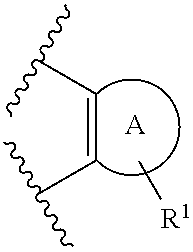
C00014
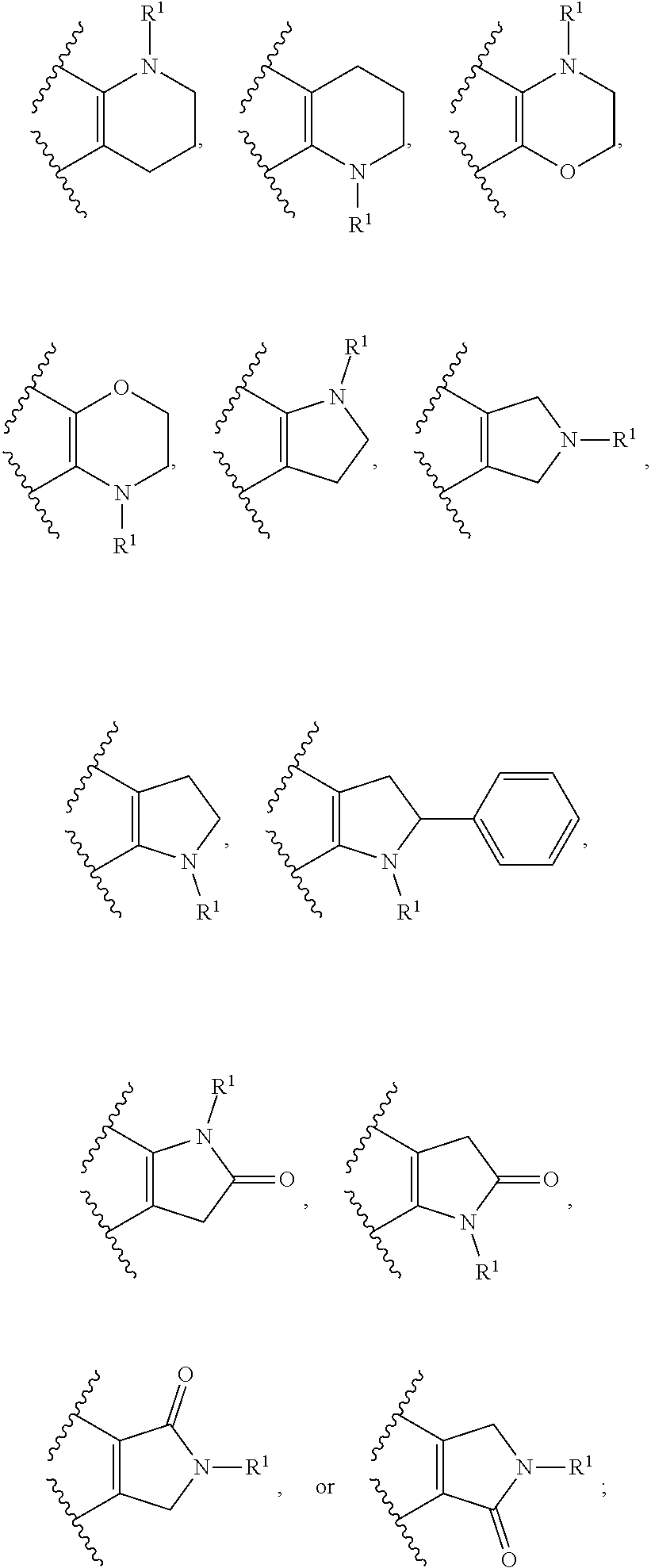
C00015
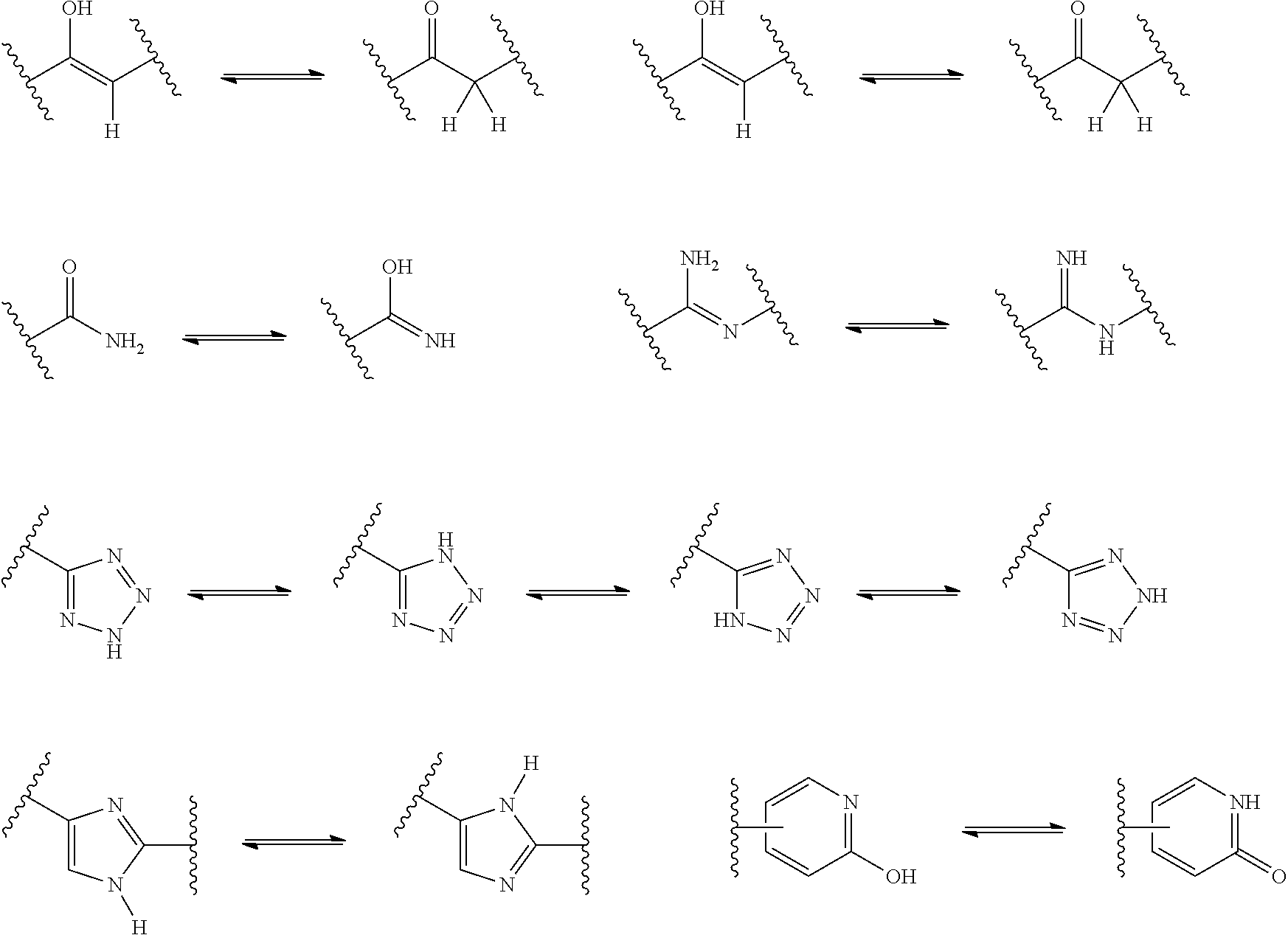
C00016
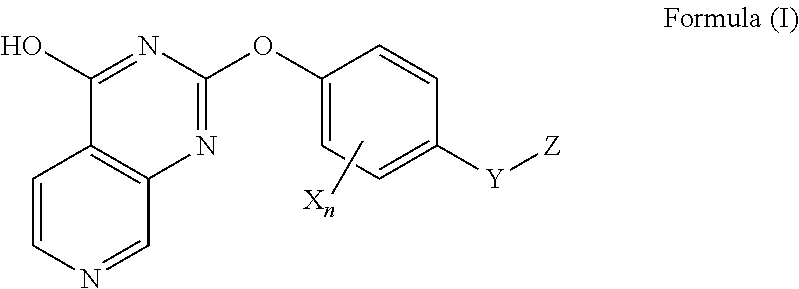
C00017
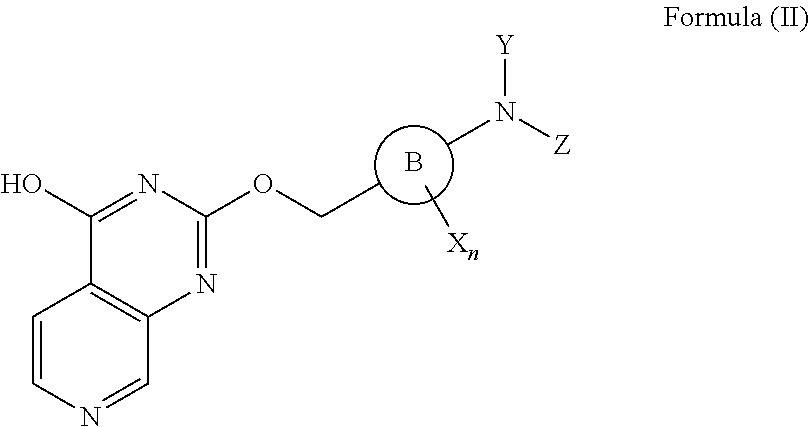
C00018
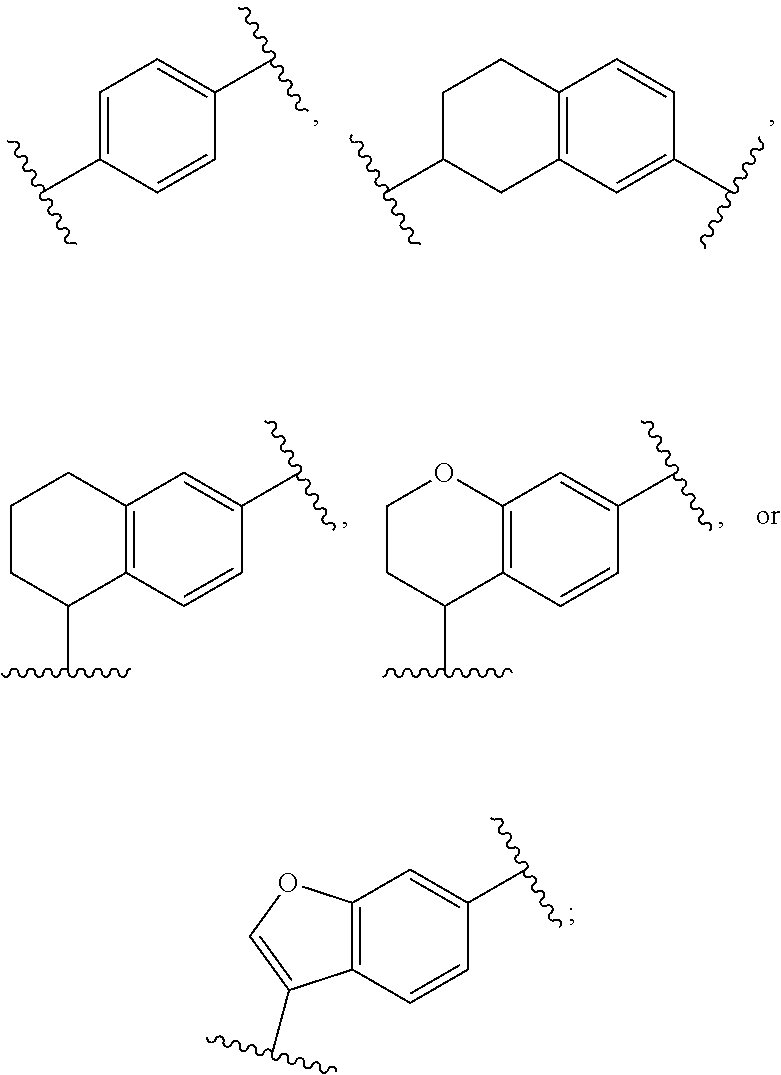
C00019
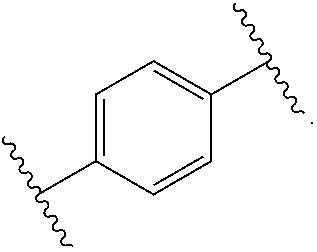
C00020
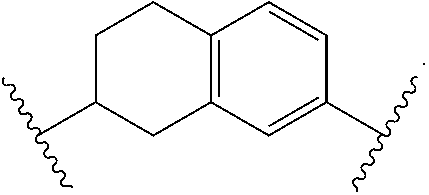
C00021
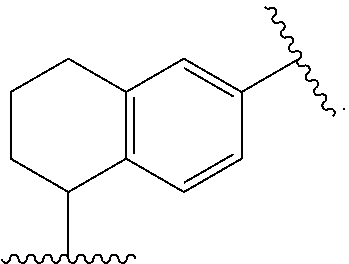
C00022
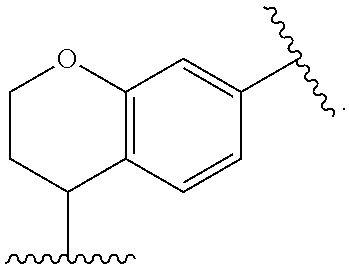
C00023
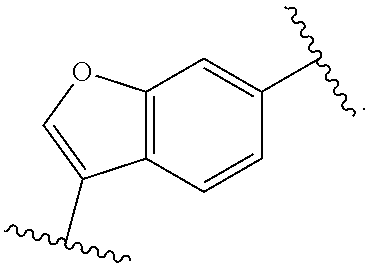
C00024
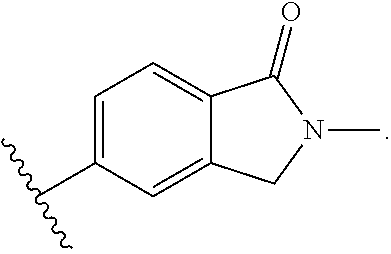
C00025
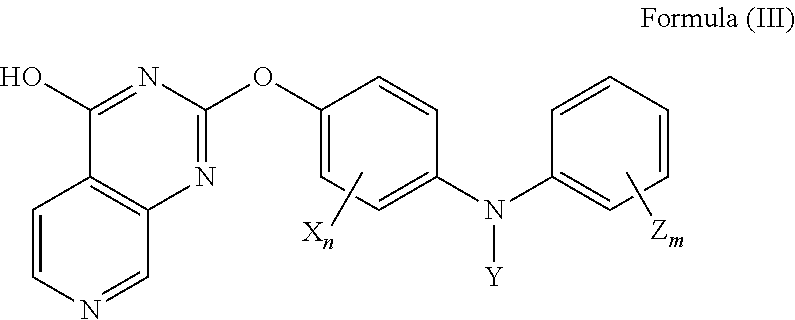
C00026
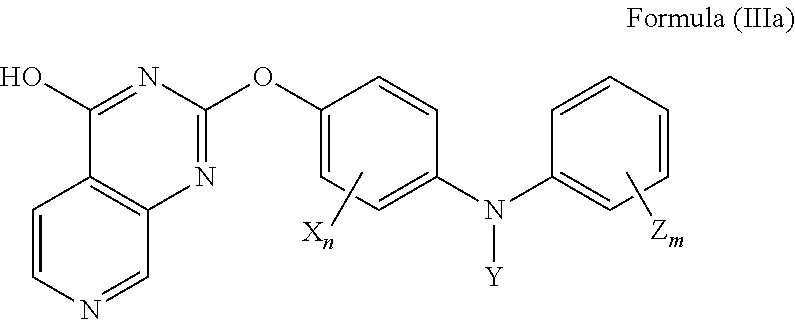
C00027
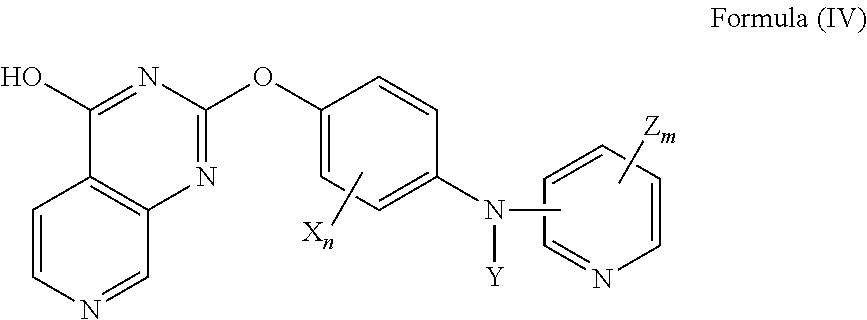
C00028
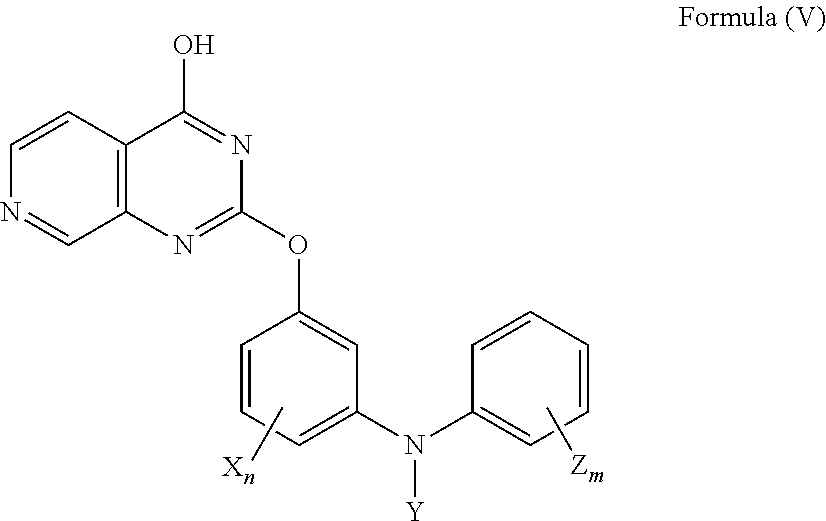
C00029
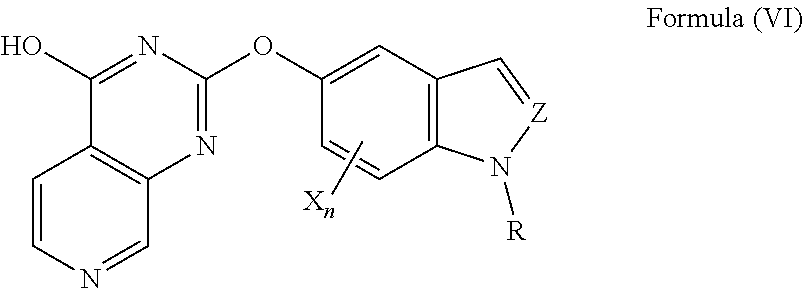
C00030
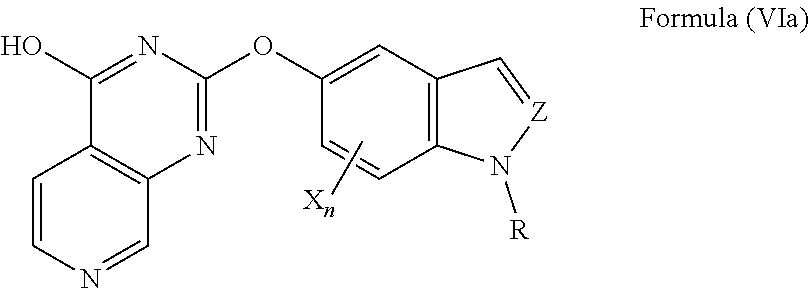
C00031
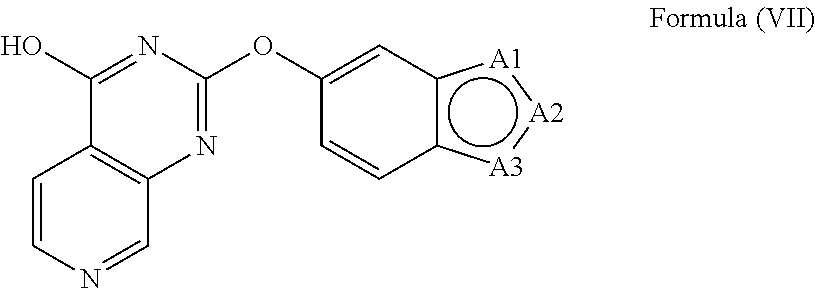
C00032
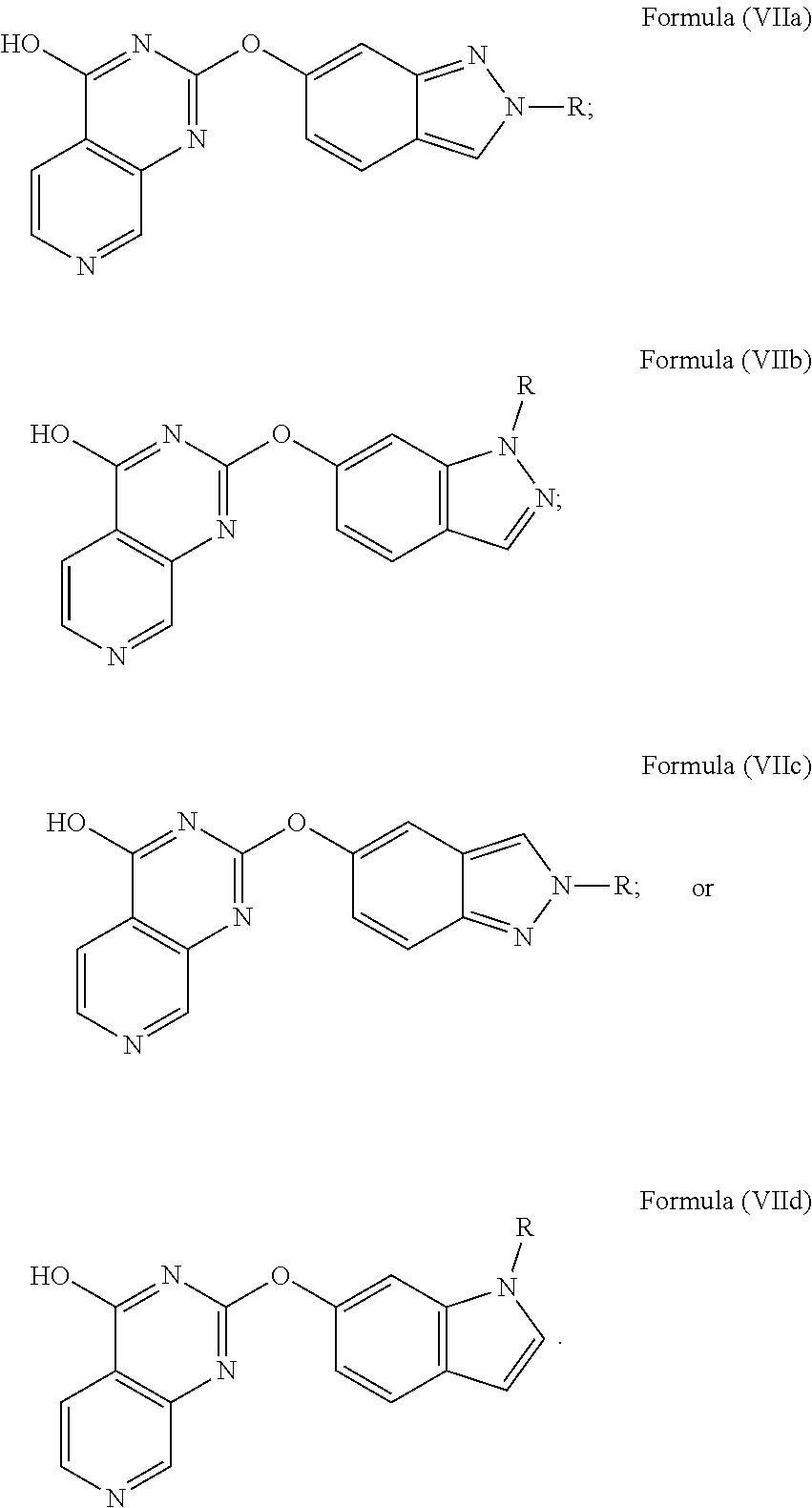
C00033
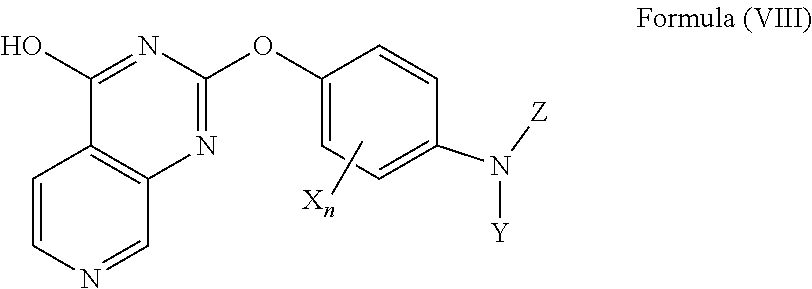
C00034
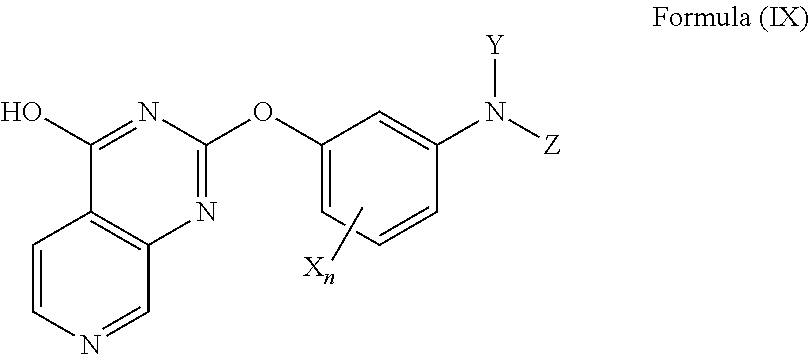
C00035
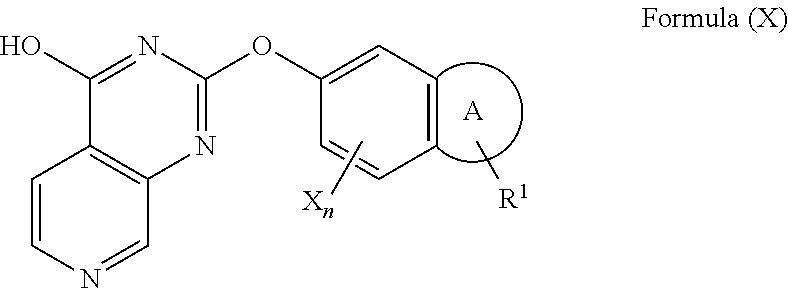
C00036
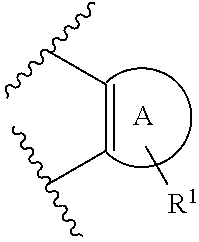
C00037
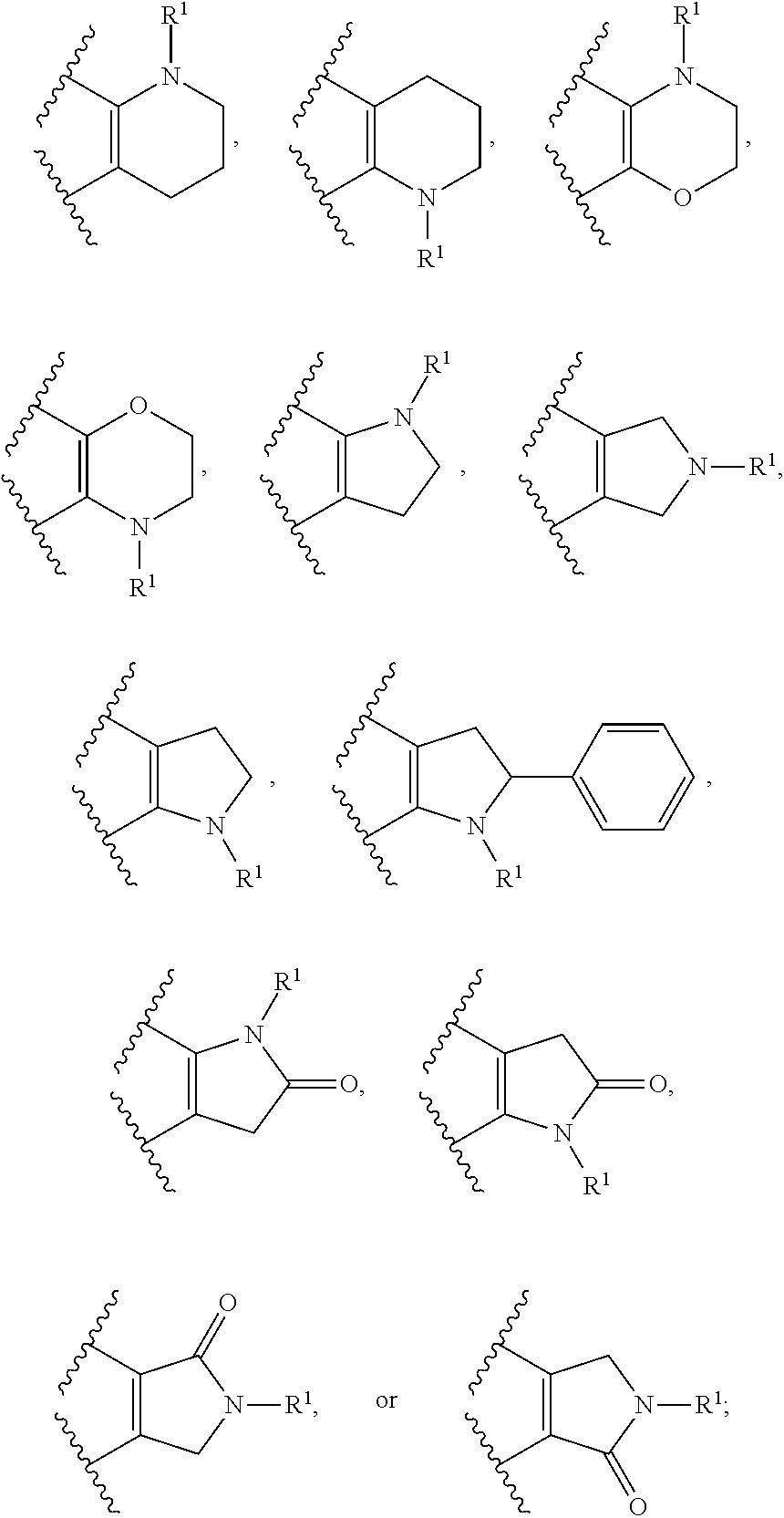
C00038
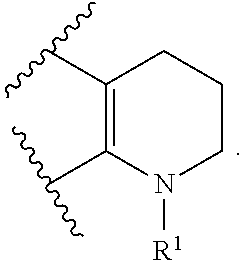
C00039
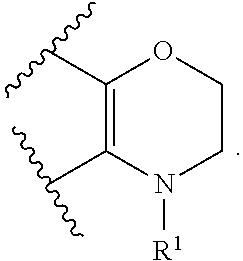
C00040
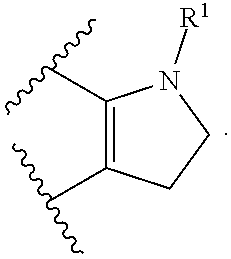
C00041
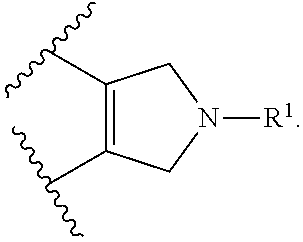
C00042
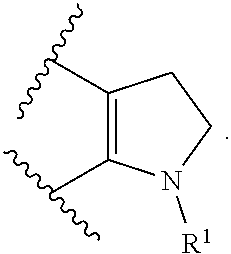
C00043
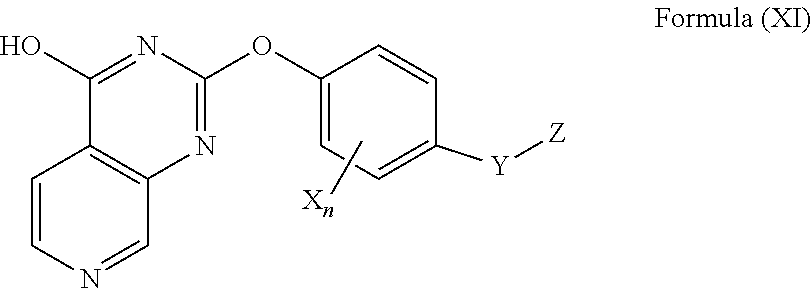
C00044
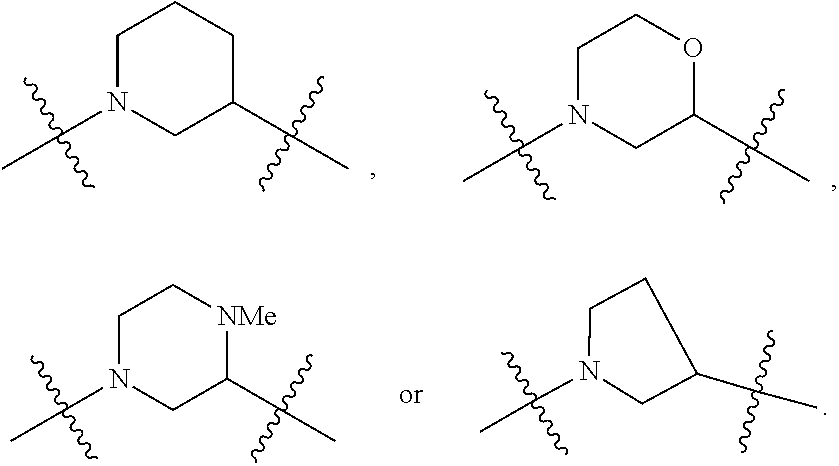
C00045

C00046
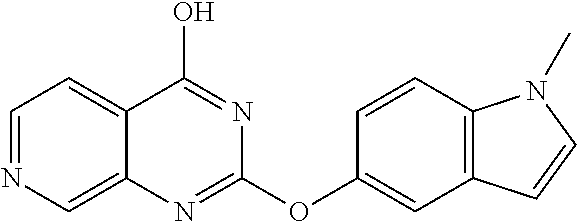
C00047
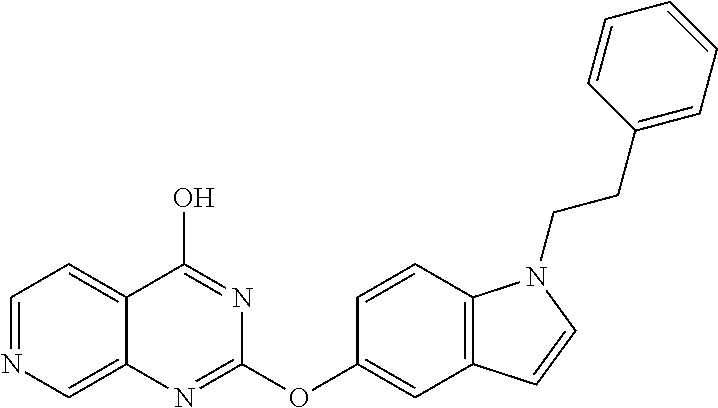
C00048
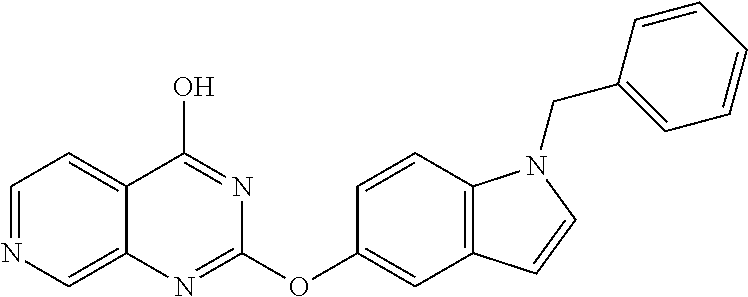
C00049

C00050

C00051
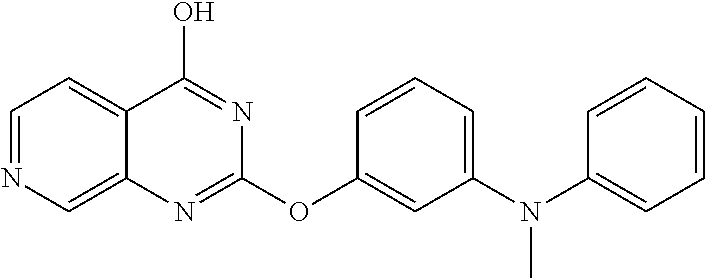
C00052
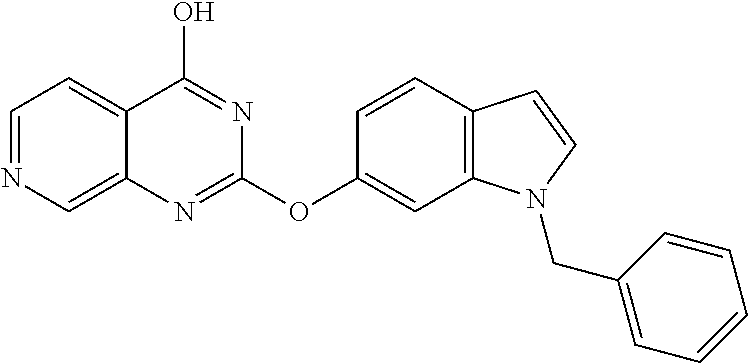
C00053
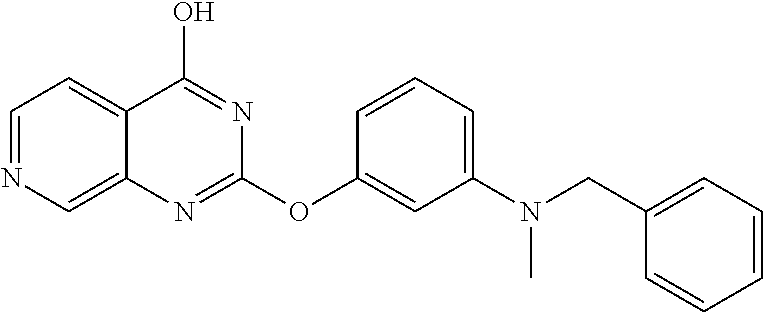
C00054

C00055
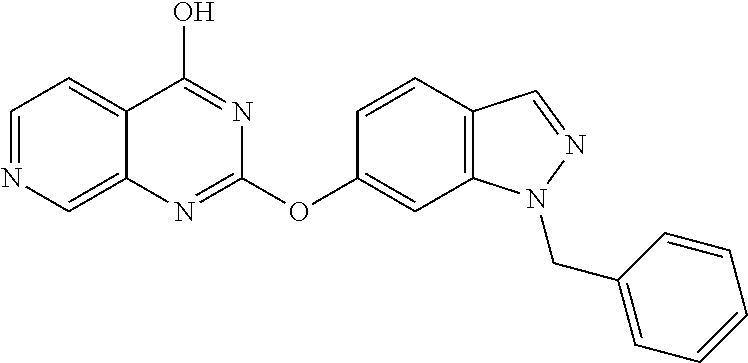
C00056
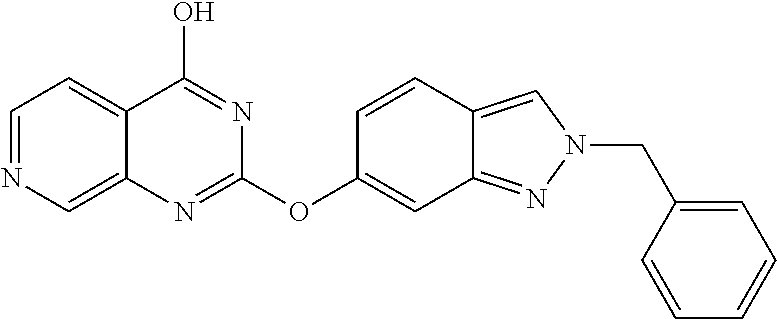
C00057

C00058
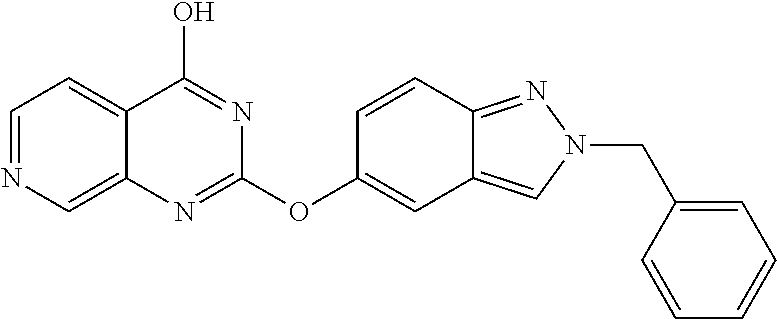
C00059
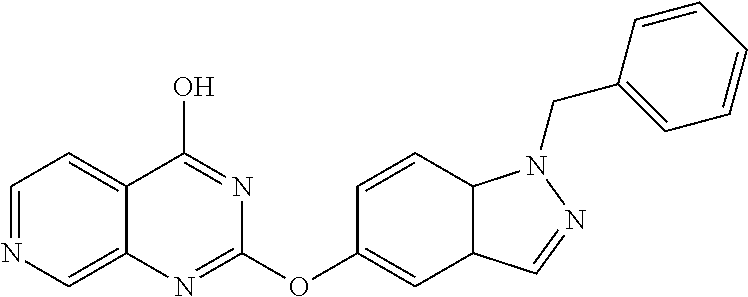
C00060
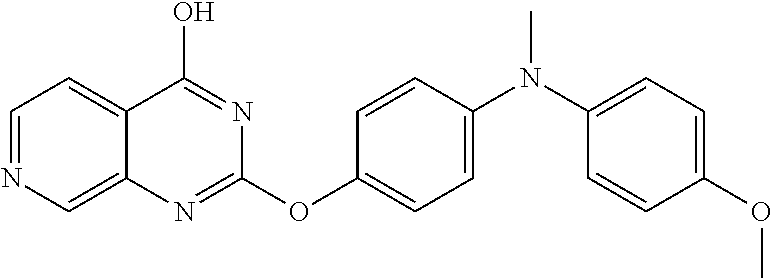
C00061

C00062
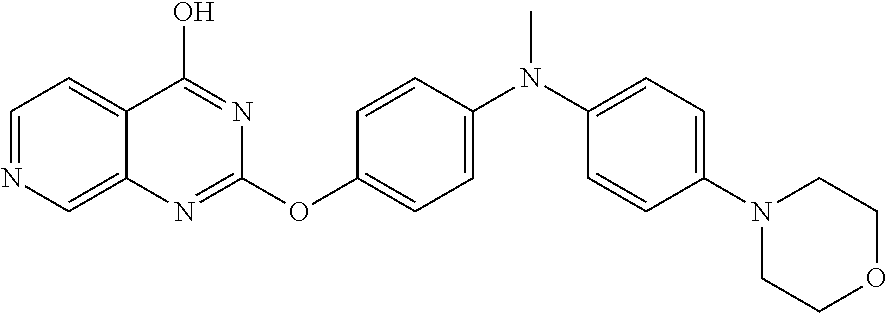
C00063

C00064

C00065

C00066

C00067
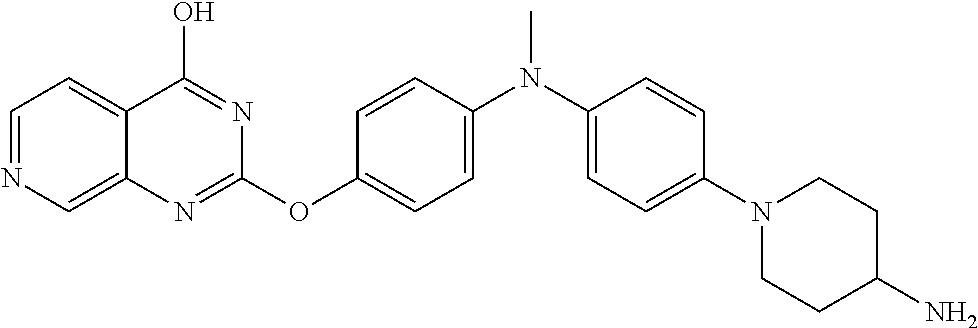
C00068

C00069

C00070

C00071

C00072
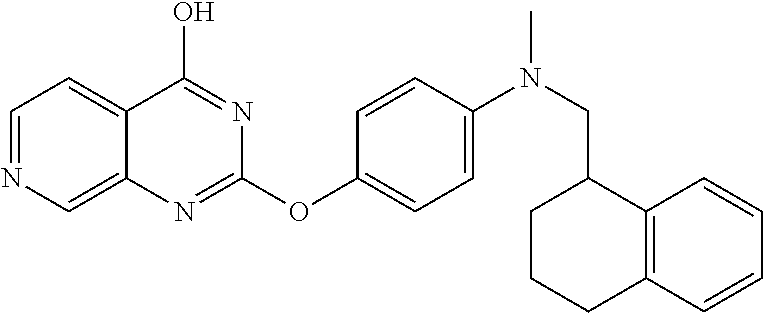
C00073

C00074

C00075
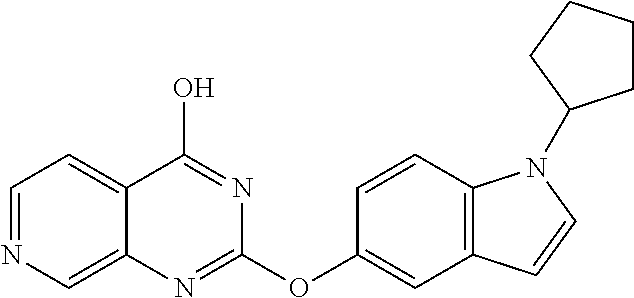
C00076
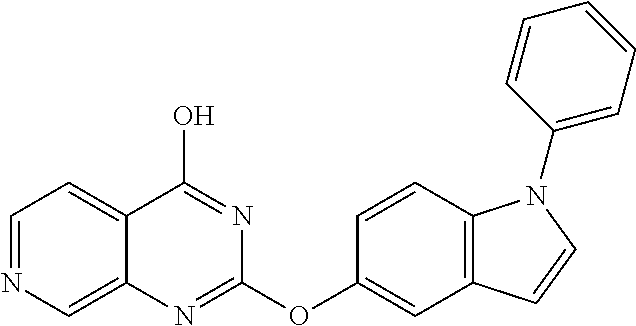
C00077
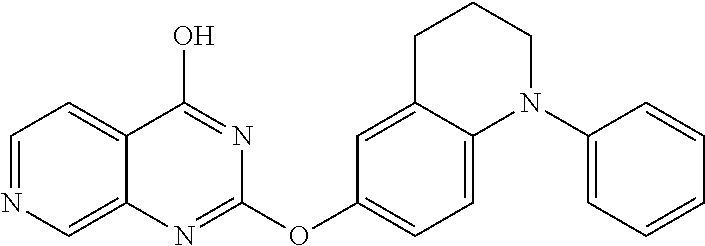
C00078
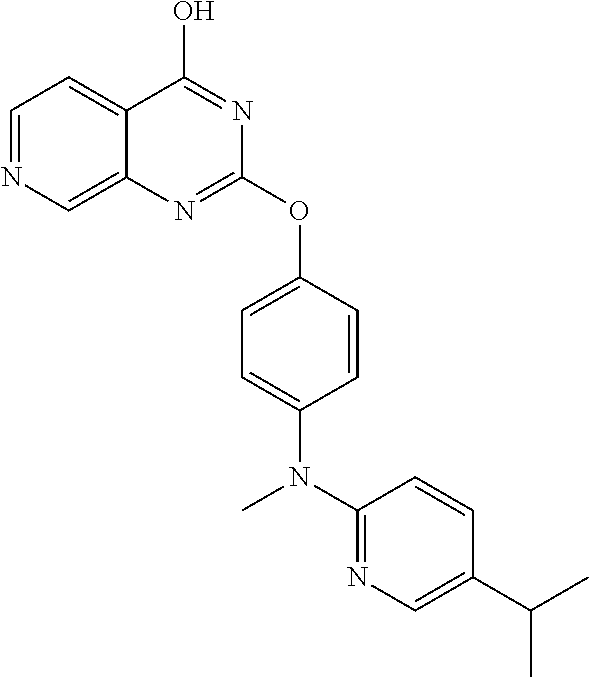
C00079

C00080

C00081

C00082

C00083

C00084
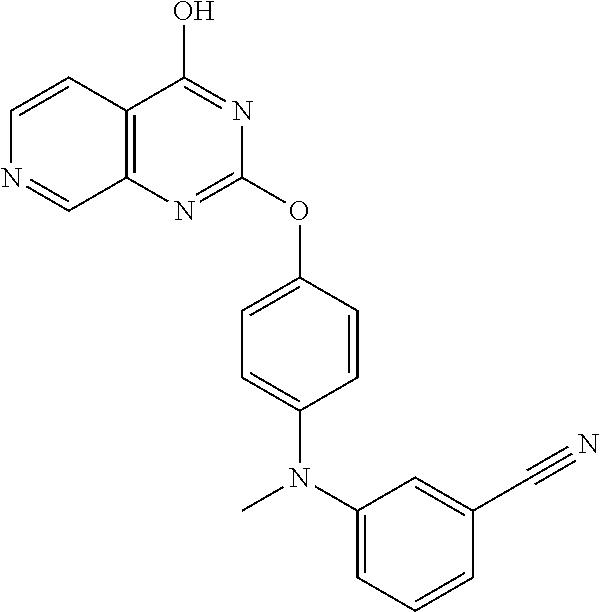
C00085
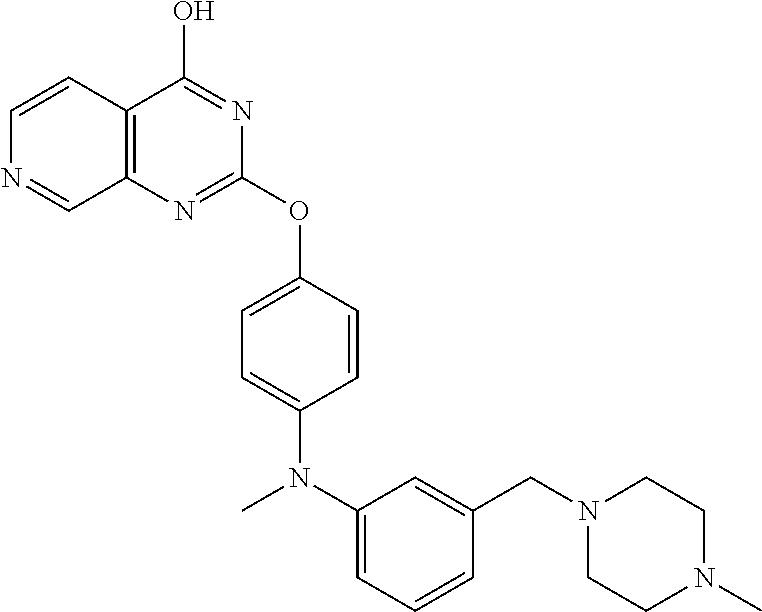
C00086
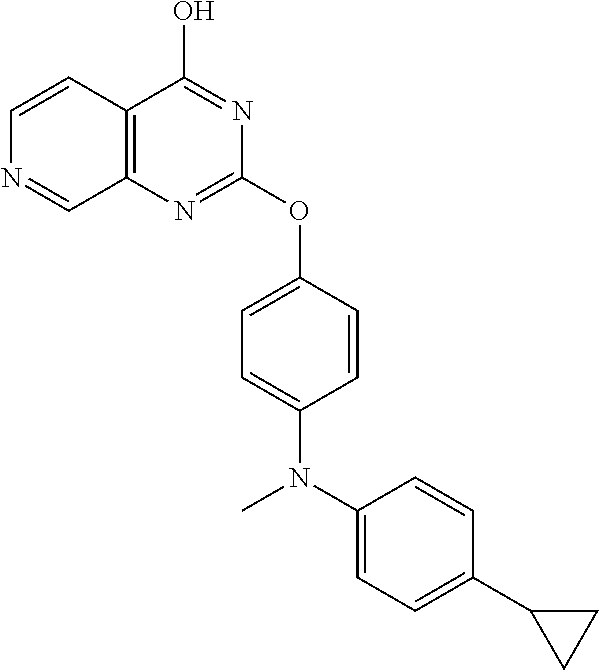
C00087

C00088
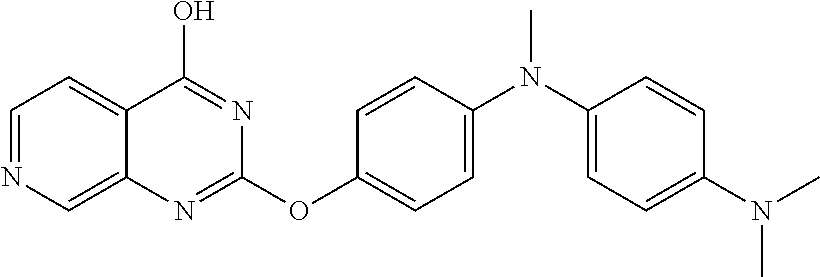
C00089

C00090
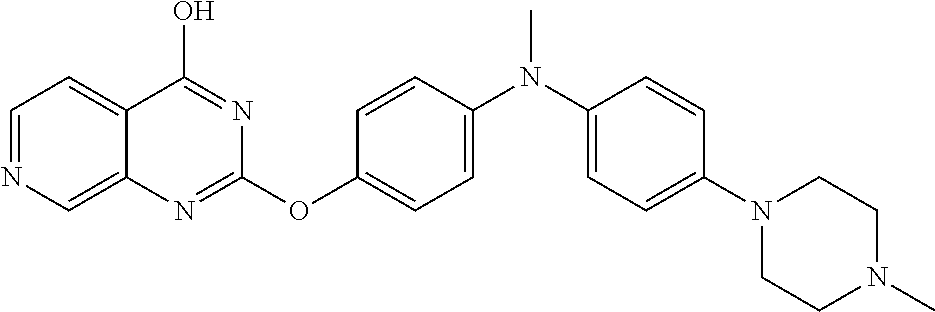
C00091

C00092

C00093
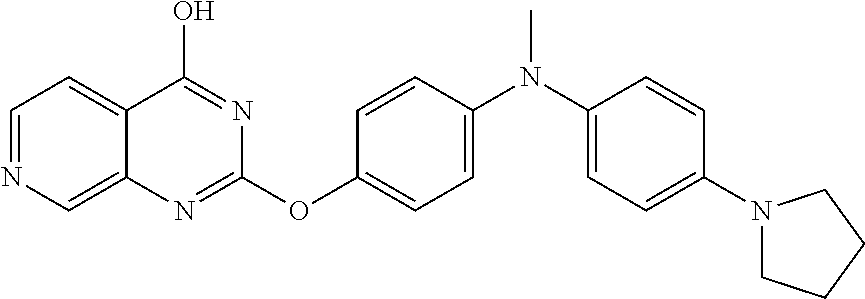
C00094

C00095
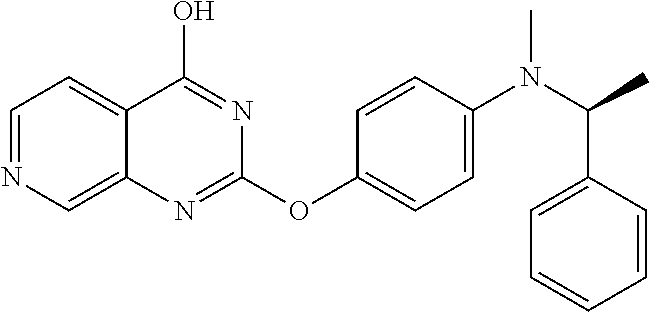
C00096
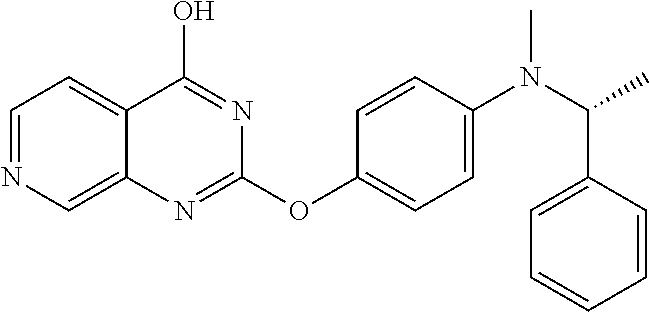
C00097

C00098

C00099

C00100

C00101
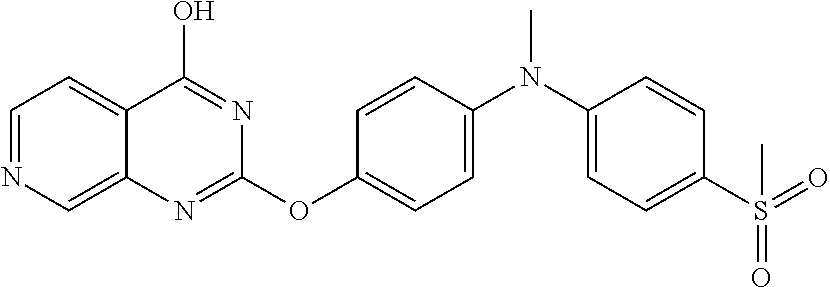
C00102

C00103

C00104

C00105

C00106
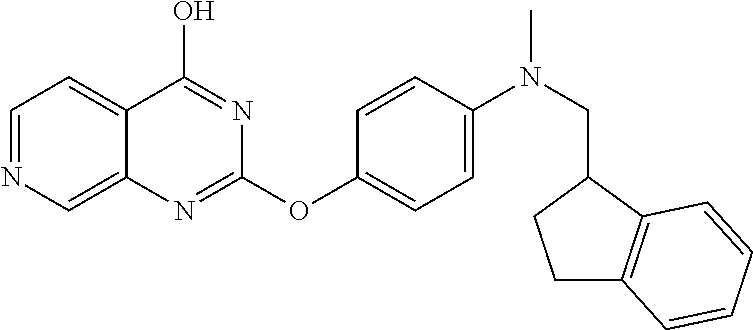
C00107

C00108

C00109

C00110

C00111

C00112

C00113

C00114

C00115

C00116

C00117

C00118

C00119

C00120

C00121

C00122

C00123

C00124
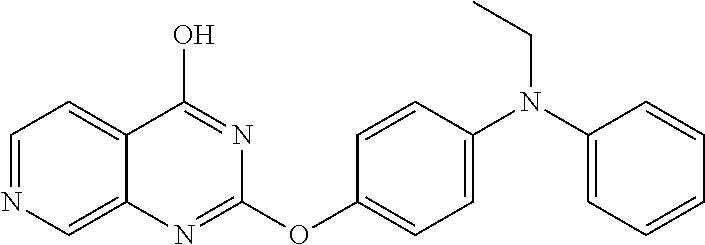
C00125

C00126

C00127

C00128
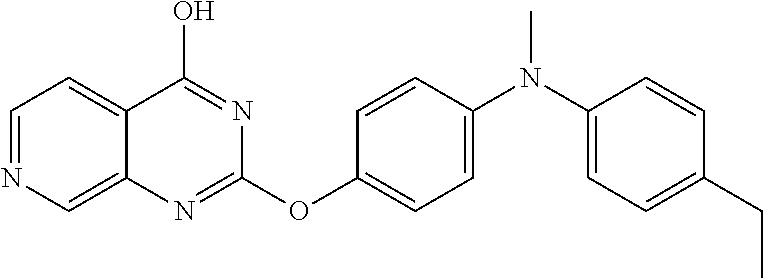
C00129
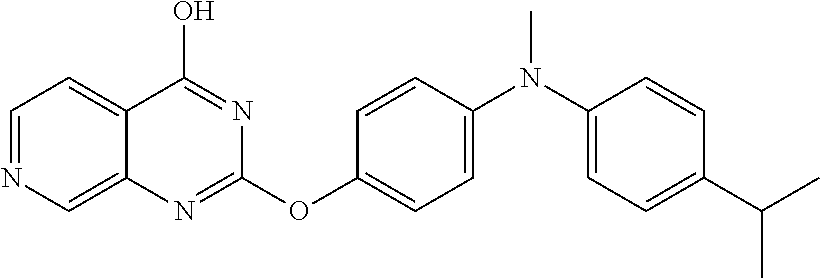
C00130

C00131
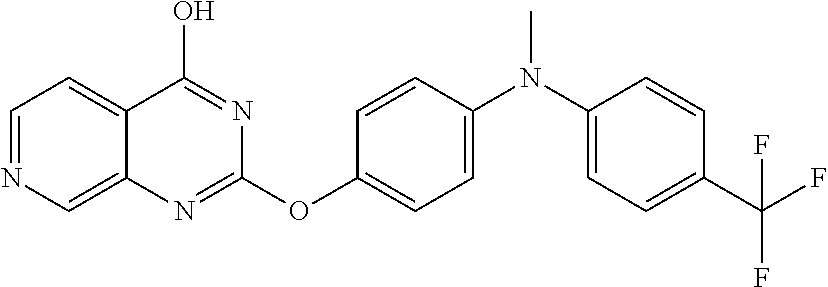
C00132

C00133

C00134

C00135
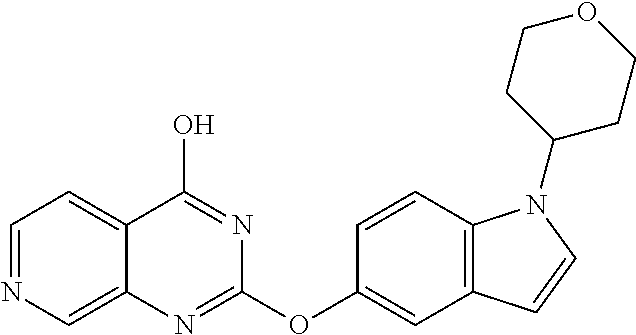
C00136
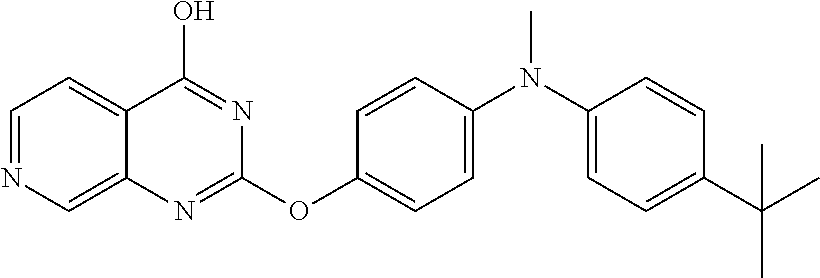
C00137

C00138

C00139

C00140

C00141
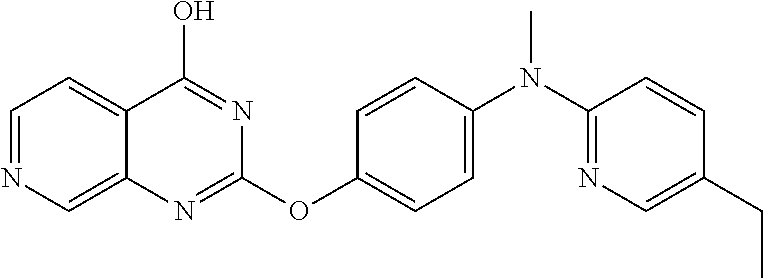
C00142
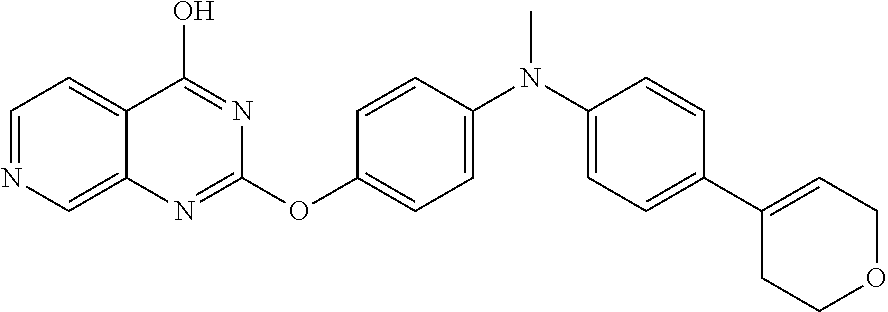
C00143
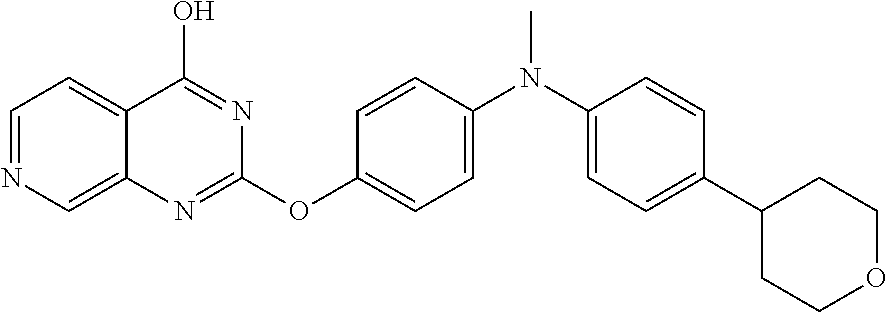
C00144

C00145

C00146
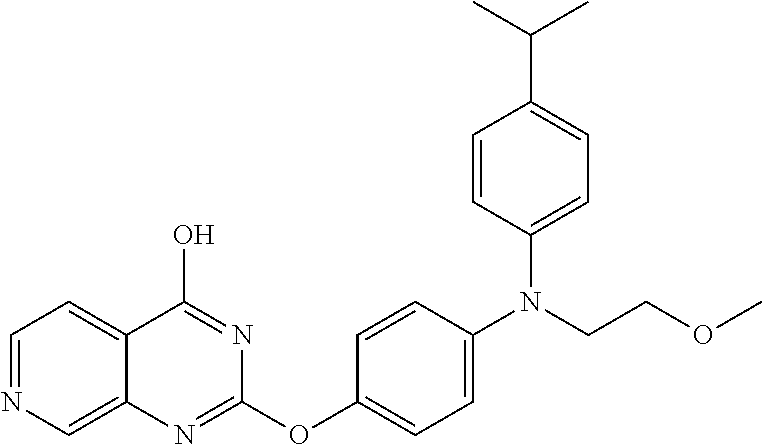
C00147
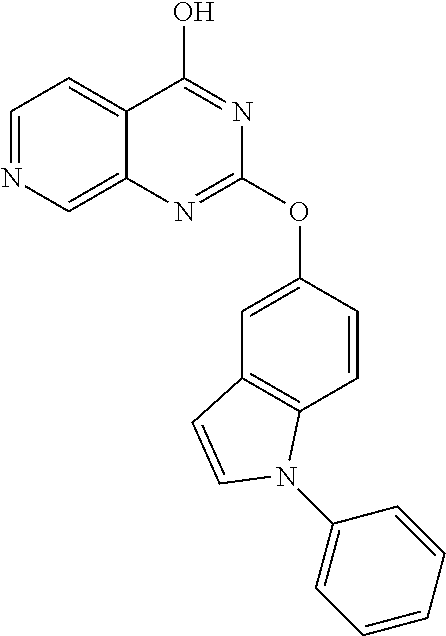
C00148
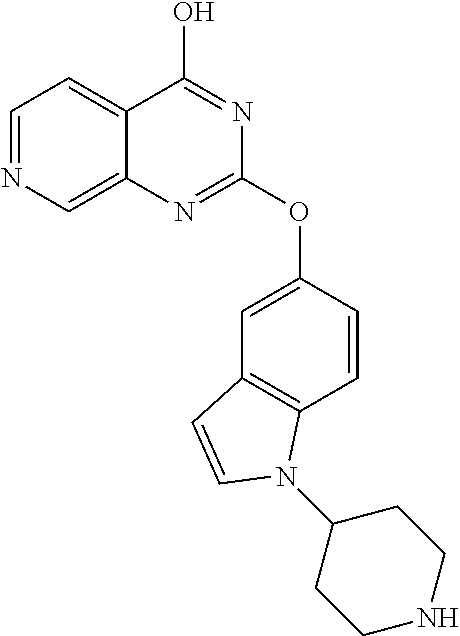
C00149
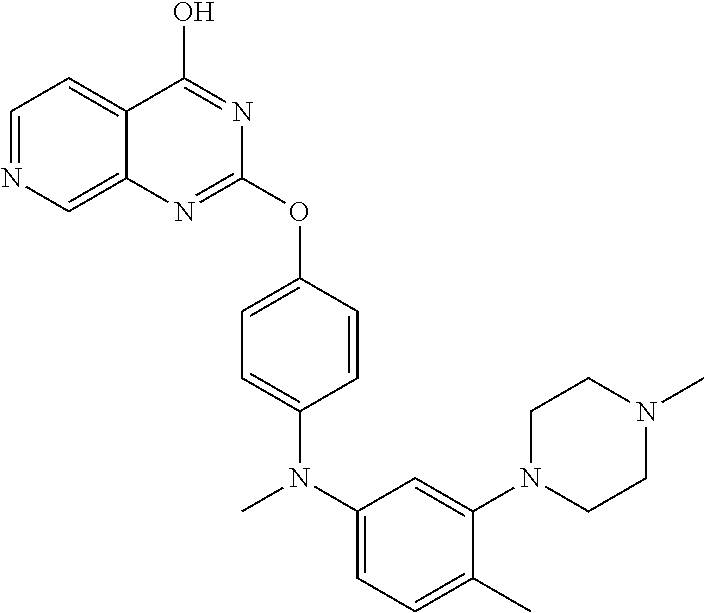
C00150

C00151
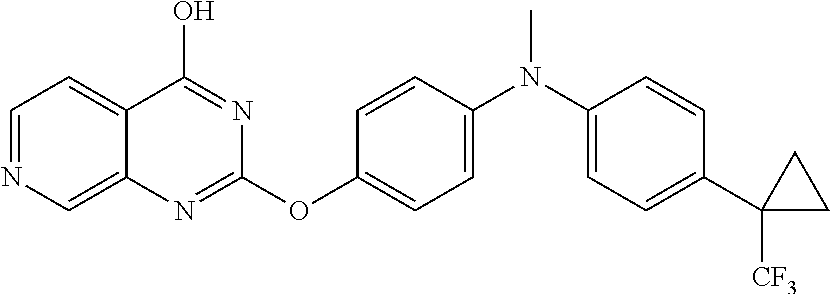
C00152
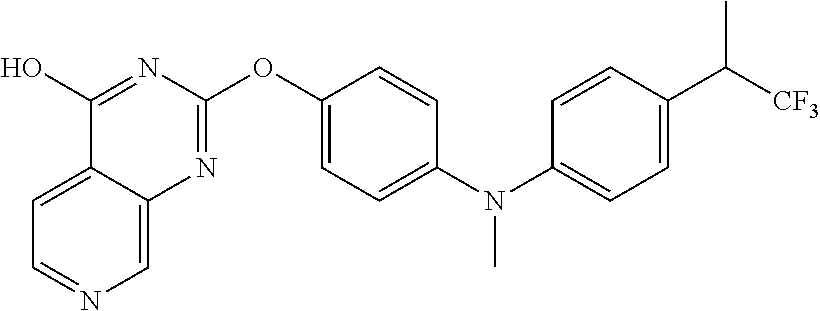
C00153
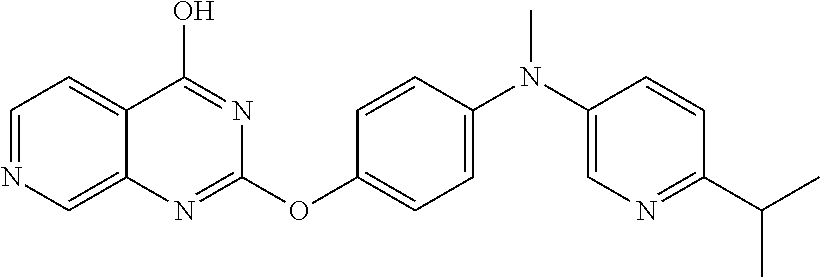
C00154

C00155

C00156

C00157
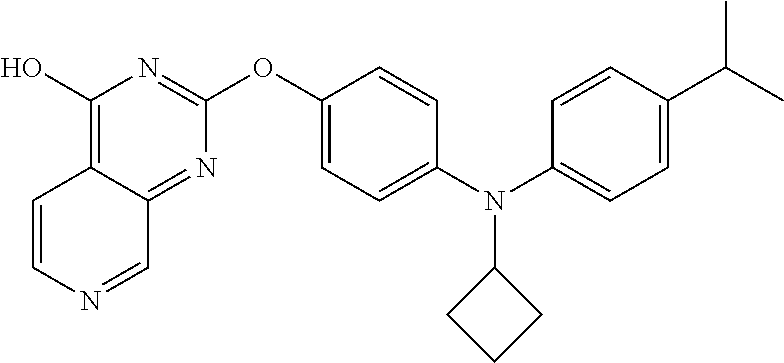
C00158
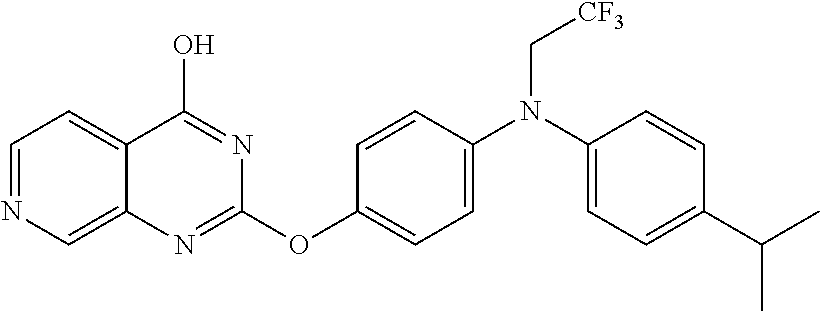
C00159

C00160

C00161
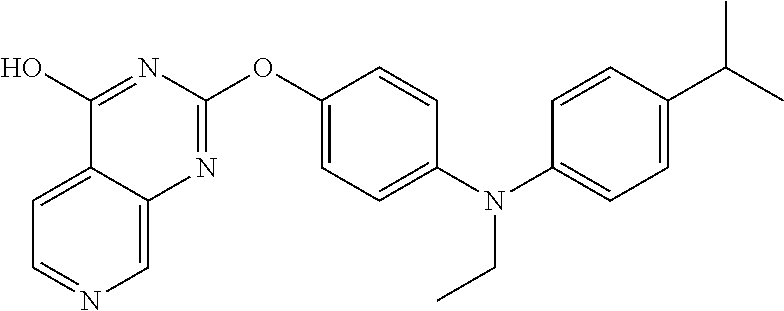
C00162
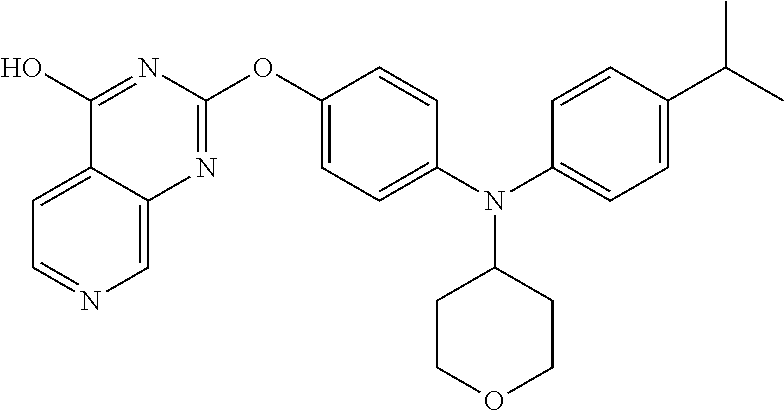
C00163
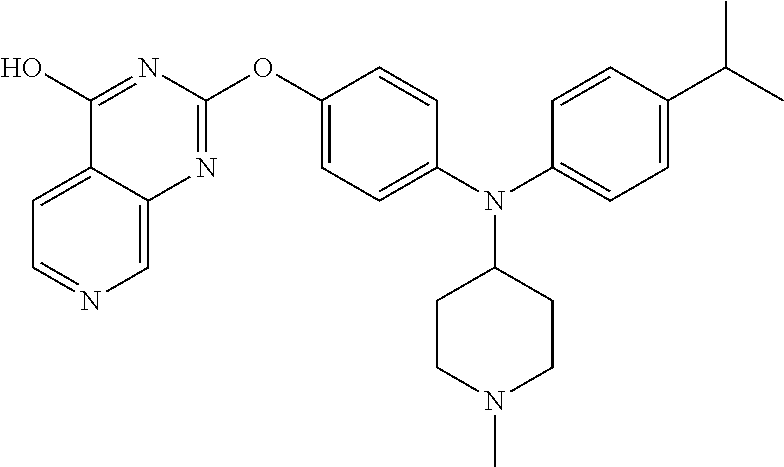
C00164
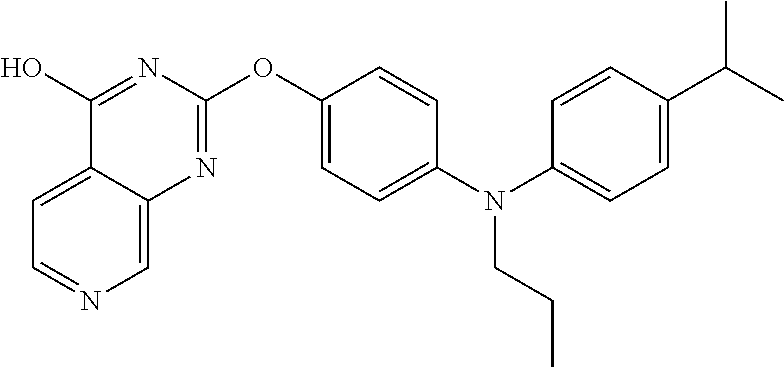
C00165
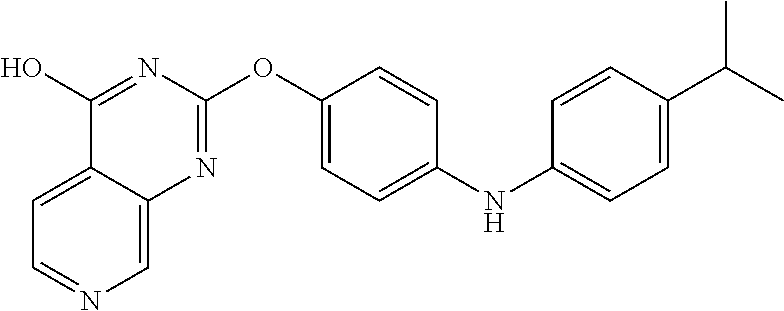
C00166
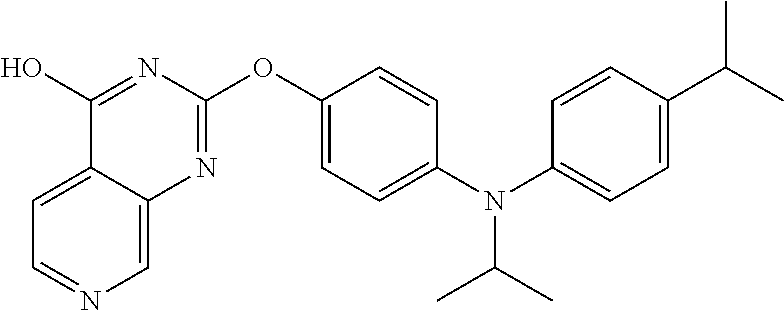
C00167
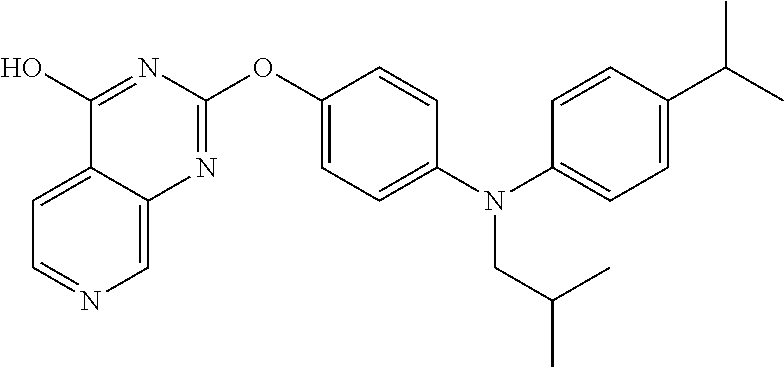
C00168
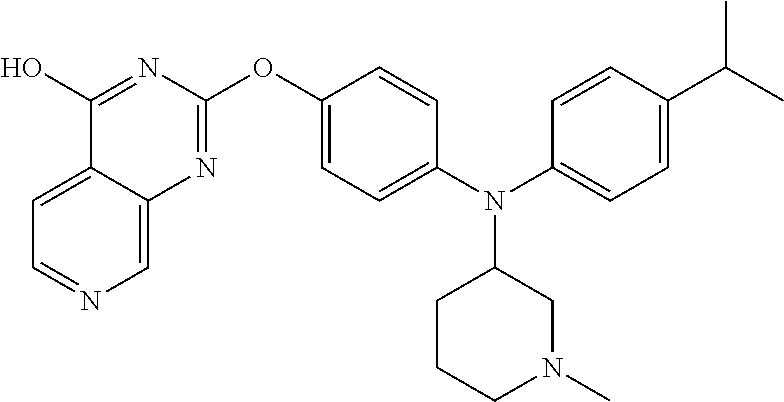
C00169
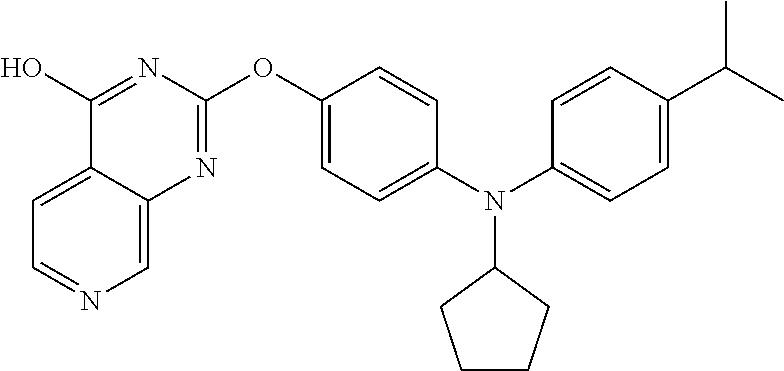
C00170
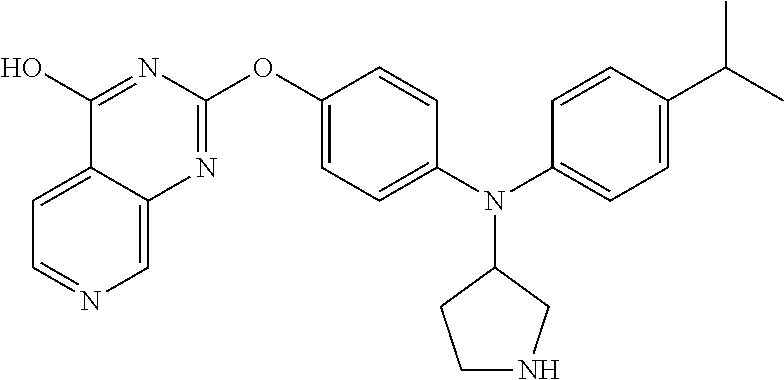
C00171
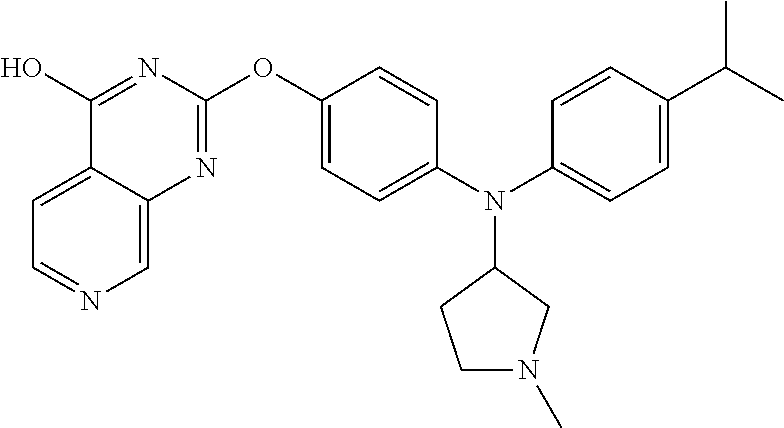
C00172
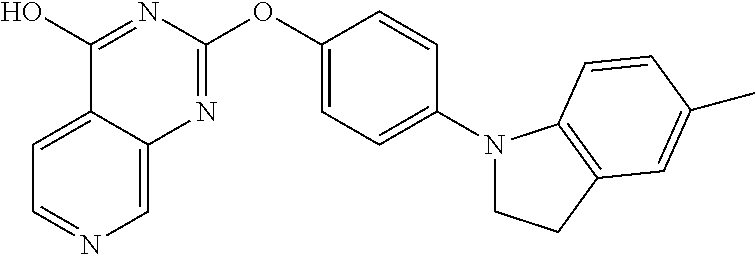
C00173
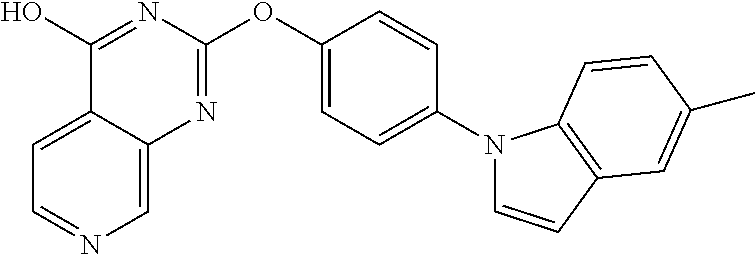
C00174
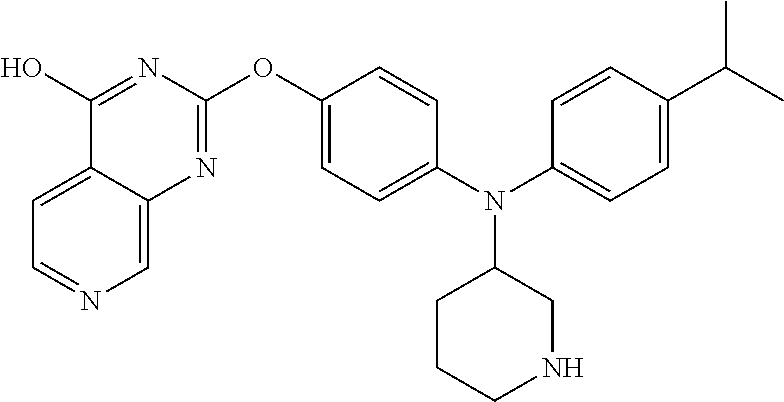
C00175
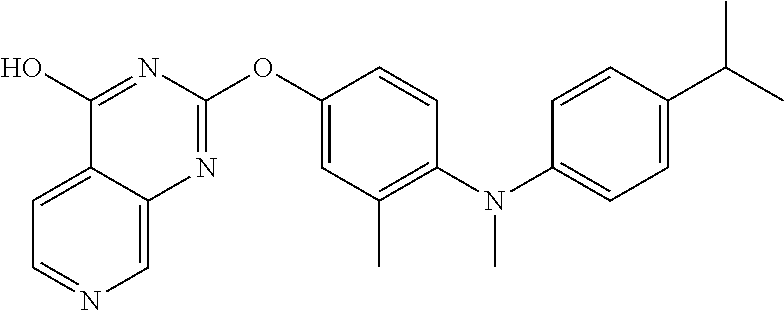
C00176

C00177

C00178

C00179

C00180

C00181

C00182

C00183

C00184

C00185

C00186
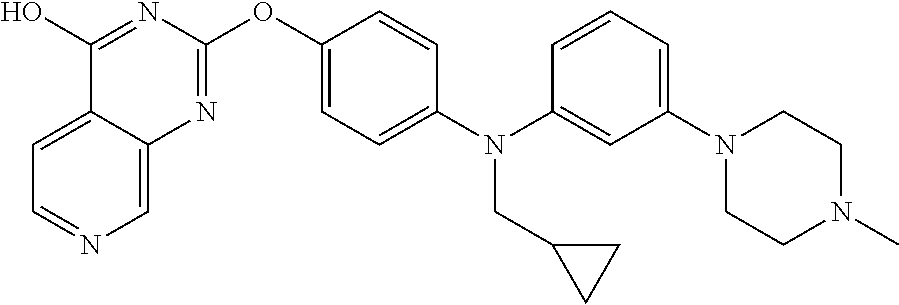
C00187
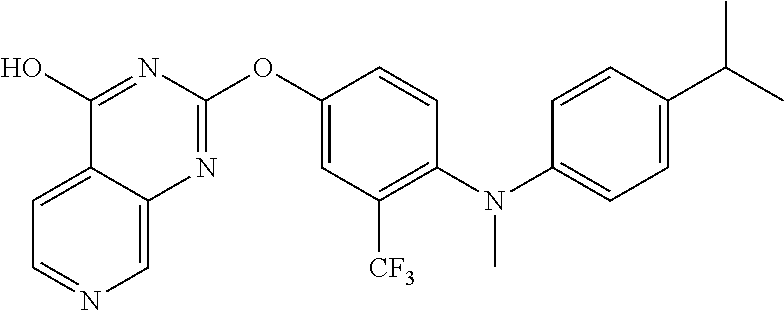
C00188

C00189
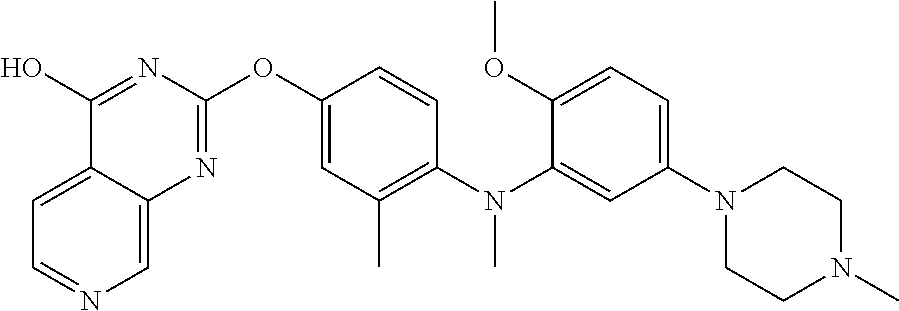
C00190
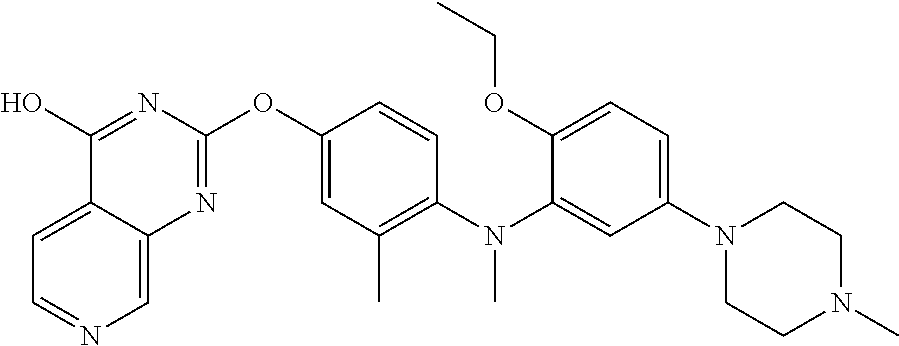
C00191

C00192
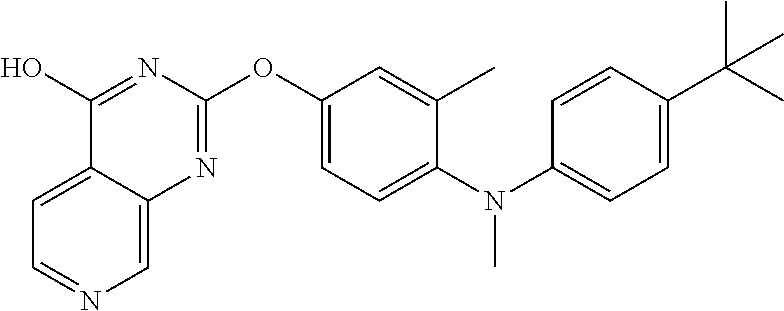
C00193

C00194
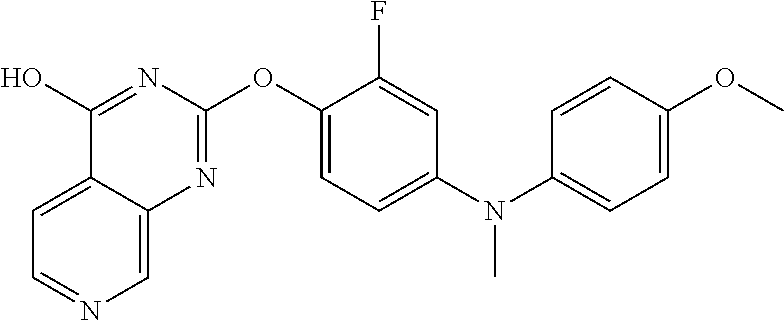
C00195

C00196

C00197

C00198
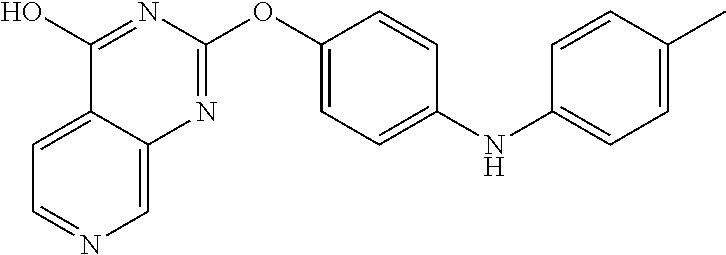
C00199
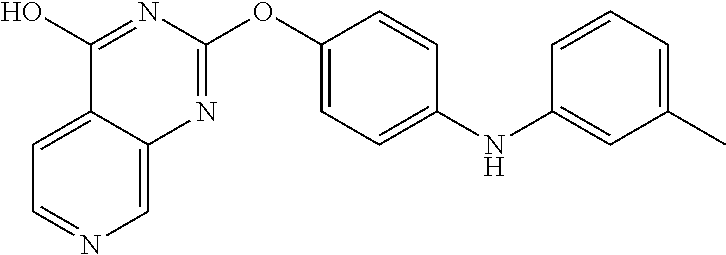
C00200
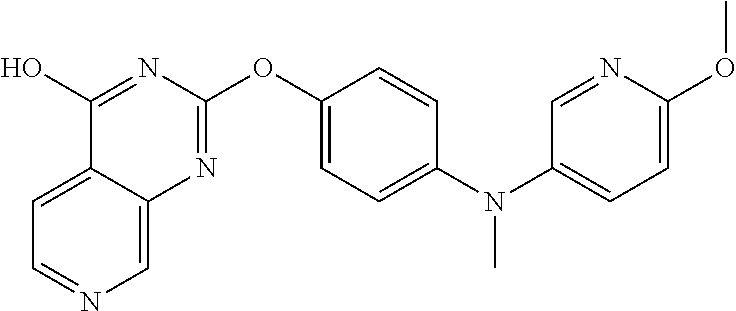
C00201
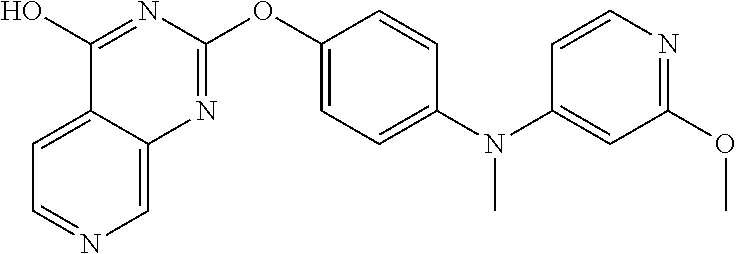
C00202

C00203

C00204
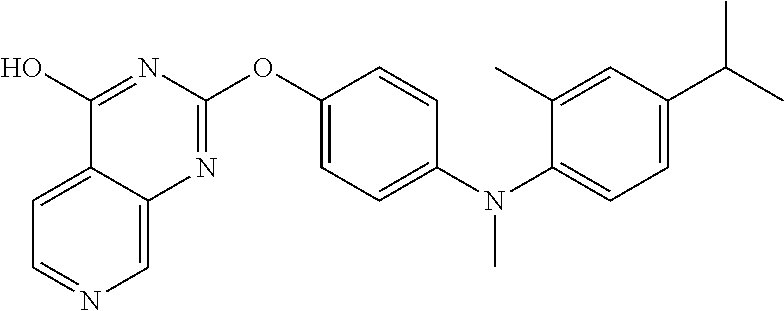
C00205
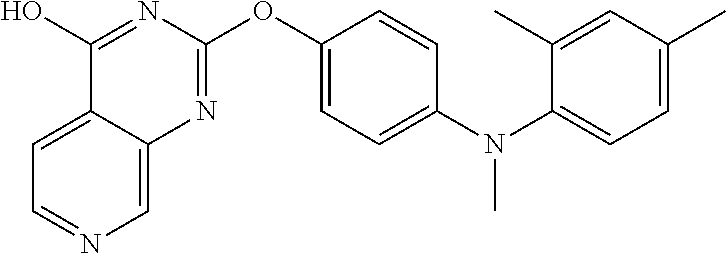
C00206
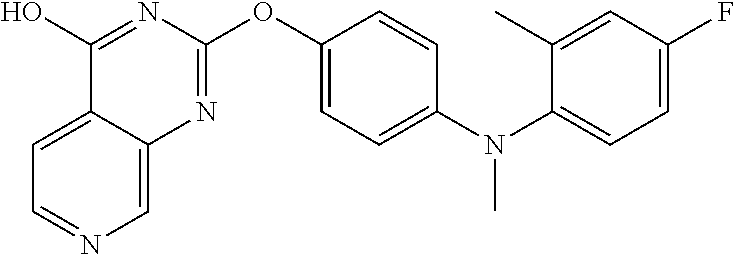
C00207
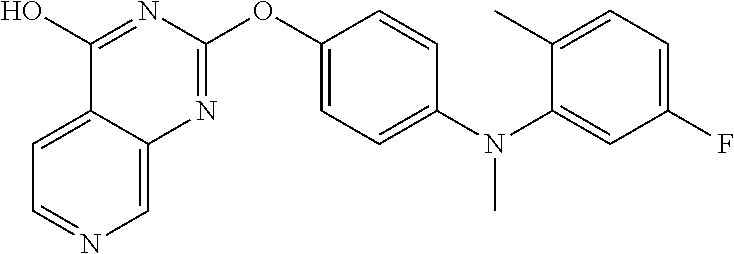
C00208

C00209
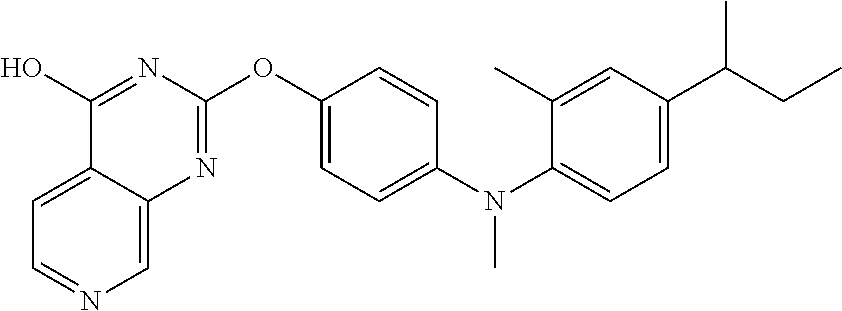
C00210
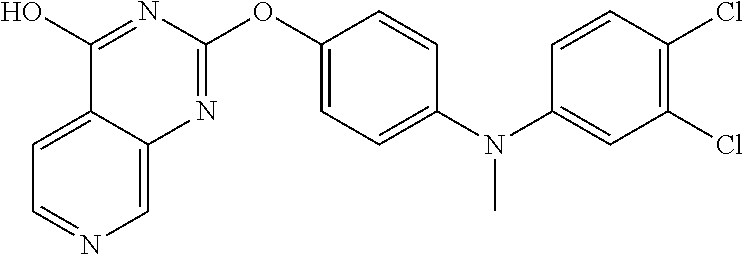
C00211
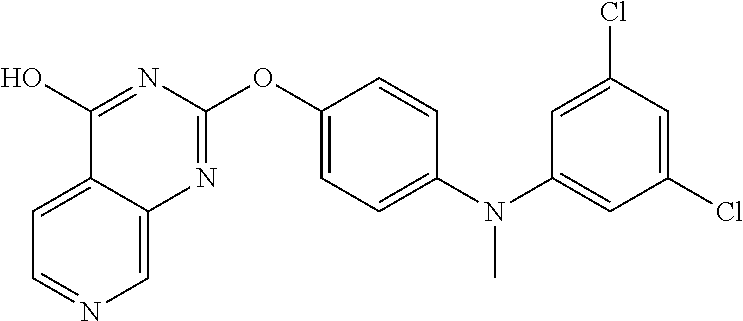
C00212
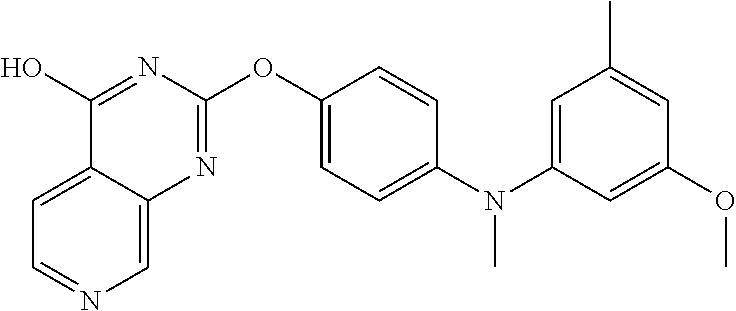
C00213

C00214
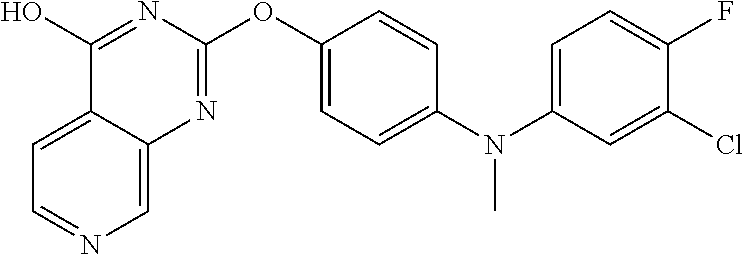
C00215
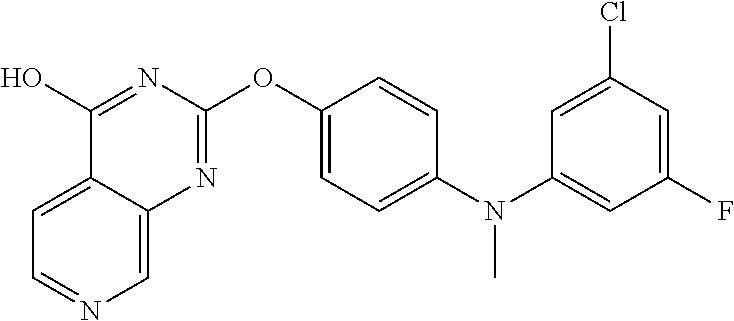
C00216
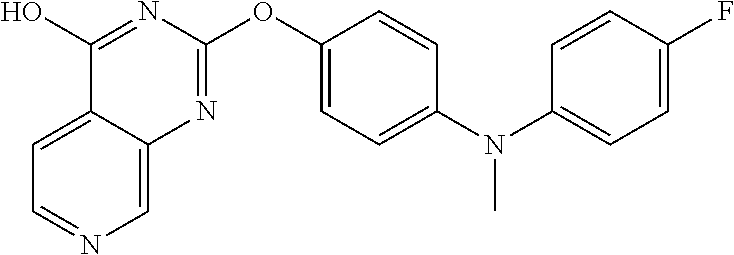
C00217
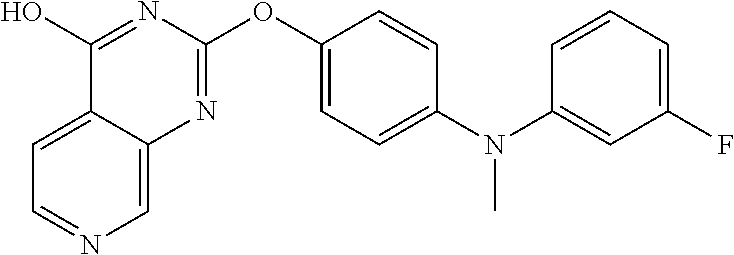
C00218
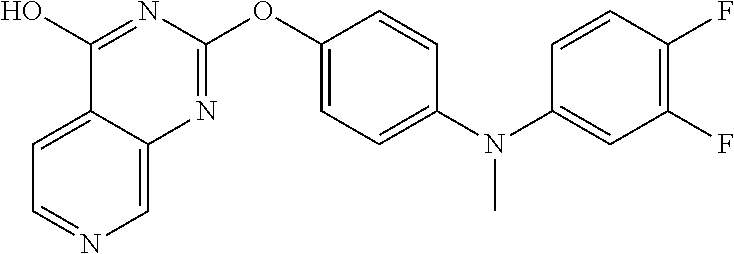
C00219
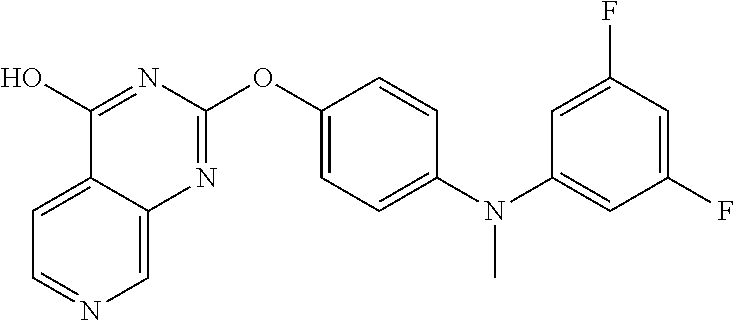
C00220
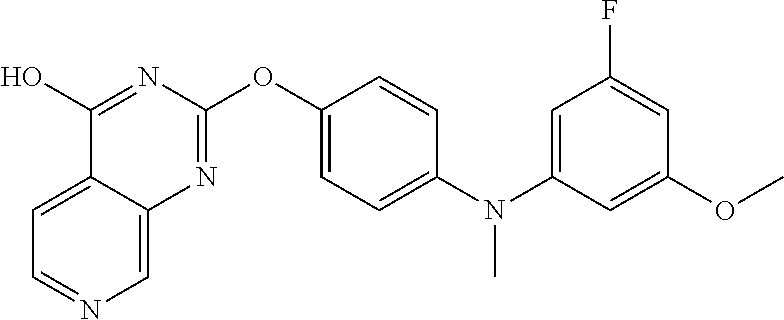
C00221
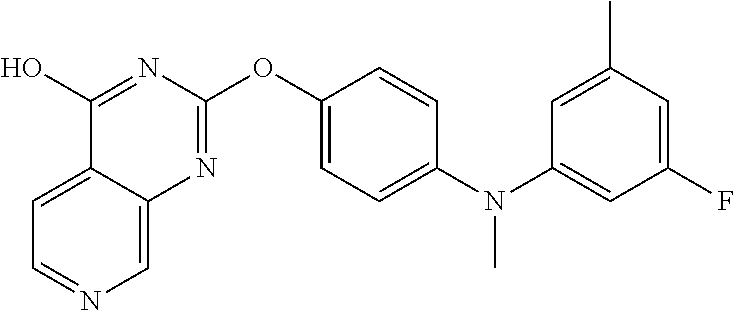
C00222
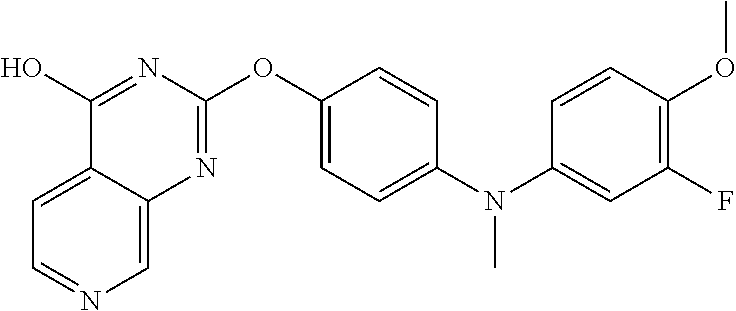
C00223
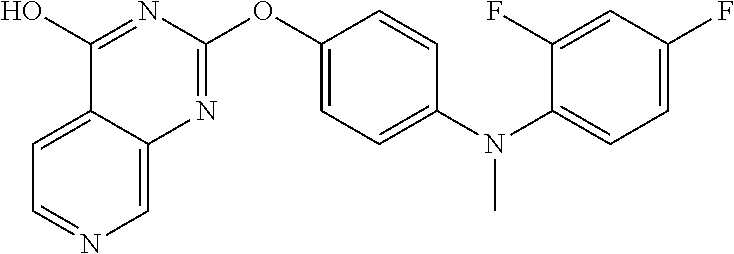
C00224
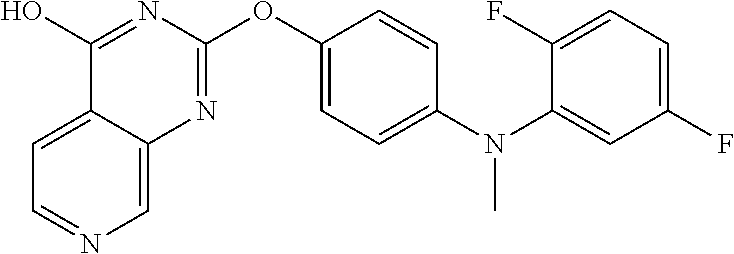
C00225
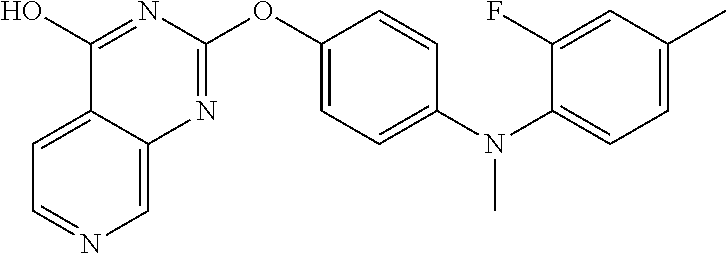
C00226
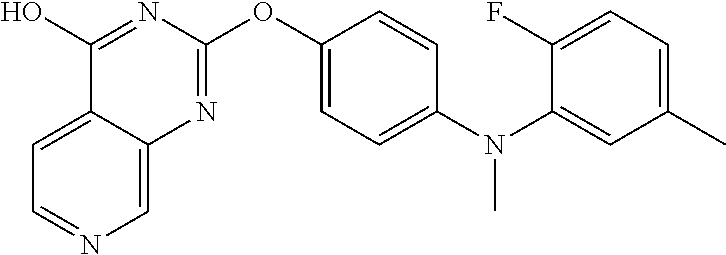
C00227

C00228

C00229
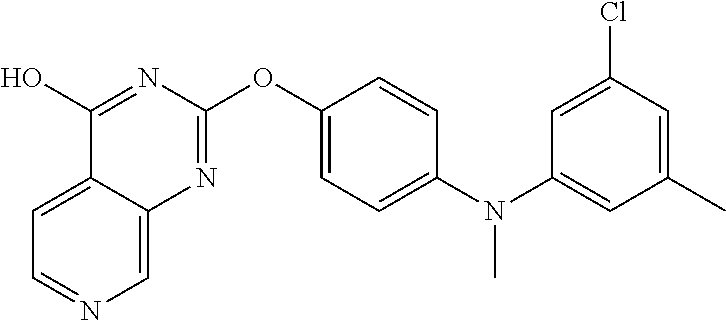
C00230
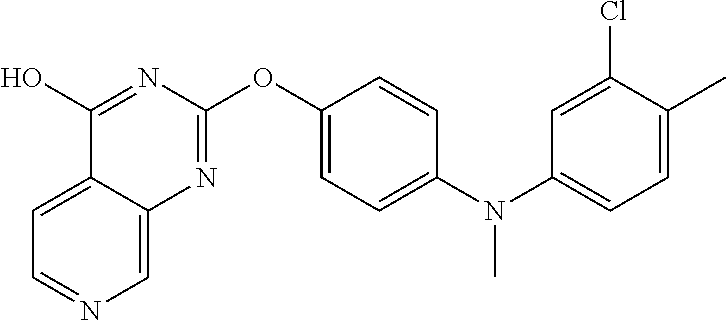
C00231
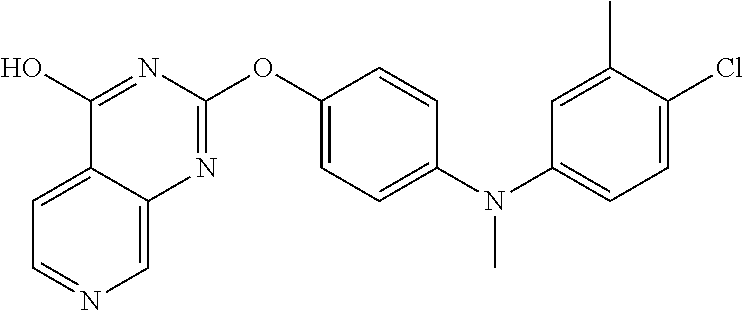
C00232
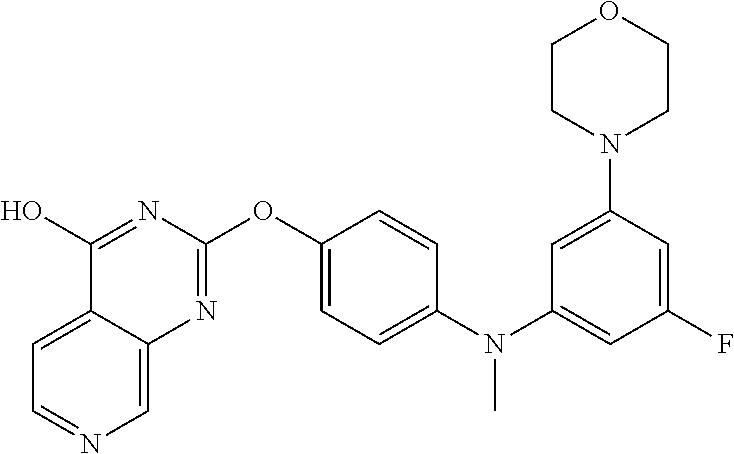
C00233
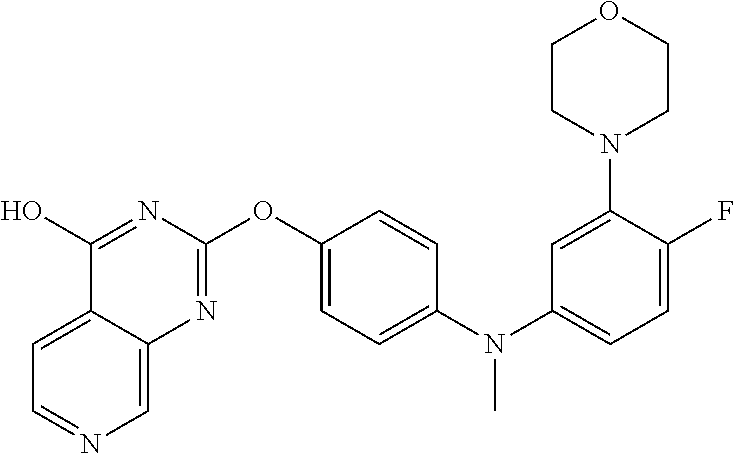
C00234
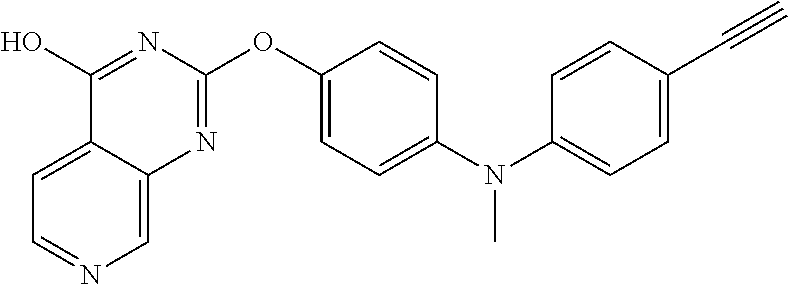
C00235

C00236
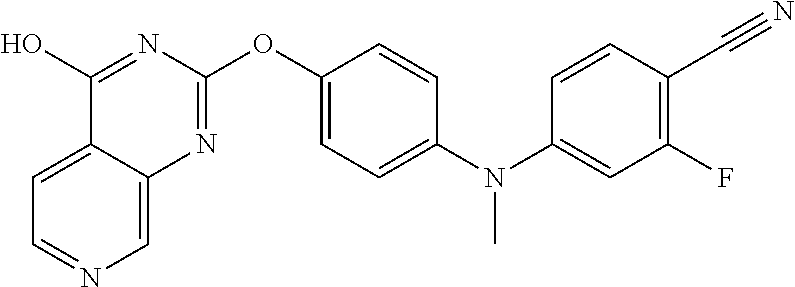
C00237

C00238
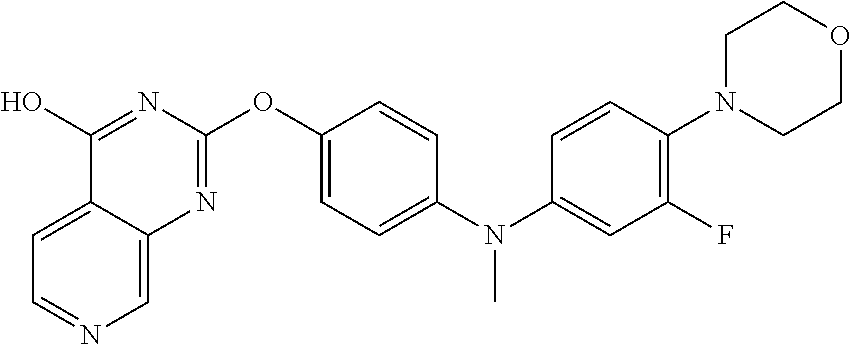
C00239
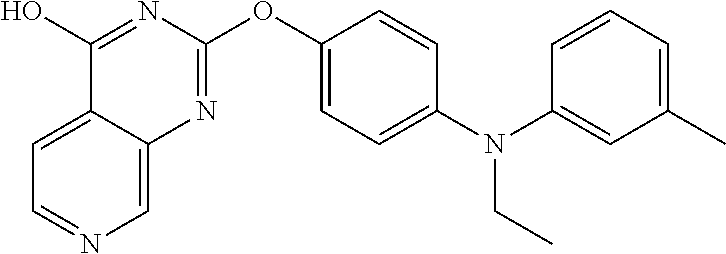
C00240
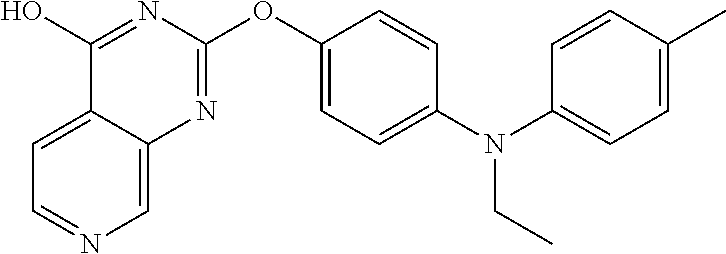
C00241
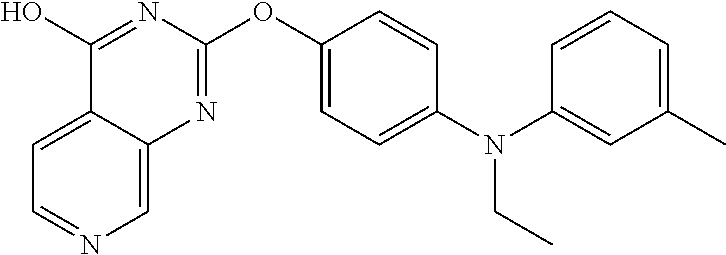
C00242
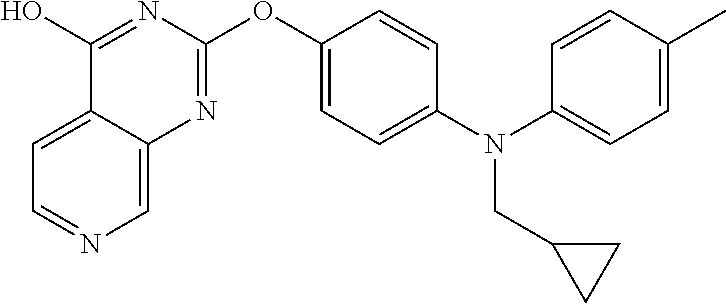
C00243
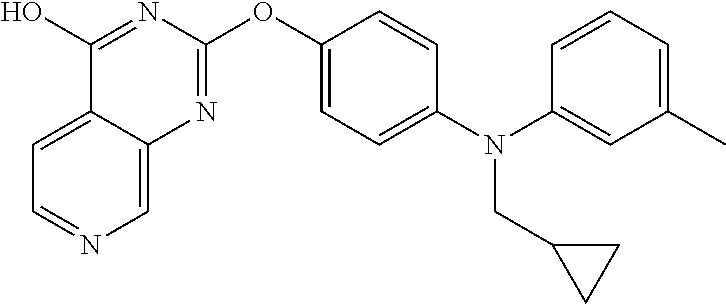
C00244
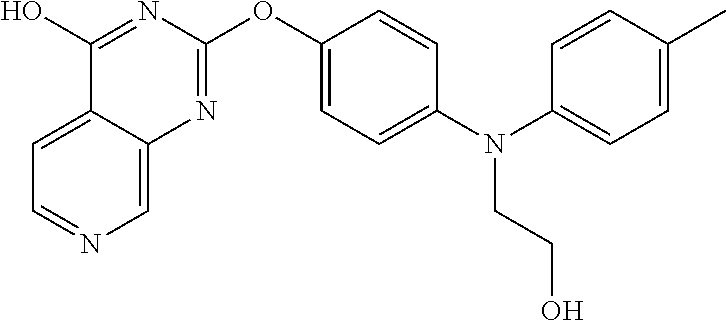
C00245
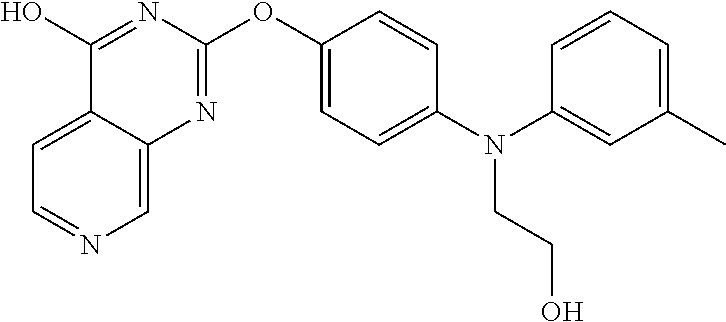
C00246
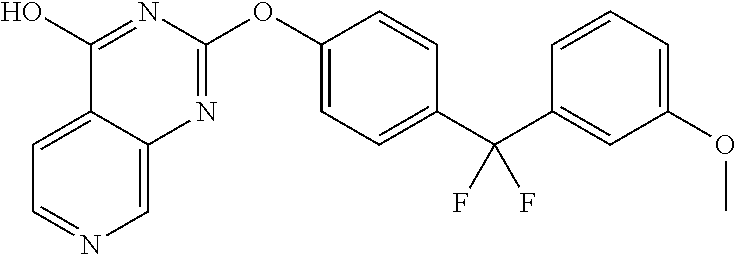
C00247
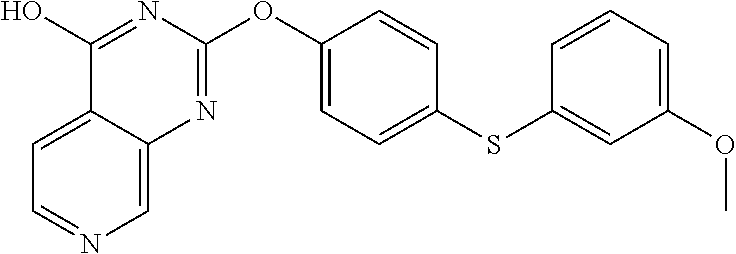
C00248
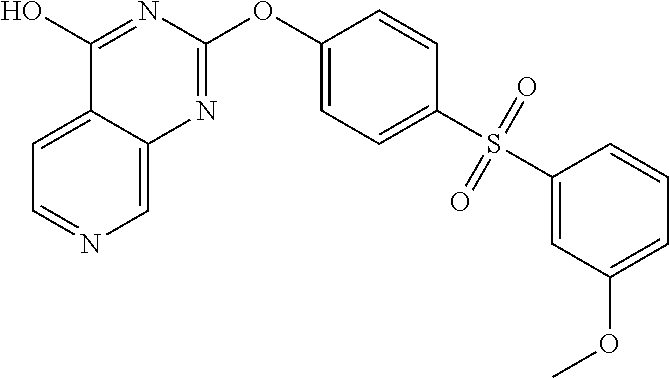
C00249
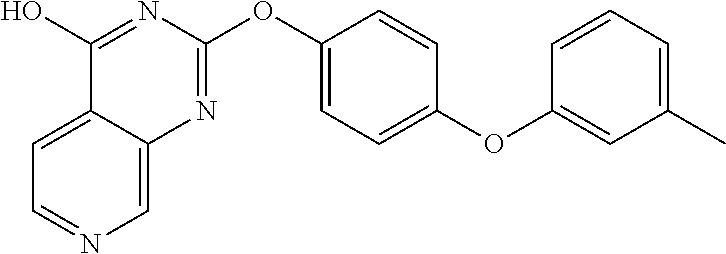
C00250

C00251

C00252

C00253

C00254

C00255

C00256

C00257

C00258

C00259

C00260
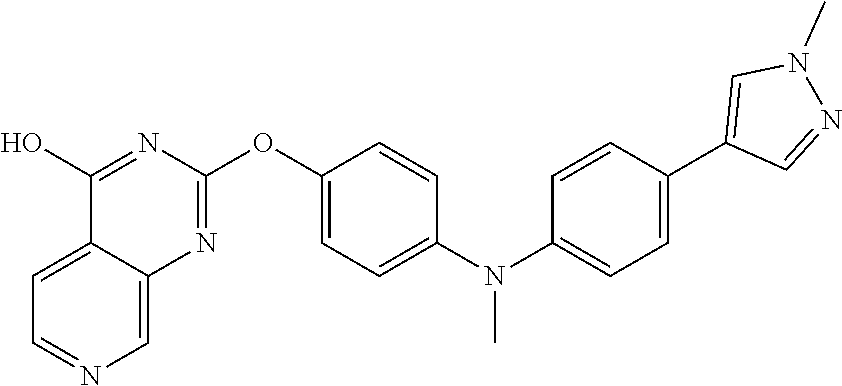
C00261
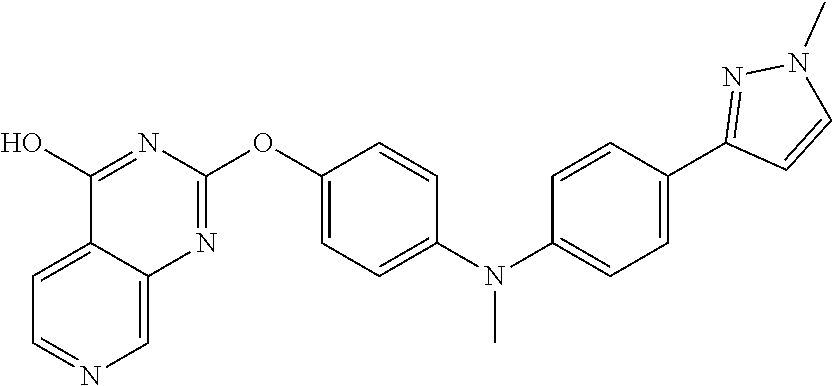
C00262
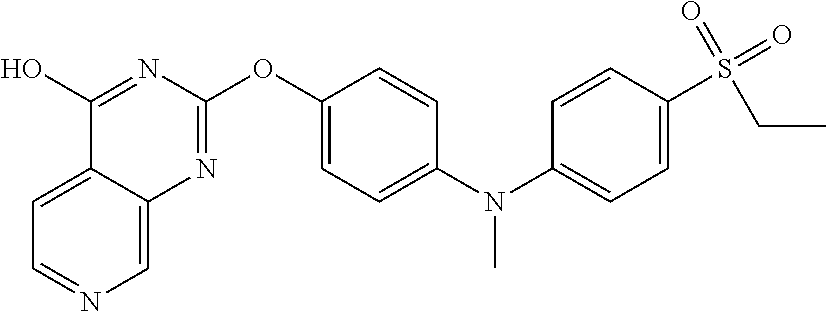
C00263
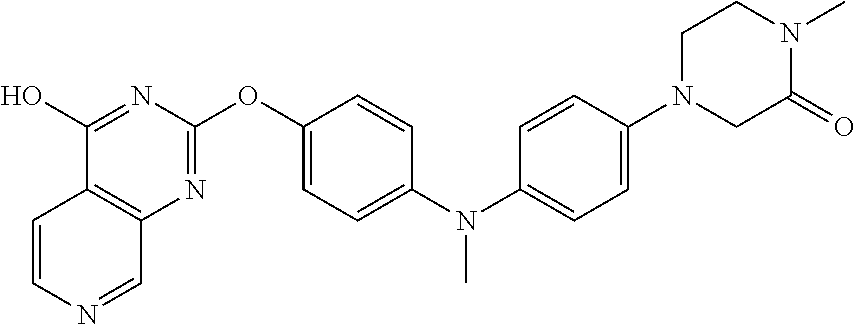
C00264

C00265
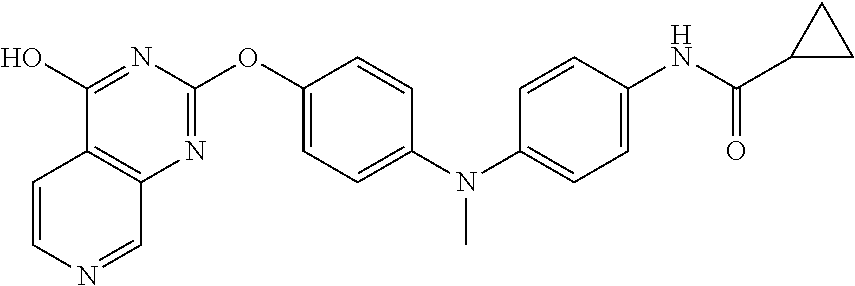
C00266

C00267
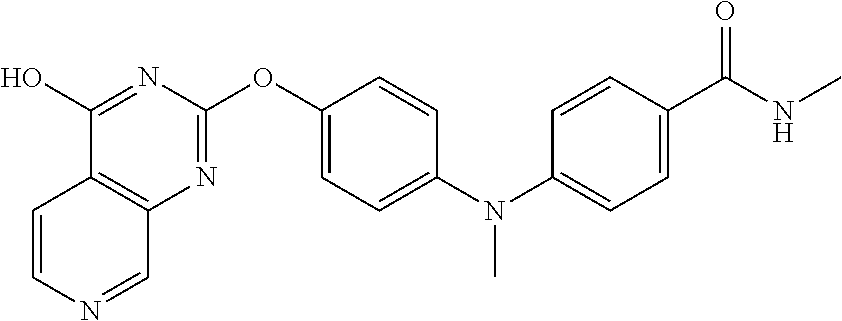
C00268

C00269
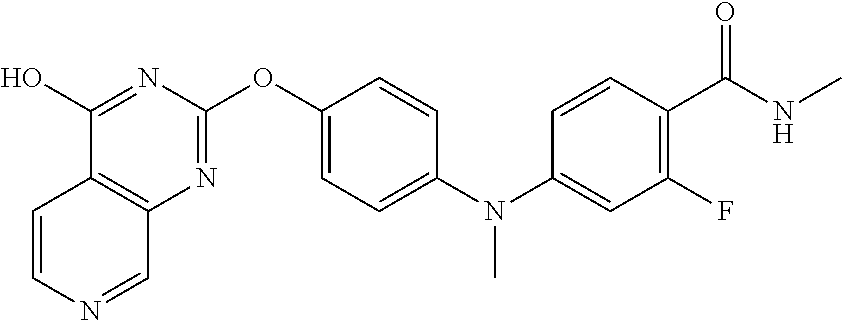
C00270

C00271
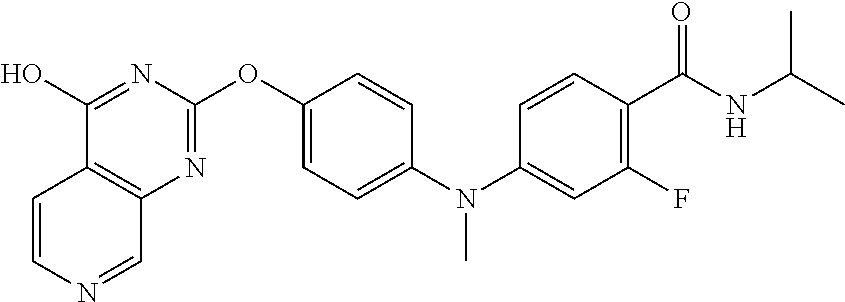
C00272

C00273
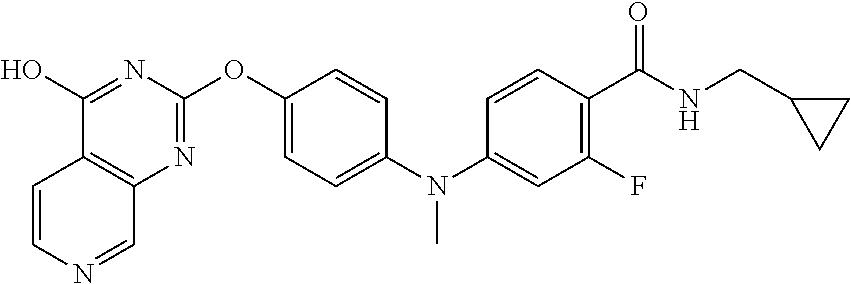
C00274

C00275
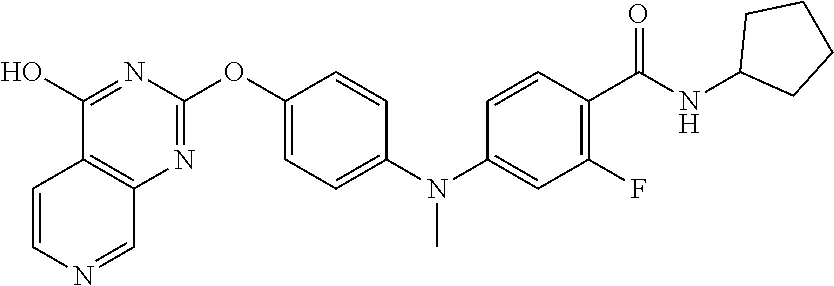
C00276

C00277
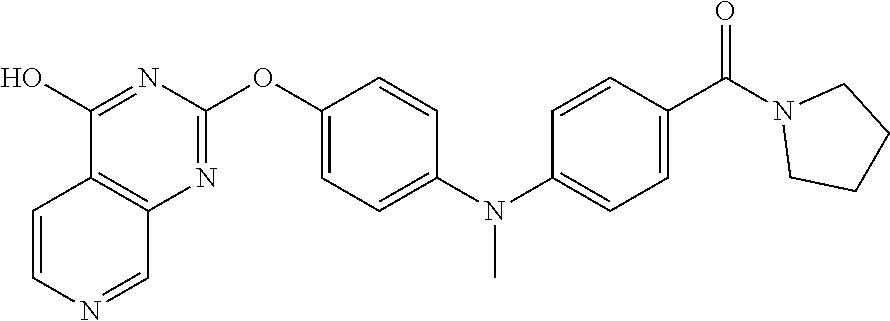
C00278

C00279
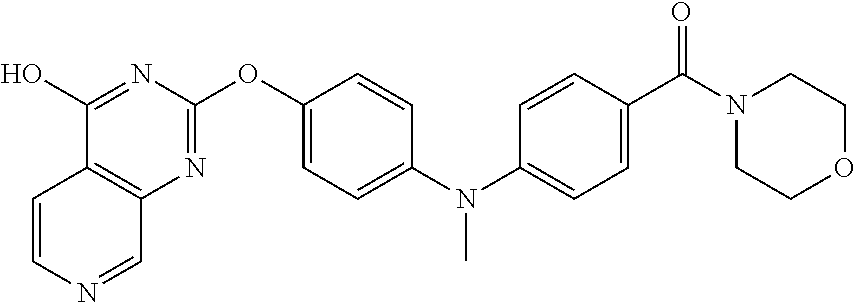
C00280

C00281
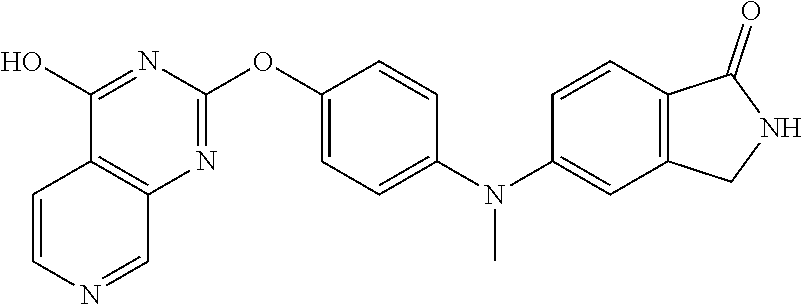
C00282

C00283
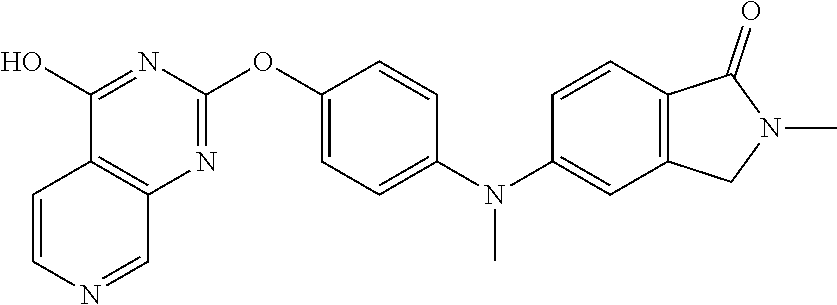
C00284

C00285

C00286

C00287

C00288
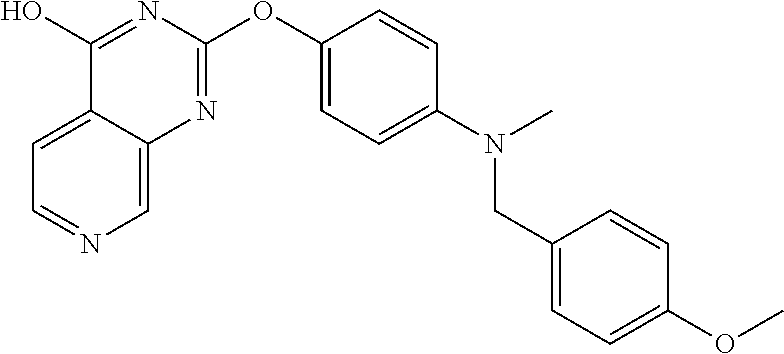
C00289

C00290

C00291

C00292
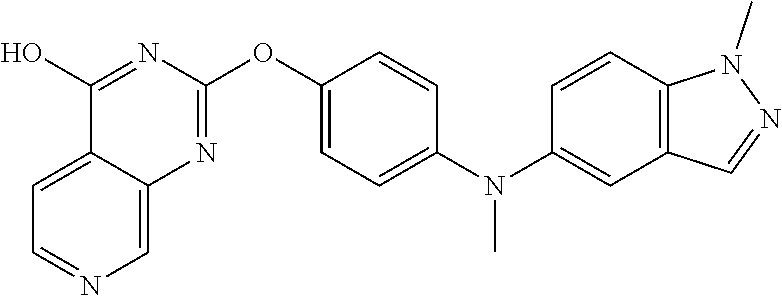
C00293

C00294

C00295

C00296
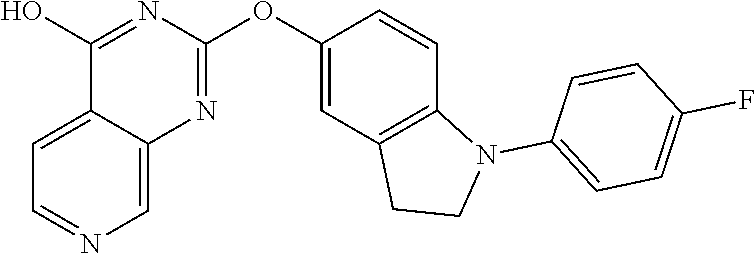
C00297
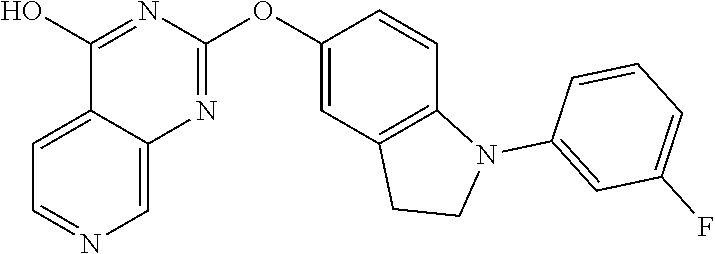
C00298
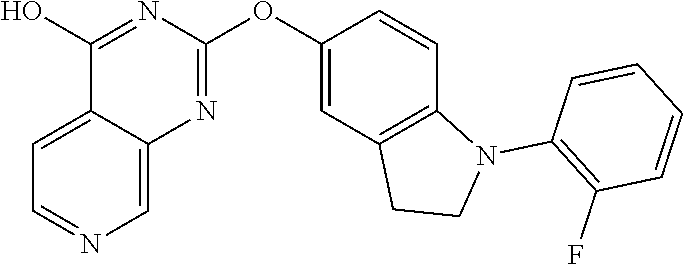
C00299
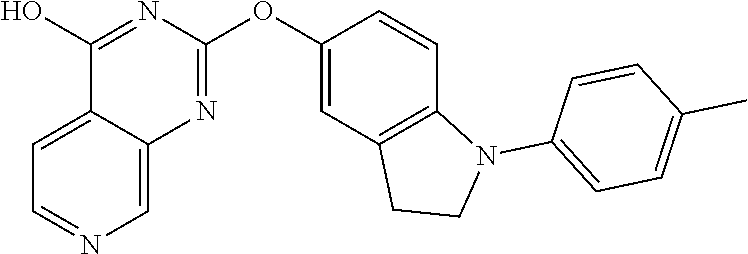
C00300
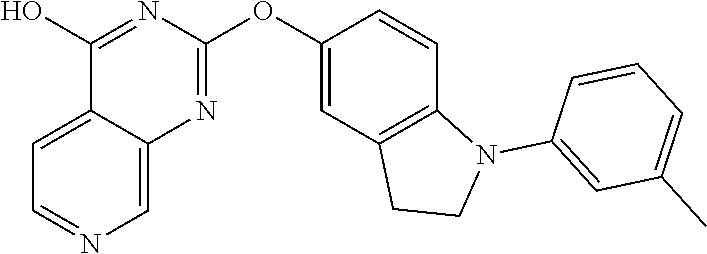
C00301
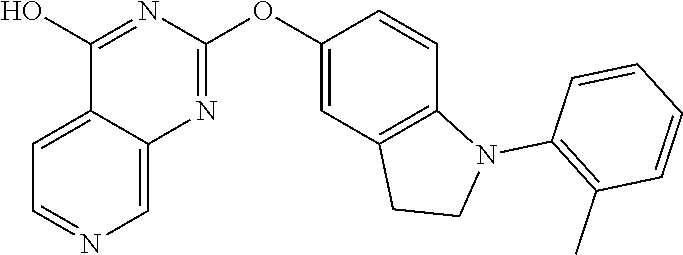
C00302

C00303

C00304

C00305

C00306
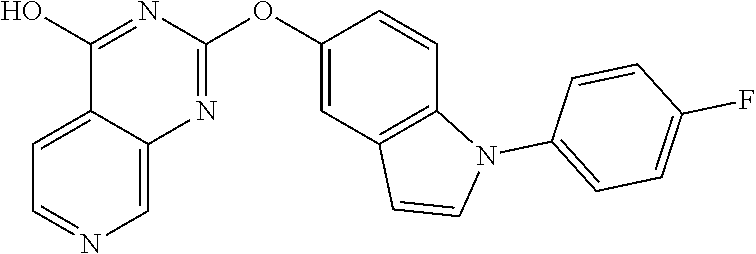
C00307
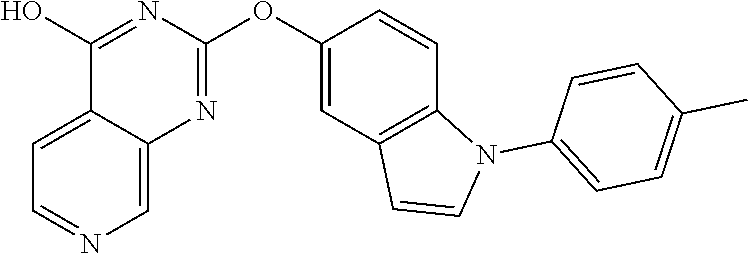
C00308
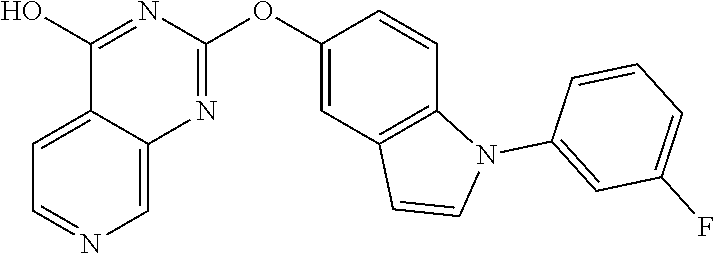
C00309
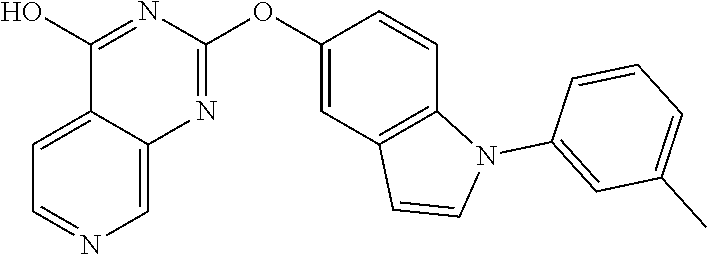
C00310
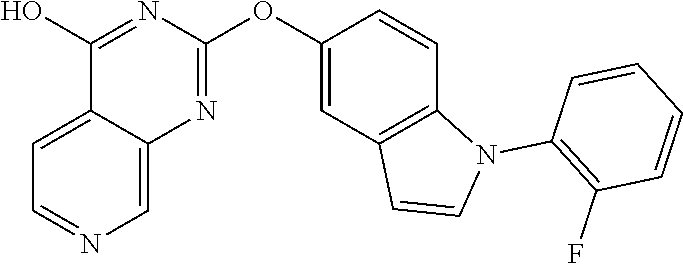
C00311
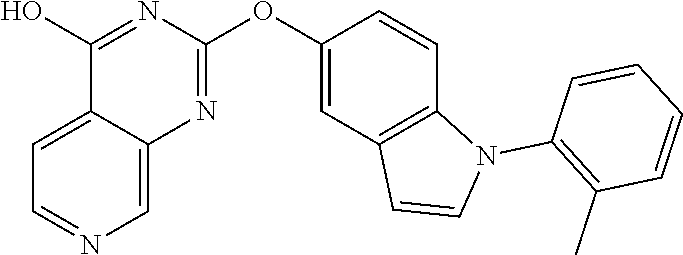
C00312

C00313
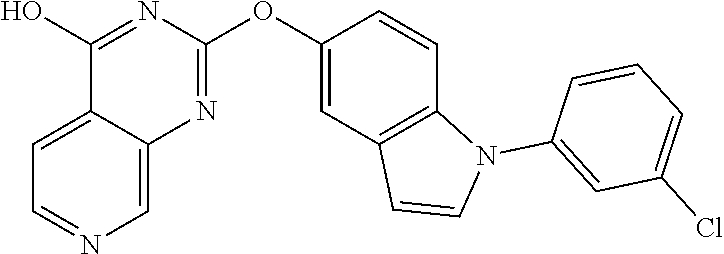
C00314
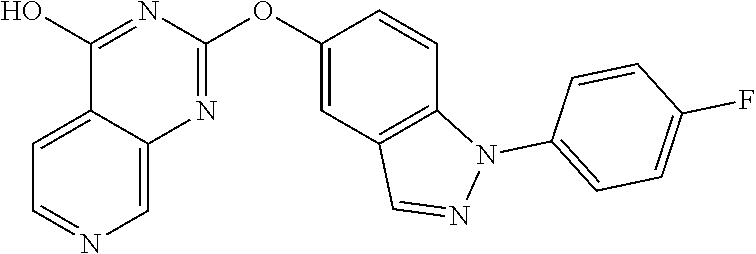
C00315
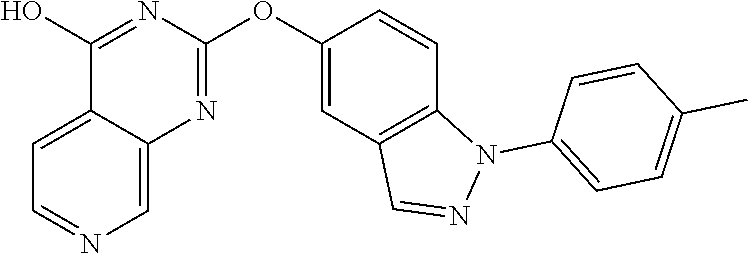
C00316
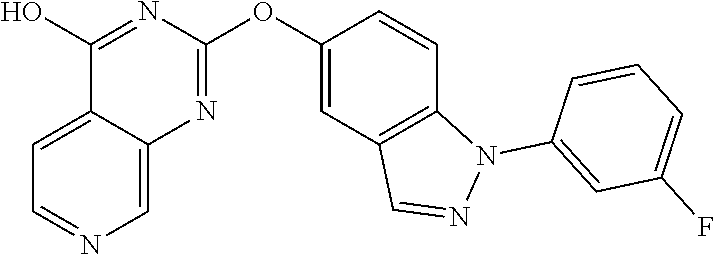
C00317
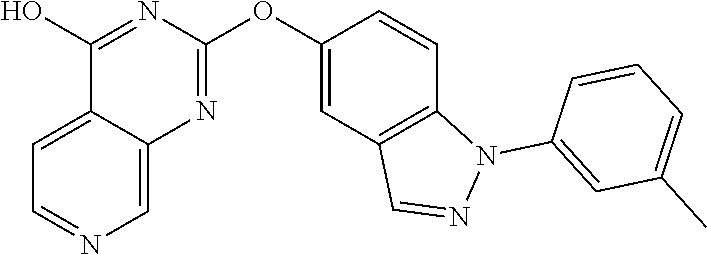
C00318
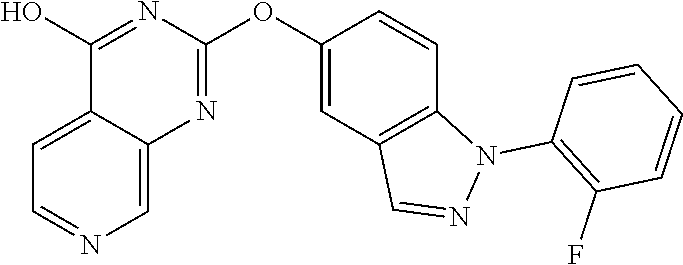
C00319
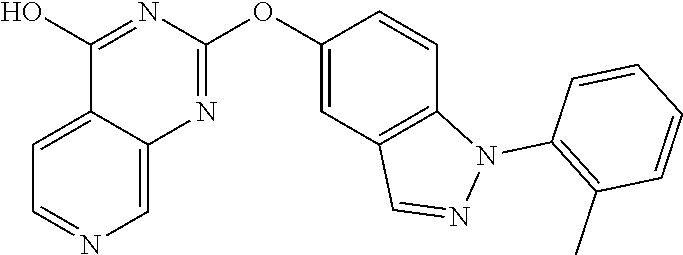
C00320

C00321
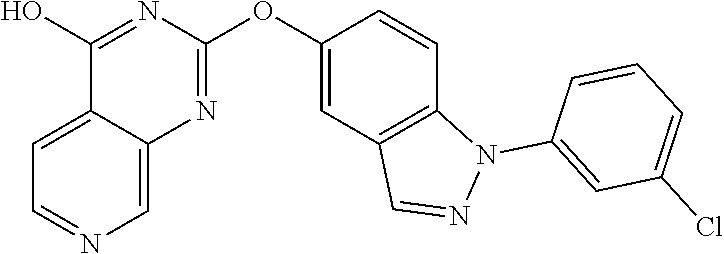
C00322
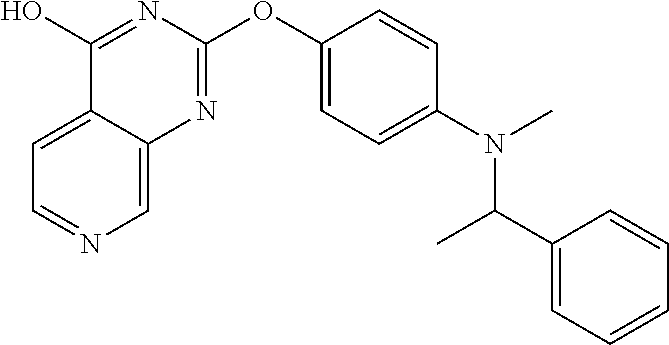
C00323
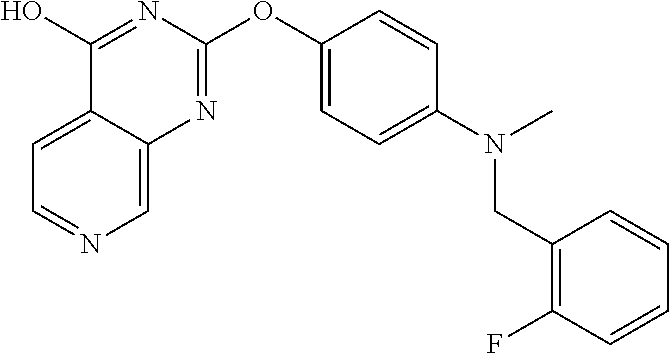
C00324
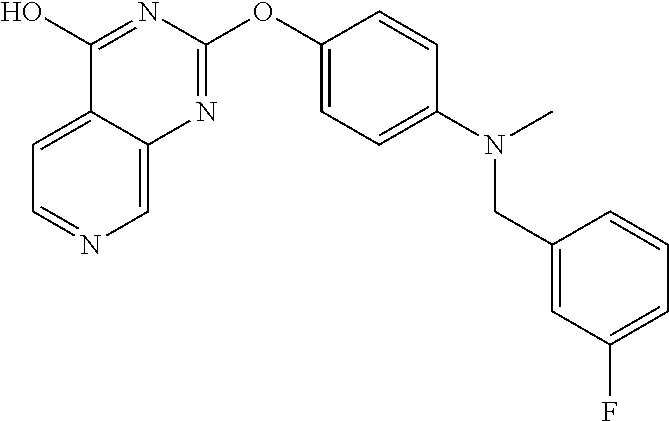
C00325
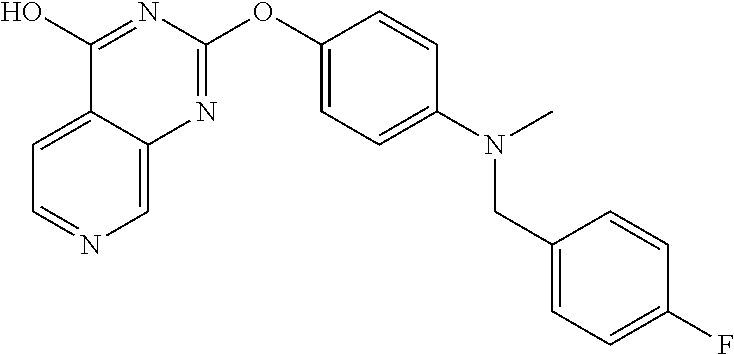
C00326
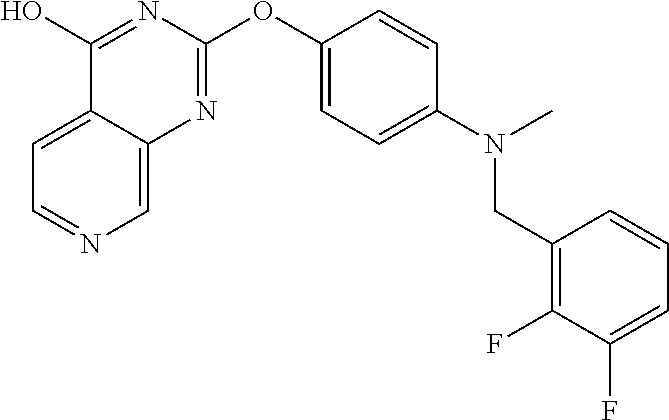
C00327
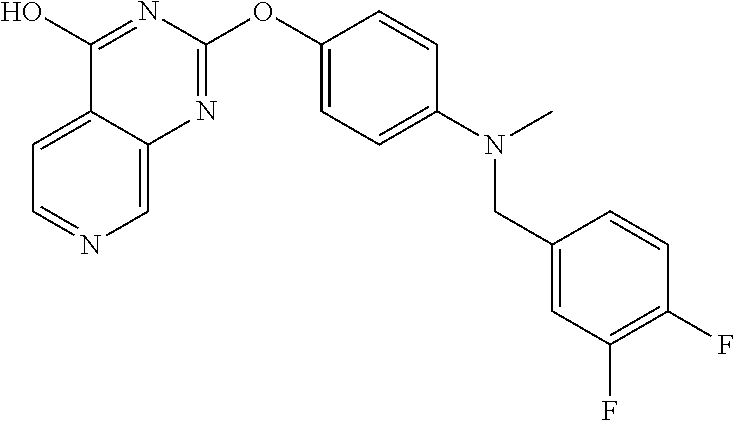
C00328
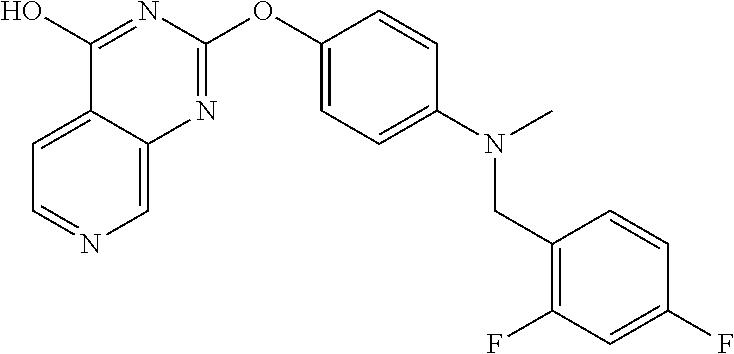
C00329
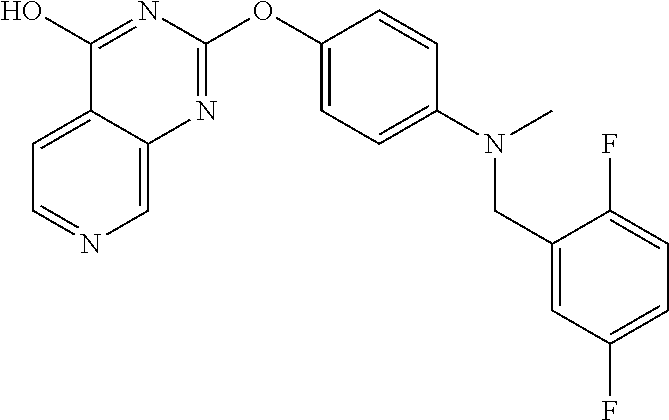
C00330
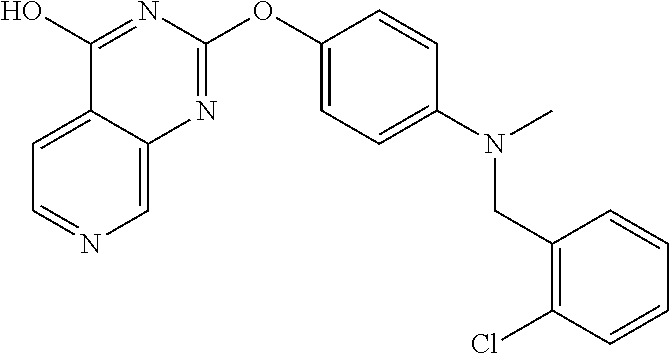
C00331
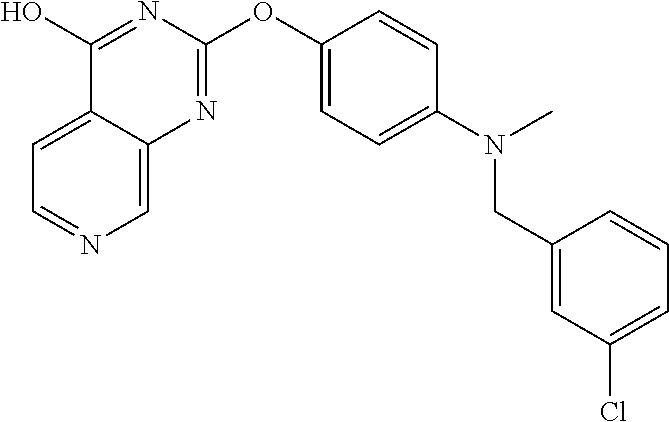
C00332
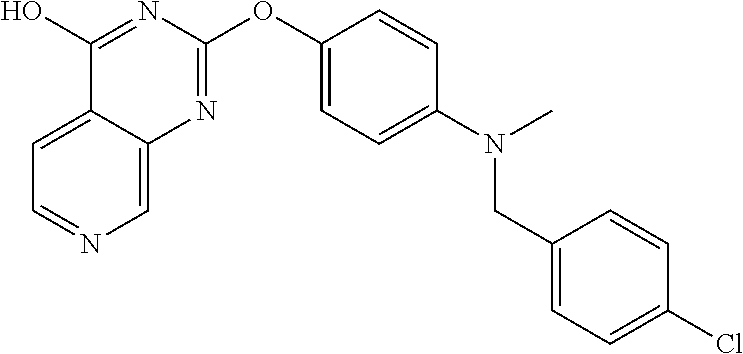
C00333
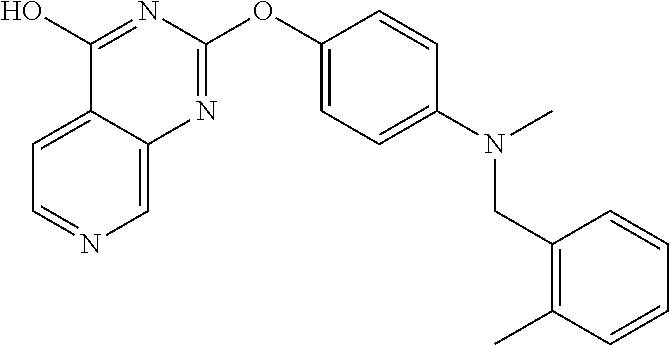
C00334
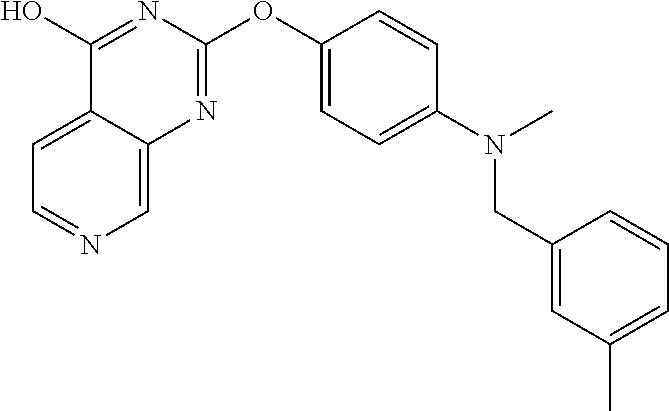
C00335
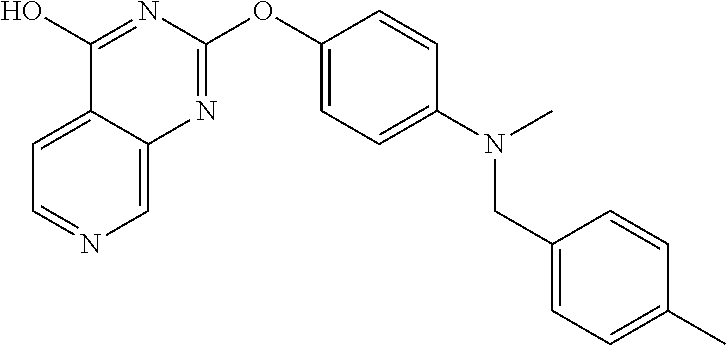
C00336
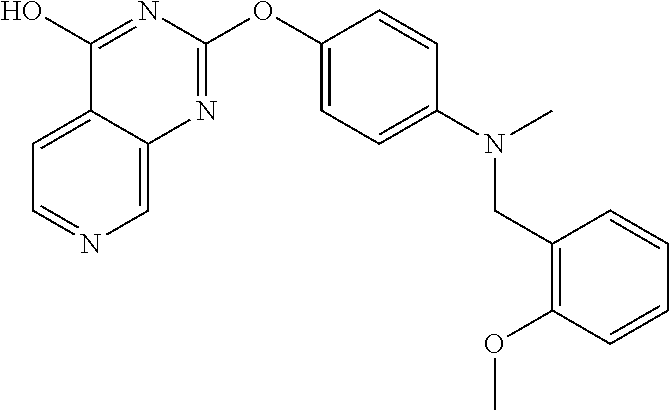
C00337
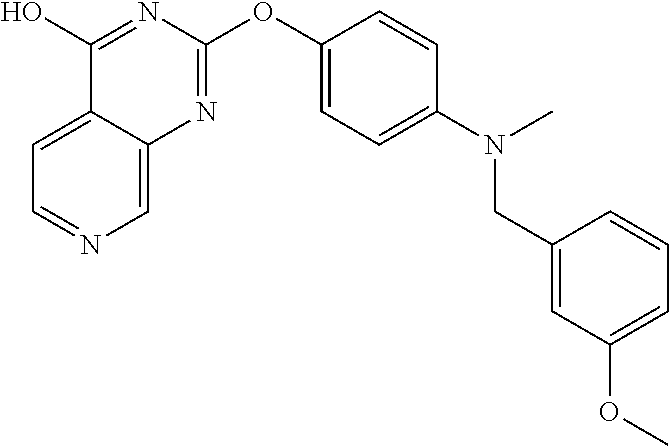
C00338
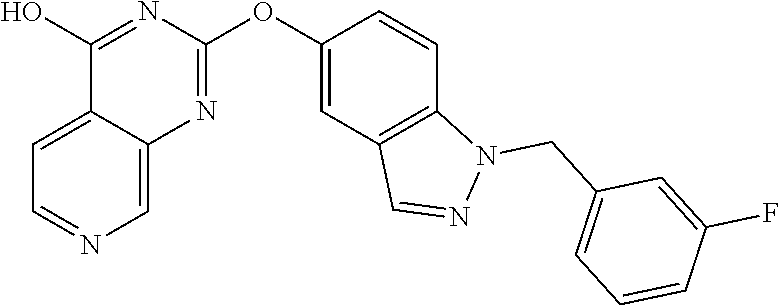
C00339
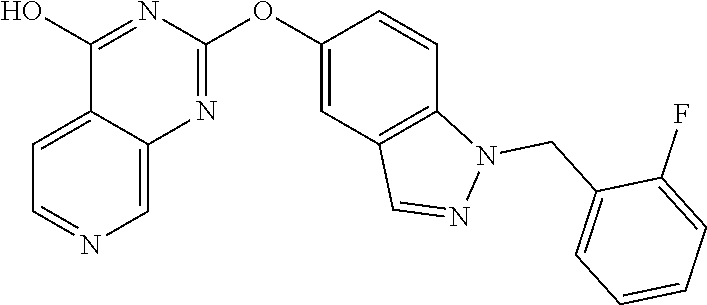
C00340
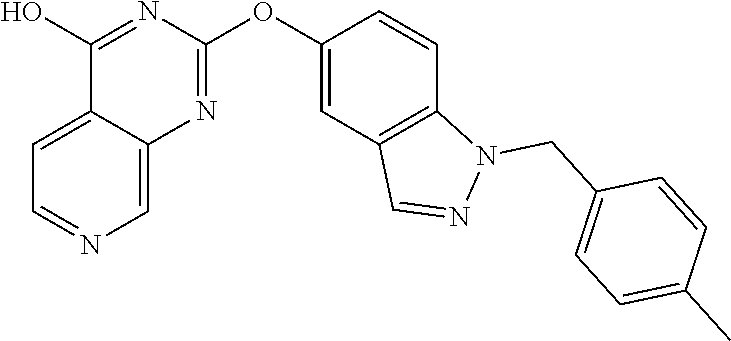
C00341
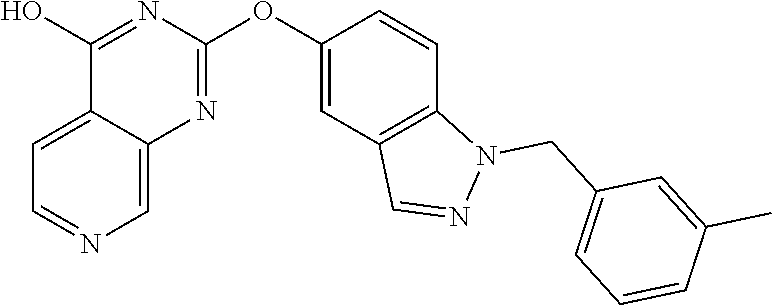
C00342
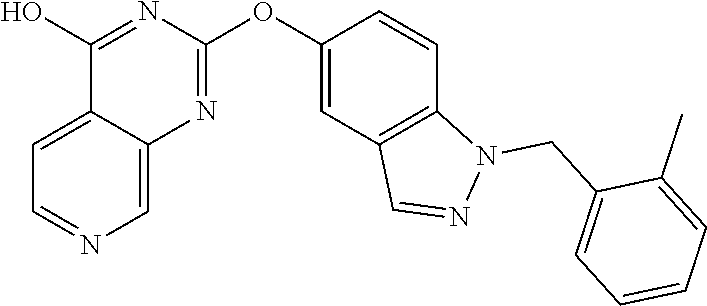
C00343
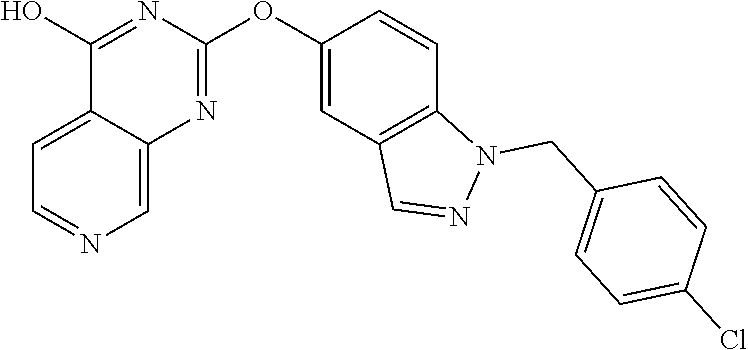
C00344
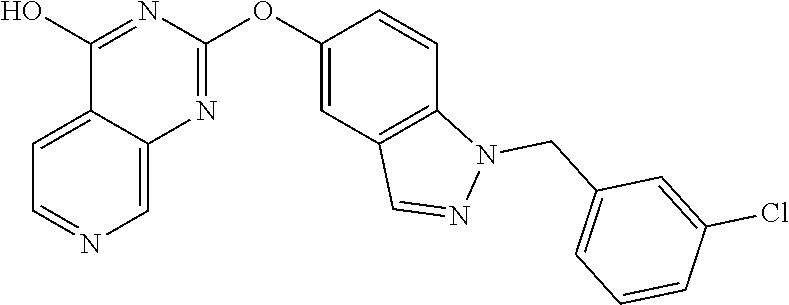
C00345
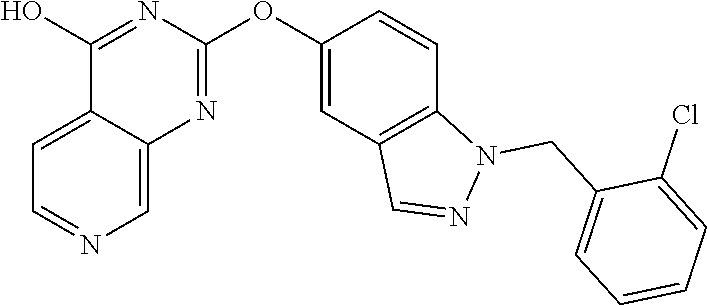
C00346
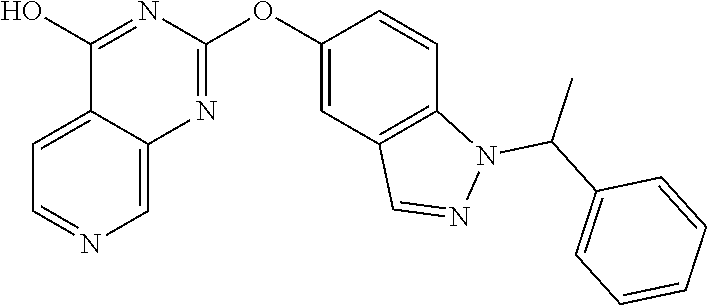
C00347
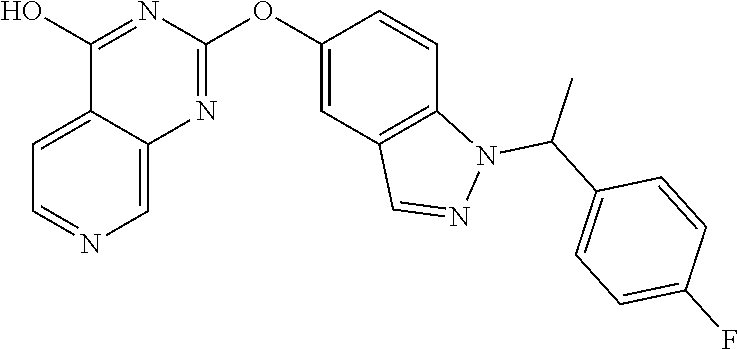
C00348
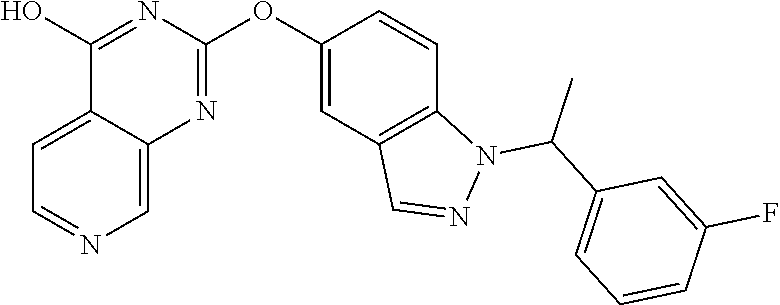
C00349
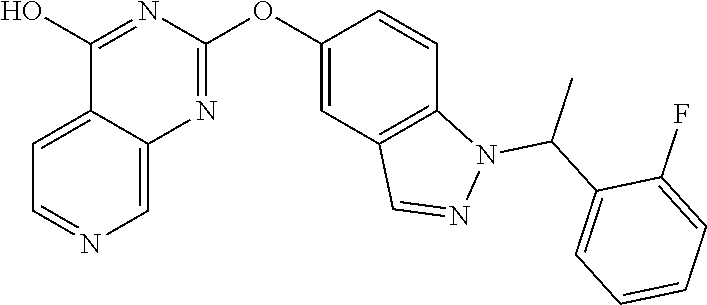
C00350
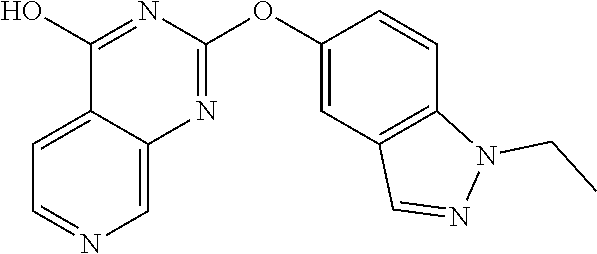
C00351
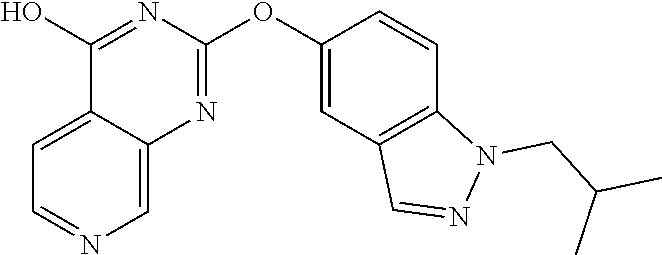
C00352
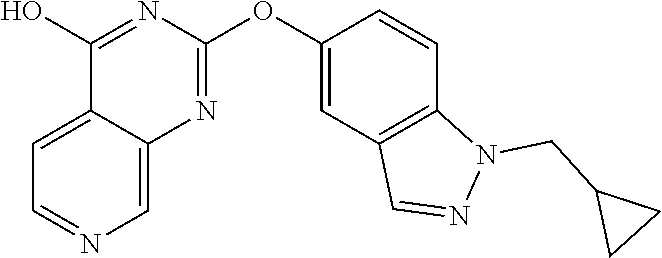
C00353
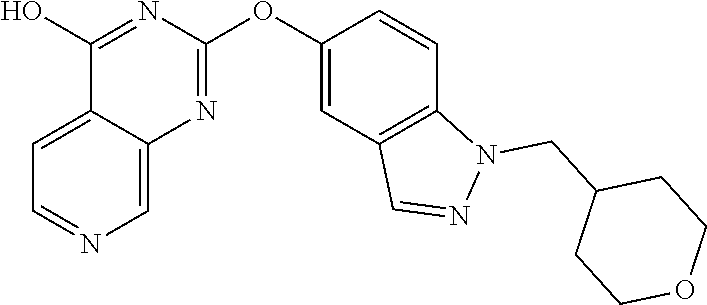
C00354
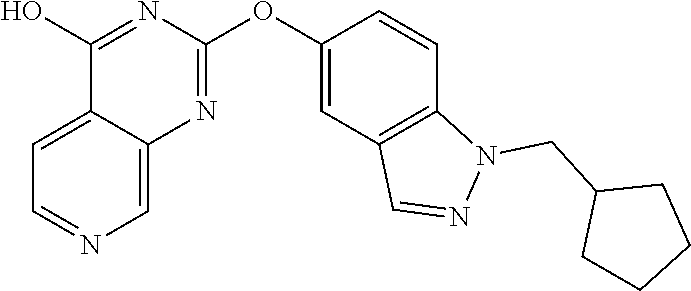
C00355
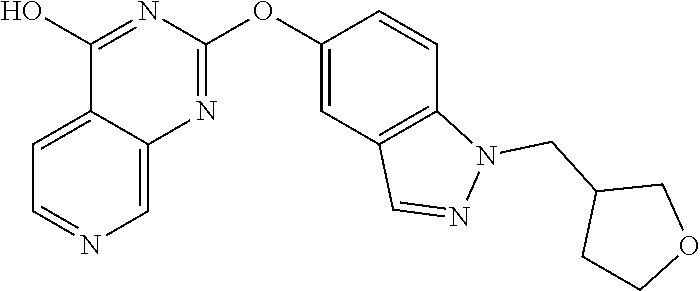
C00356
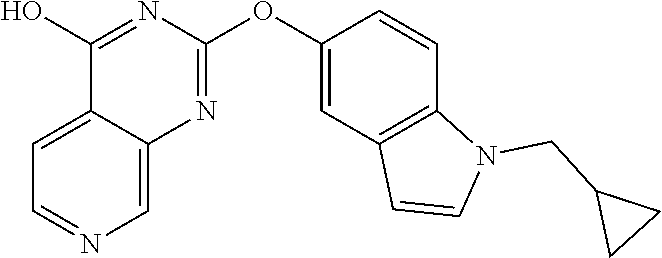
C00357
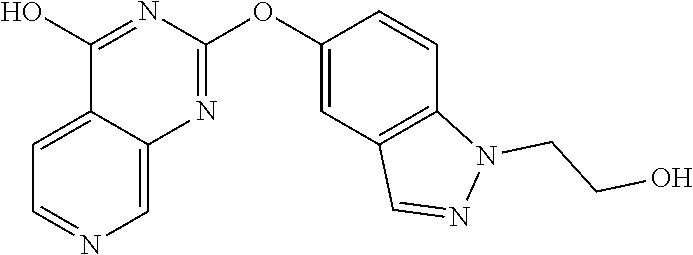
C00358

C00359
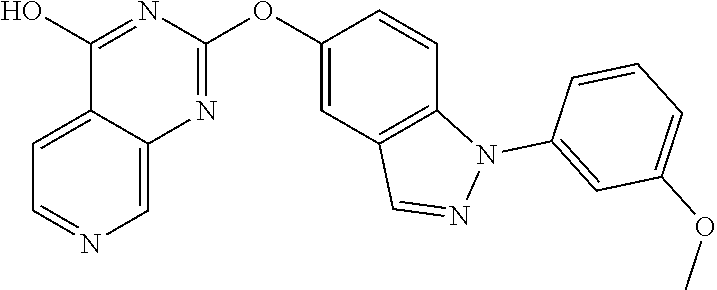
C00360
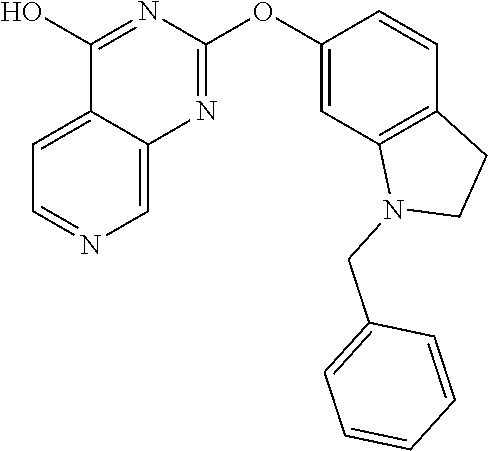
C00361
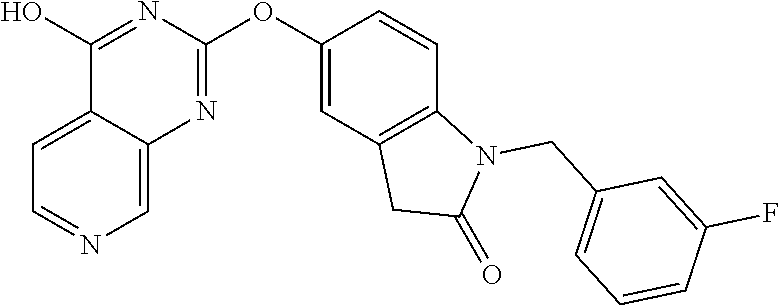
C00362
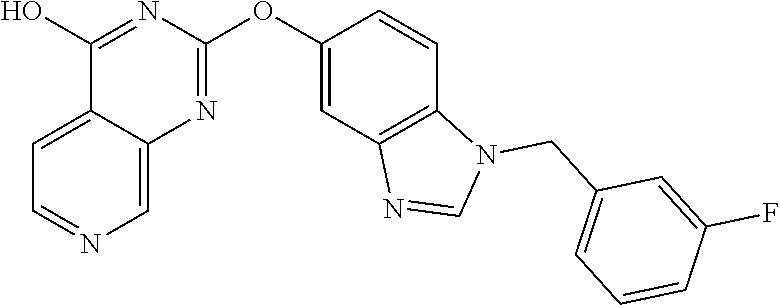
C00363
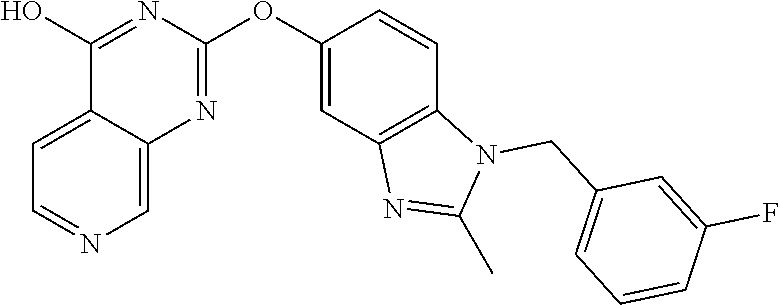
C00364
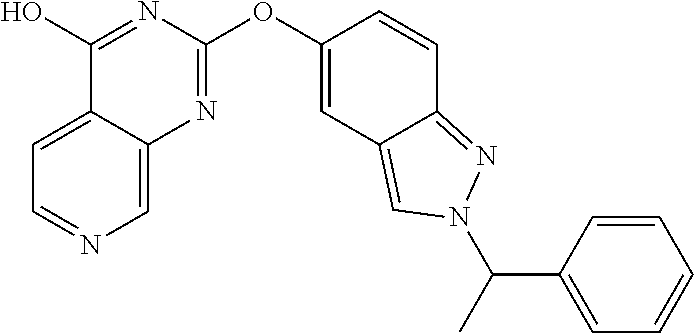
C00365

C00366
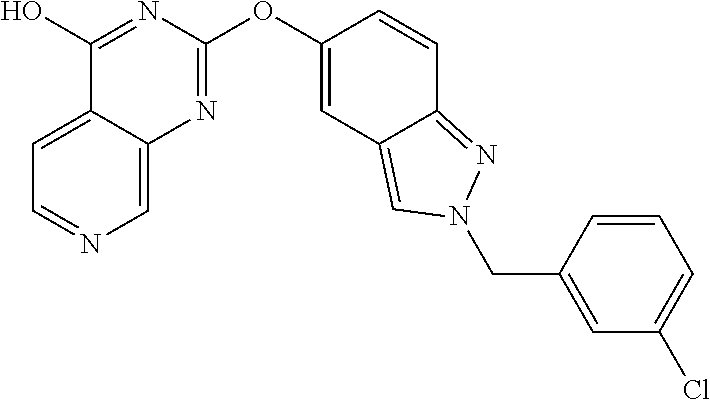
C00367
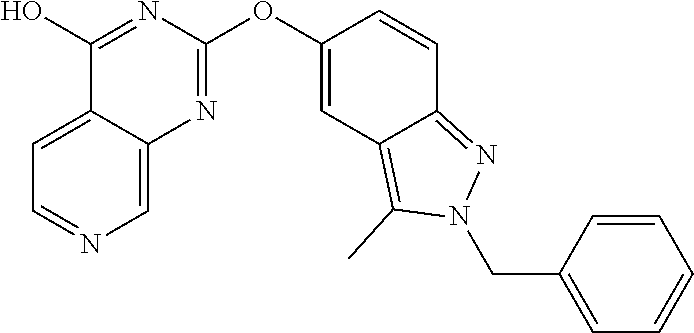
C00368
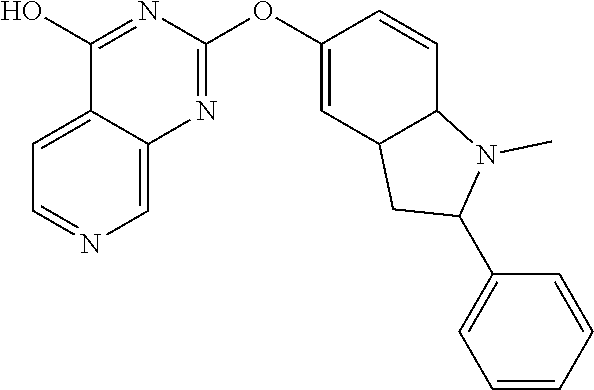
C00369
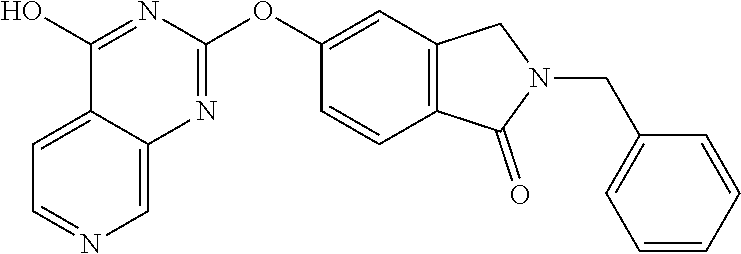
C00370
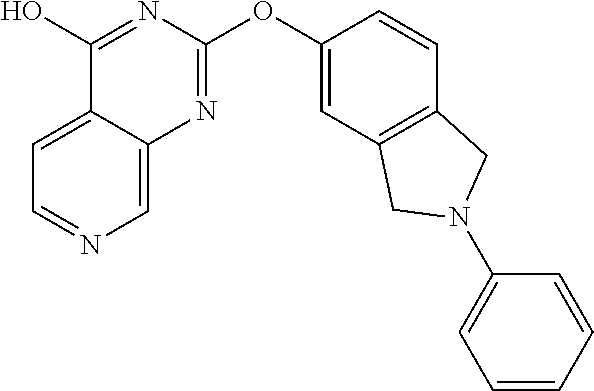
C00371
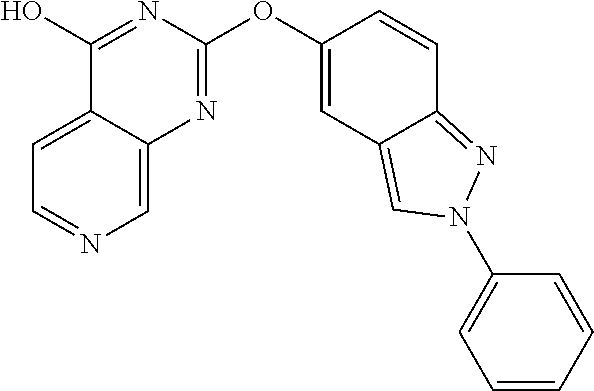
C00372
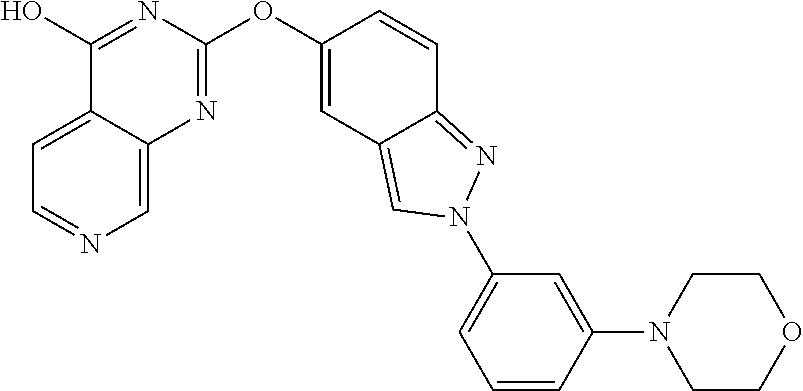
C00373
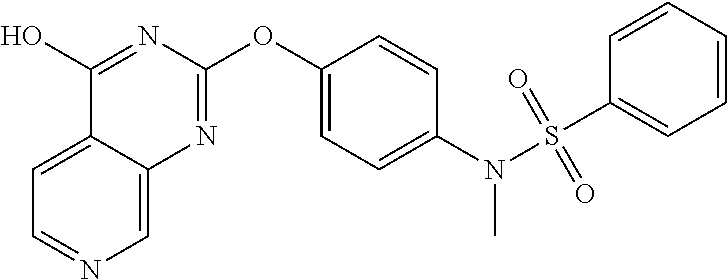
C00374
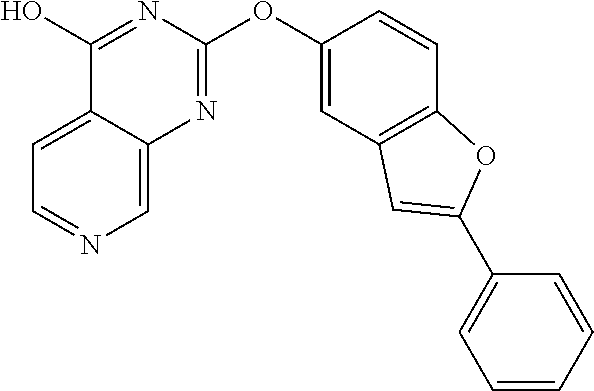
C00375
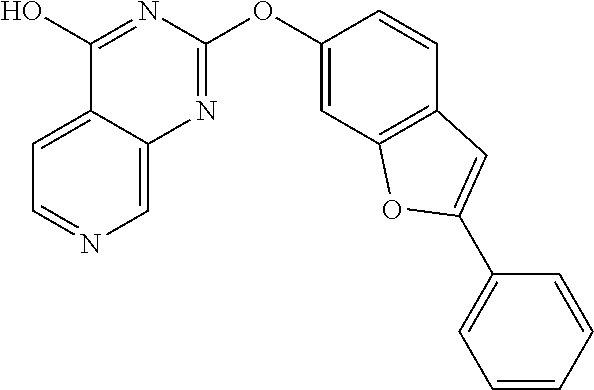
C00376
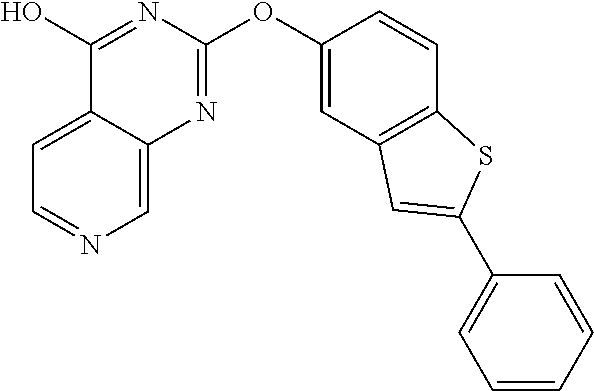
C00377
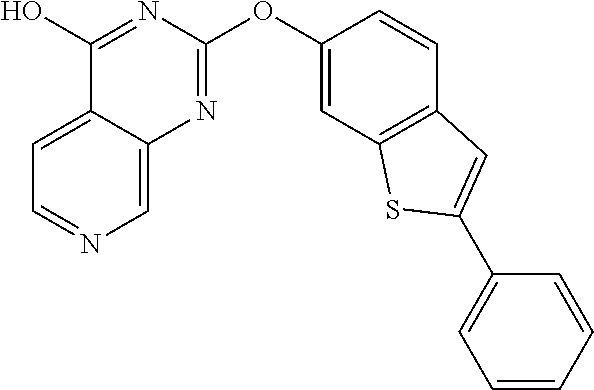
C00378
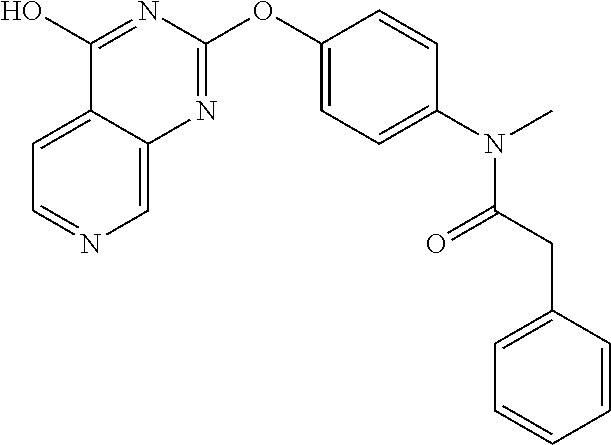
C00379
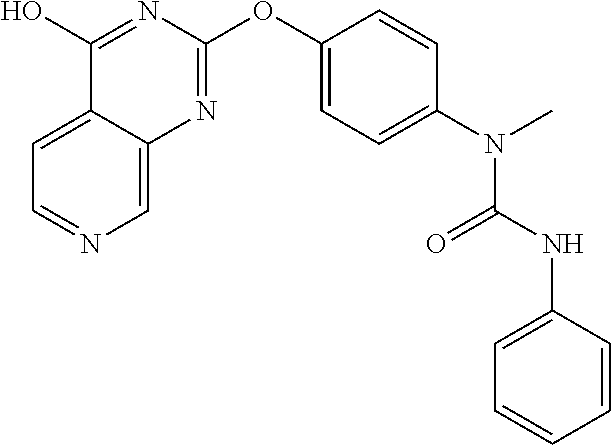
C00380
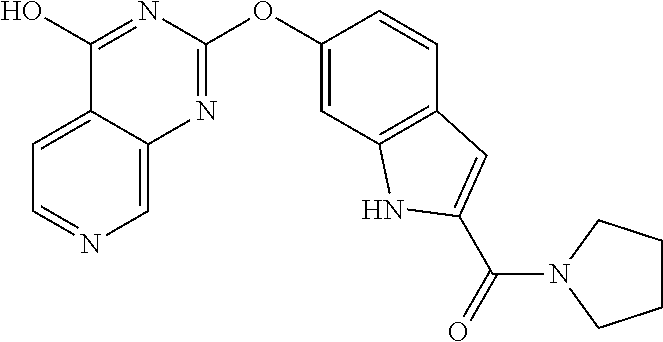
C00381
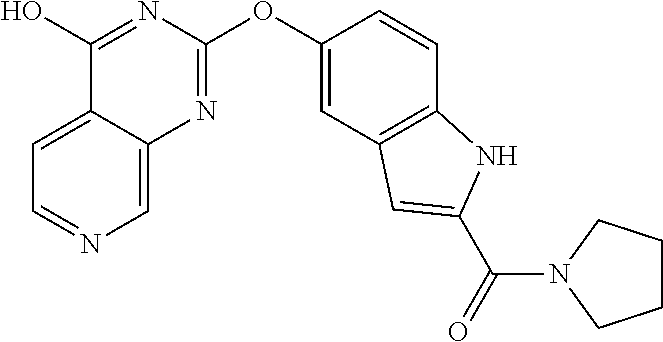
C00382
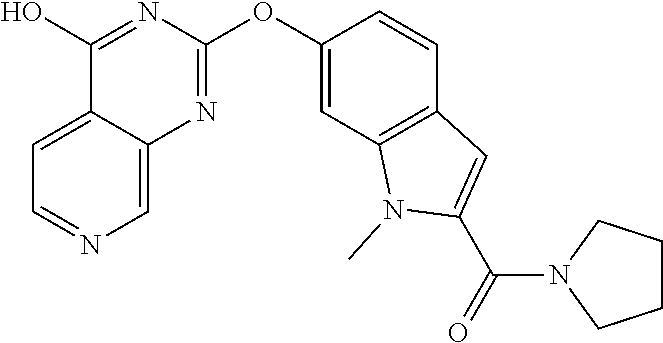
C00383
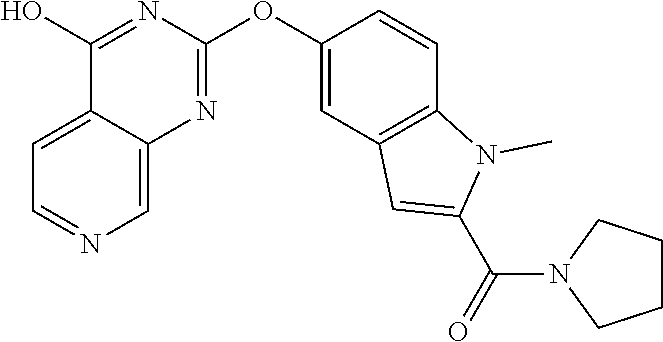
C00384
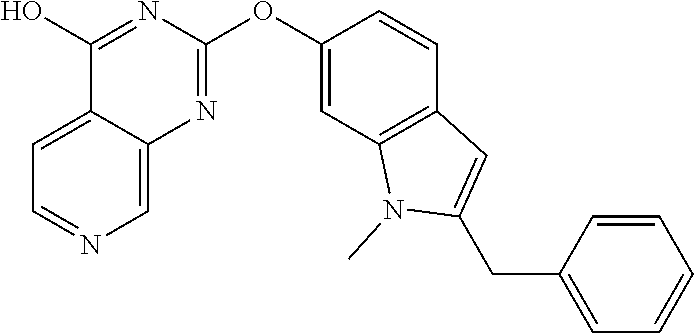
C00385
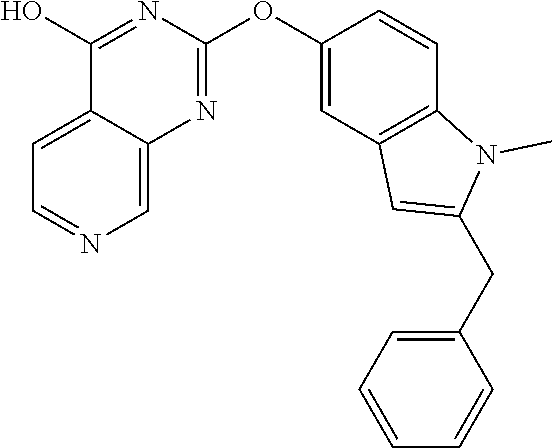
C00386
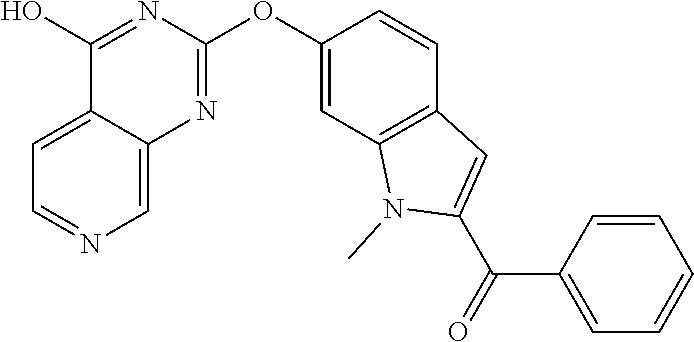
C00387
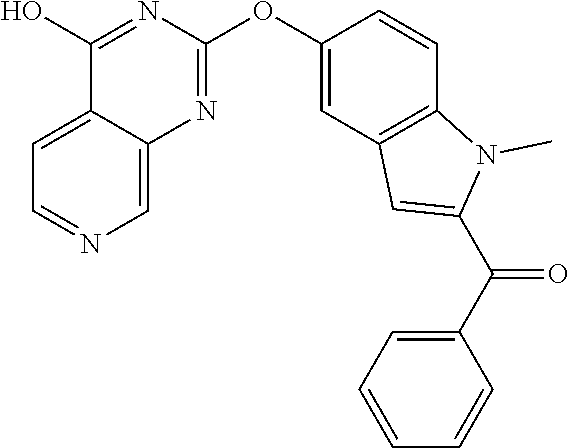
C00388
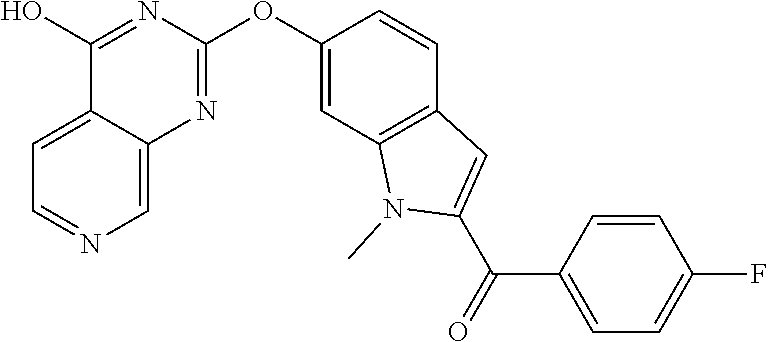
C00389
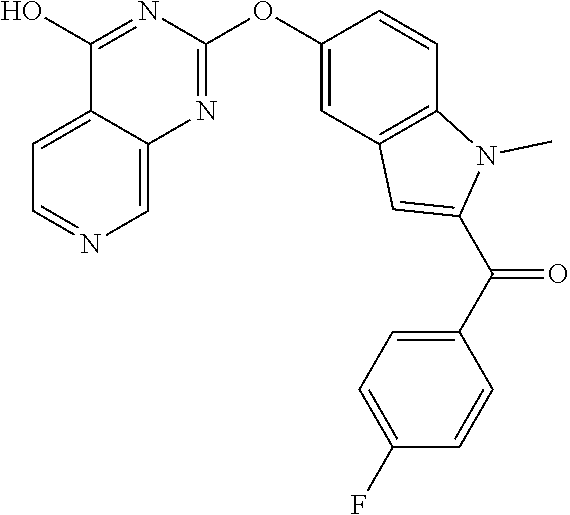
C00390
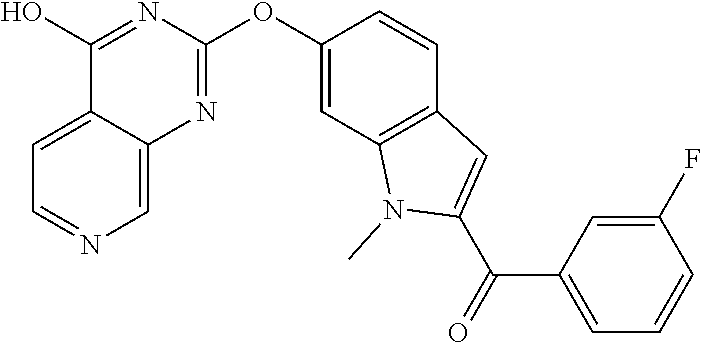
C00391
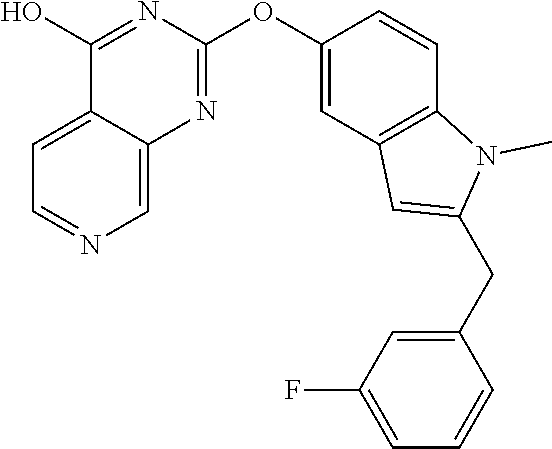
C00392
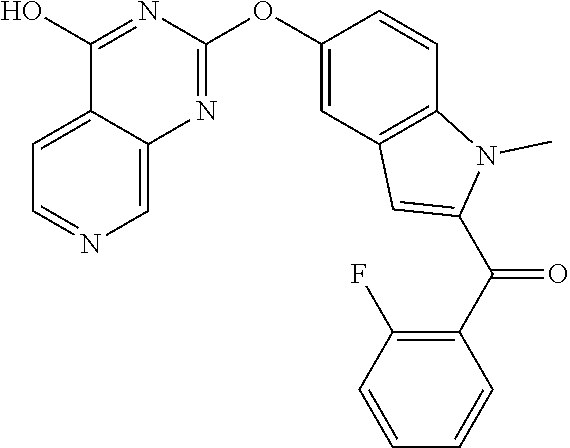
C00393
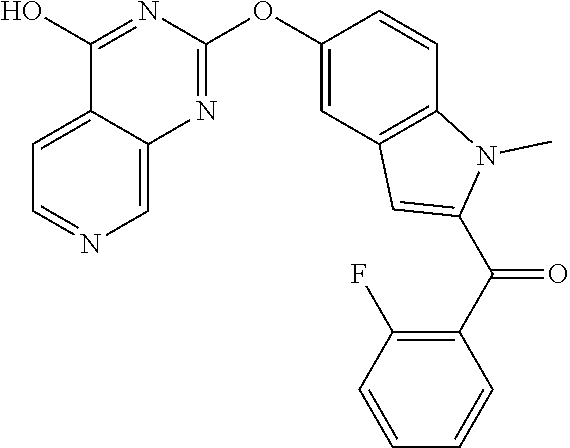
C00394
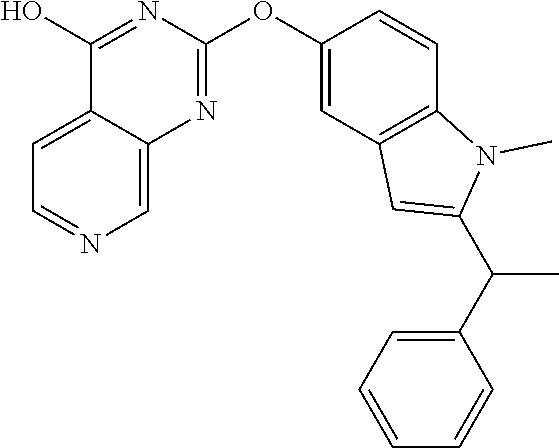
C00395
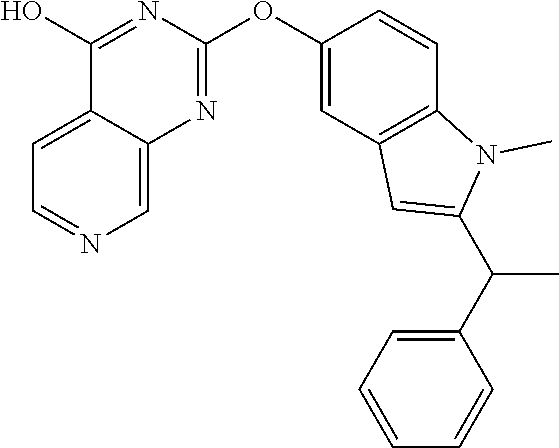
C00396
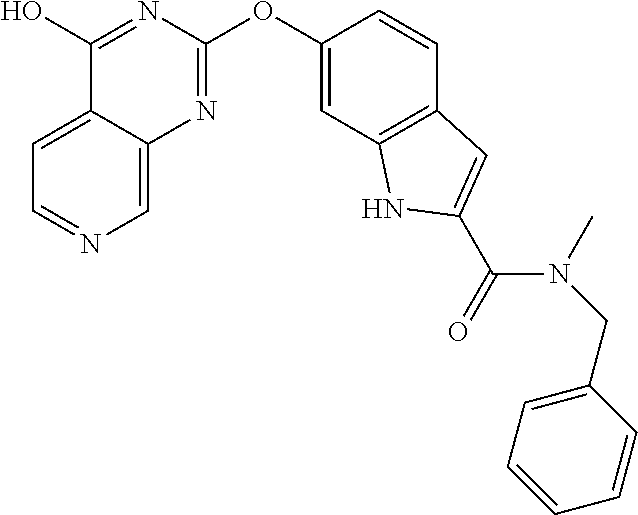
C00397
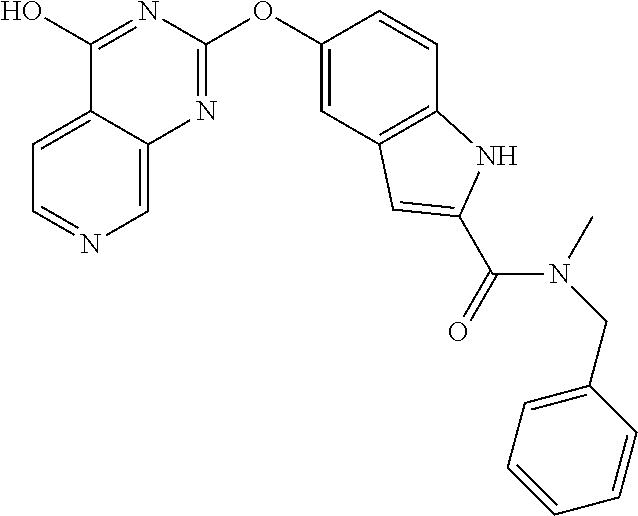
C00398
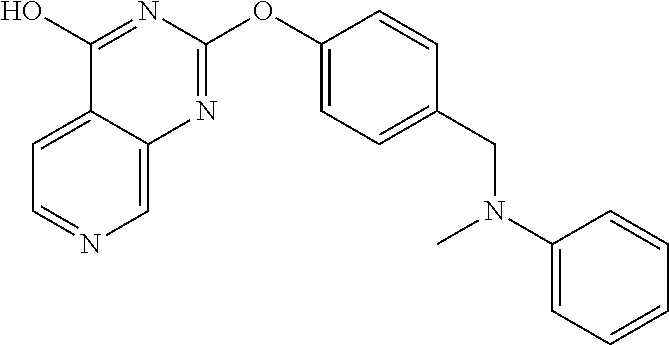
C00399
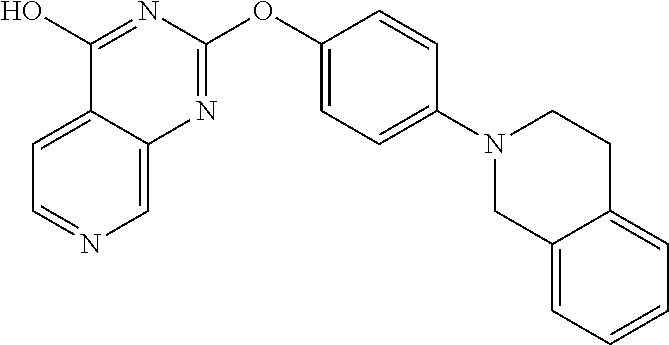
C00400
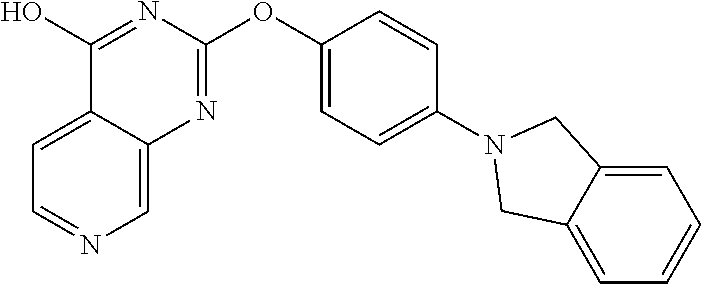
C00401
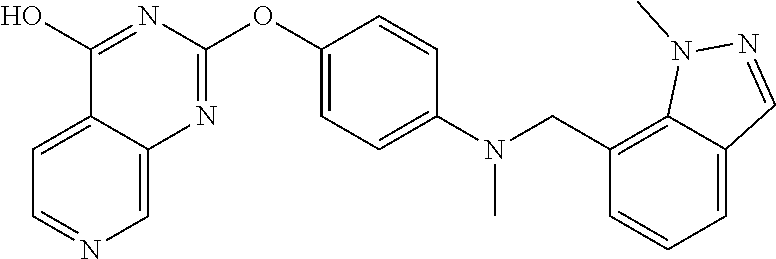
C00402
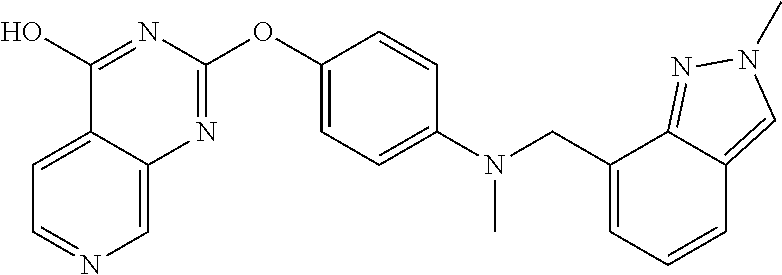
C00403

C00404

C00405

C00406
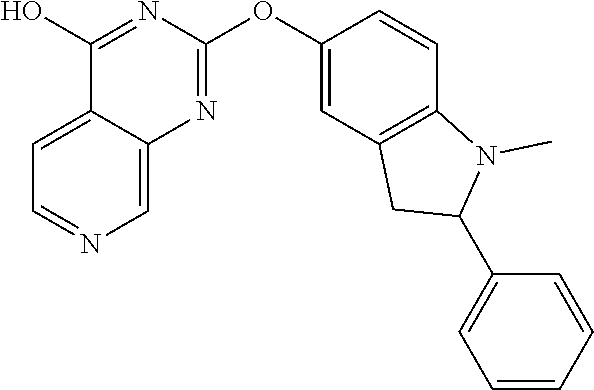
C00407
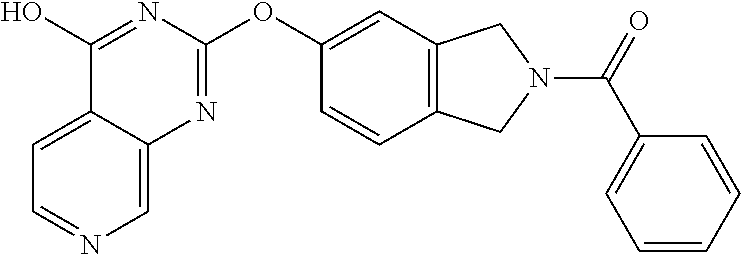
C00408

C00409

C00410
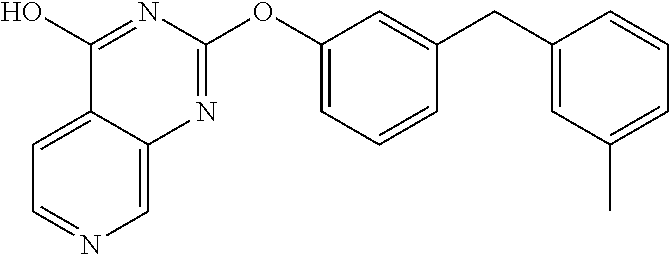
C00411
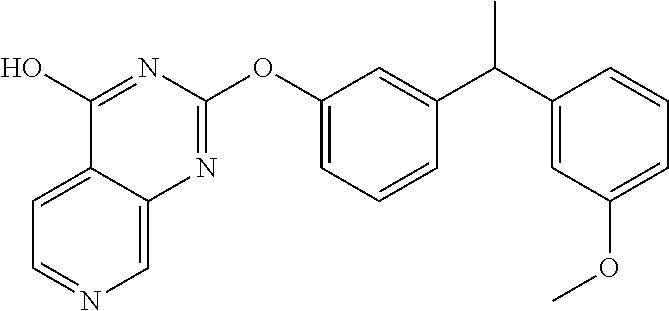
C00412

C00413

C00414
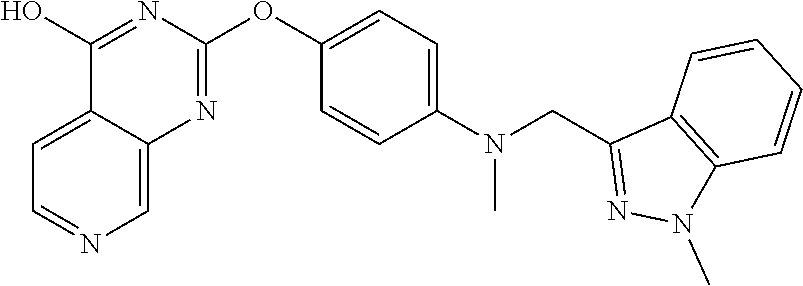
C00415

C00416

C00417

C00418
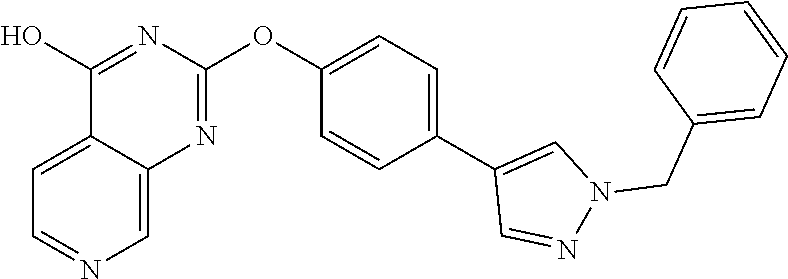
C00419
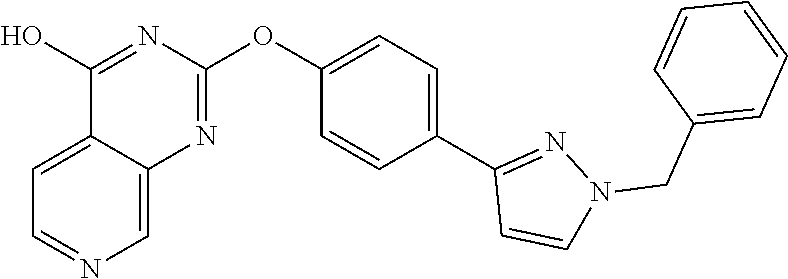
C00420
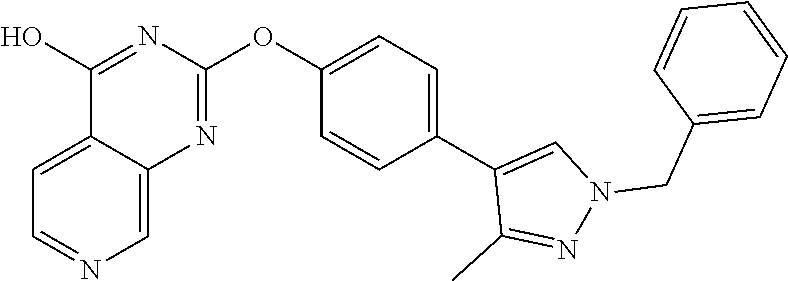
C00421
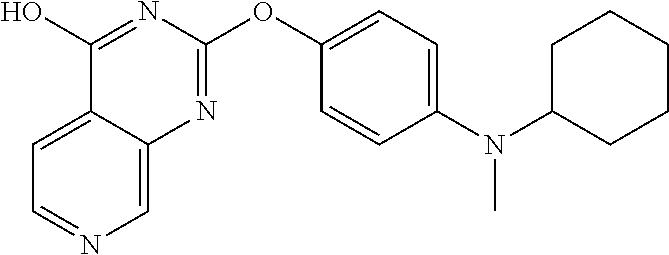
C00422
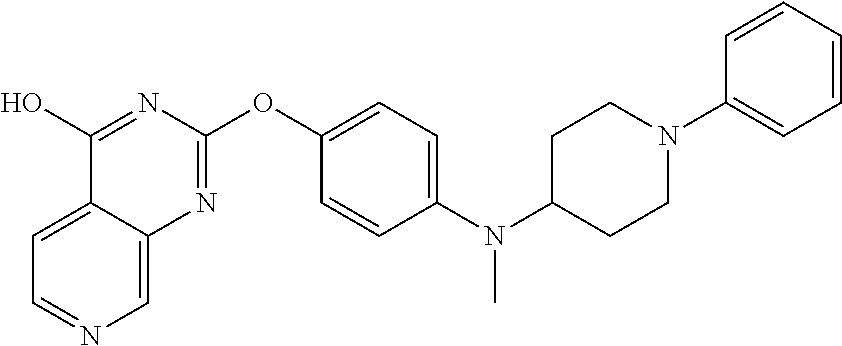
C00423
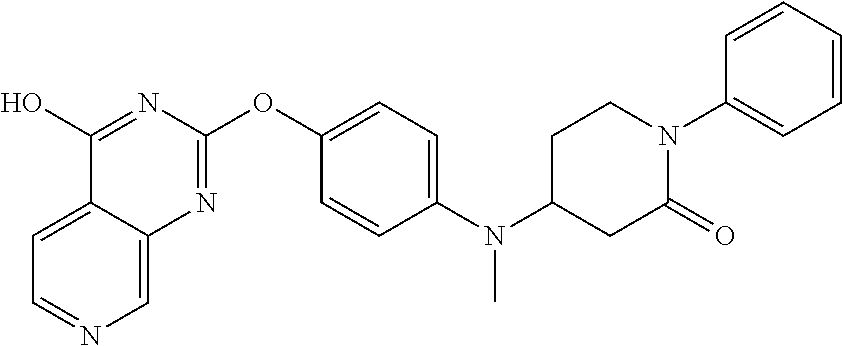
C00424
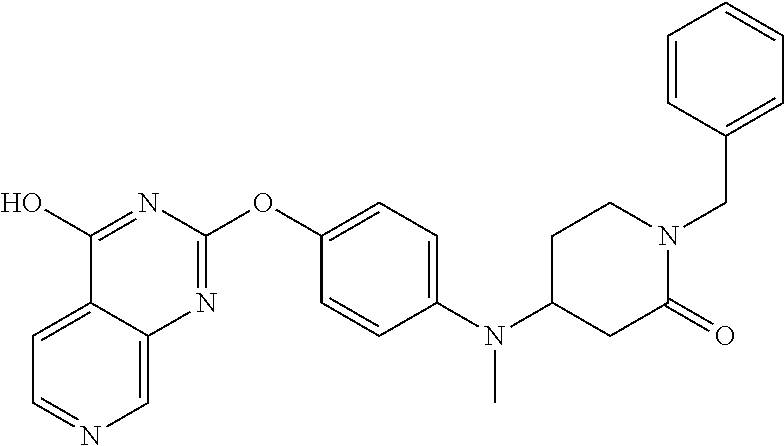
C00425
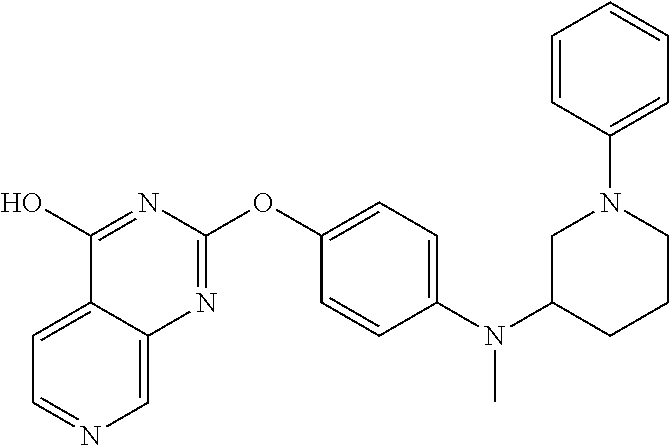
C00426
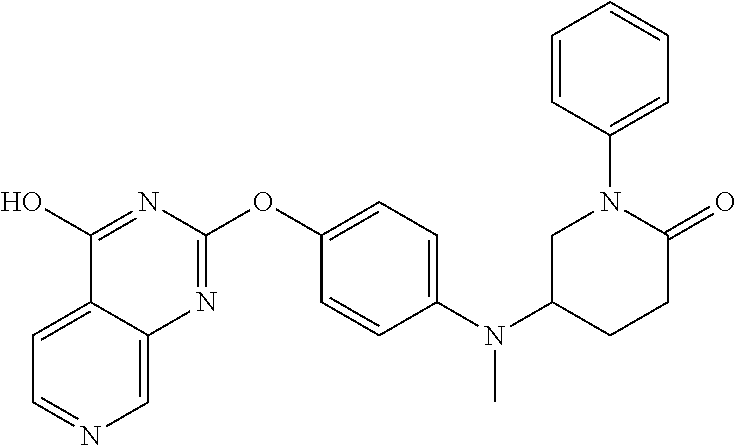
C00427
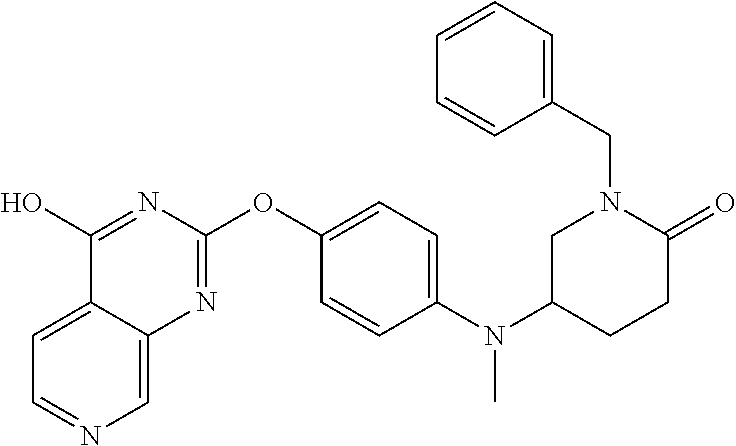
C00428
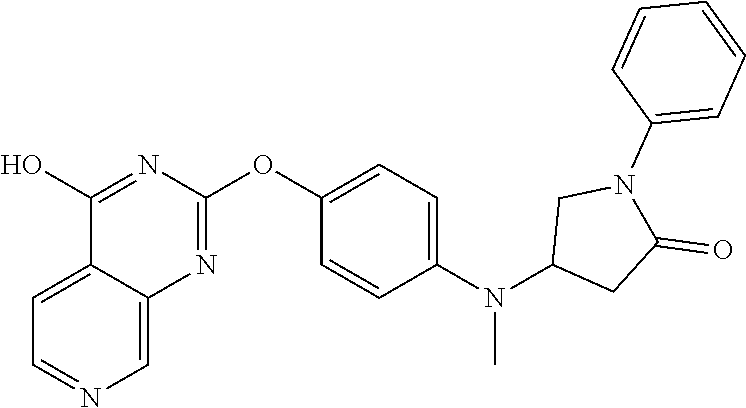
C00429
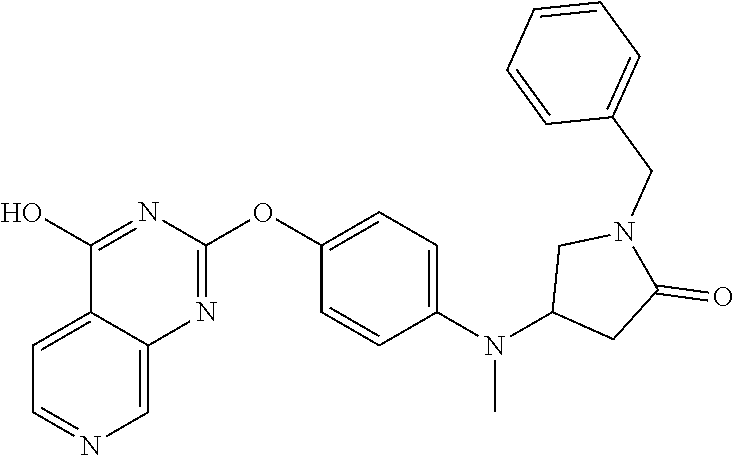
C00430
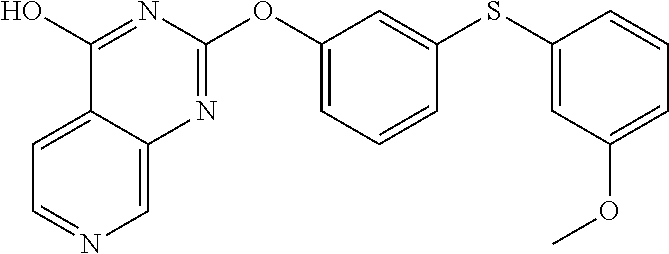
C00431
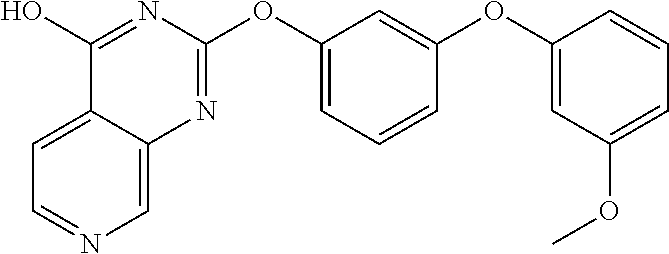
C00432
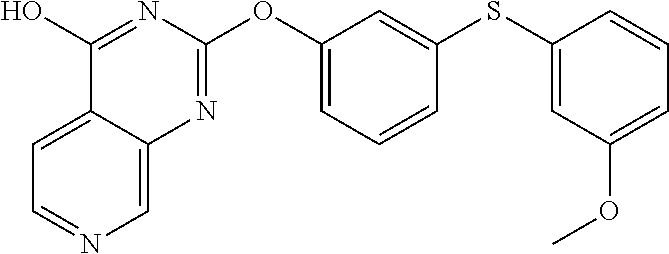
C00433
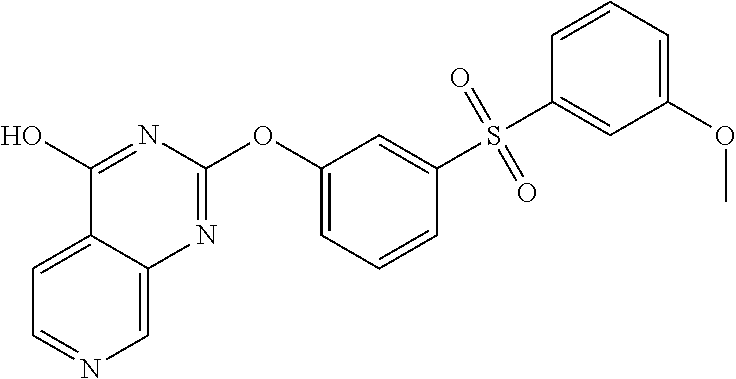
C00434
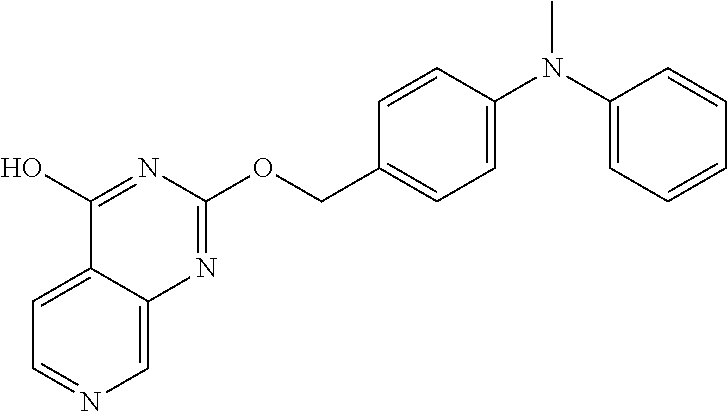
C00435
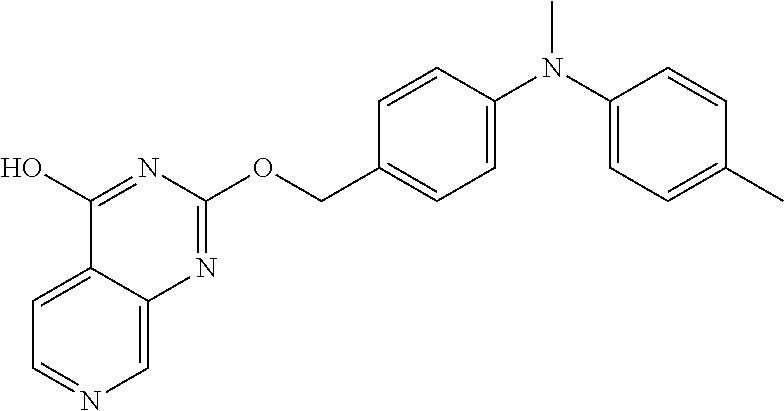
C00436
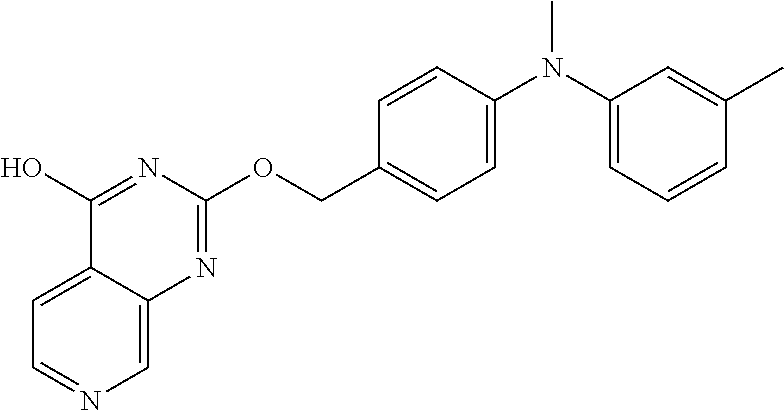
C00437
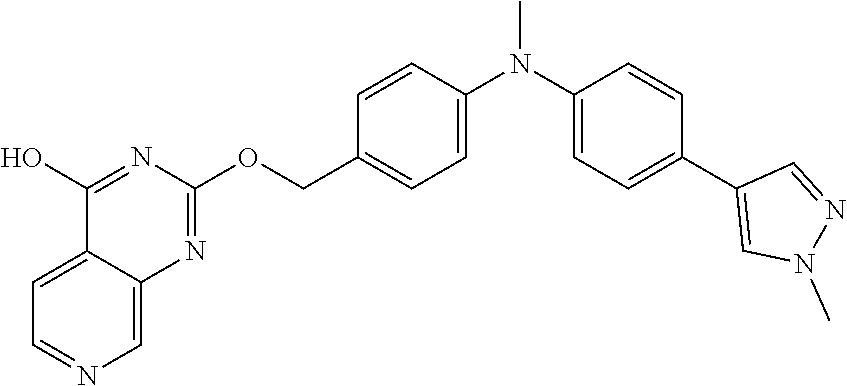
C00438
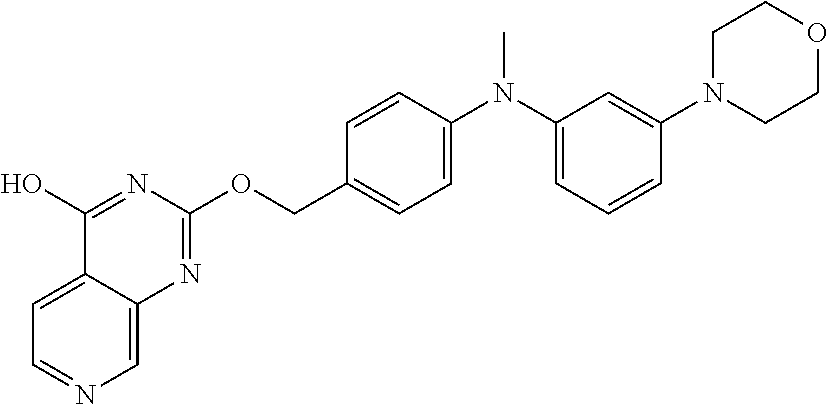
C00439
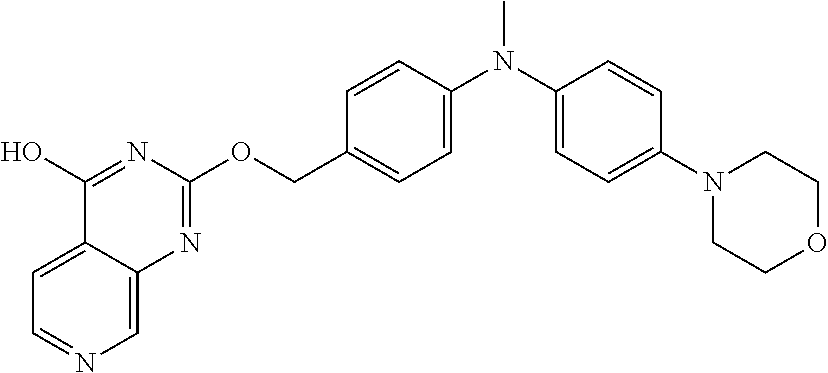
C00440
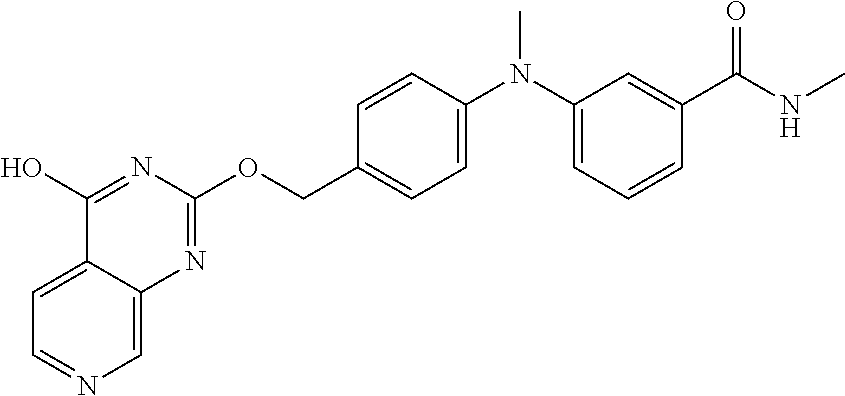
C00441
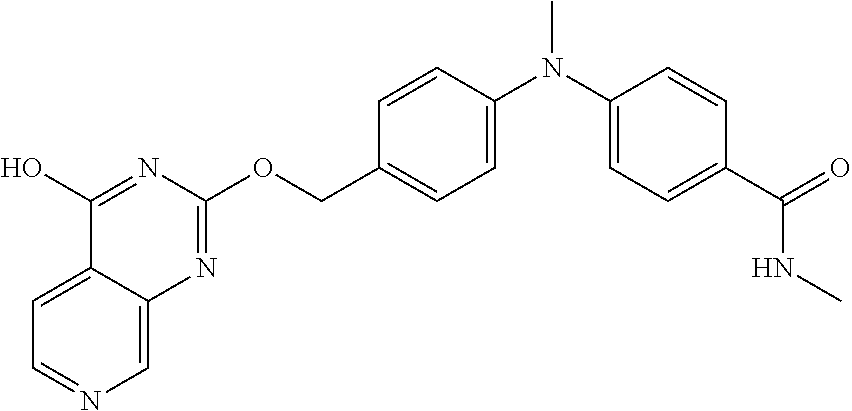
C00442
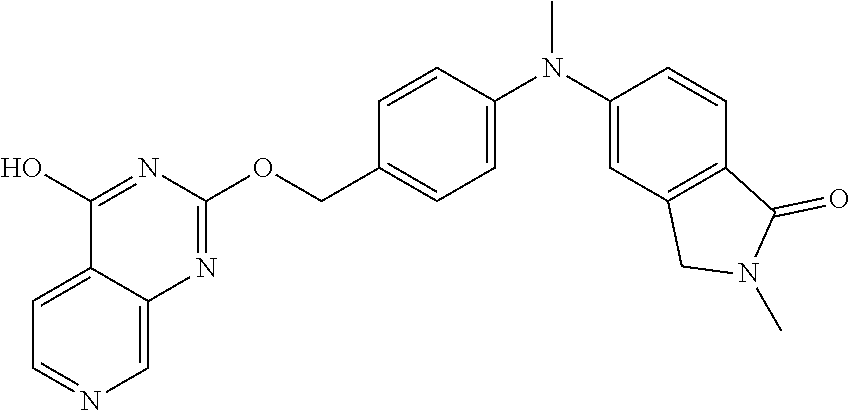
C00443
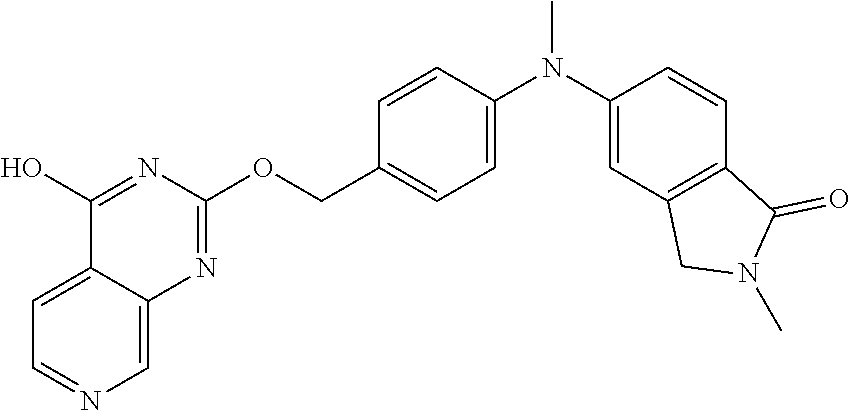
C00444
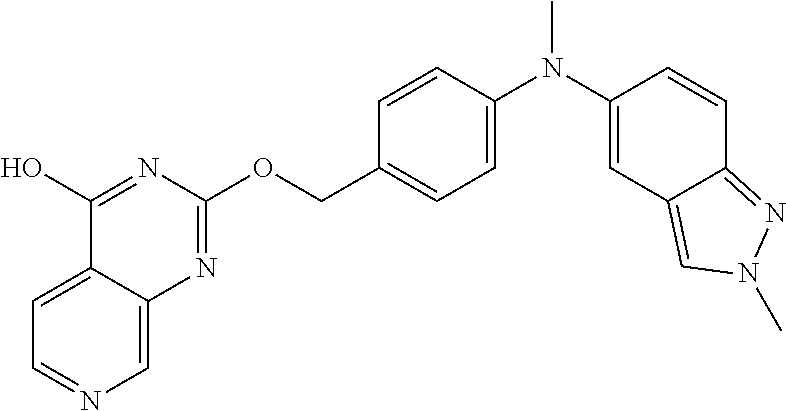
C00445
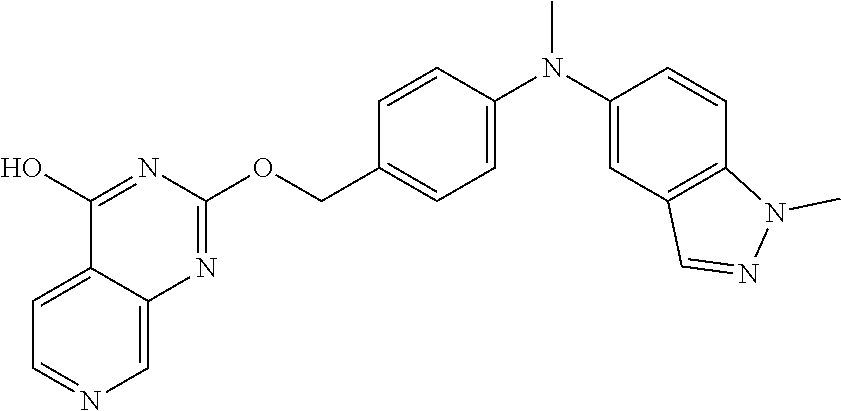
C00446
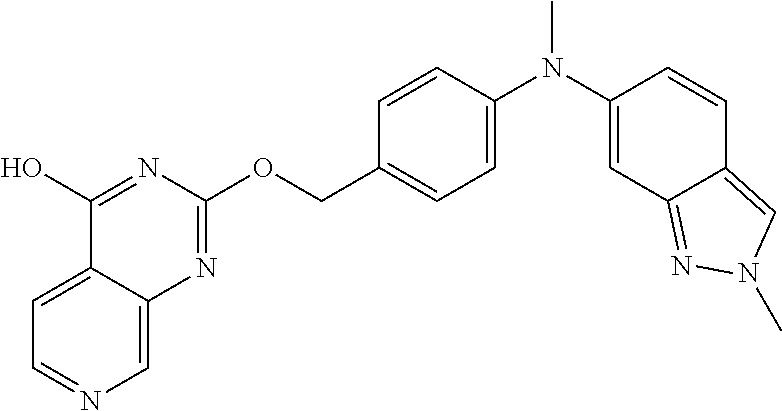
C00447
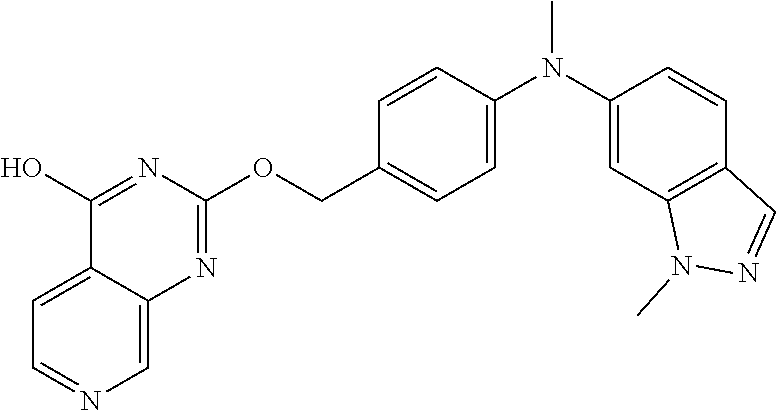
C00448
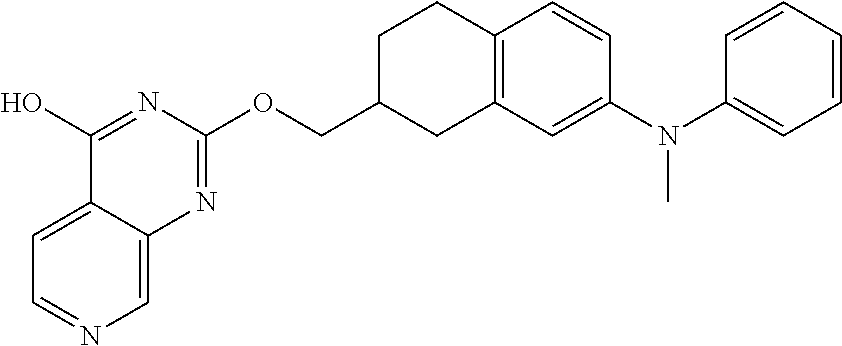
C00449
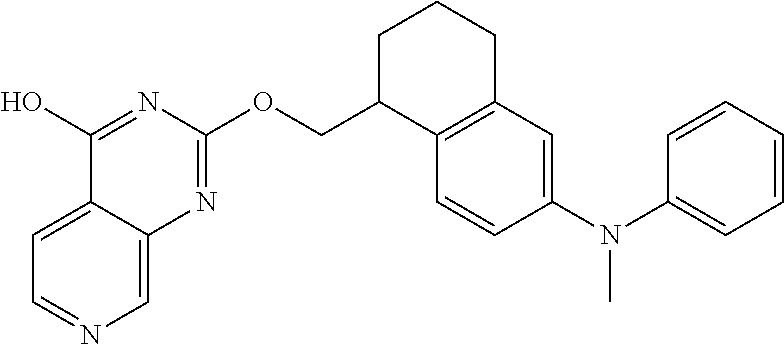
C00450
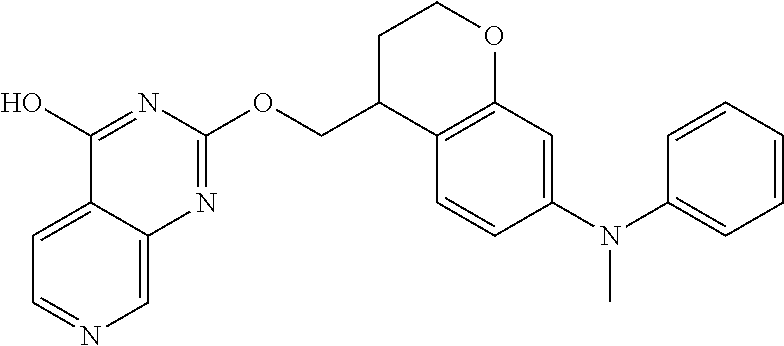
C00451
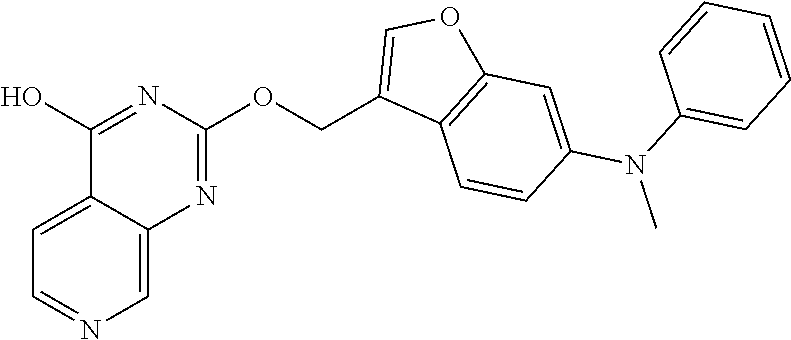
C00452
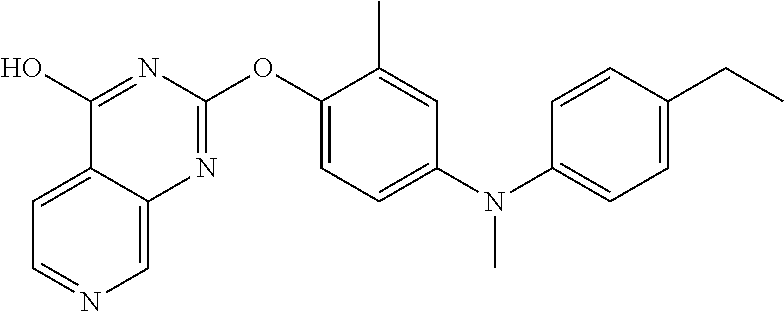
C00453

C00454
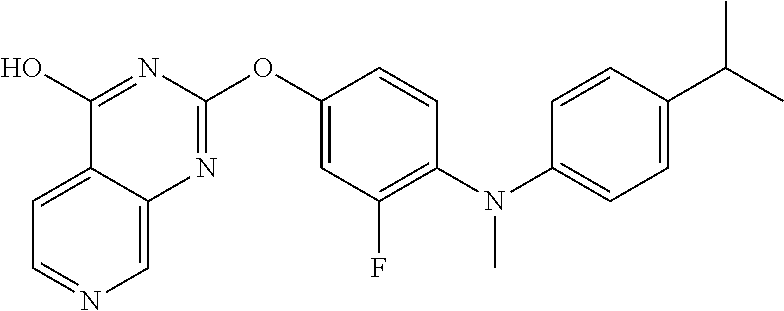
C00455

C00456
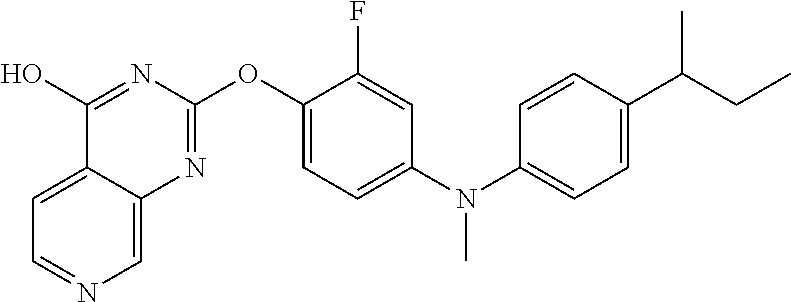
C00457
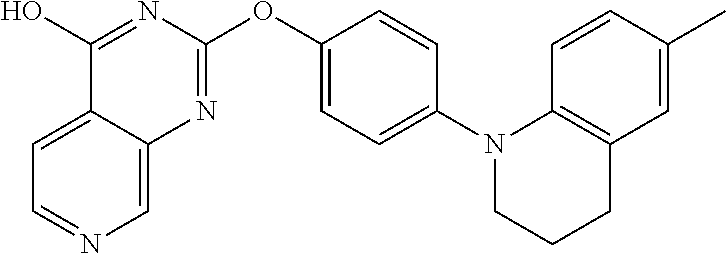
C00458

C00459
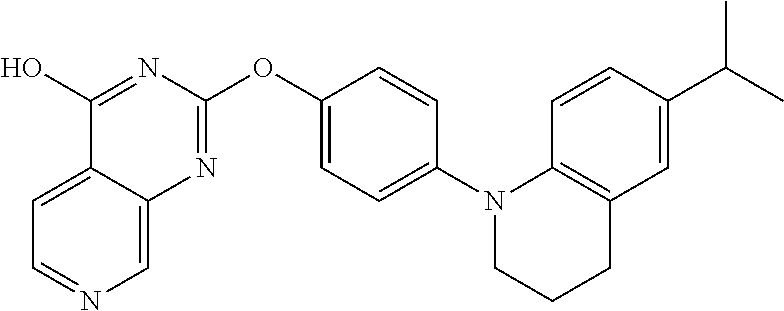
C00460

C00461
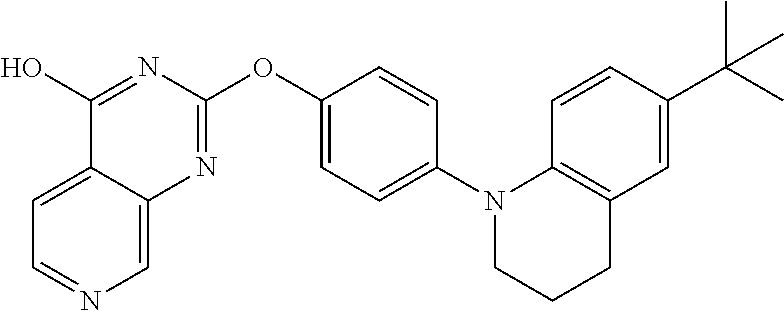
C00462

C00463

C00464

C00465
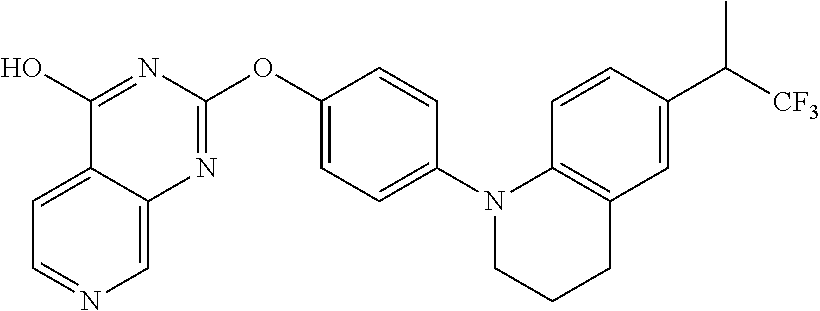
C00466

C00467
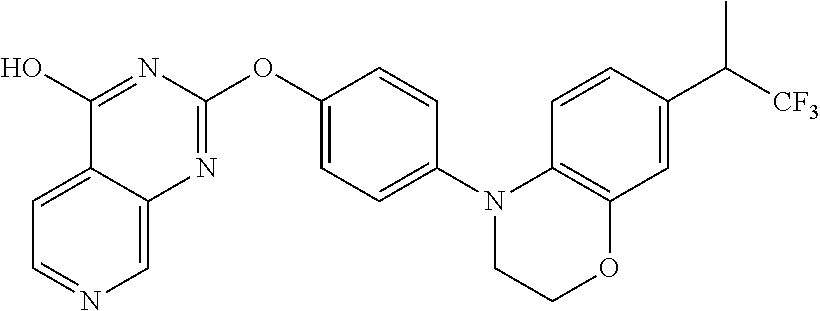
C00468
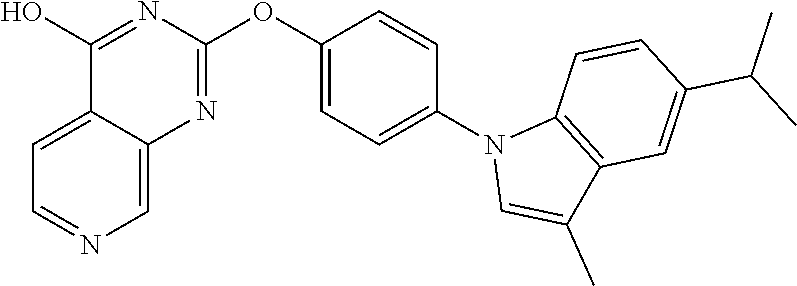
C00469
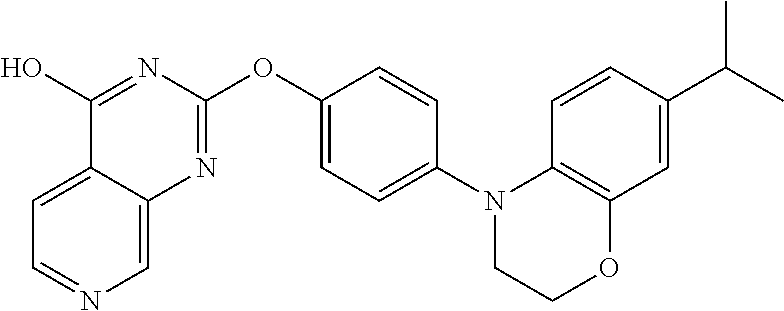
C00470

C00471
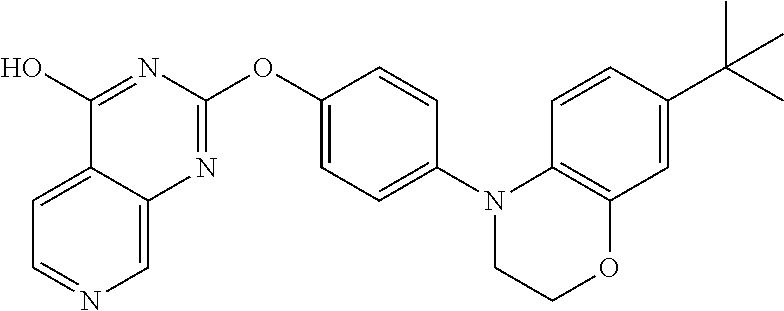
C00472

C00473
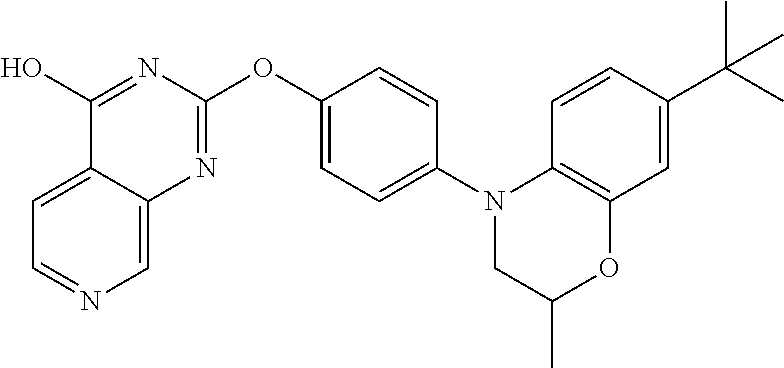
C00474

C00475
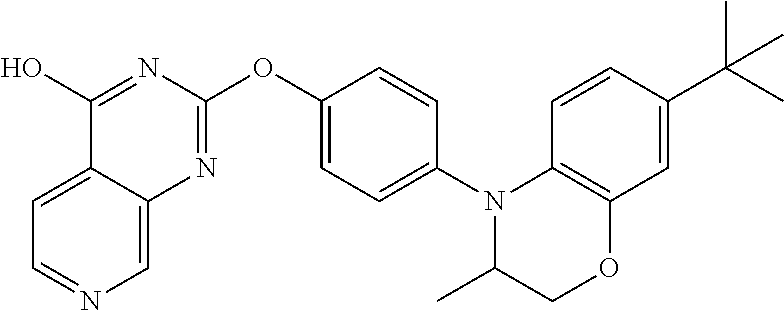
C00476

C00477

C00478

C00479

C00480

C00481

C00482
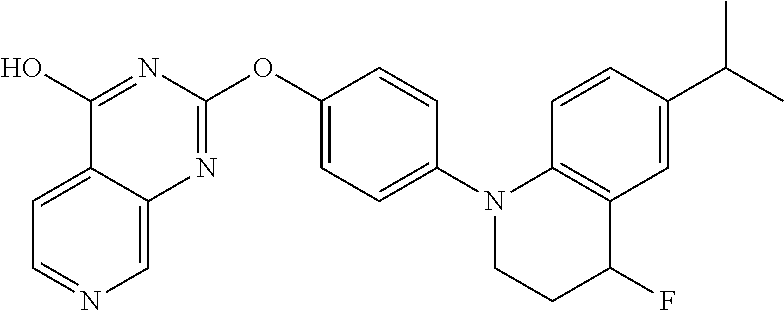
C00483
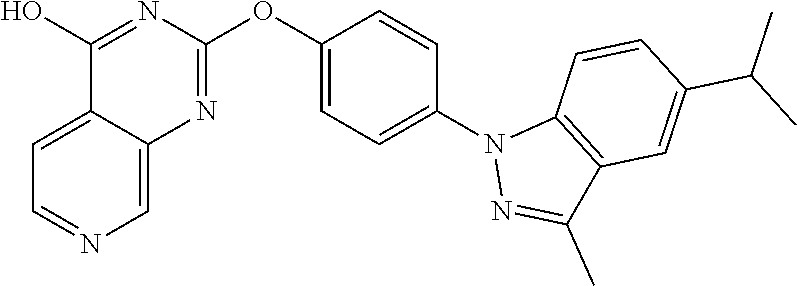
C00484
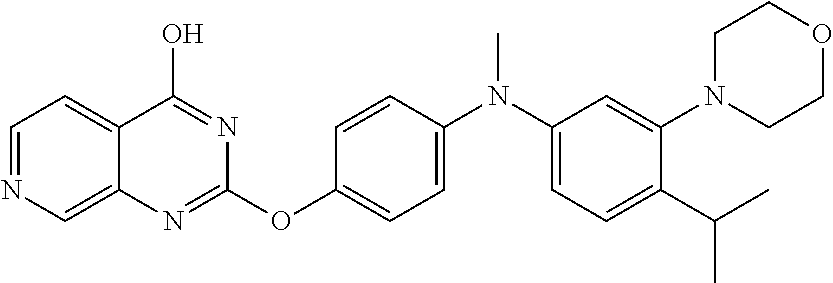
C00485

C00486
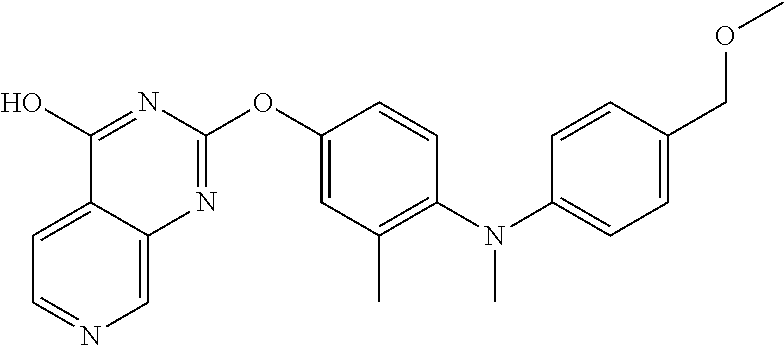
C00487

C00488
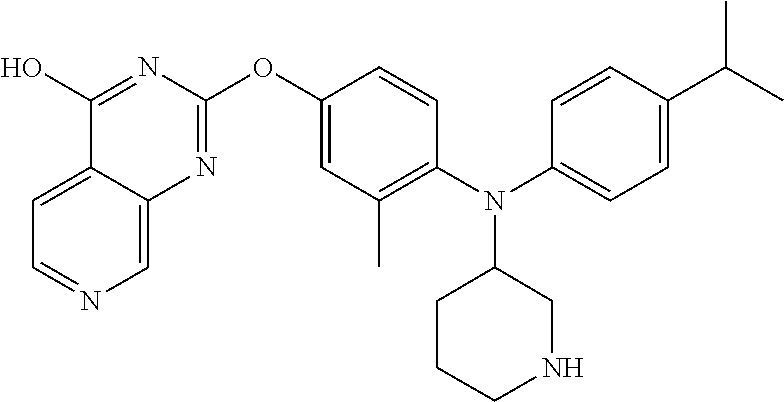
C00489
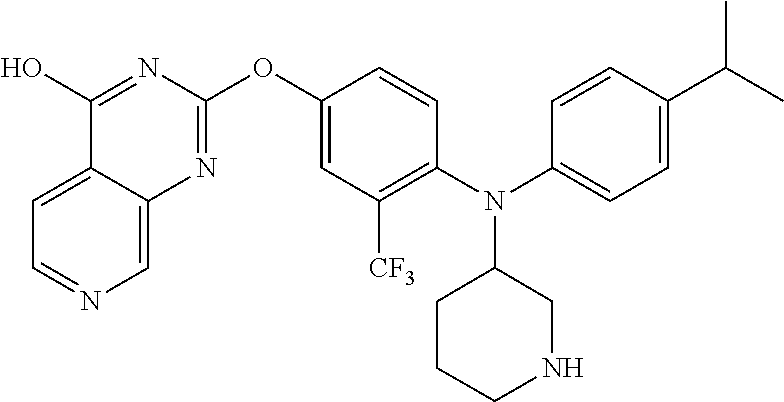
C00490
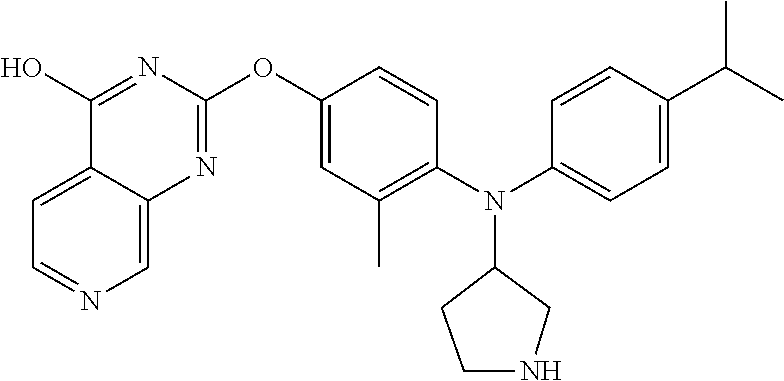
C00491
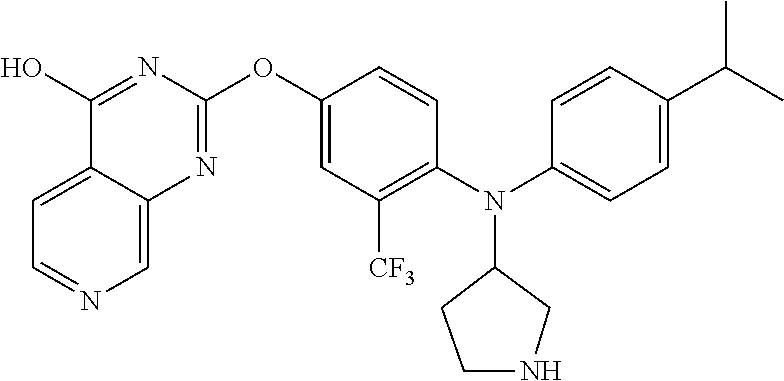
C00492
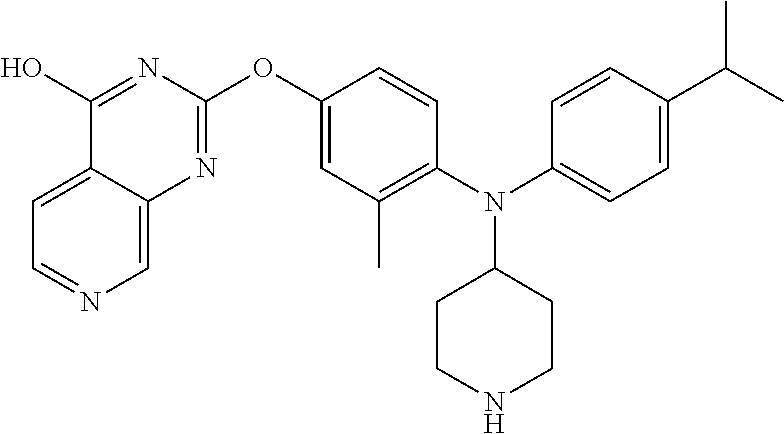
C00493
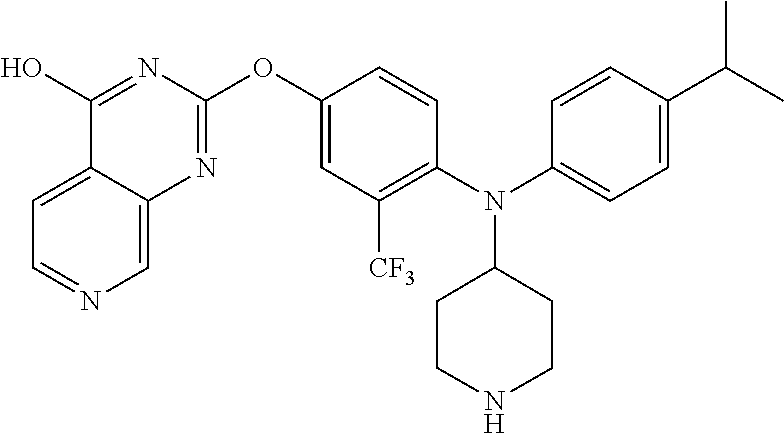
C00494
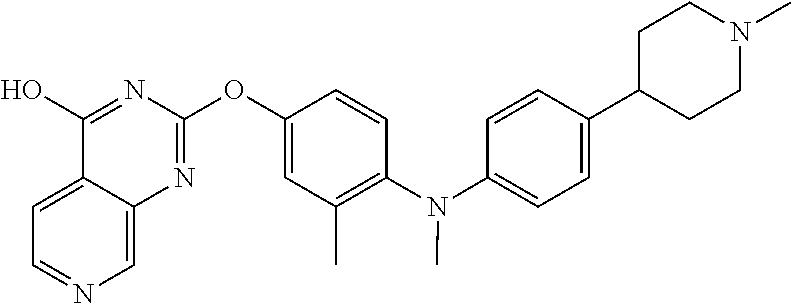
C00495

C00496
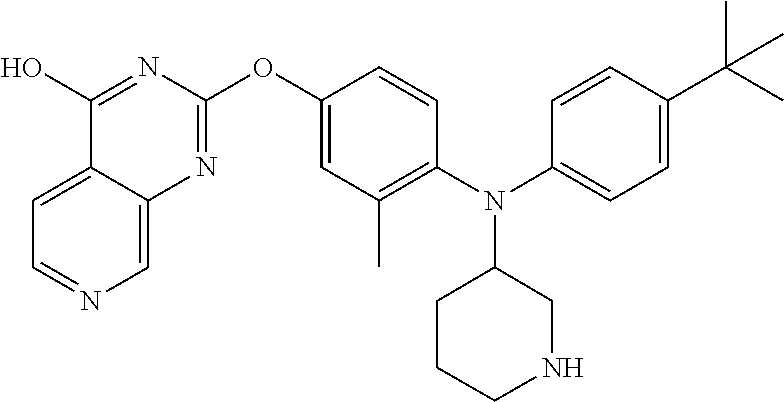
C00497
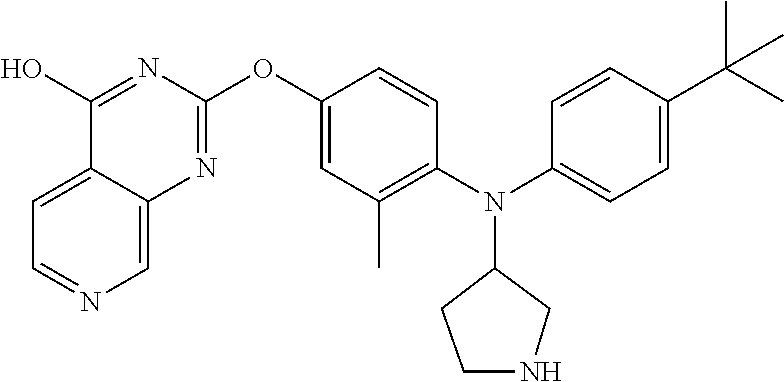
C00498
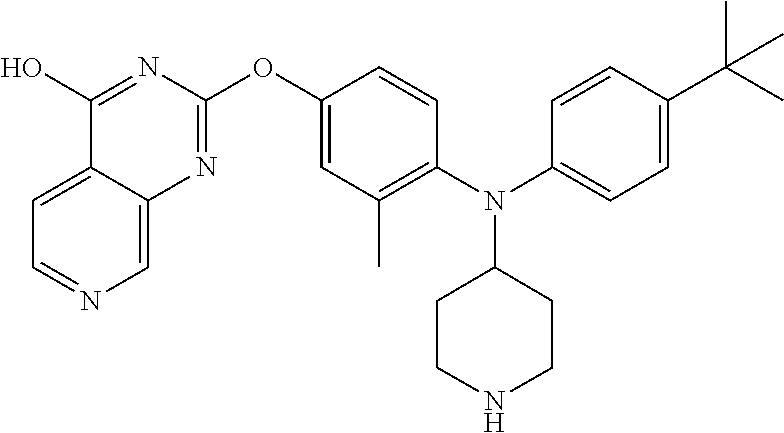
C00499
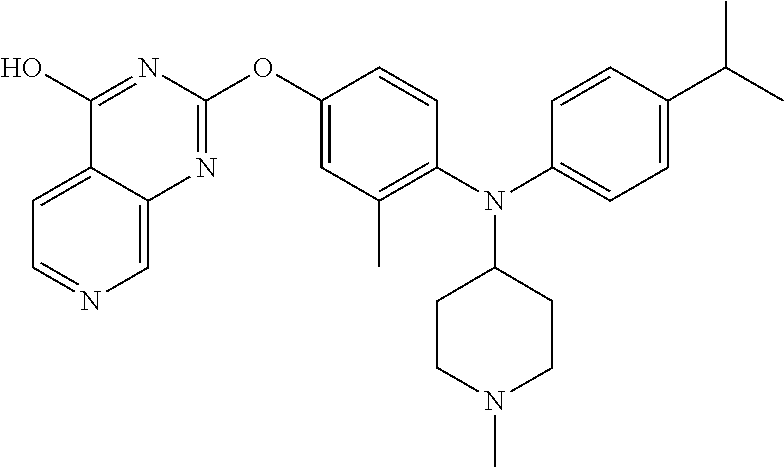
C00500
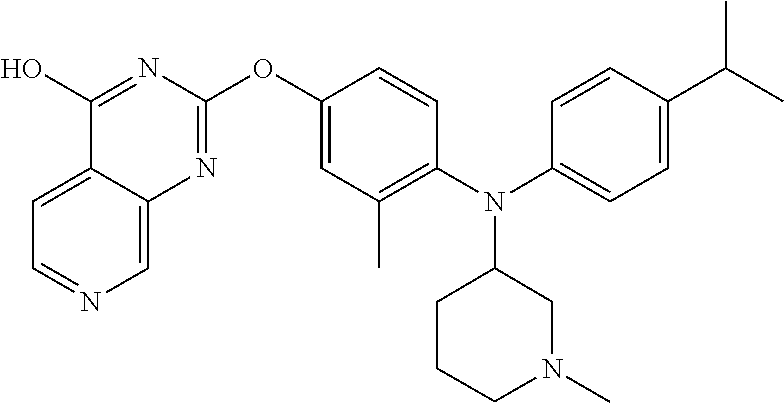
C00501
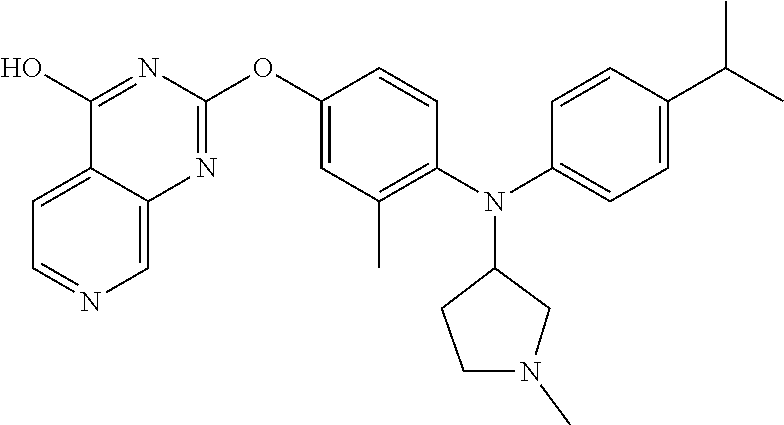
C00502
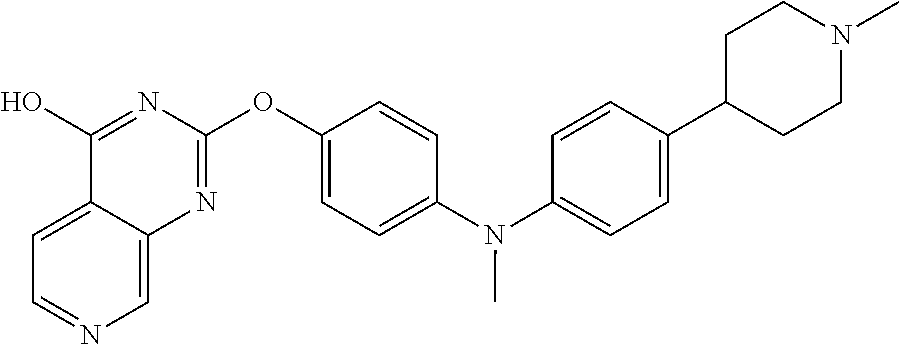
C00503
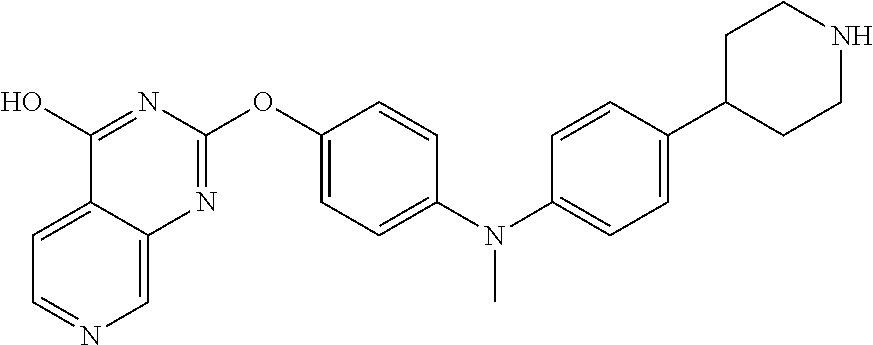
C00504
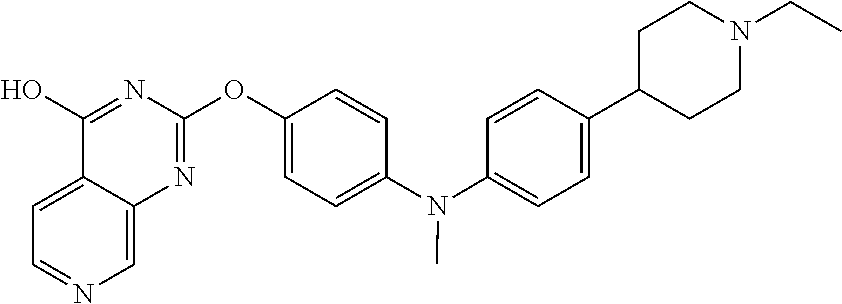
C00505
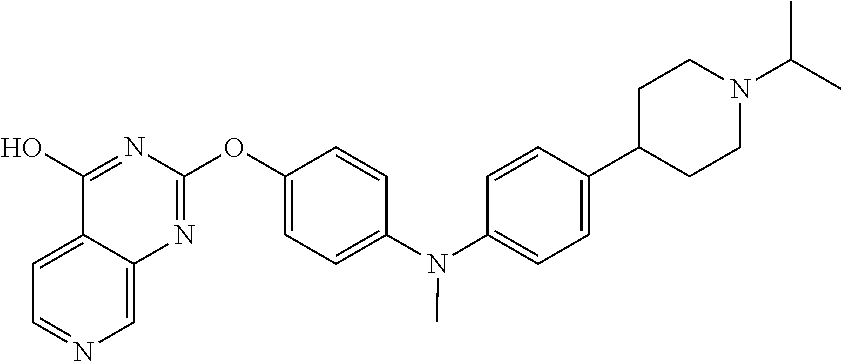
C00506

C00507

C00508

C00509

C00510
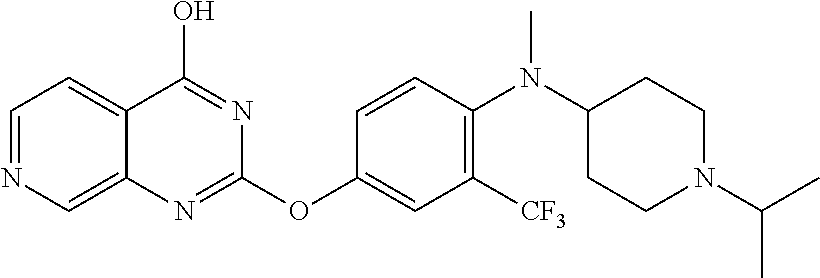
C00511

C00512
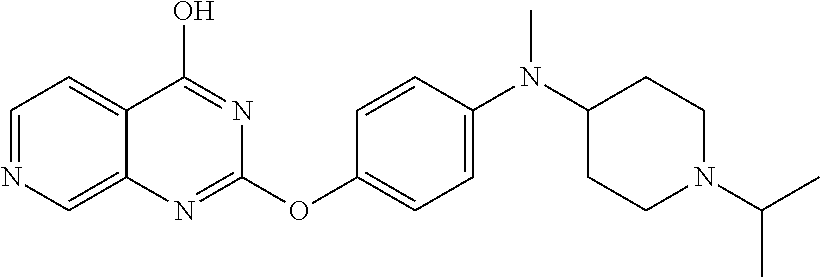
C00513
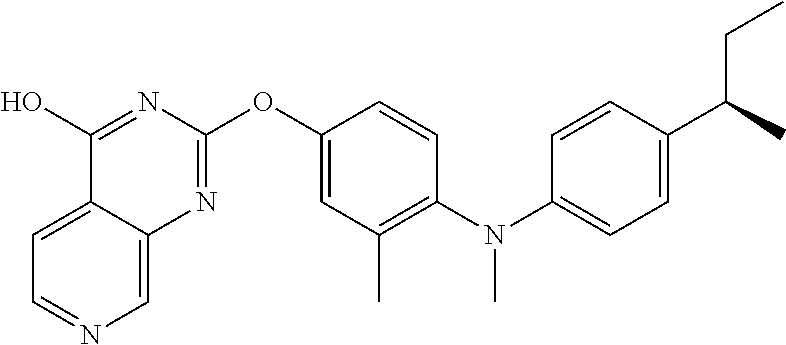
C00514
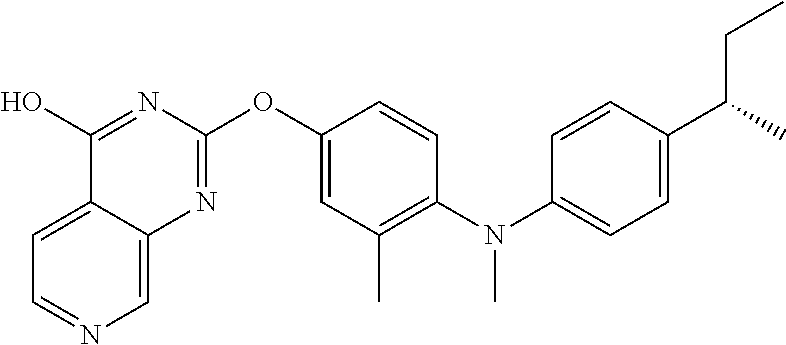
C00515
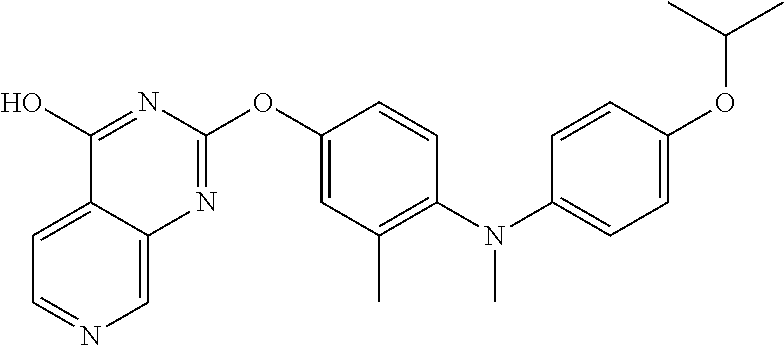
C00516
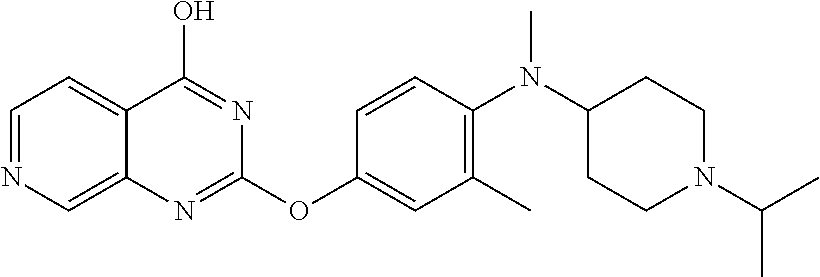
C00517
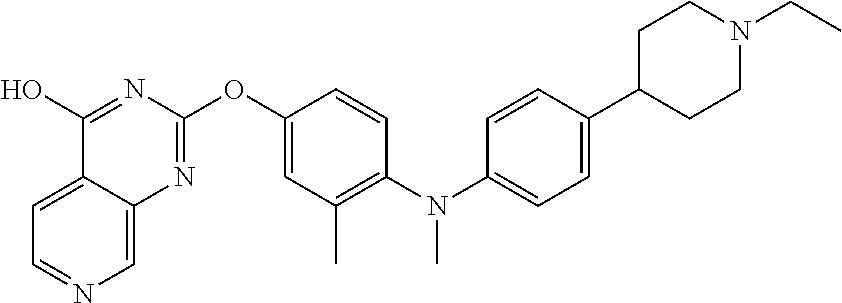
C00518
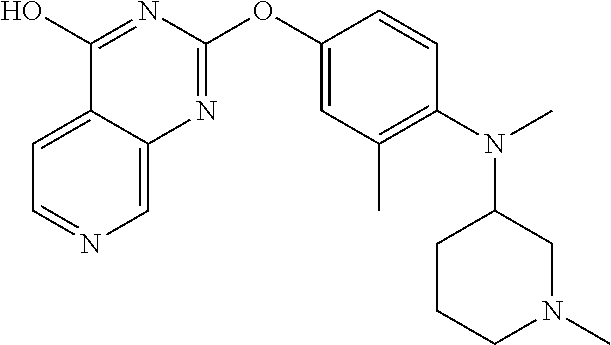
C00519
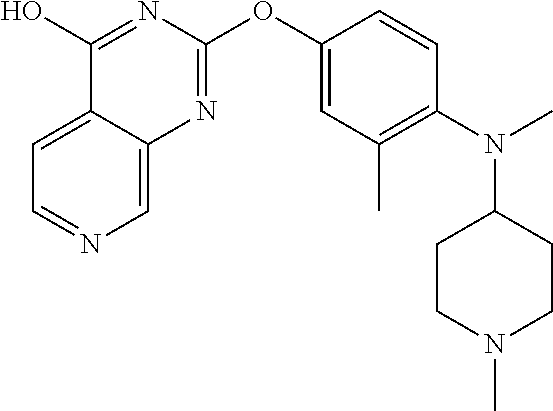
C00520
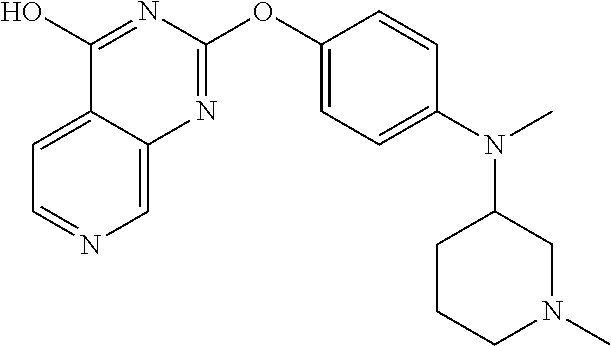
C00521
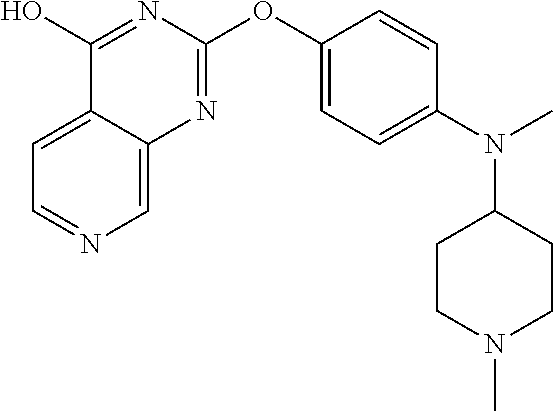
C00522
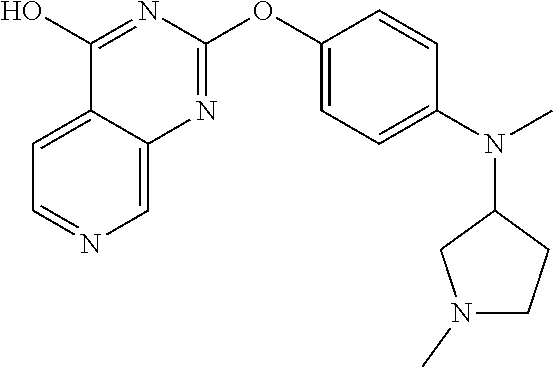
C00523
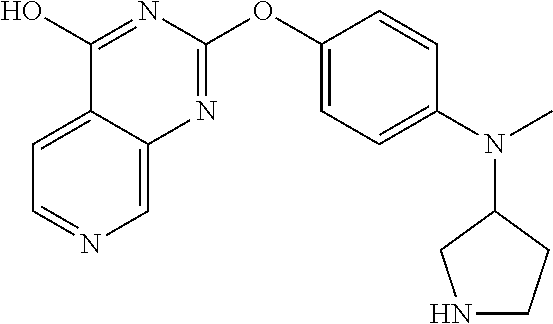
C00524
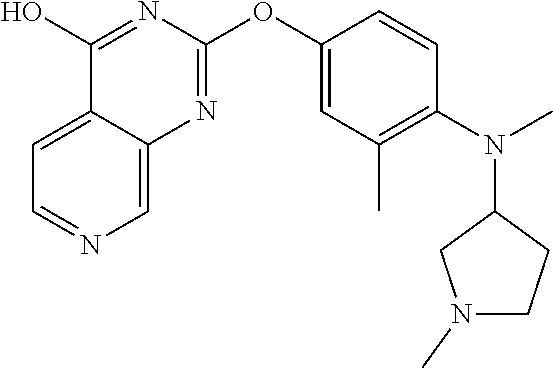
C00525
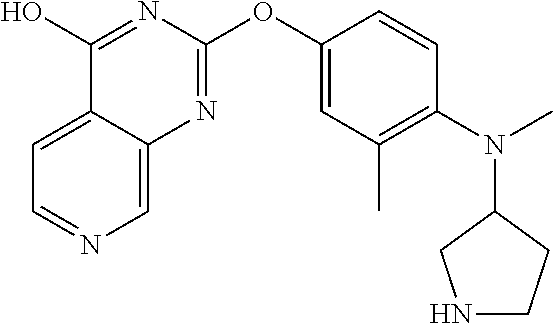
C00526
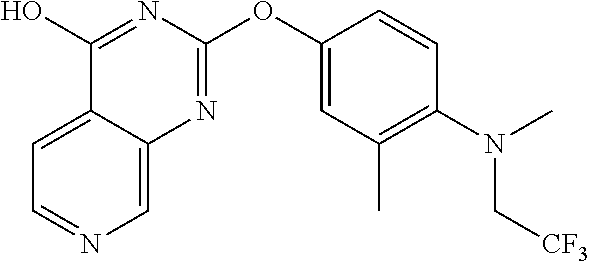
C00527
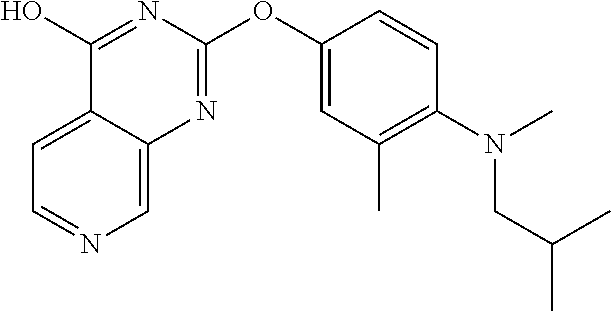
C00528
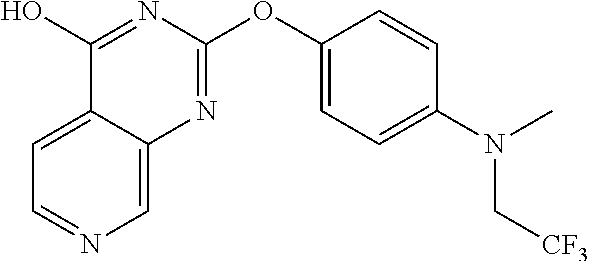
C00529
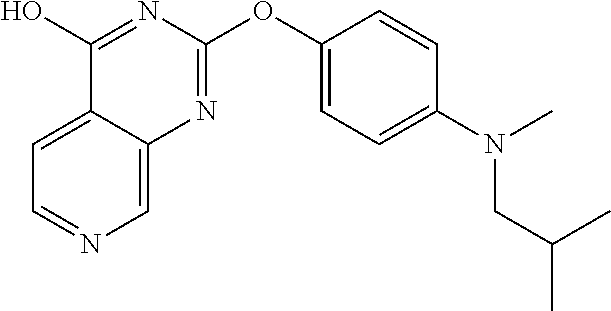
C00530

C00531
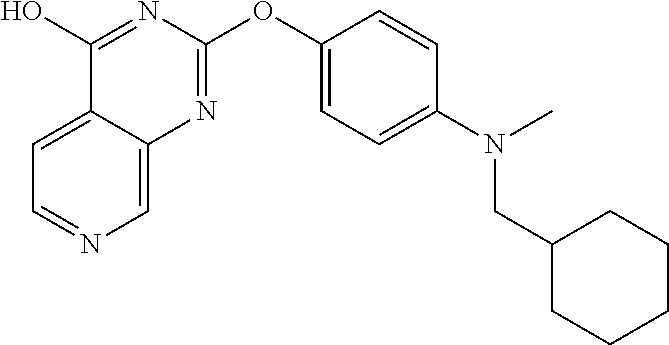
C00532
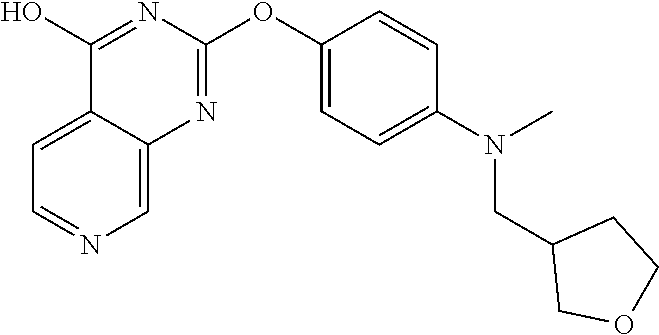
C00533
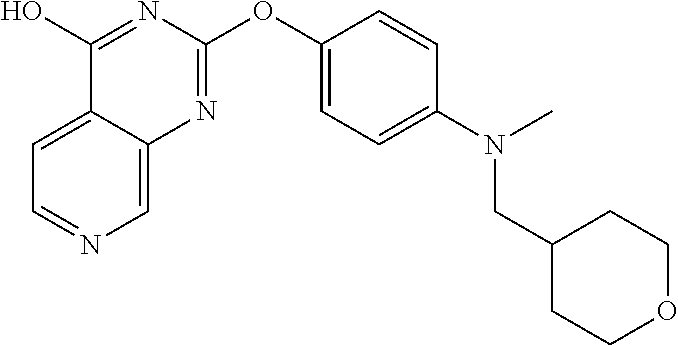
C00534
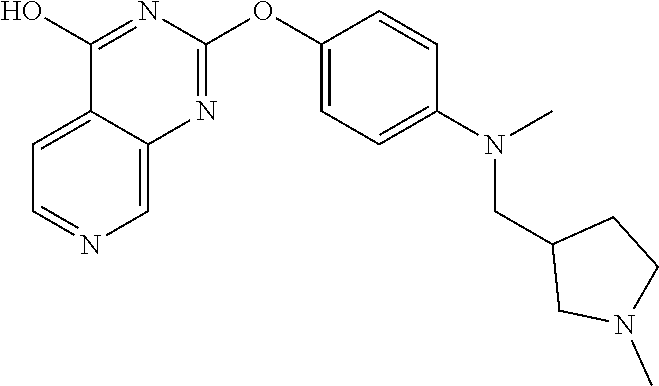
C00535
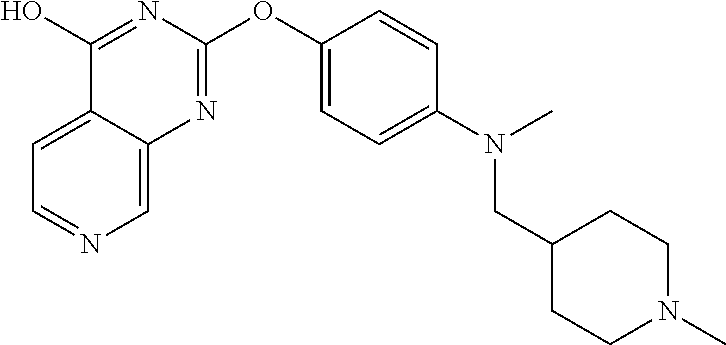
C00536
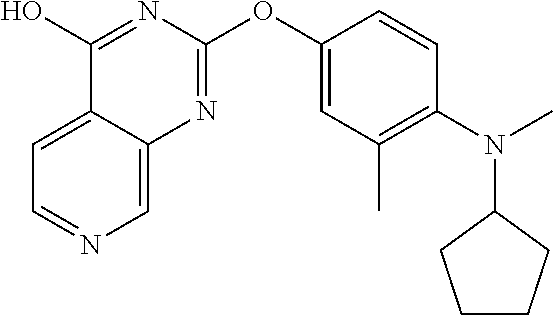
C00537
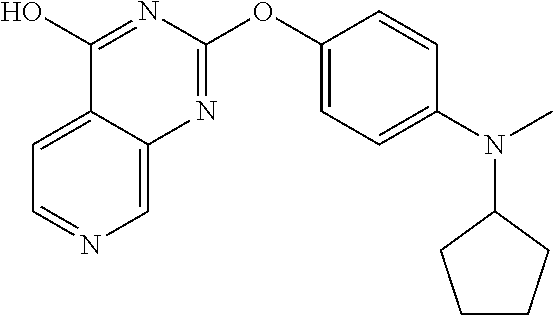
C00538
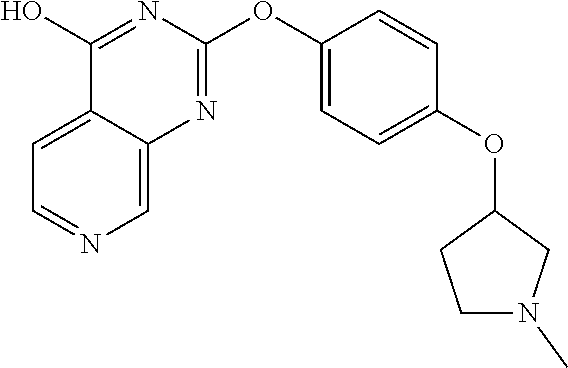
C00539
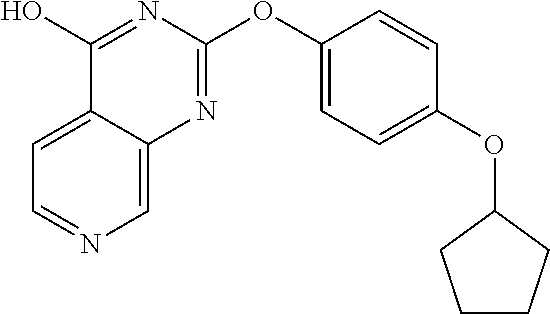
C00540
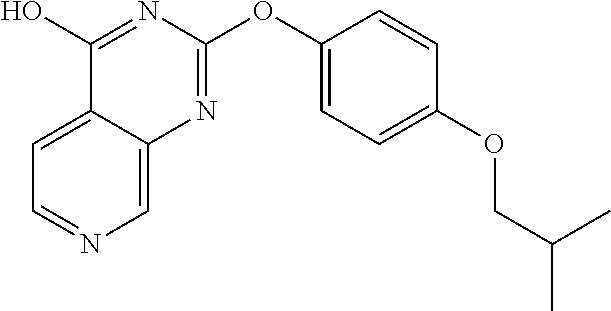
C00541
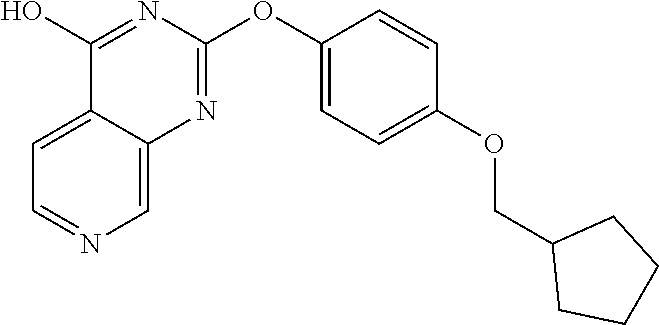
C00542
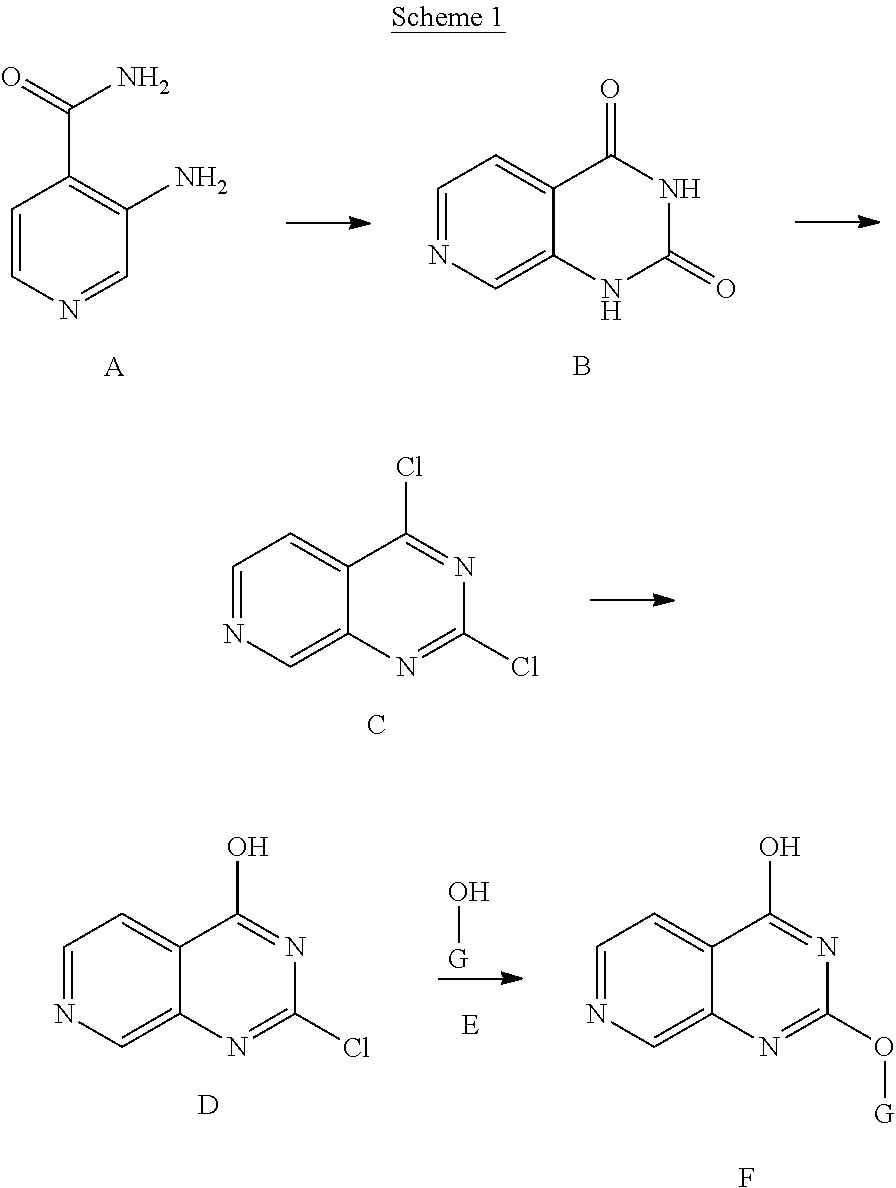
C00543
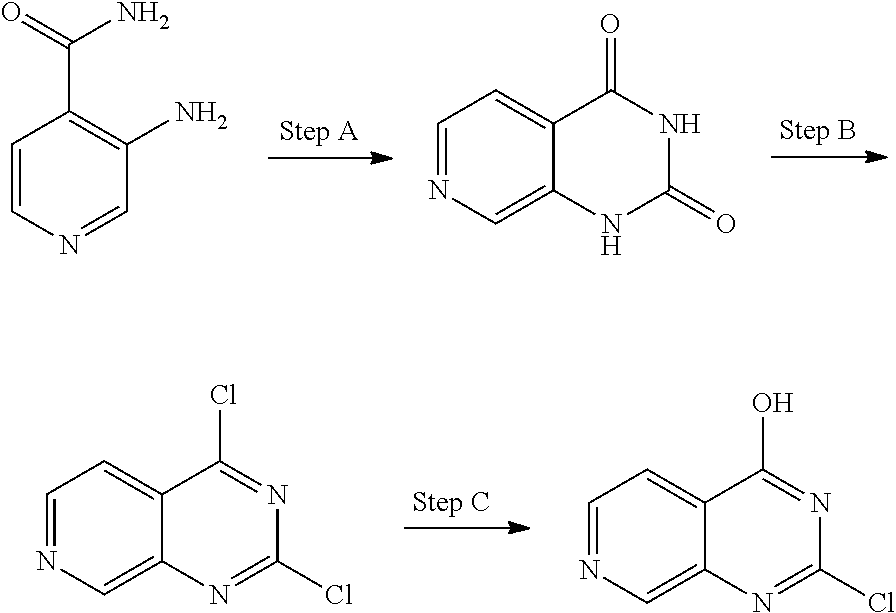
C00544
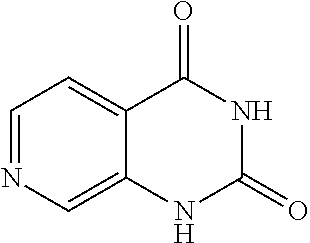
C00545
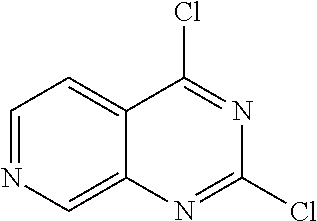
C00546

C00547
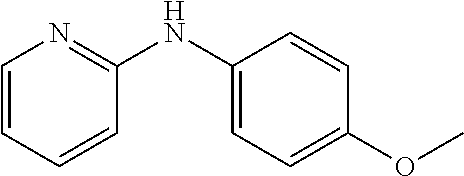
C00548
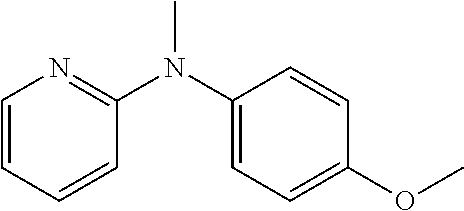
C00549
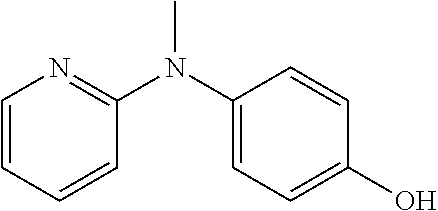
C00550

C00551
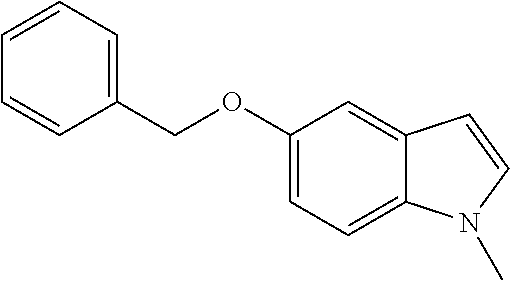
C00552
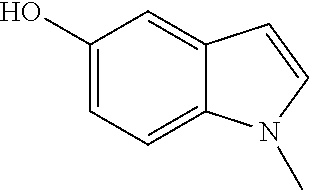
C00553
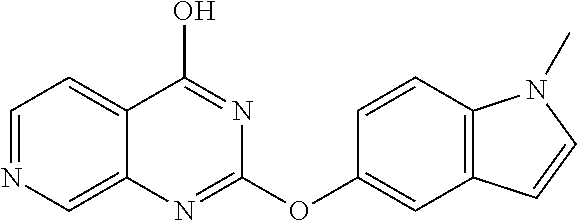
C00554
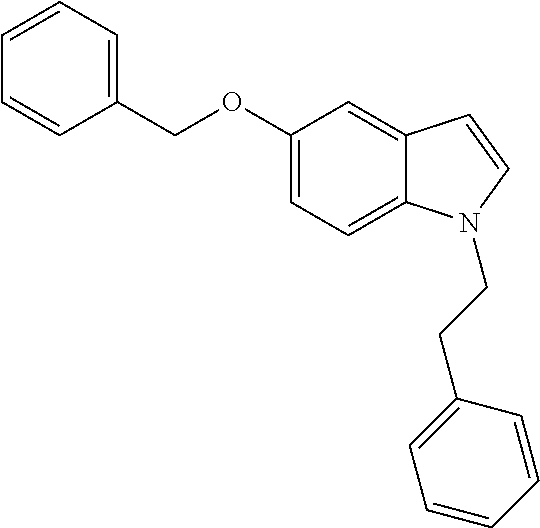
C00555
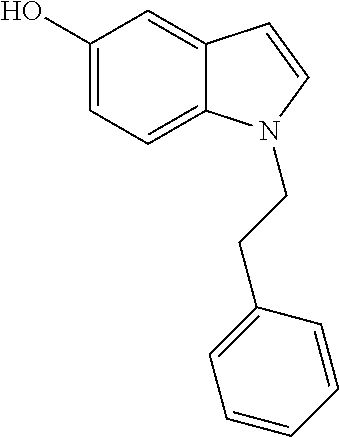
C00556
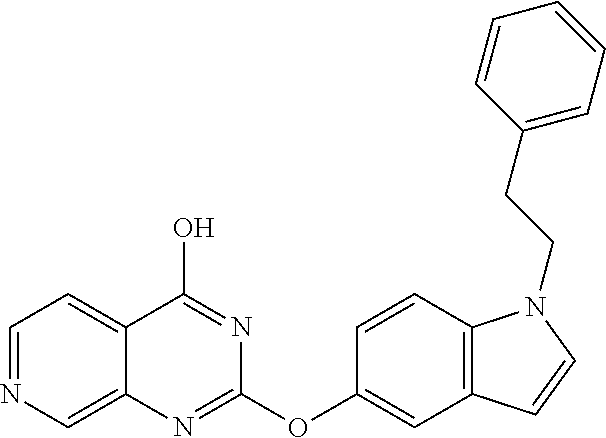
C00557
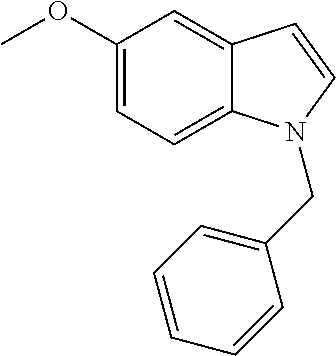
C00558
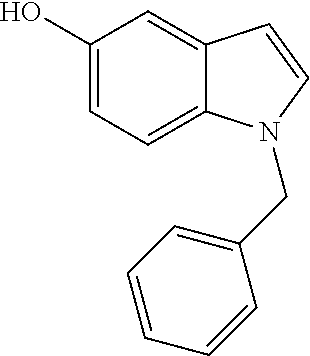
C00559
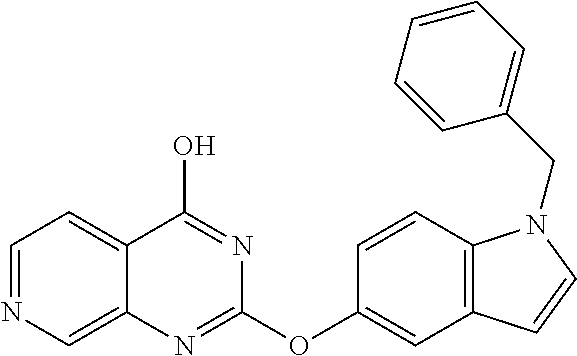
C00560
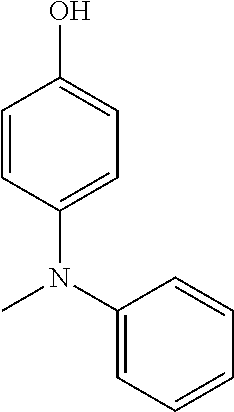
C00561
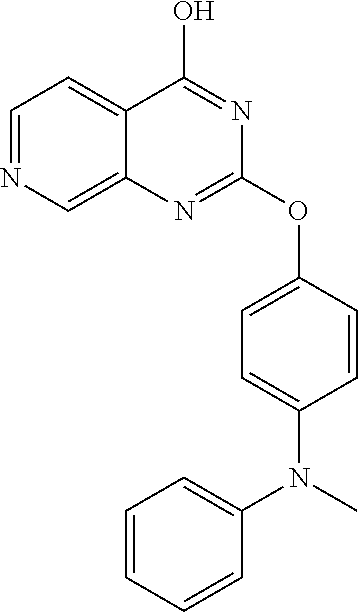
C00562
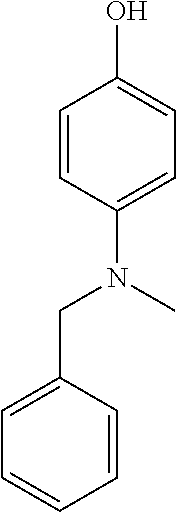
C00563
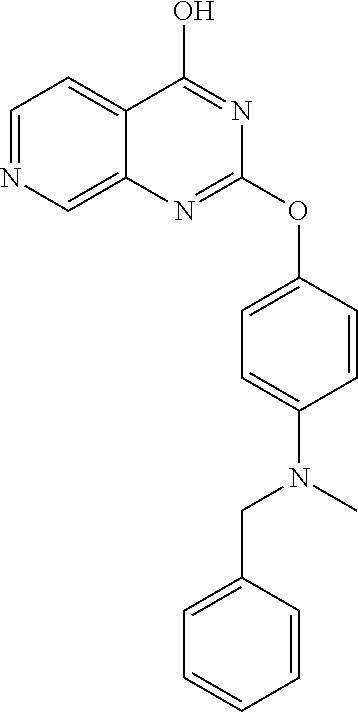
C00564
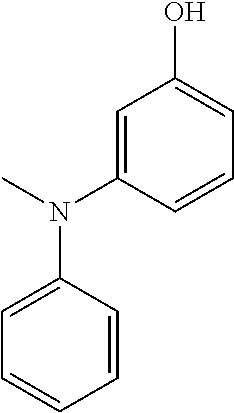
C00565
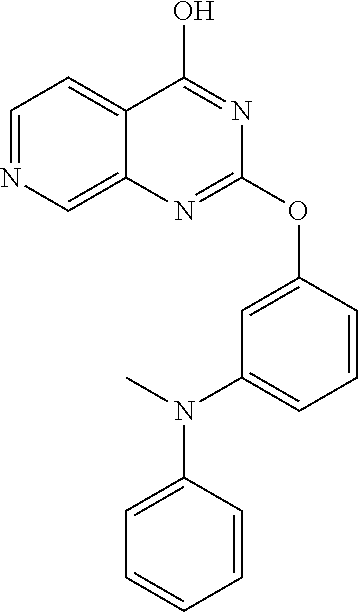
C00566
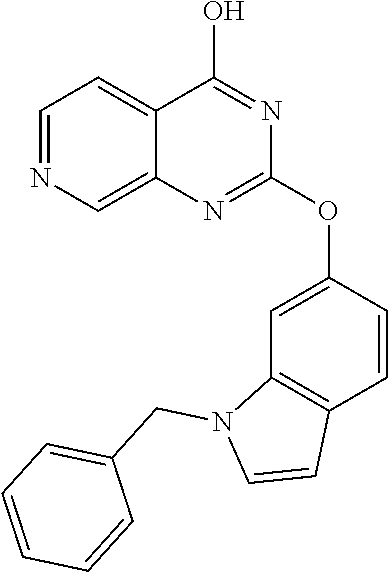
C00567
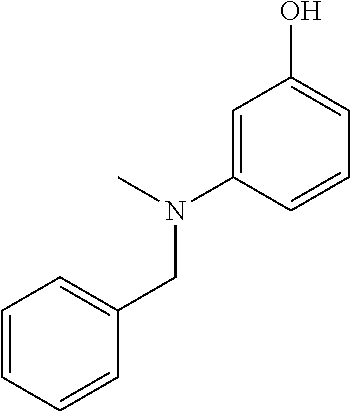
C00568
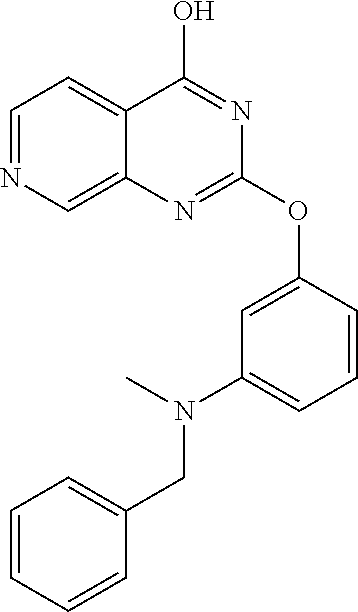
C00569
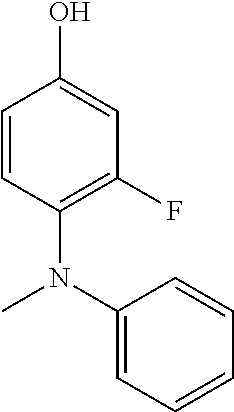
C00570
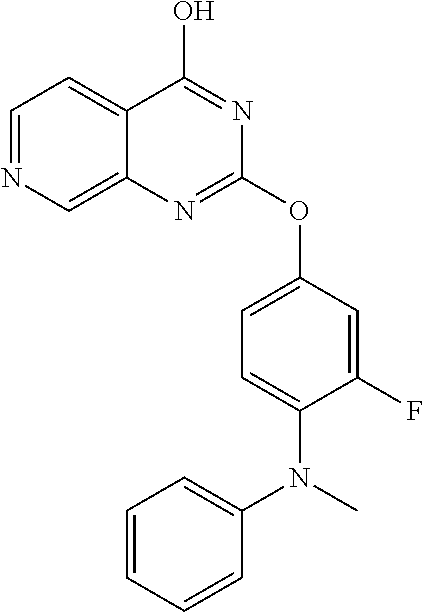
C00571
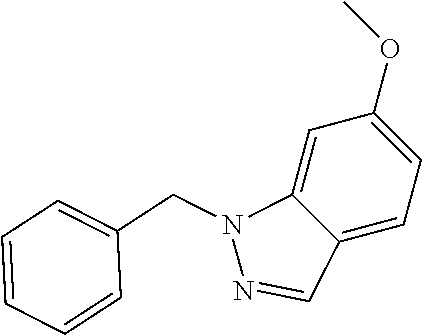
C00572
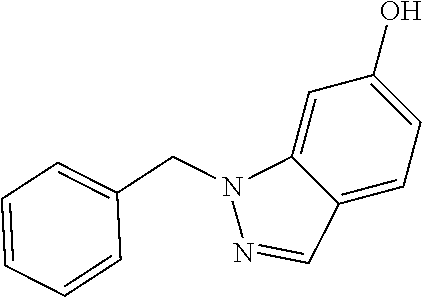
C00573
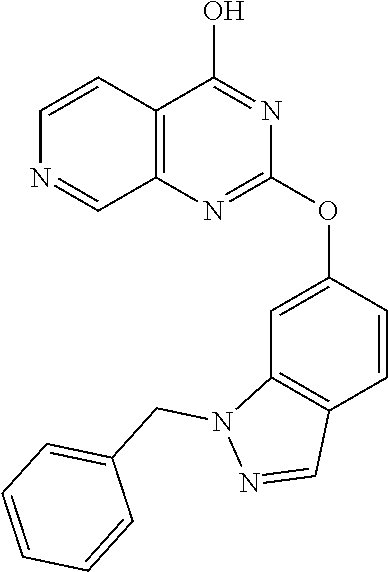
C00574
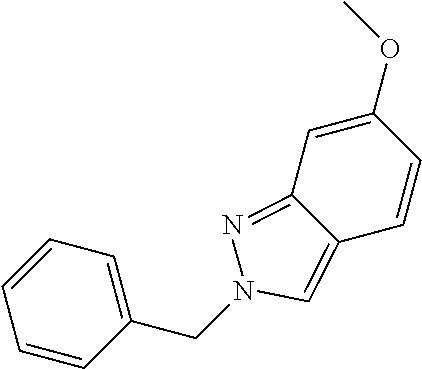
C00575
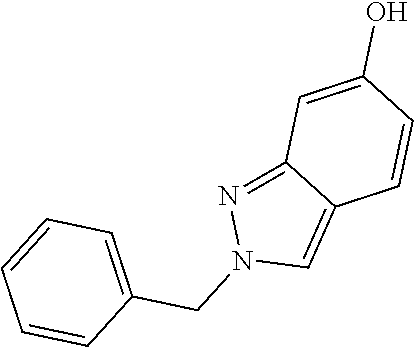
C00576
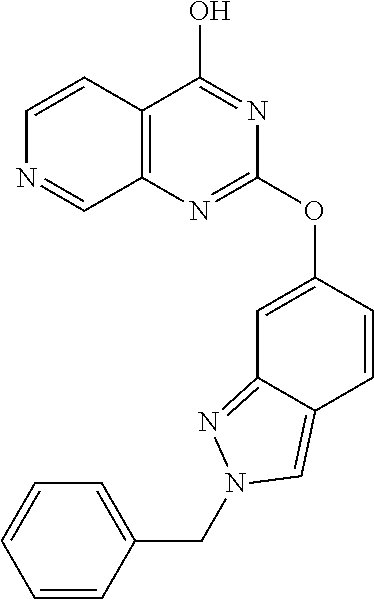
C00577
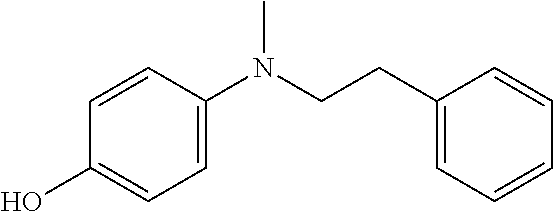
C00578

C00579
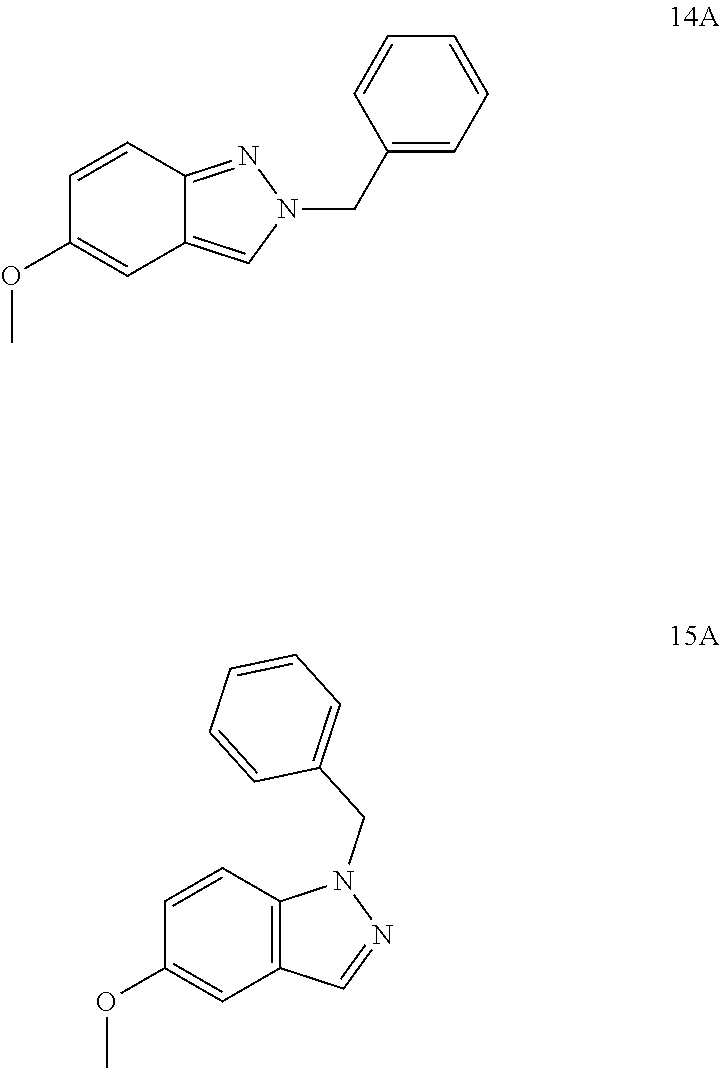
C00580
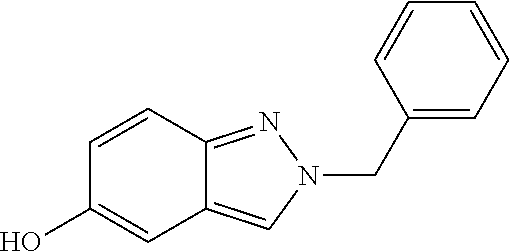
C00581

C00582
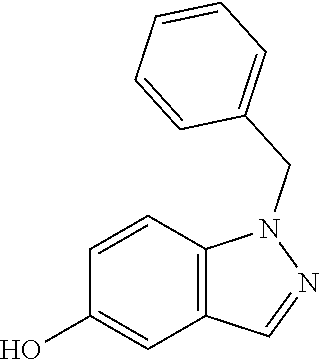
C00583
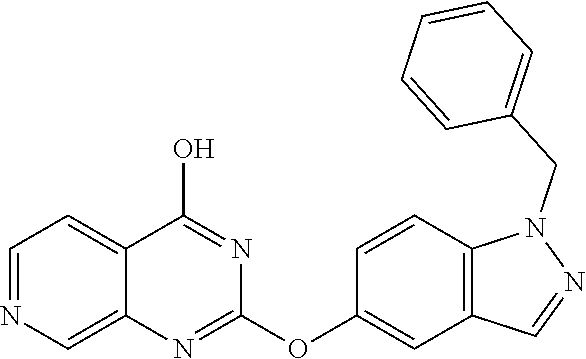
C00584
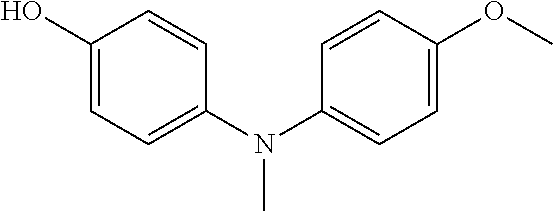
C00585

C00586
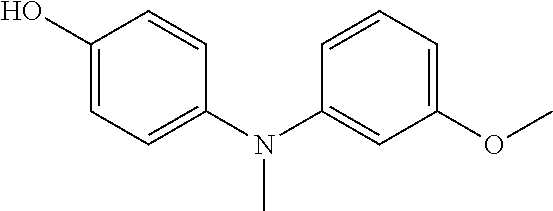
C00587

C00588

C00589
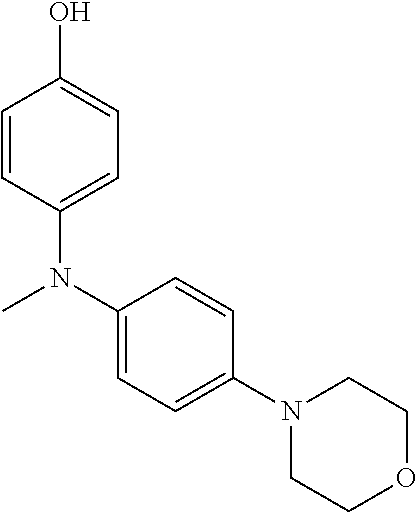
C00590
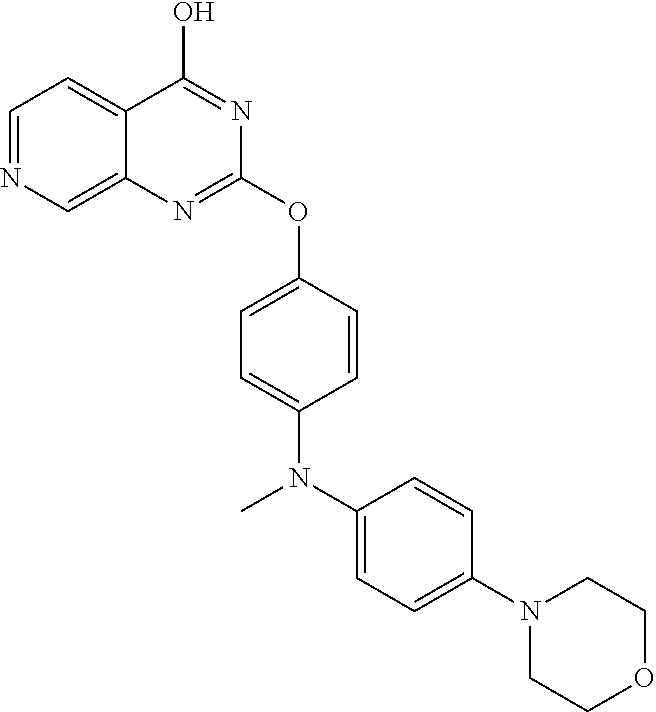
C00591
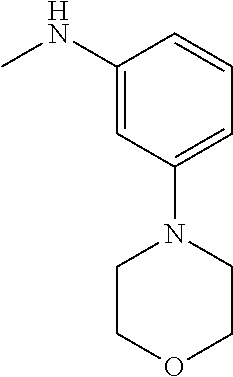
C00592
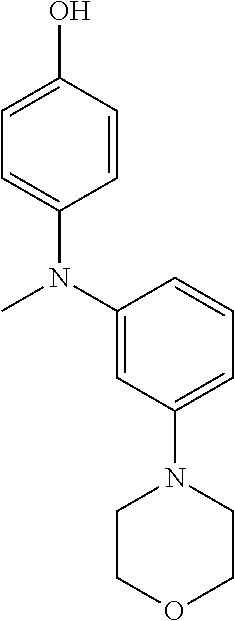
C00593
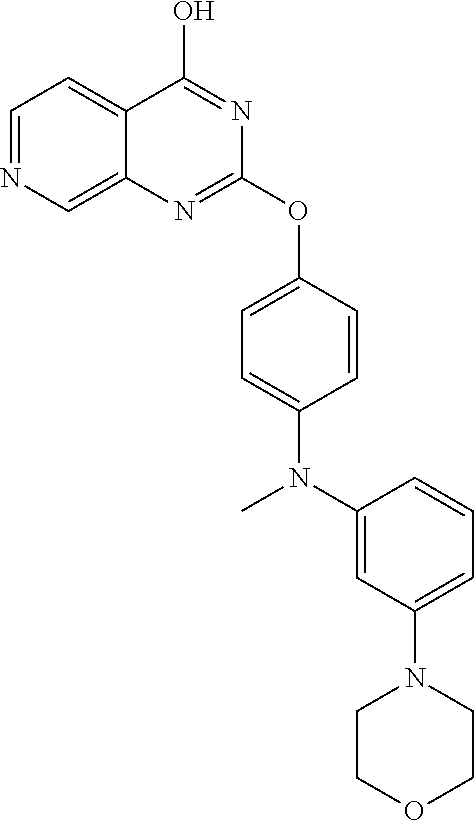
C00594
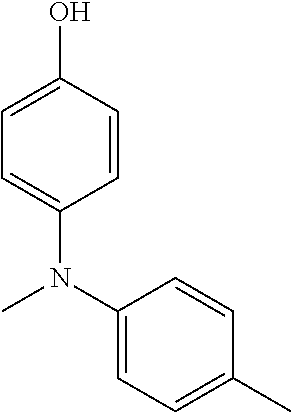
C00595
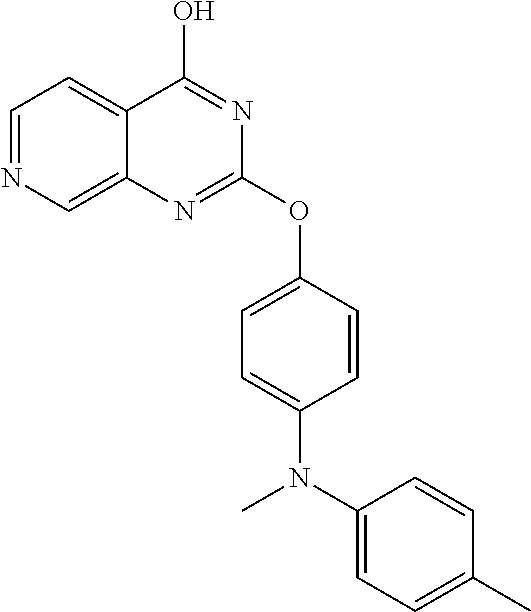
C00596
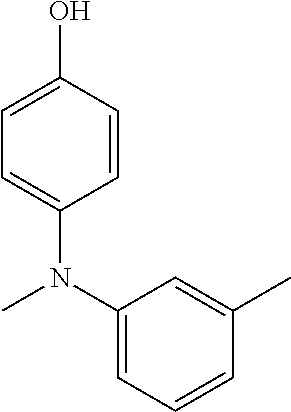
C00597

C00598
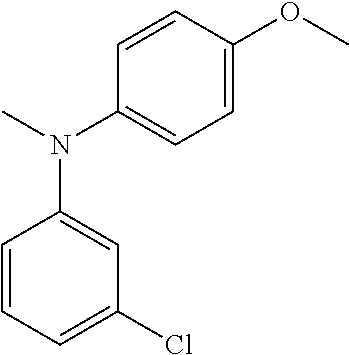
C00599
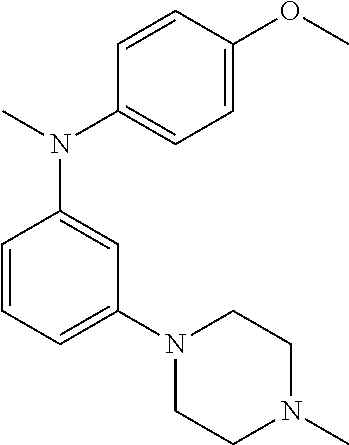
C00600
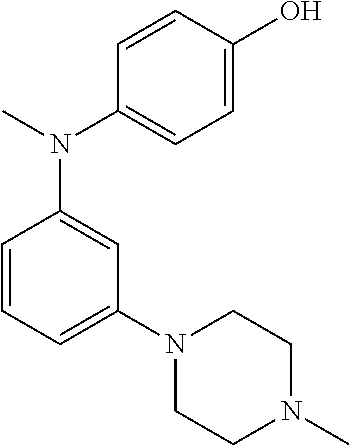
C00601

C00602
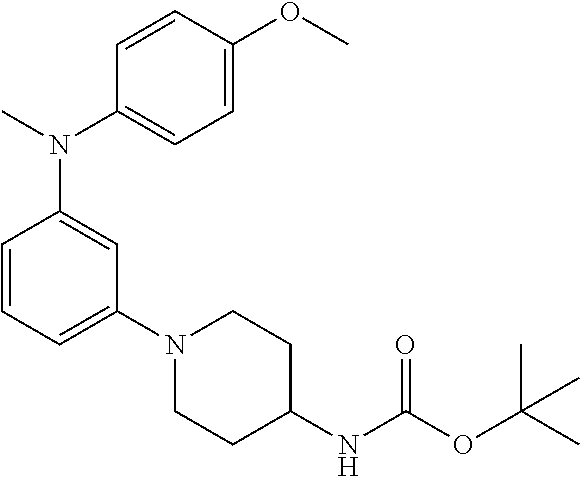
C00603
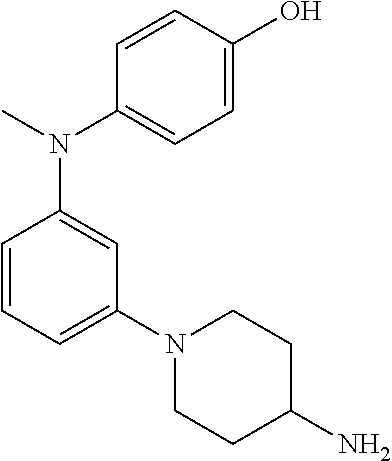
C00604
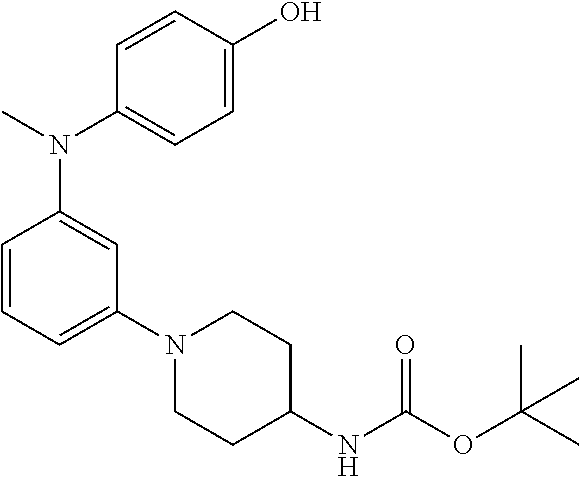
C00605
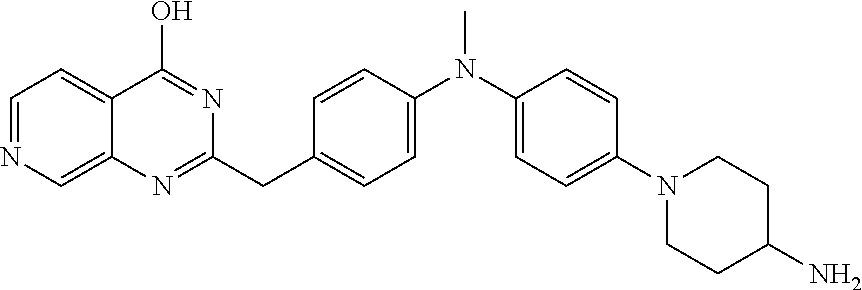
C00606
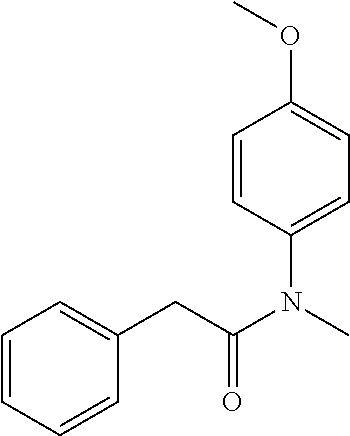
C00607
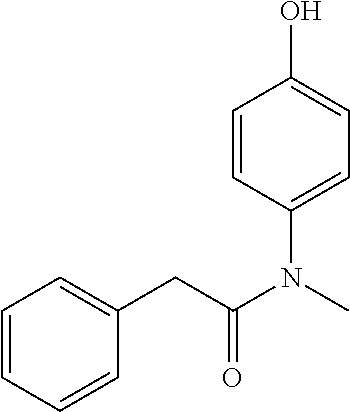
C00608

C00609
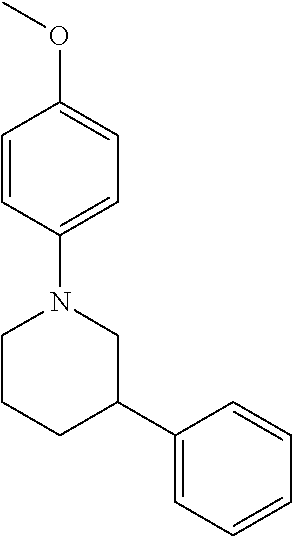
C00610
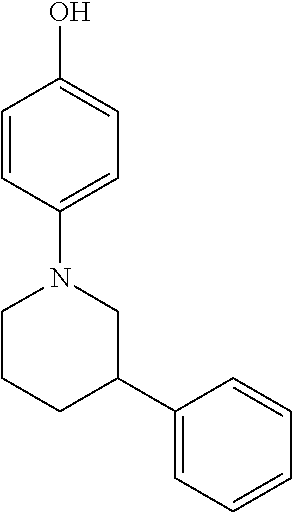
C00611

C00612
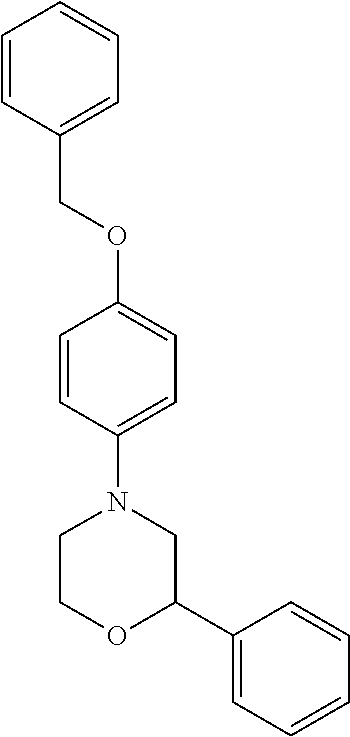
C00613
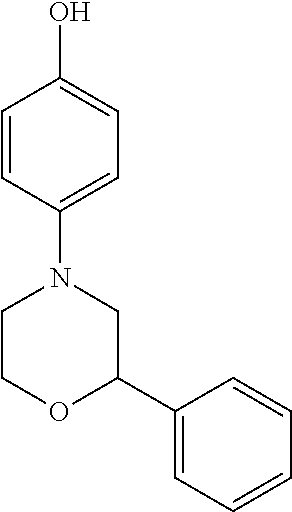
C00614

C00615
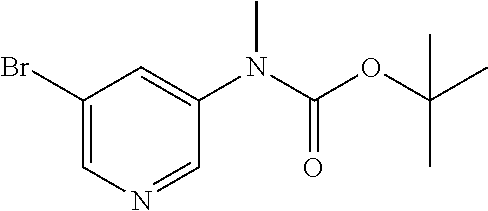
C00616
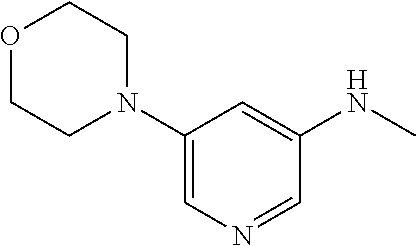
C00617
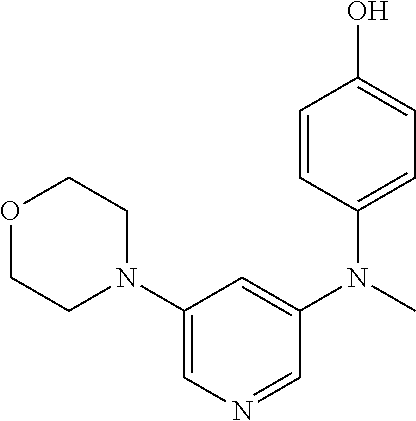
C00618

C00619
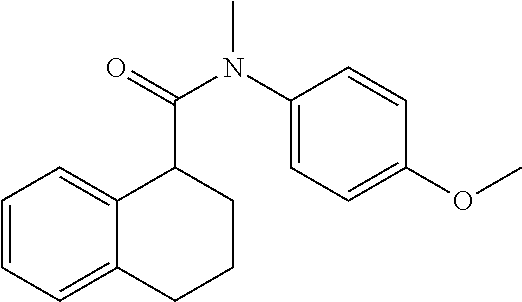
C00620
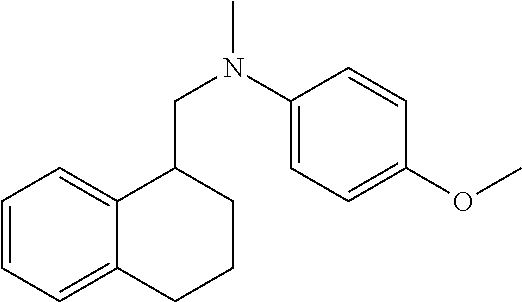
C00621
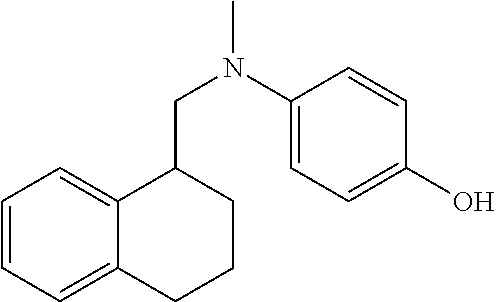
C00622
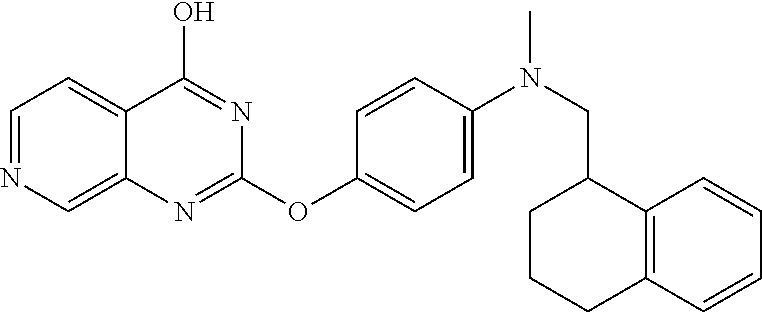
C00623
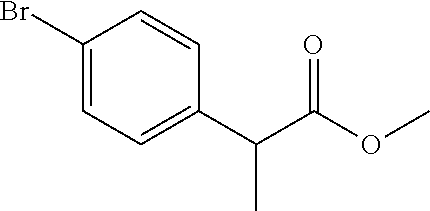
C00624
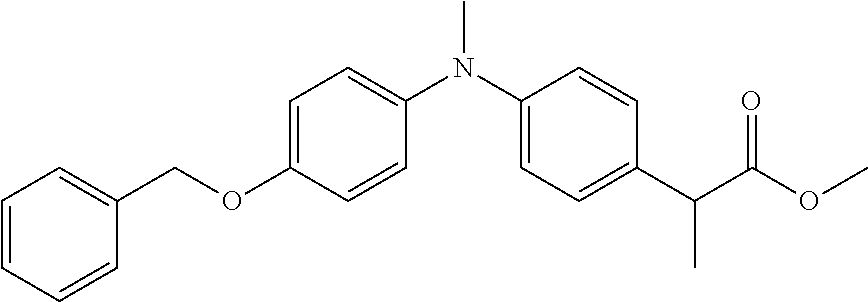
C00625
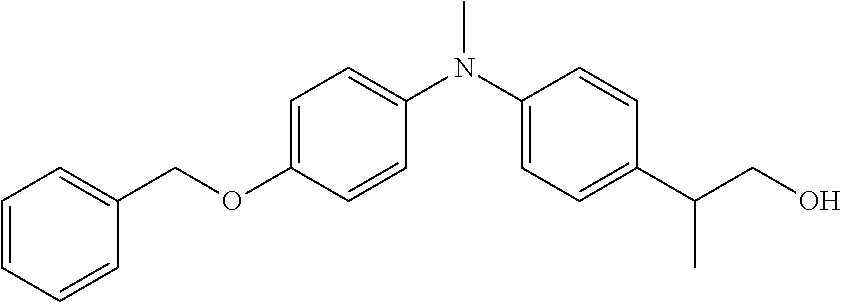
C00626
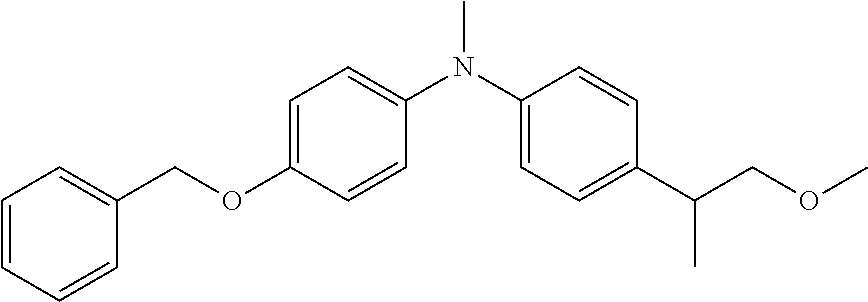
C00627
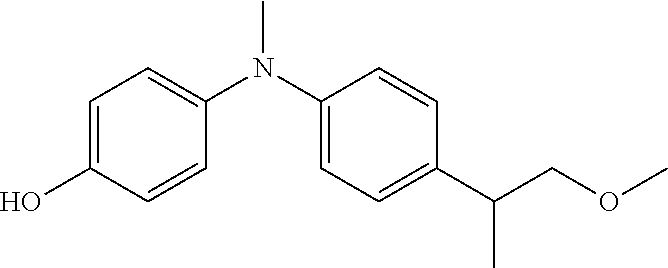
C00628

C00629

C00630
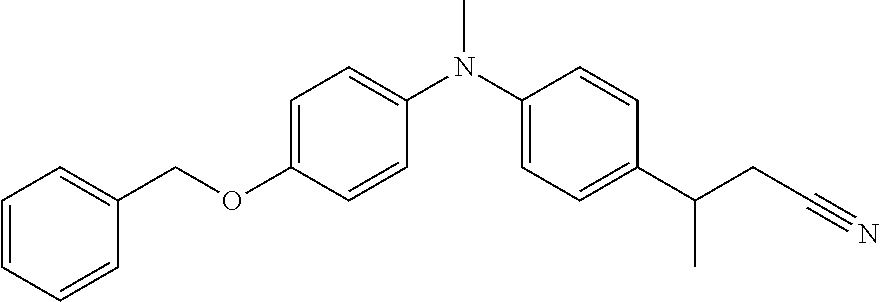
C00631
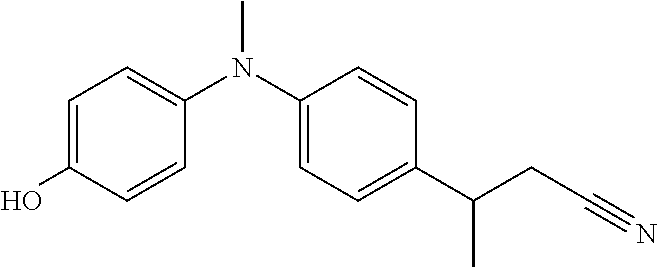
C00632

C00633
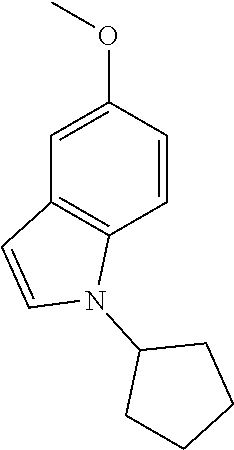
C00634
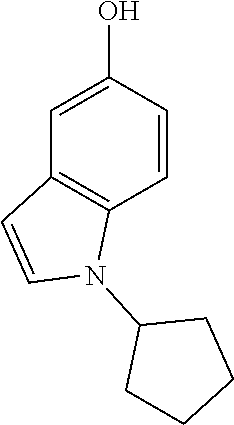
C00635
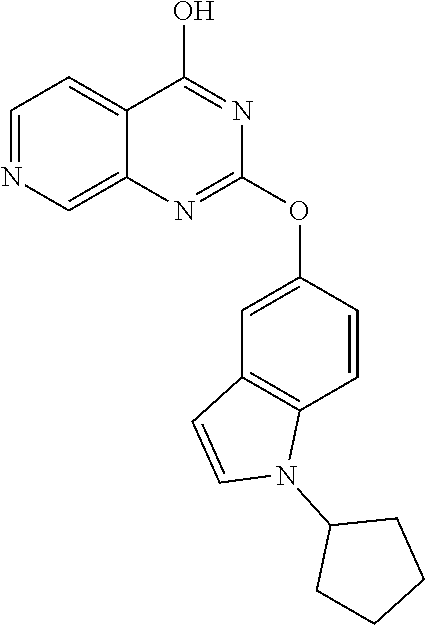
C00636
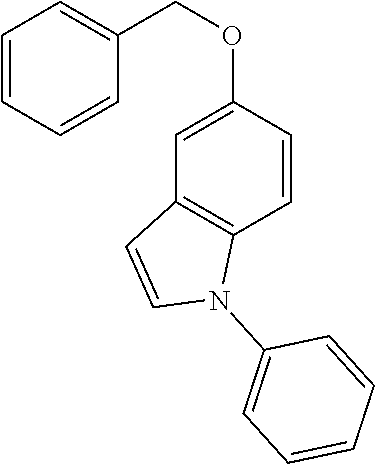
C00637
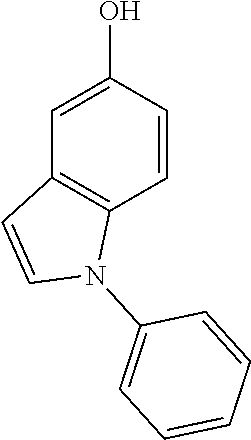
C00638
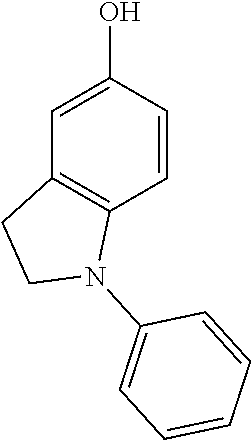
C00639
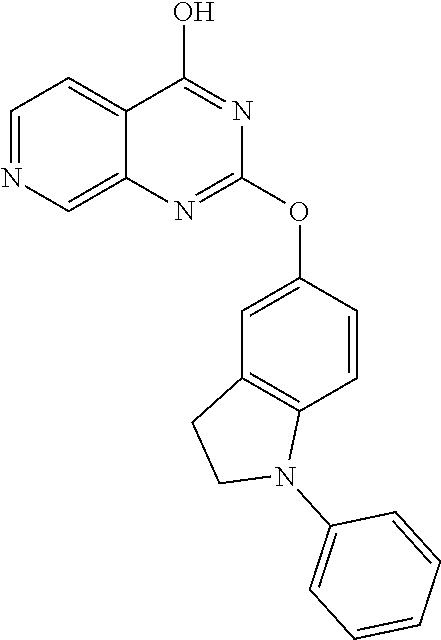
C00640
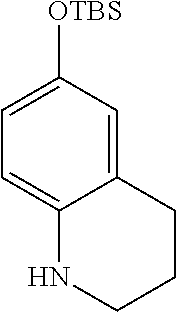
C00641
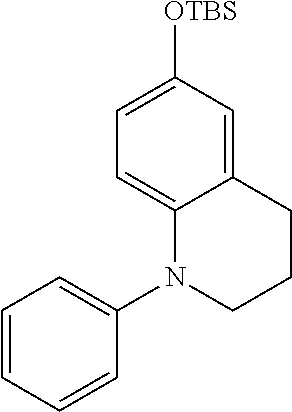
C00642
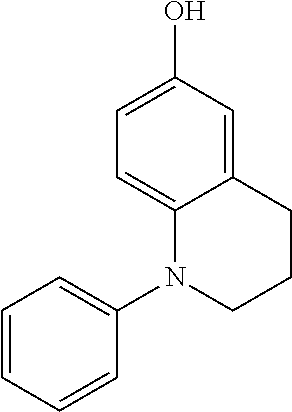
C00643
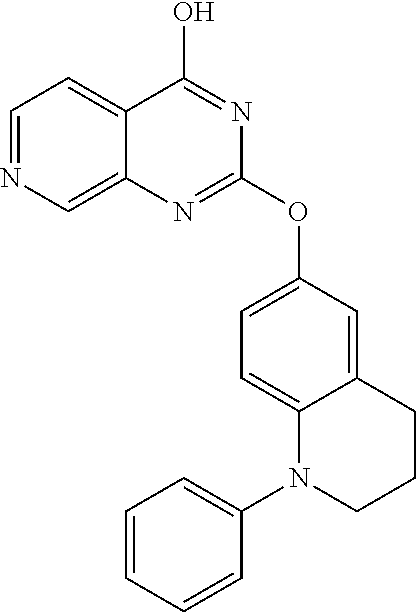
C00644
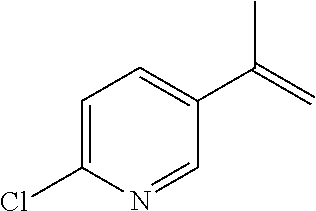
C00645
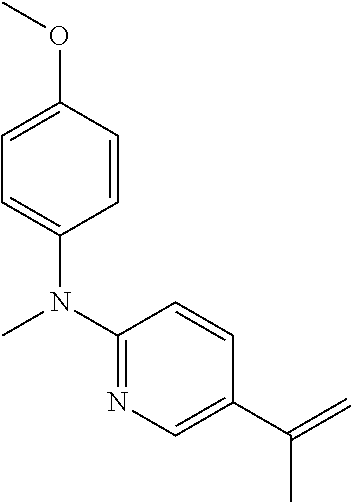
C00646
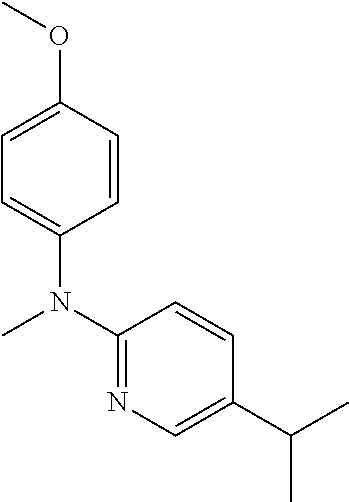
C00647
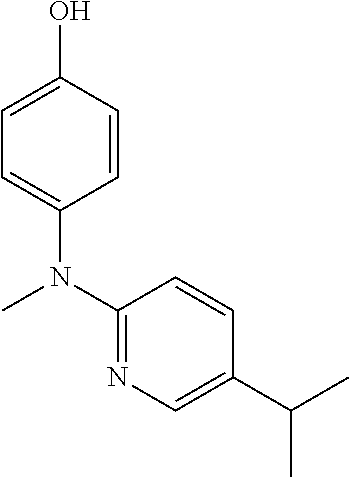
C00648
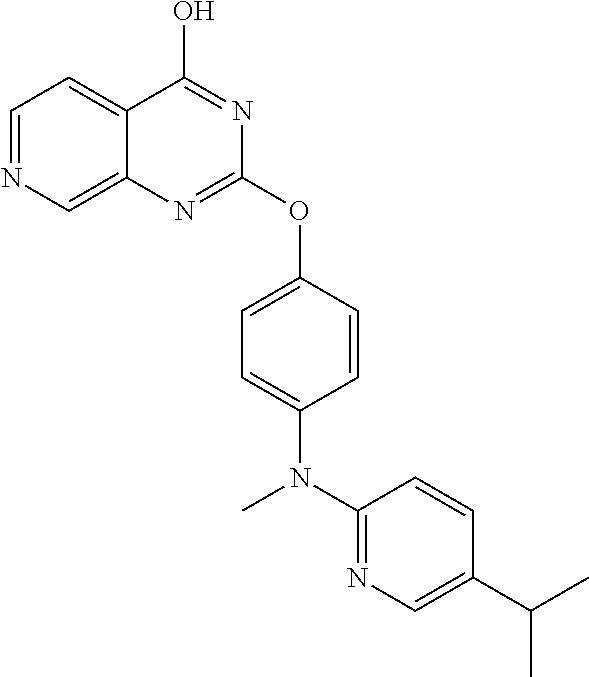
C00649
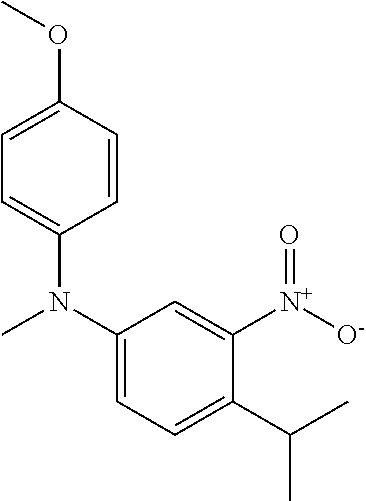
C00650
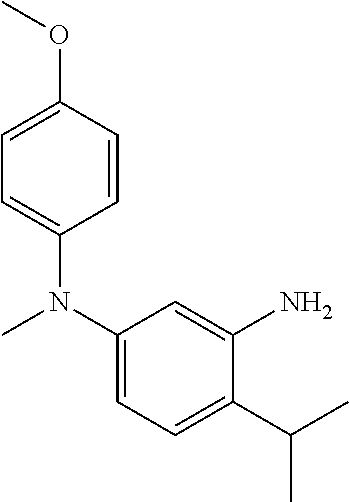
C00651
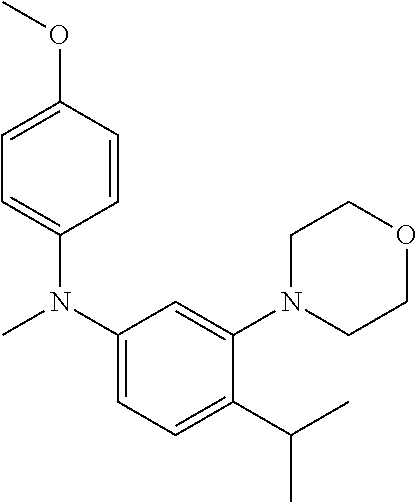
C00652
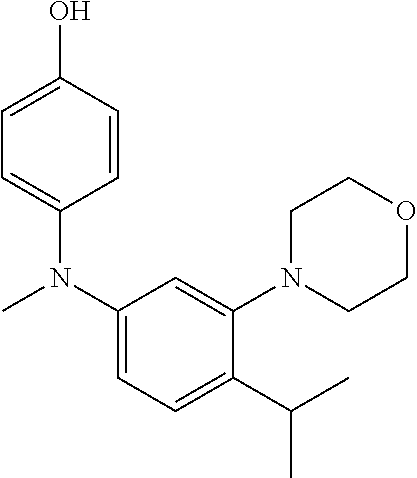
C00653
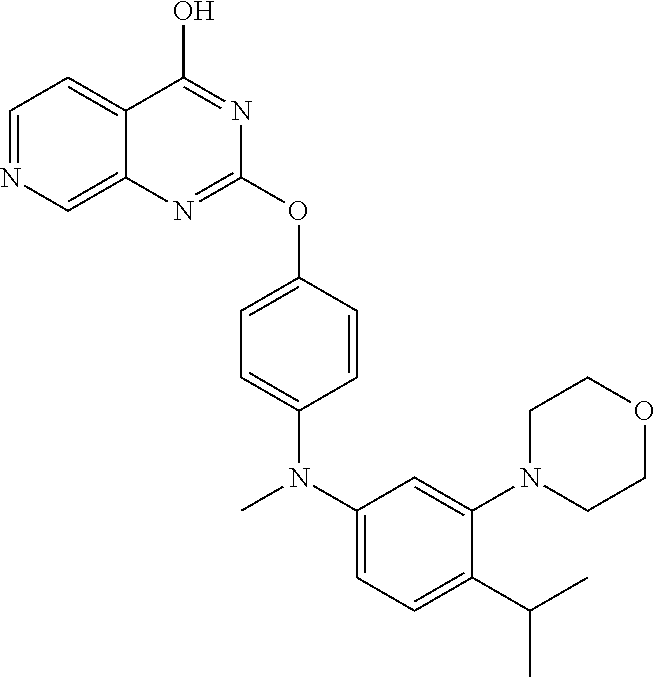
C00654
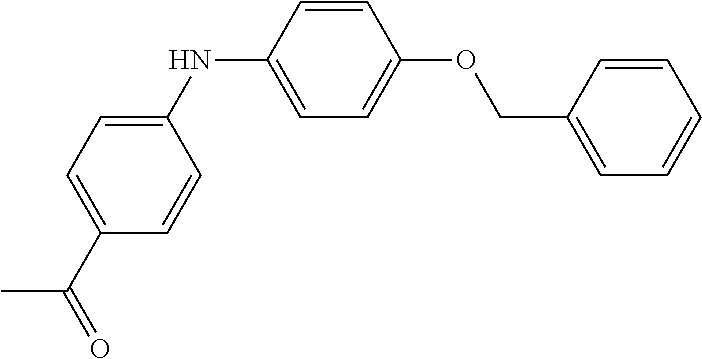
C00655
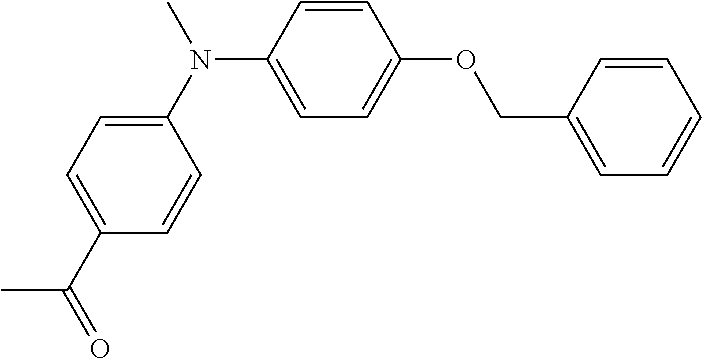
C00656
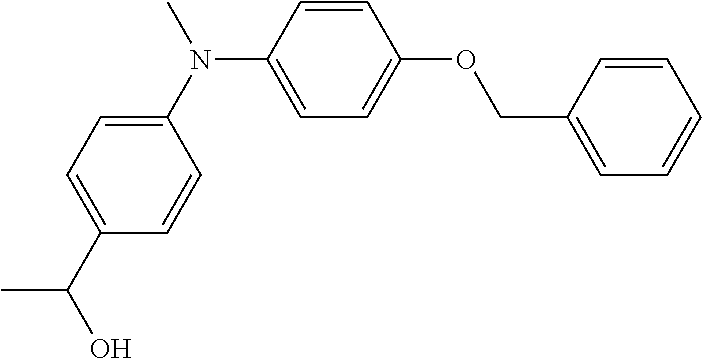
C00657
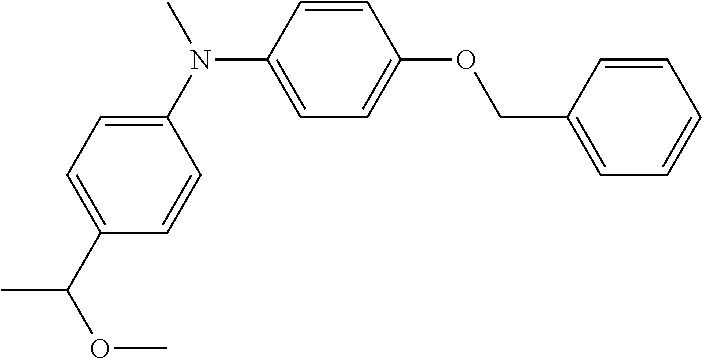
C00658
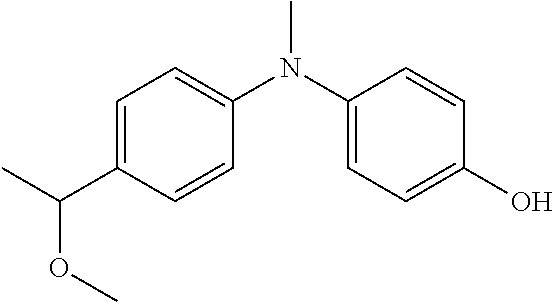
C00659

C00660
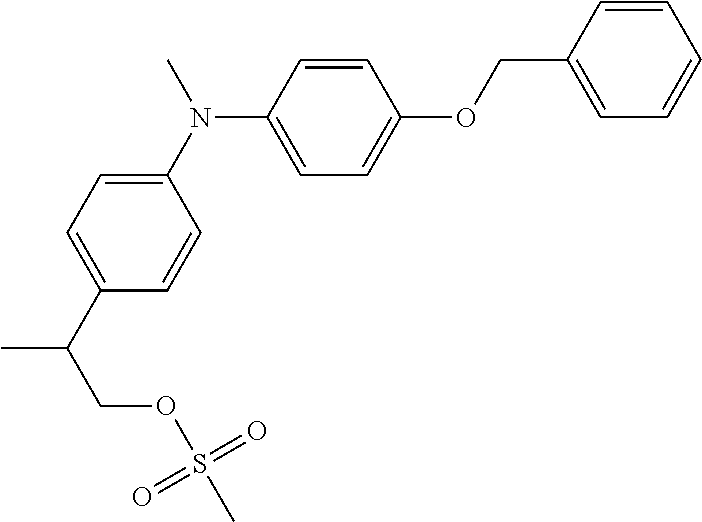
C00661
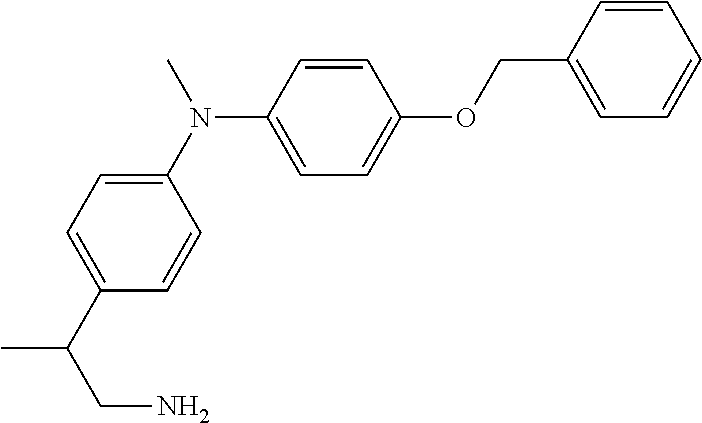
C00662
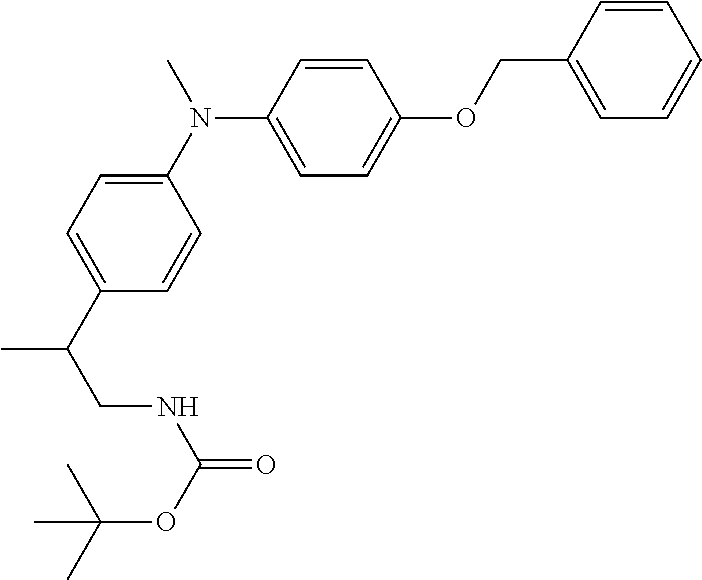
C00663
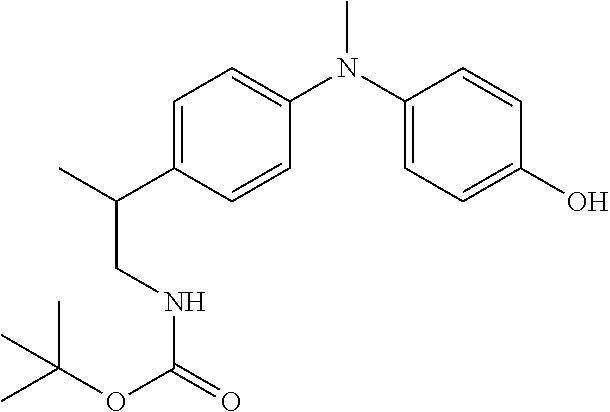
C00664

C00665
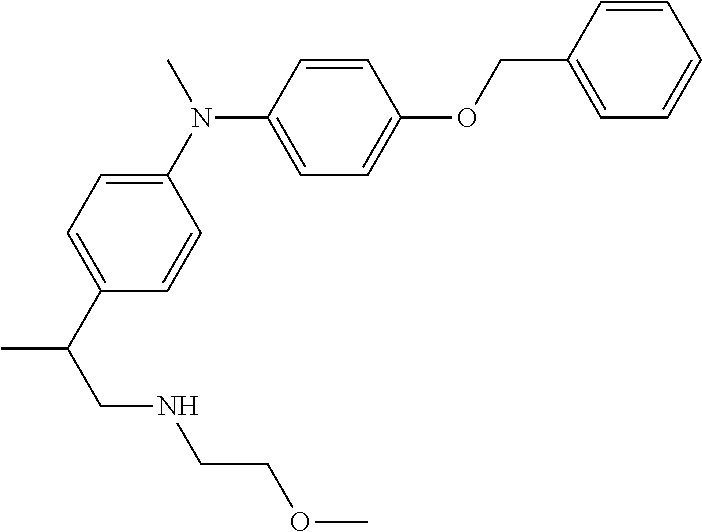
C00666

C00667
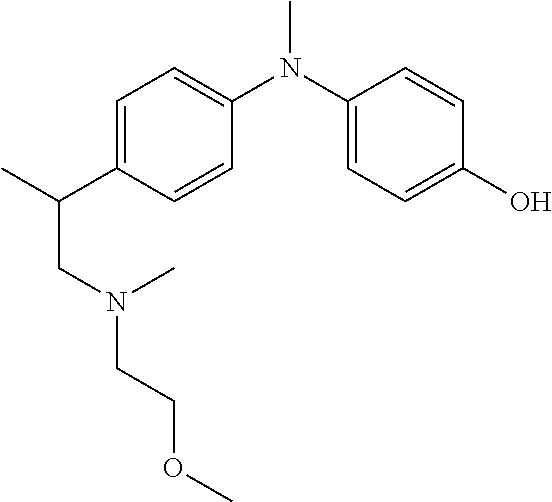
C00668

C00669
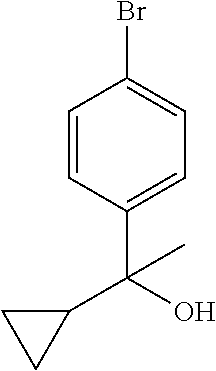
C00670
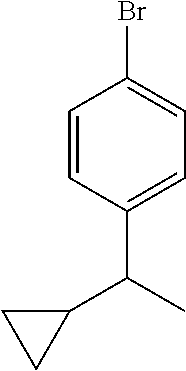
C00671
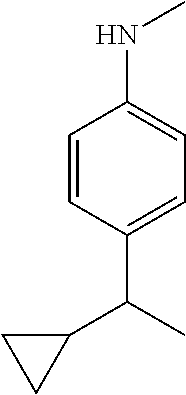
C00672
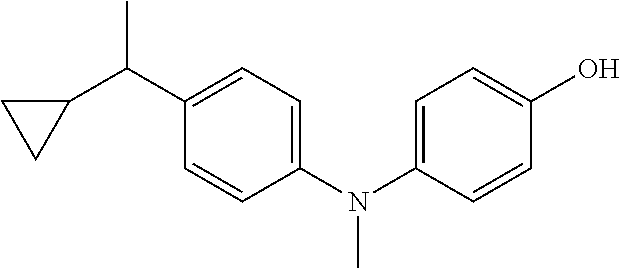
C00673

C00674
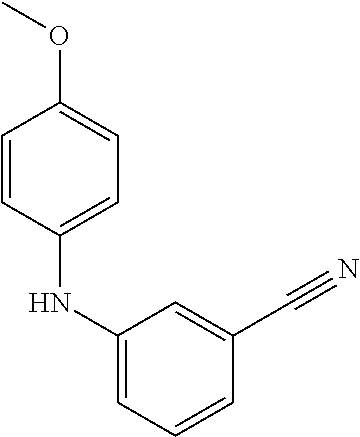
C00675
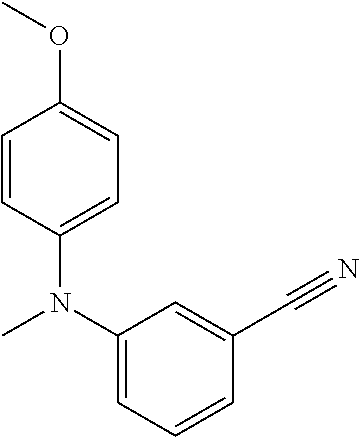
C00676
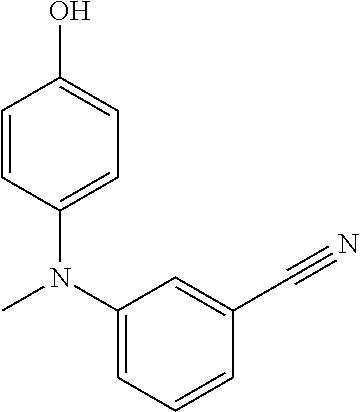
C00677
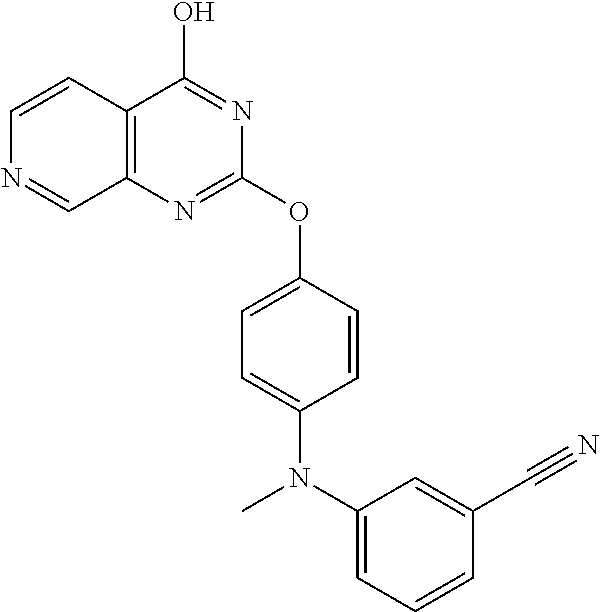
C00678
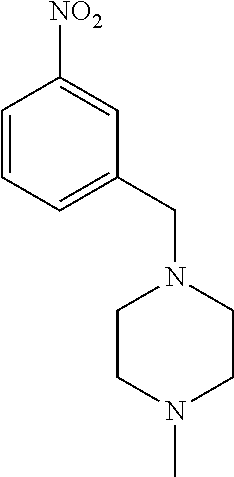
C00679
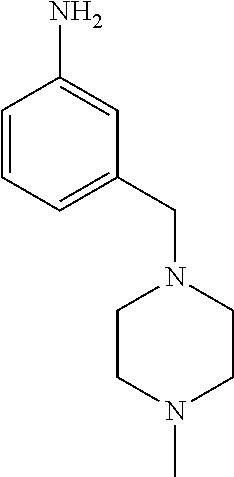
C00680
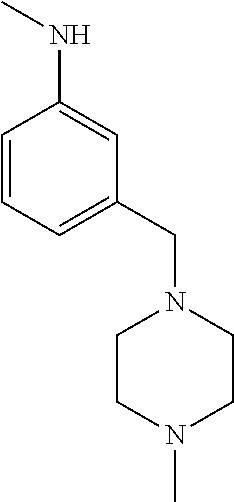
C00681
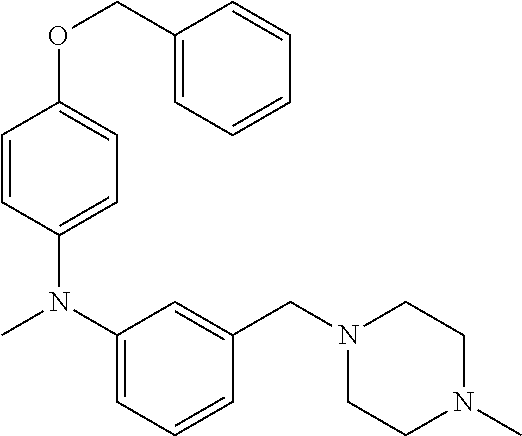
C00682
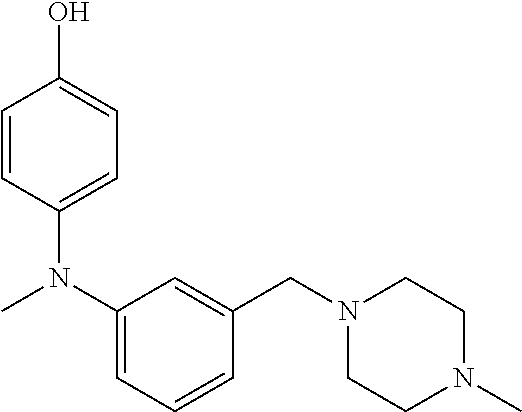
C00683
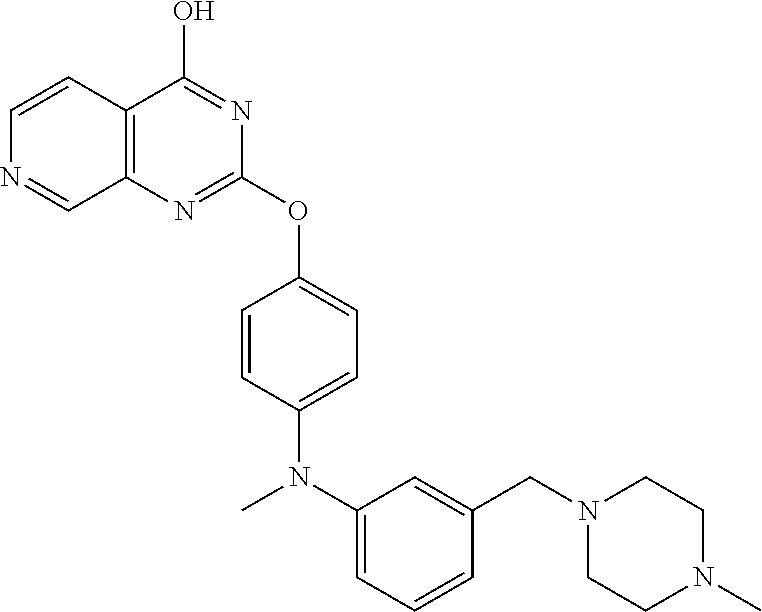
C00684
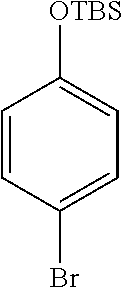
C00685
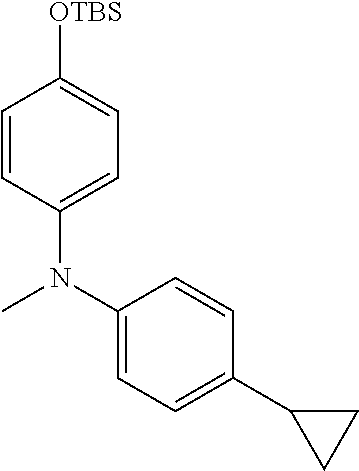
C00686
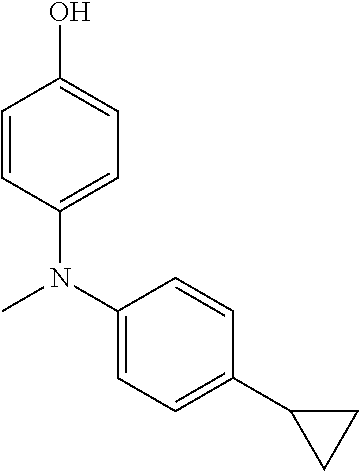
C00687
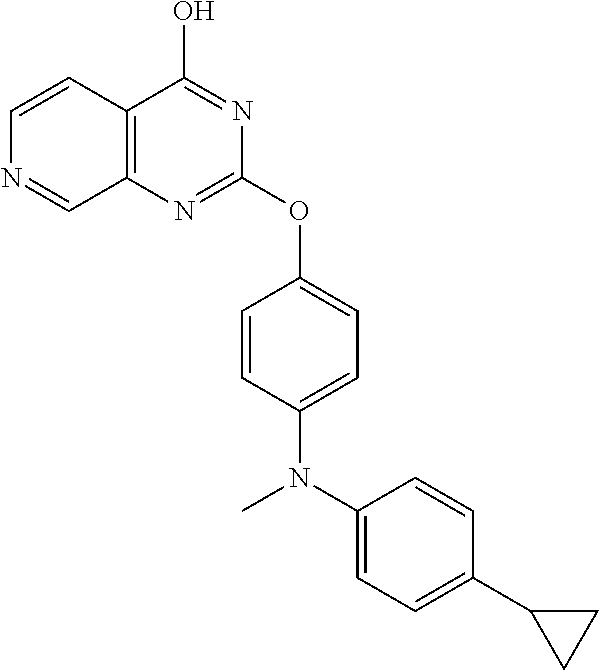
C00688
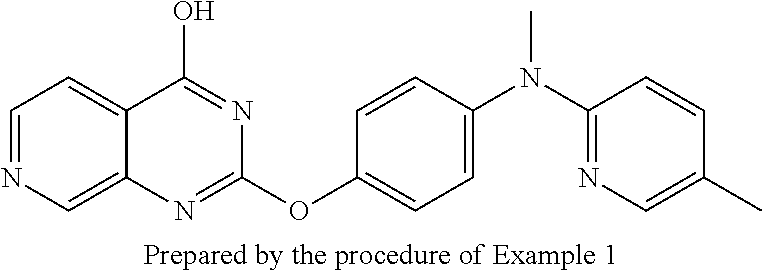
C00689
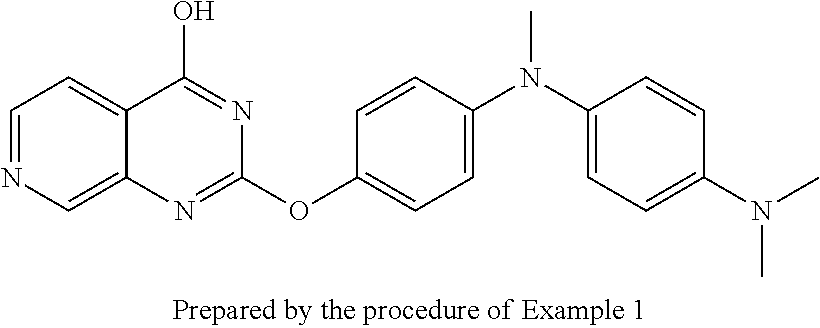
C00690

C00691
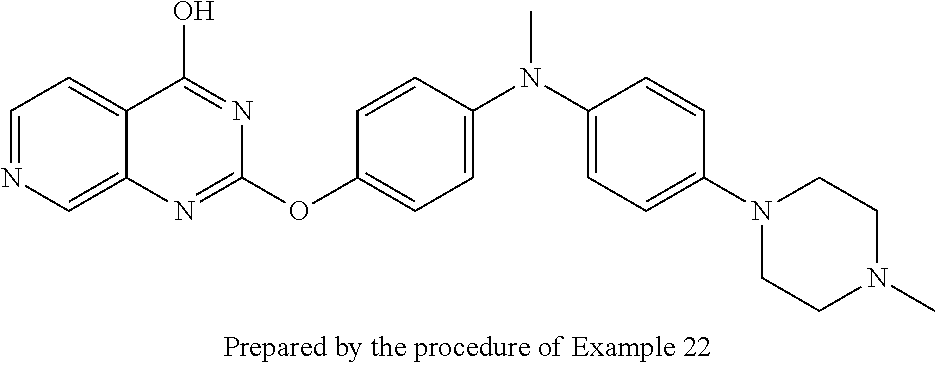
C00692

C00693

C00694
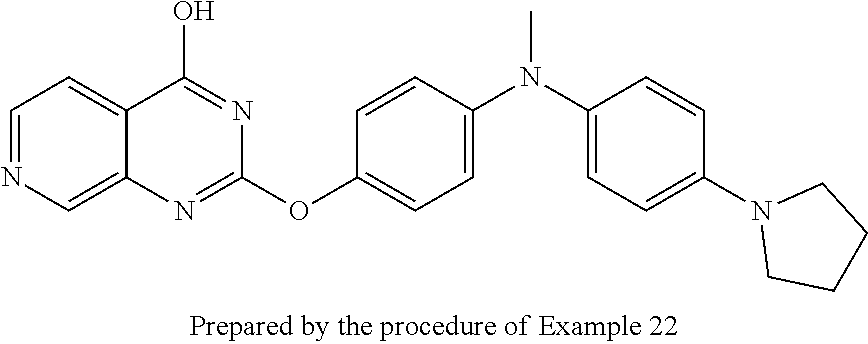
C00695

C00696
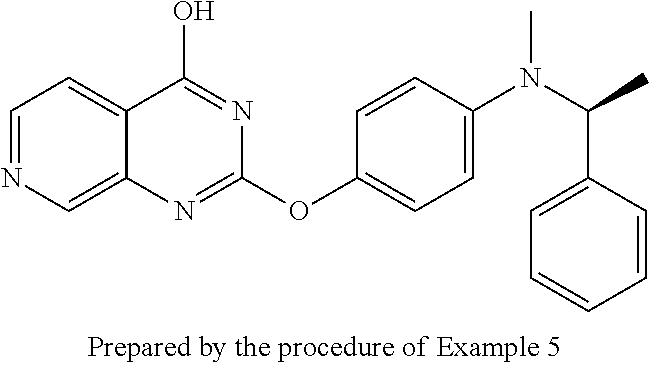
C00697
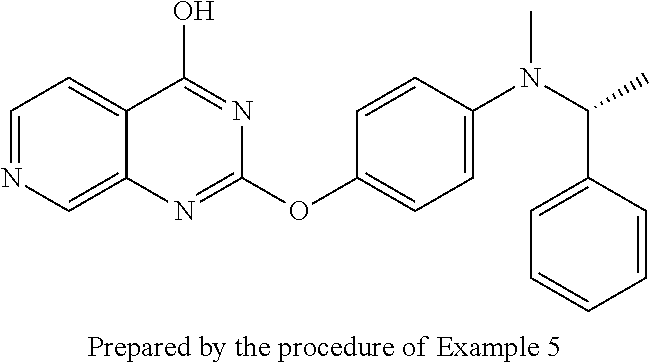
C00698
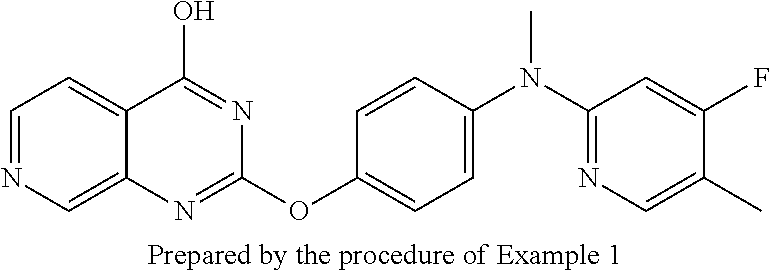
C00699

C00700
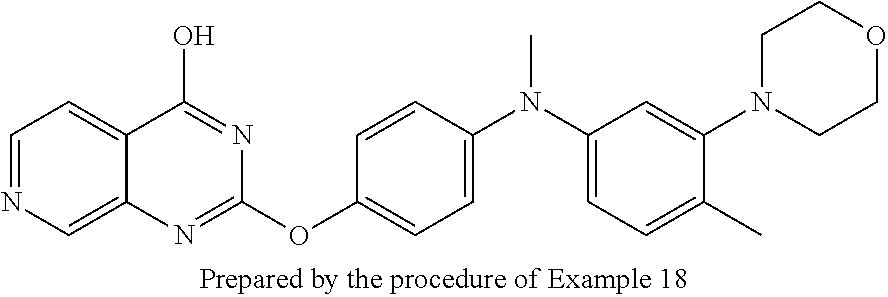
C00701

C00702
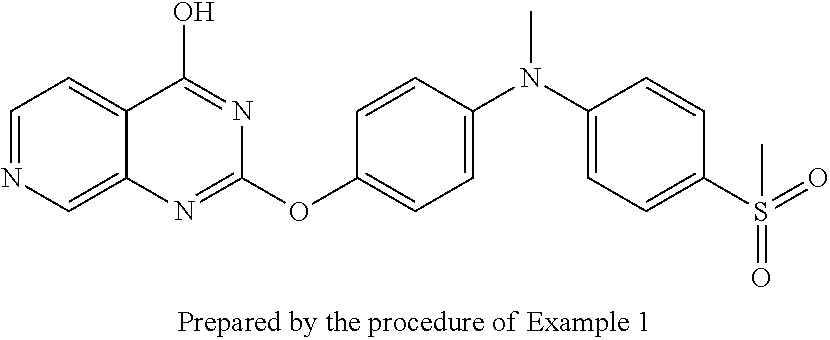
C00703

C00704
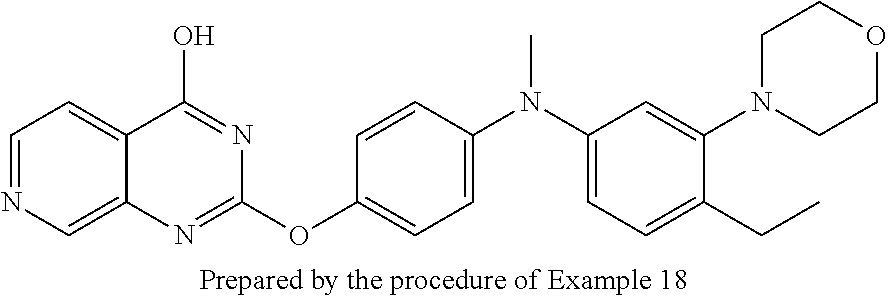
C00705

C00706
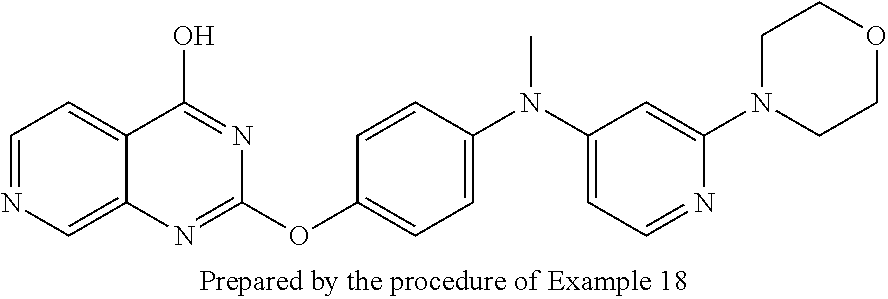
C00707
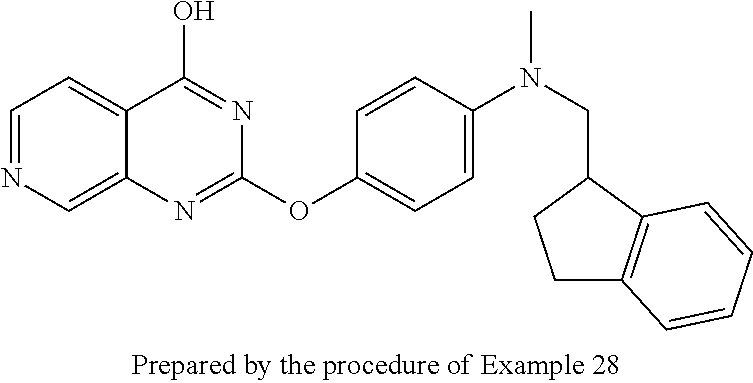
C00708

C00709
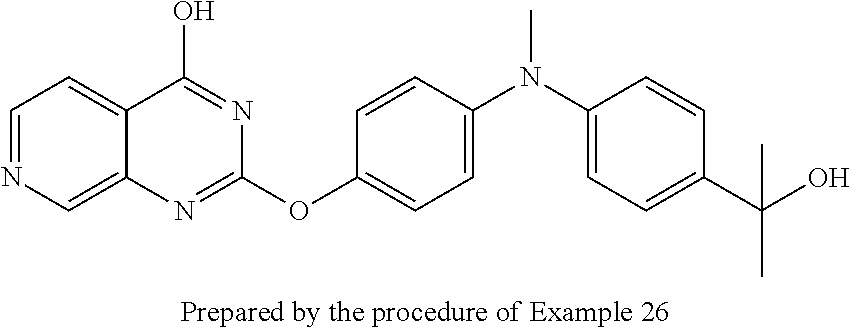
C00710

C00711

C00712
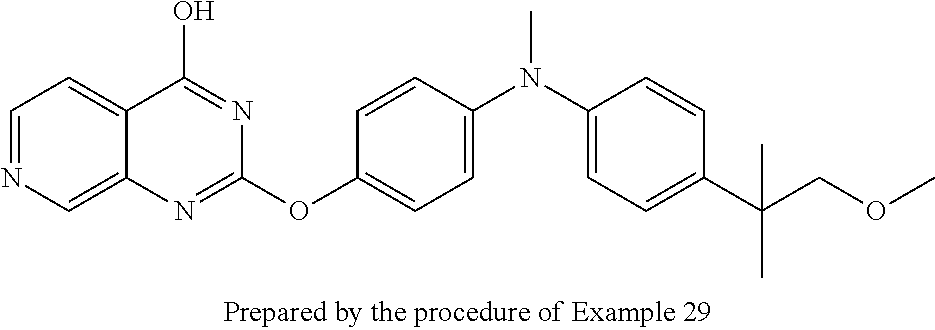
C00713
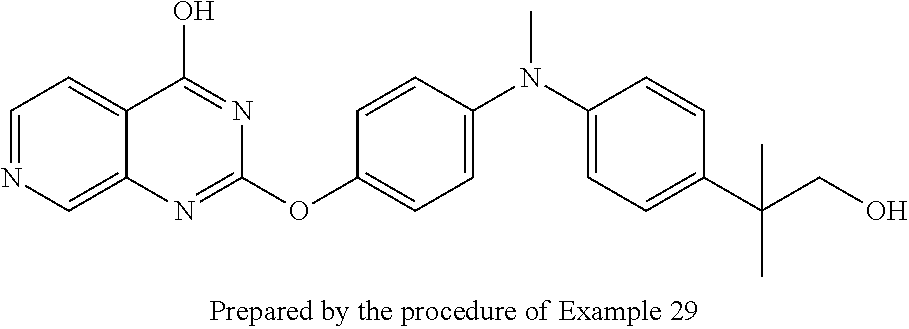
C00714

C00715
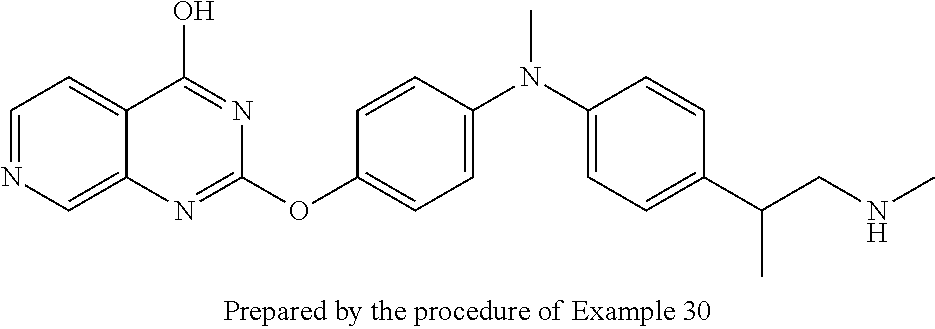
C00716
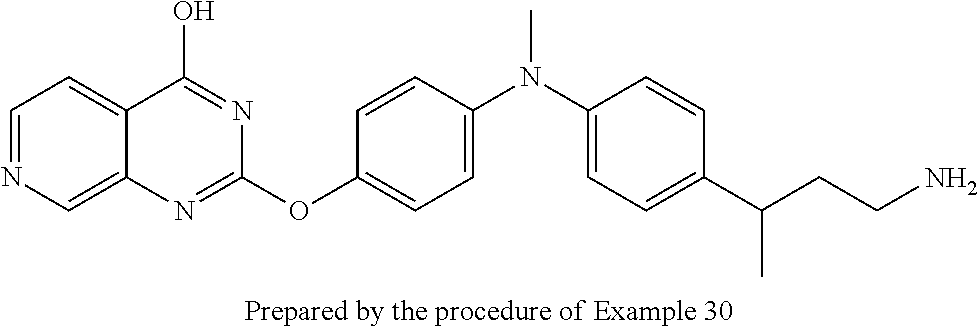
C00717
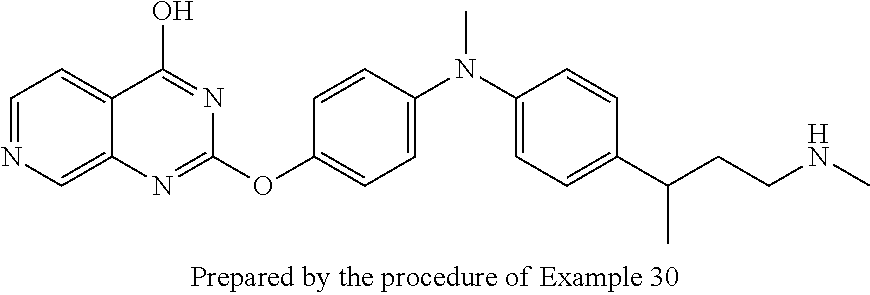
C00718
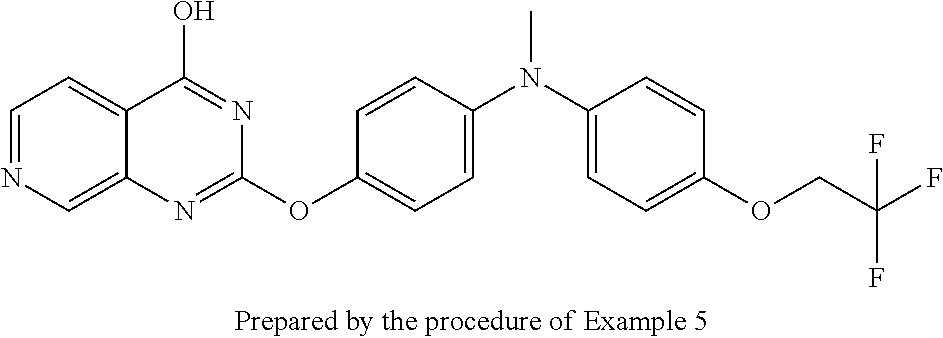
C00719
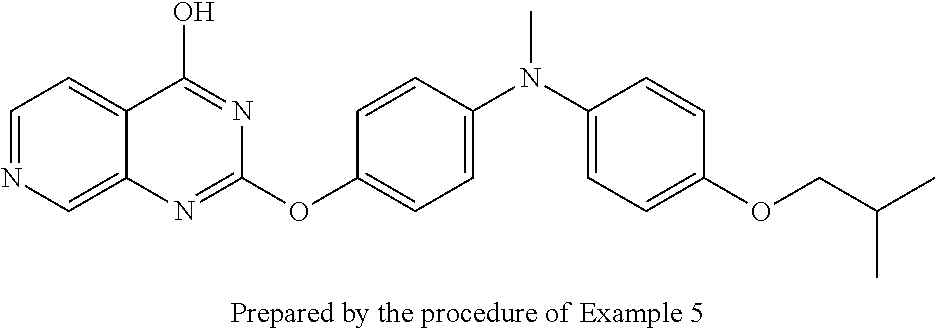
C00720
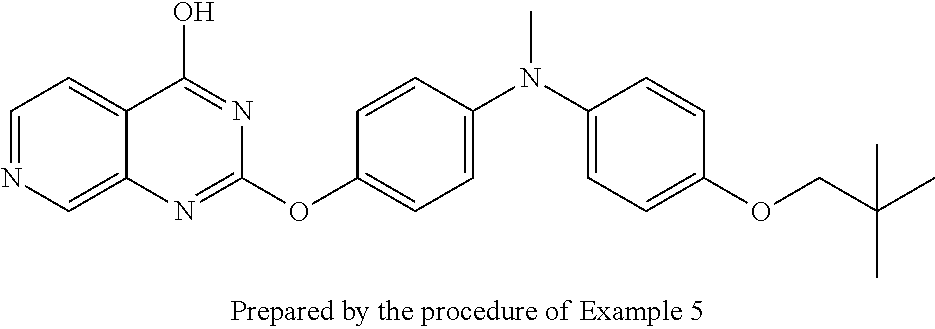
C00721

C00722
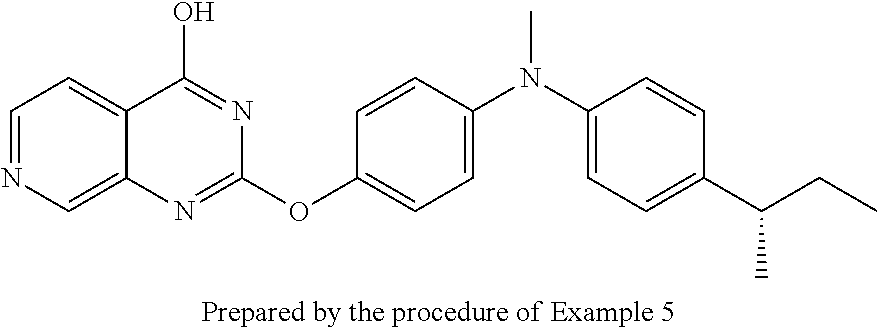
C00723
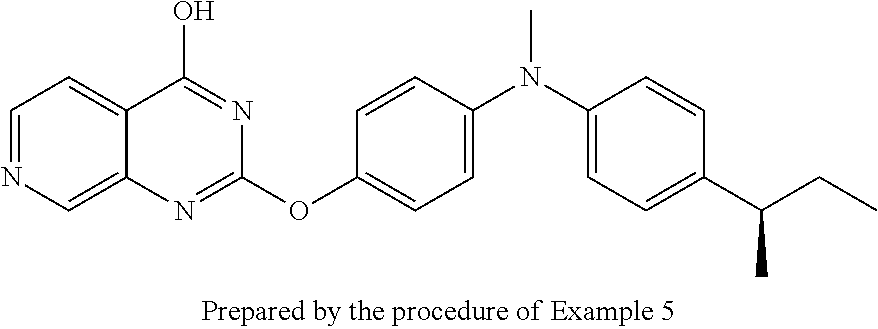
C00724

C00725
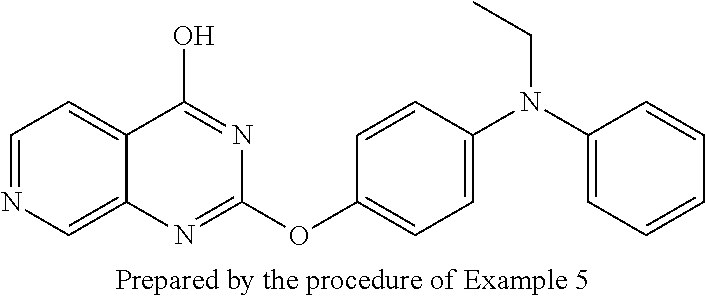
C00726
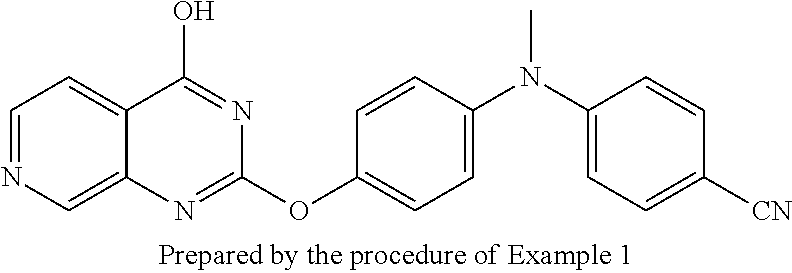
C00727

C00728
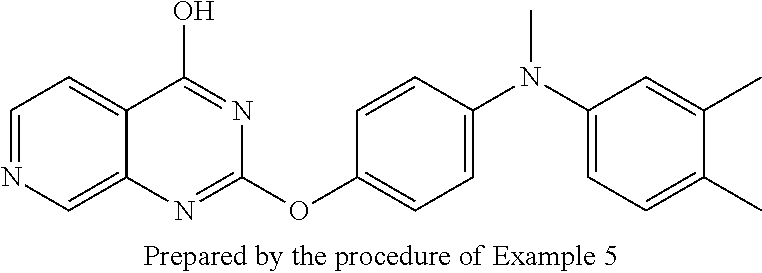
C00729
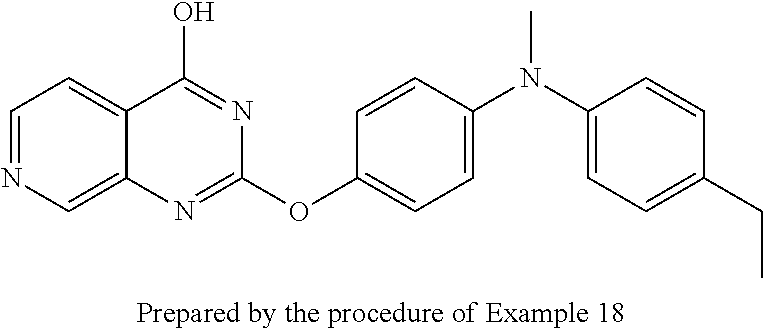
C00730
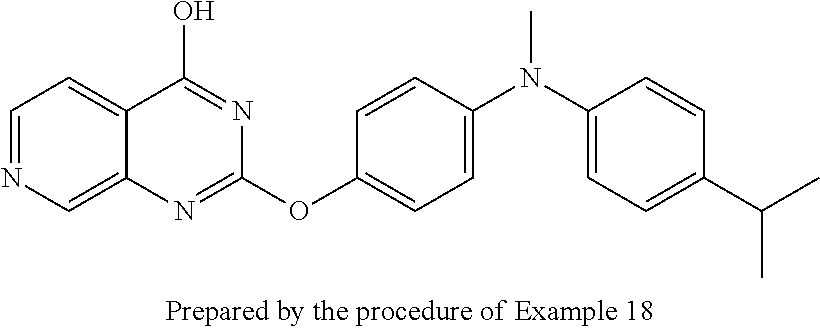
C00731

C00732
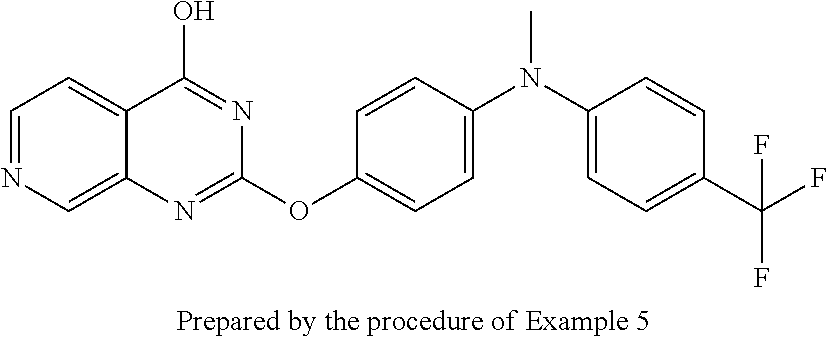
C00733

C00734

C00735
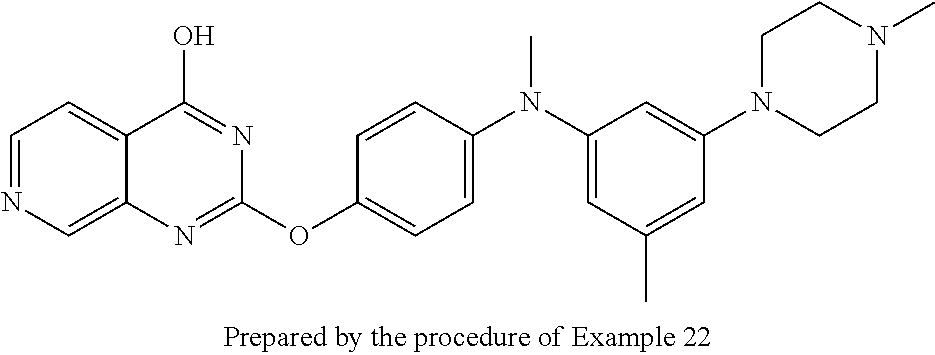
C00736
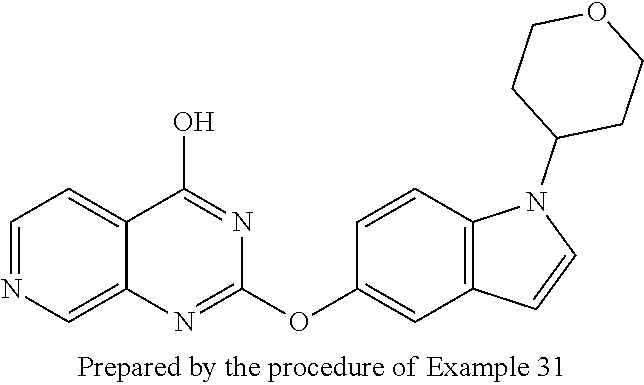
C00737
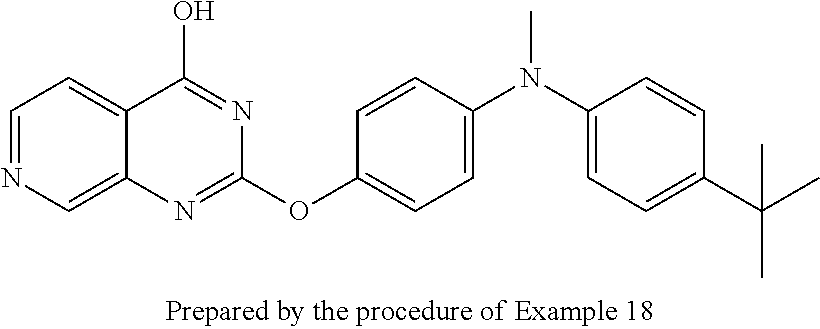
C00738
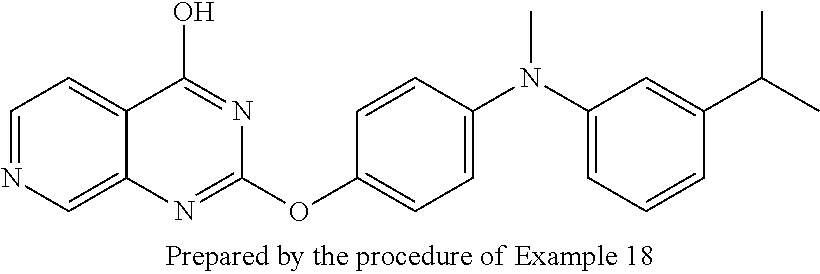
C00739
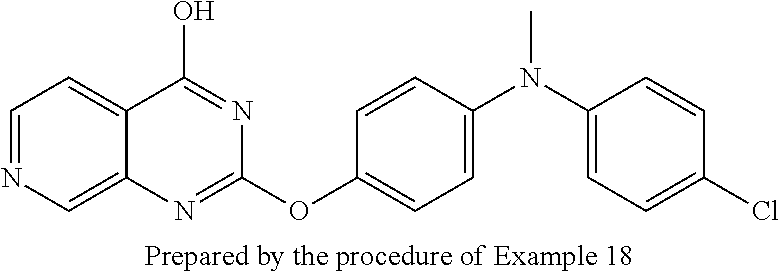
C00740
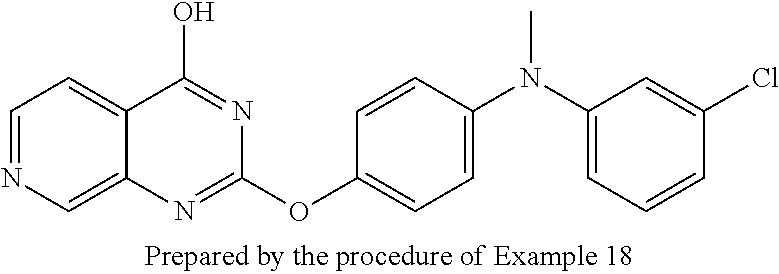
C00741
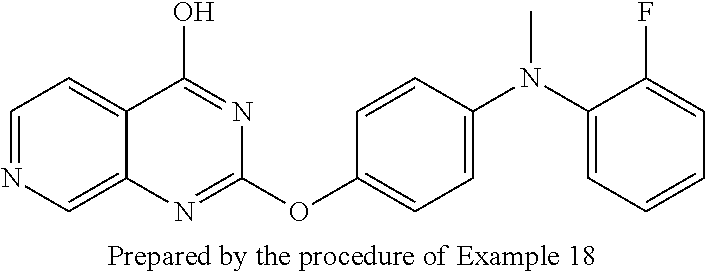
C00742
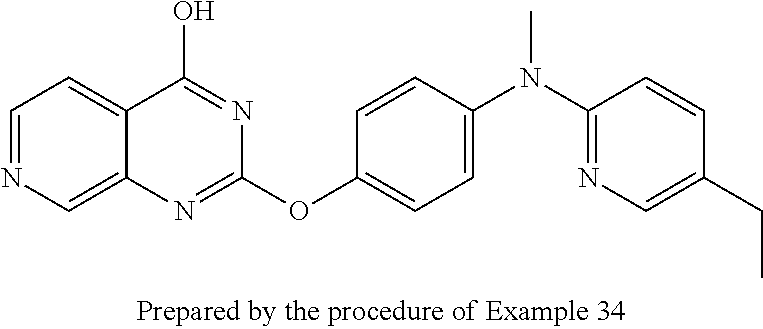
C00743
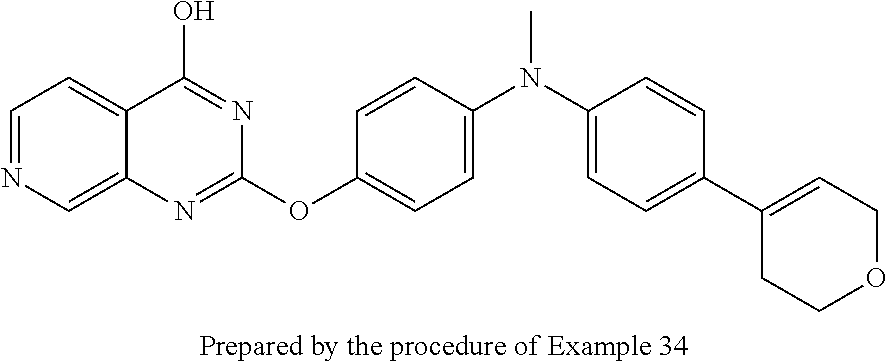
C00744
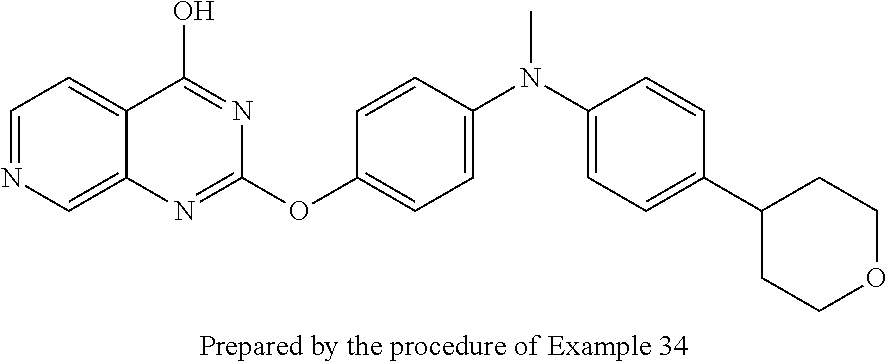
C00745

C00746
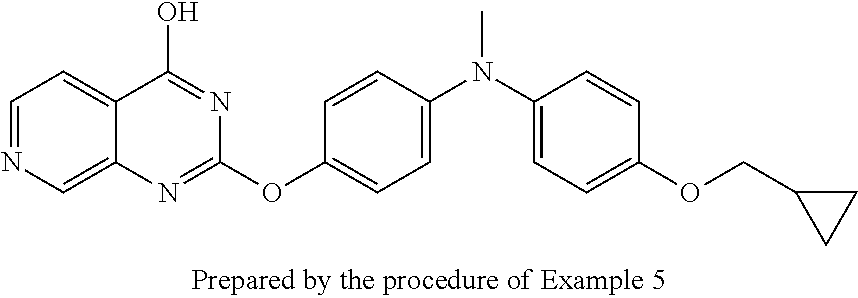
C00747
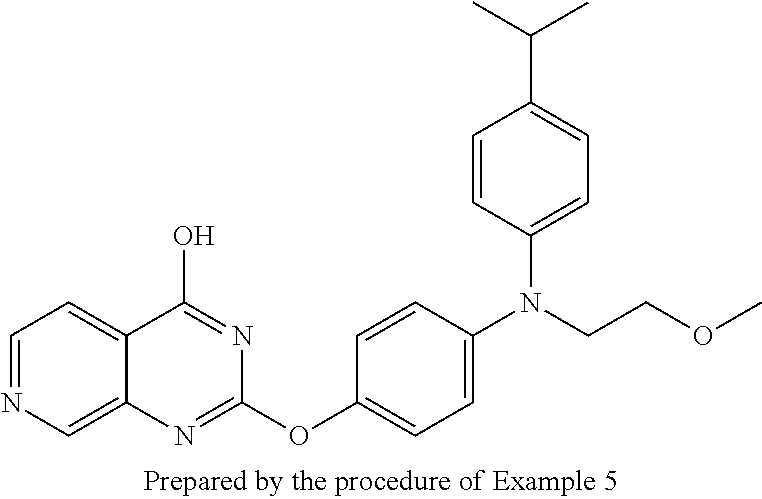
C00748
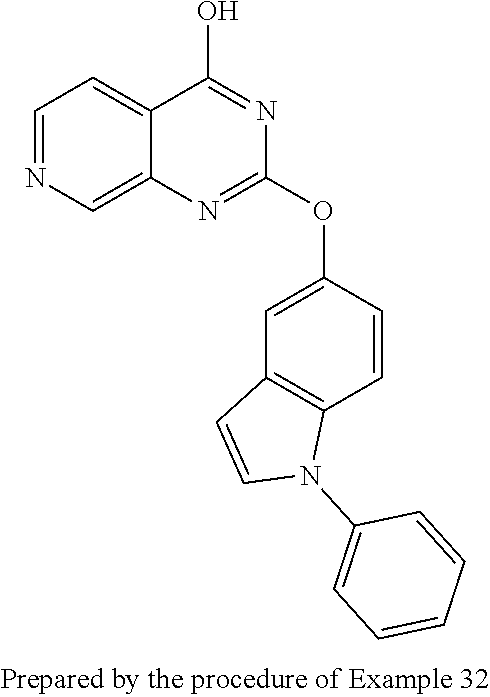
C00749
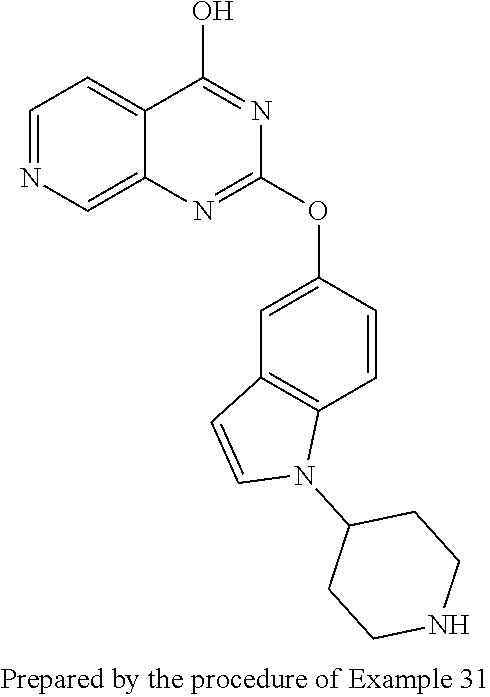
C00750
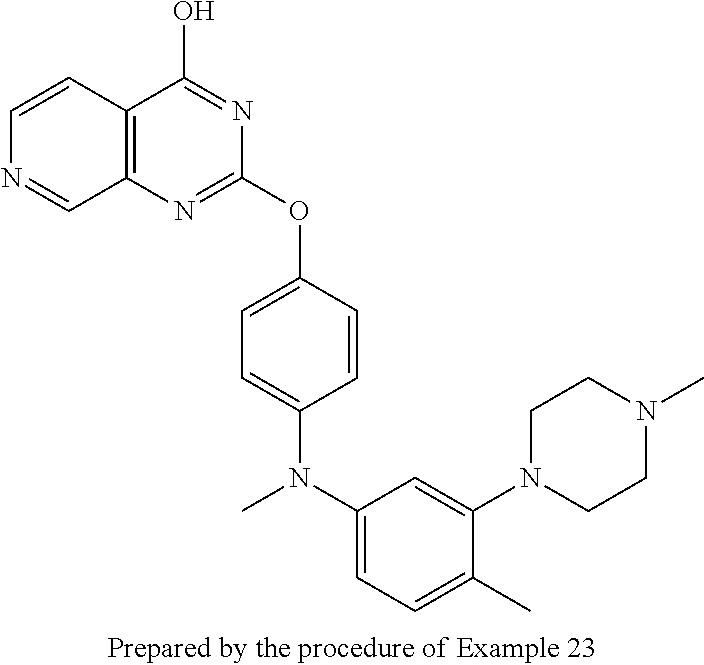
C00751
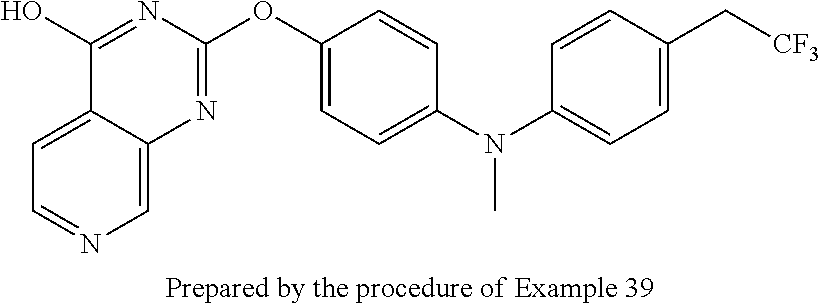
C00752
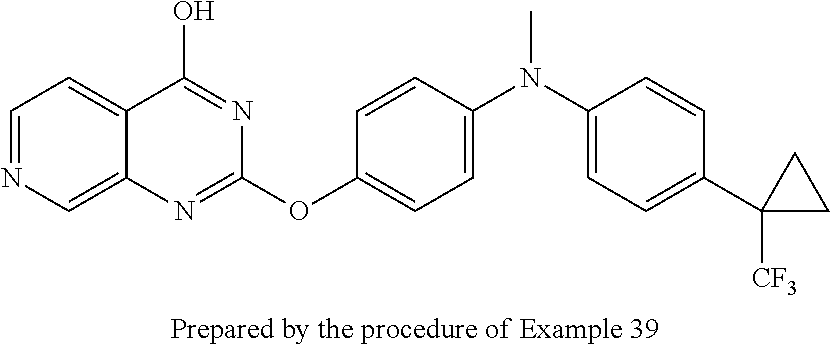
C00753
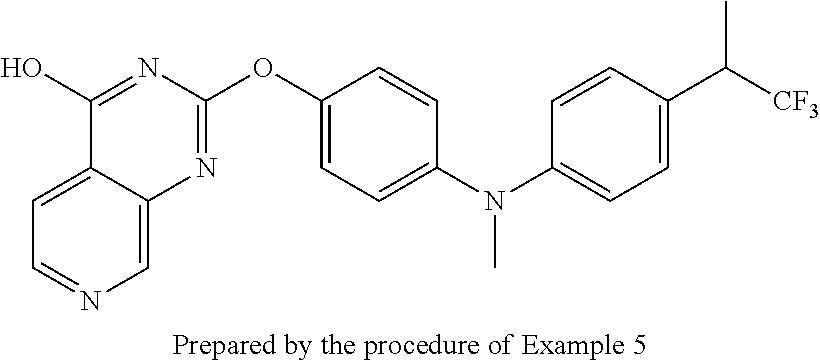
C00754
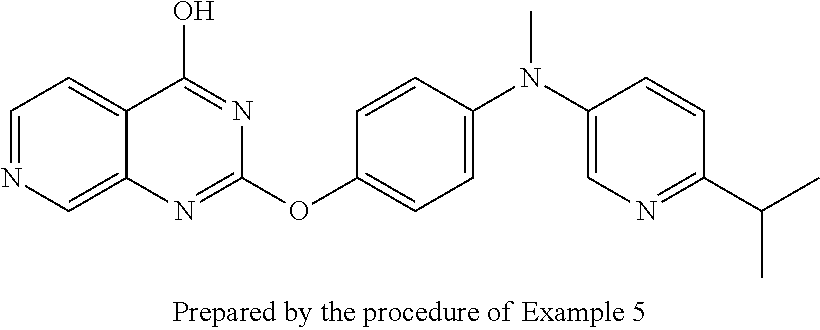
C00755

C00756

C00757
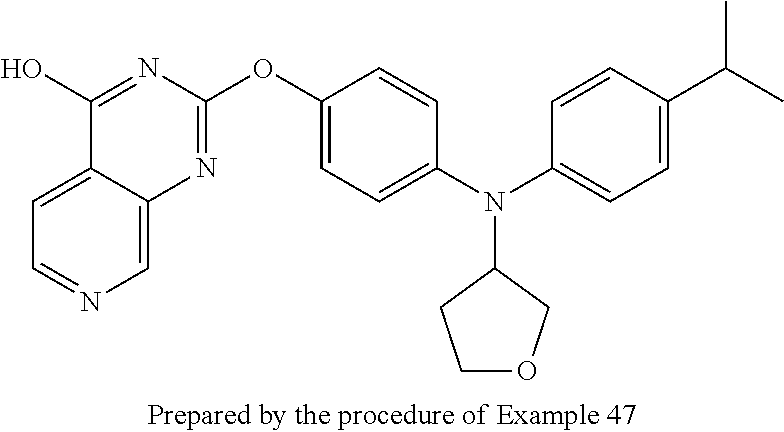
C00758
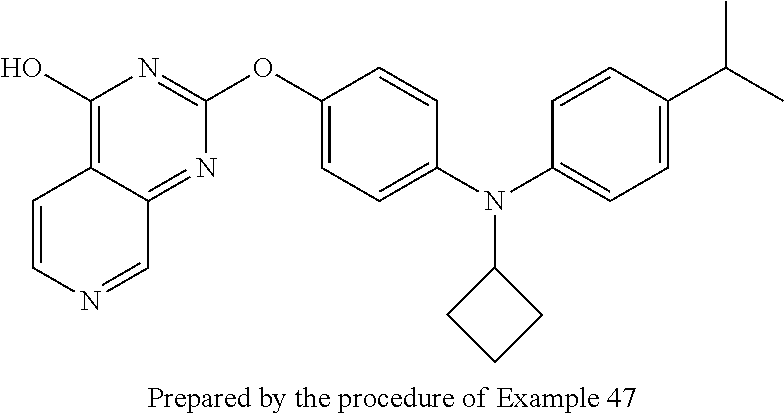
C00759
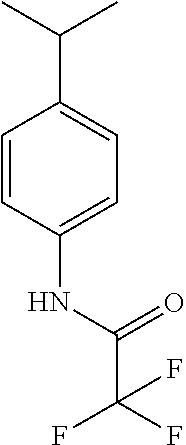
C00760
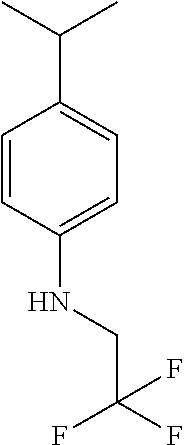
C00761
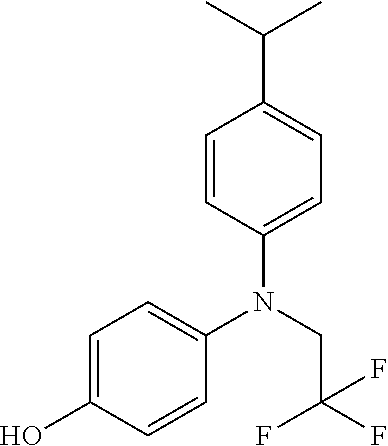
C00762
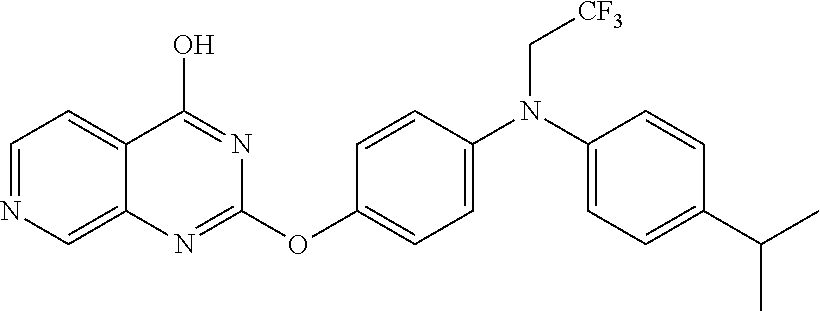
C00763

C00764

C00765

C00766
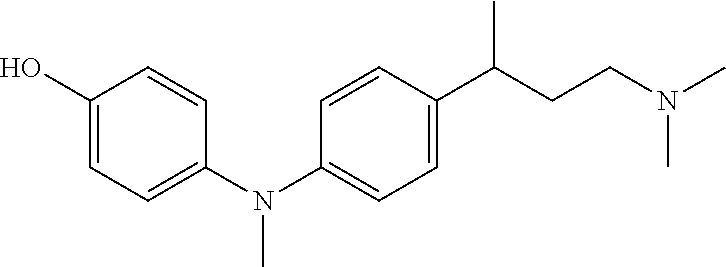
C00767

C00768
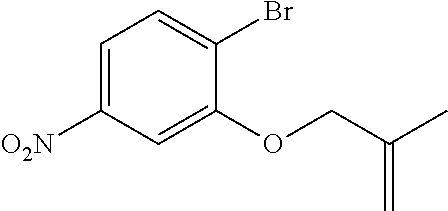
C00769

C00770
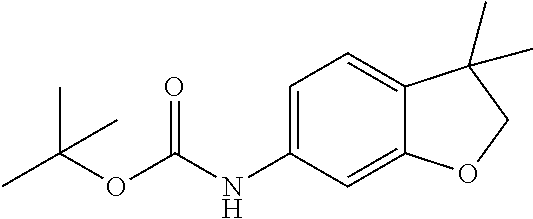
C00771
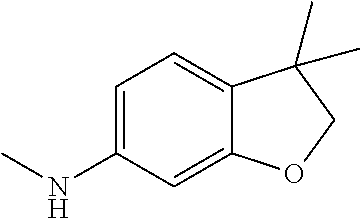
C00772
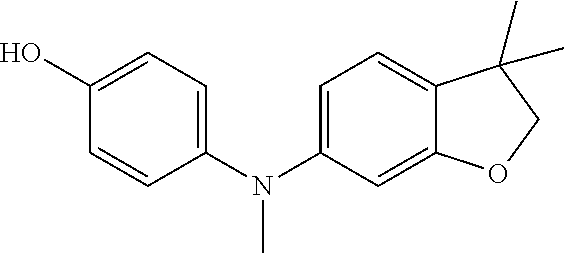
C00773

C00774
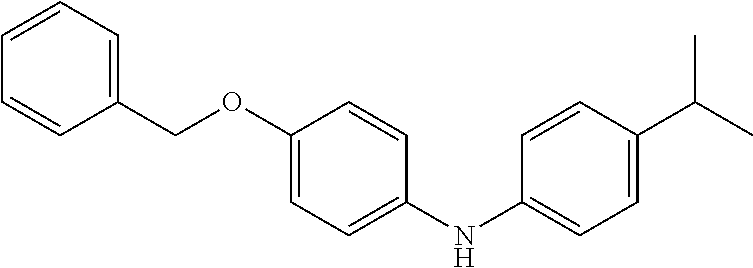
C00775
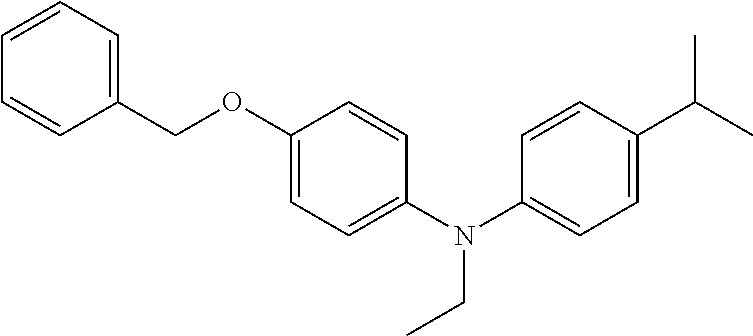
C00776
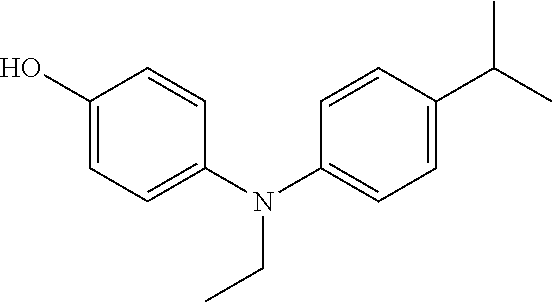
C00777
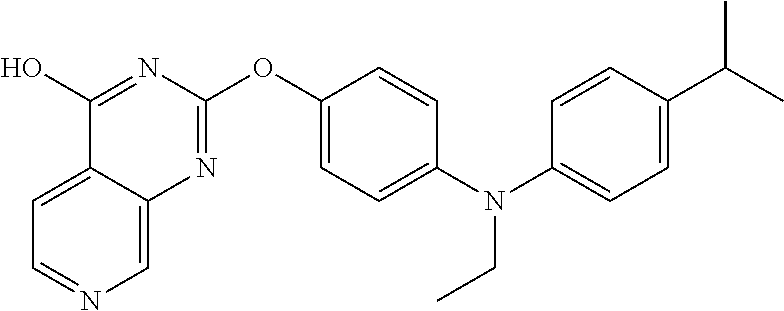
C00778

C00779
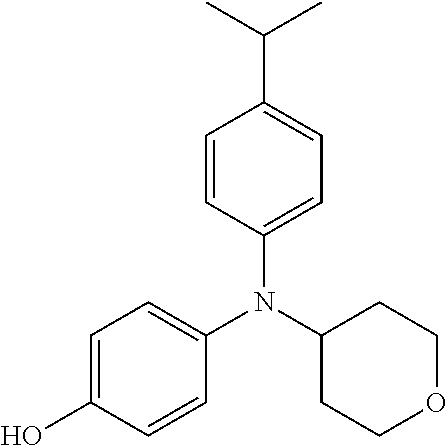
C00780
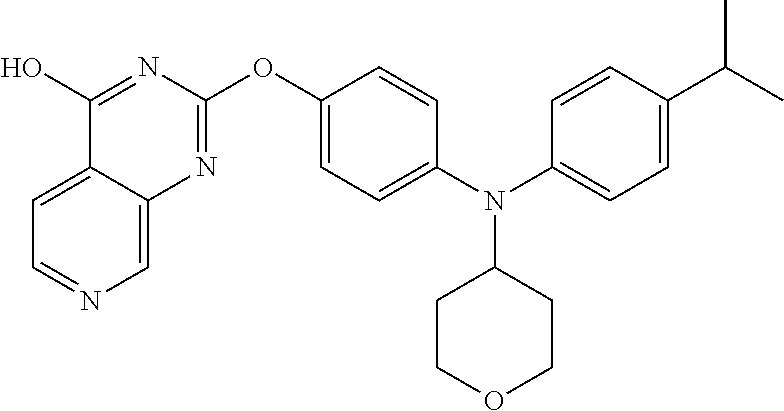
C00781
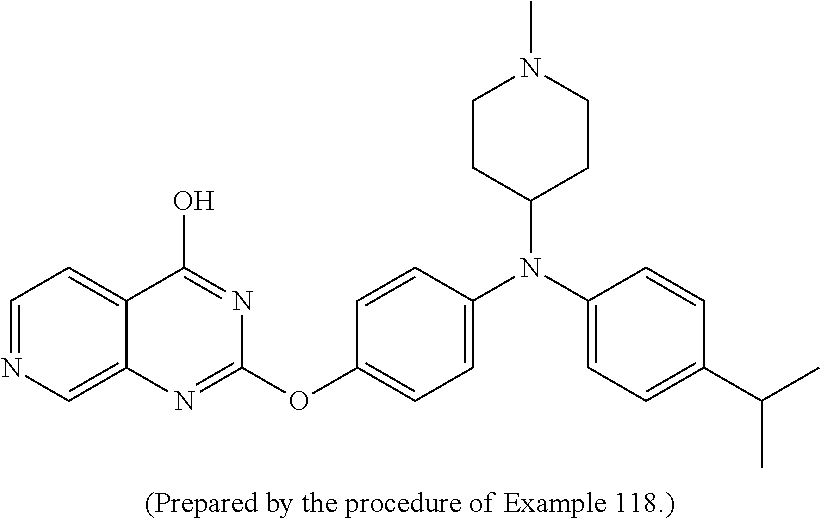
C00782
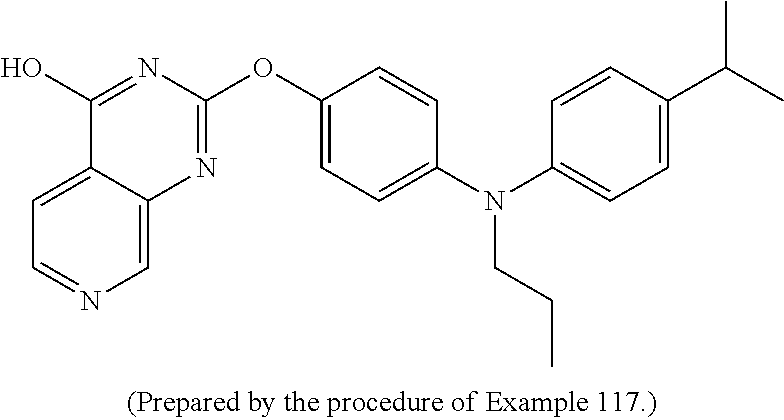
C00783
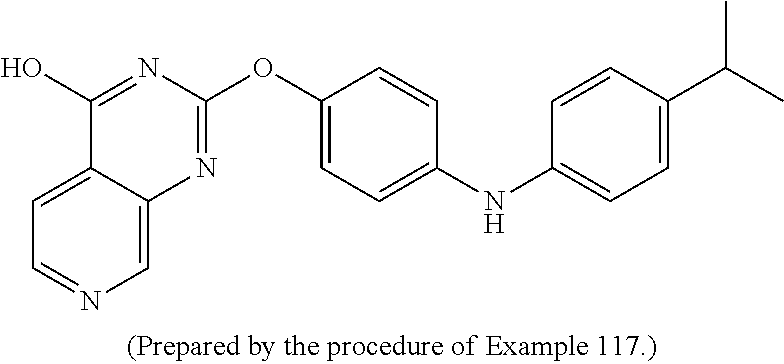
C00784
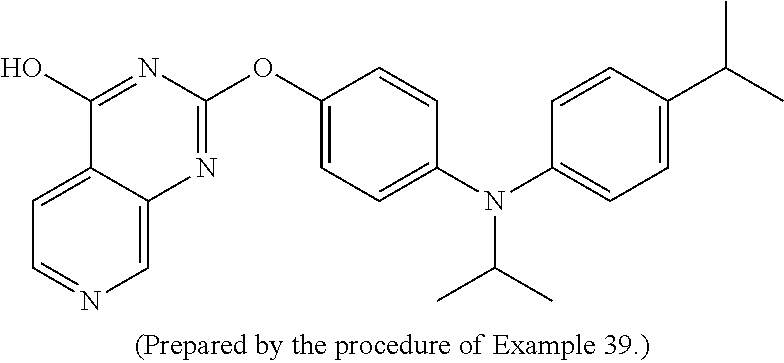
C00785
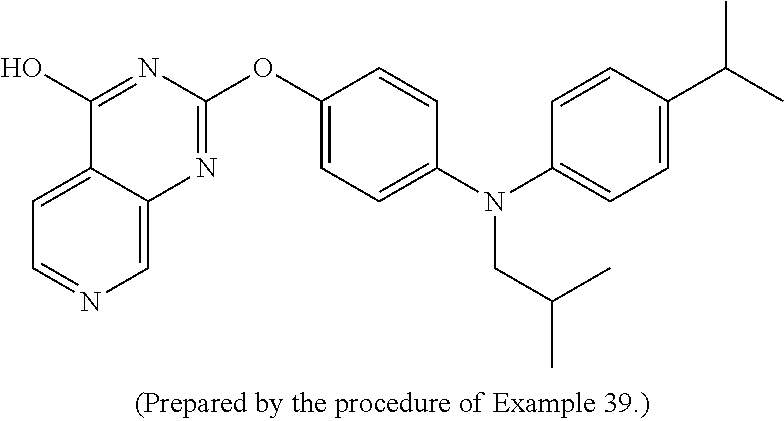
C00786
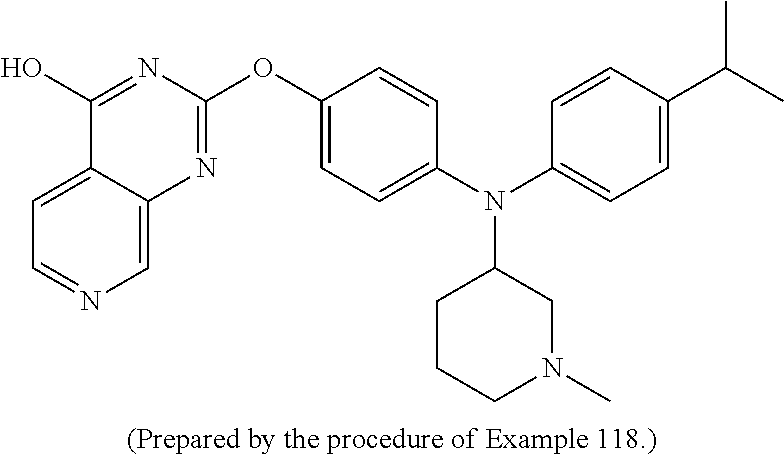
C00787
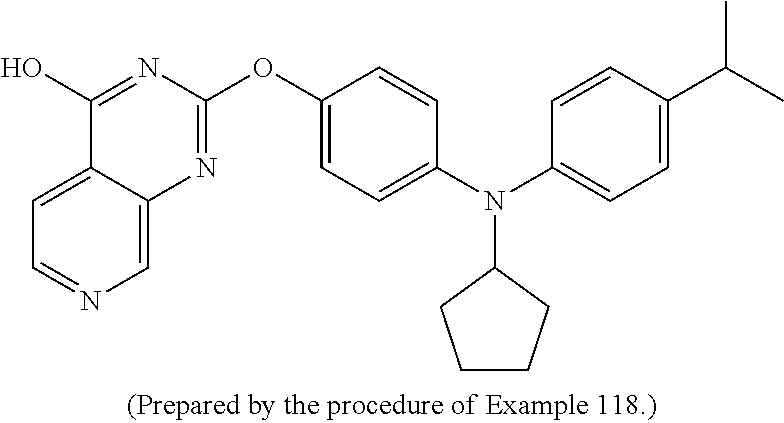
C00788
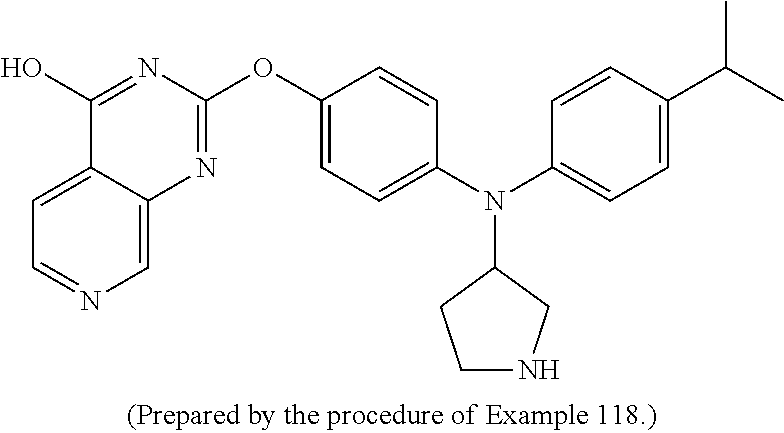
C00789
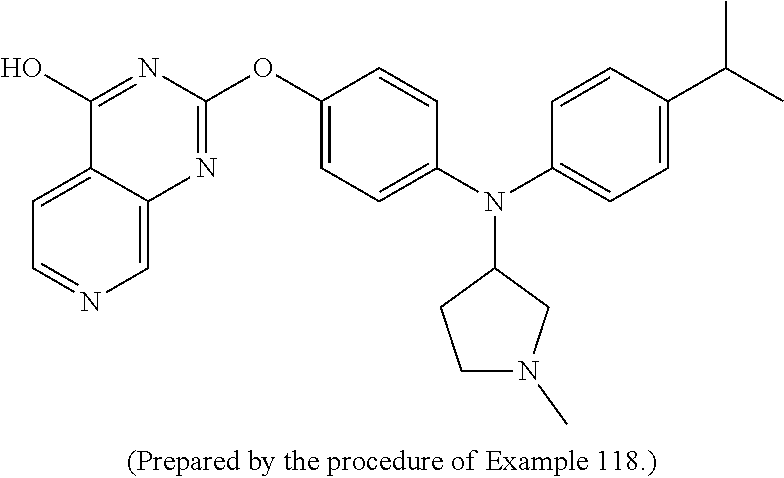
C00790
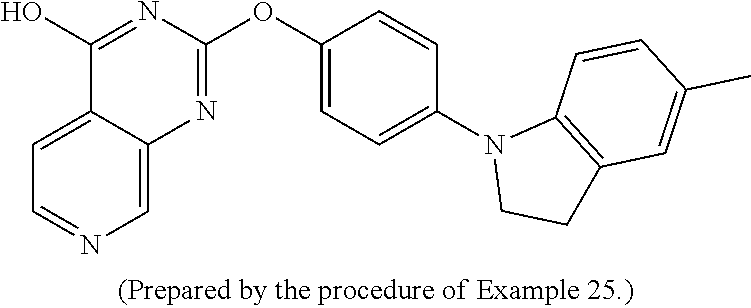
C00791
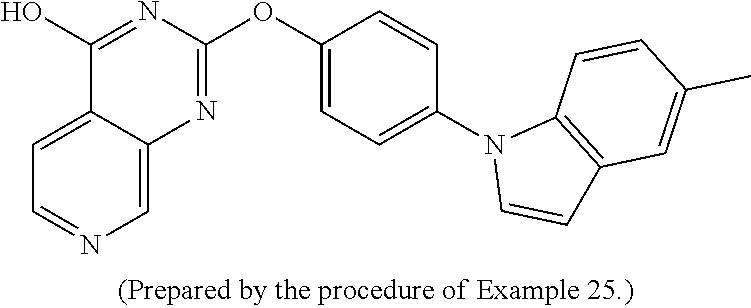
C00792

C00793
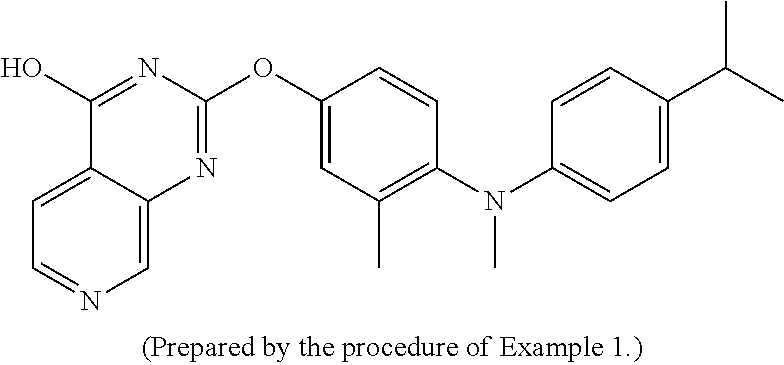
C00794
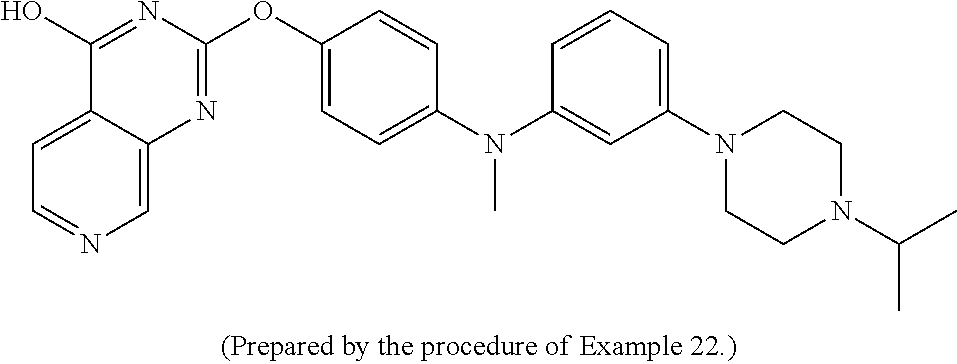
C00795
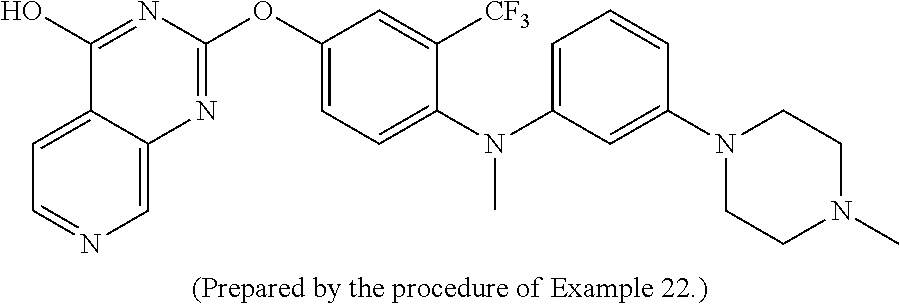
C00796

C00797
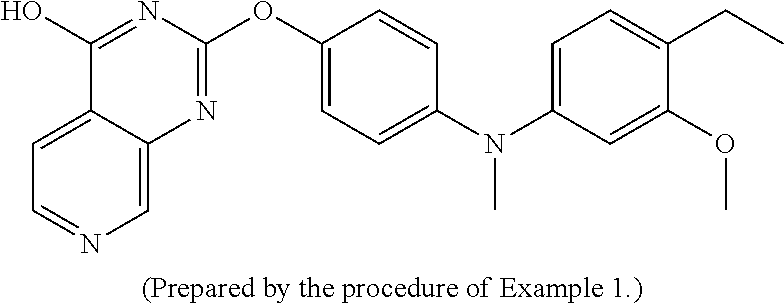
C00798
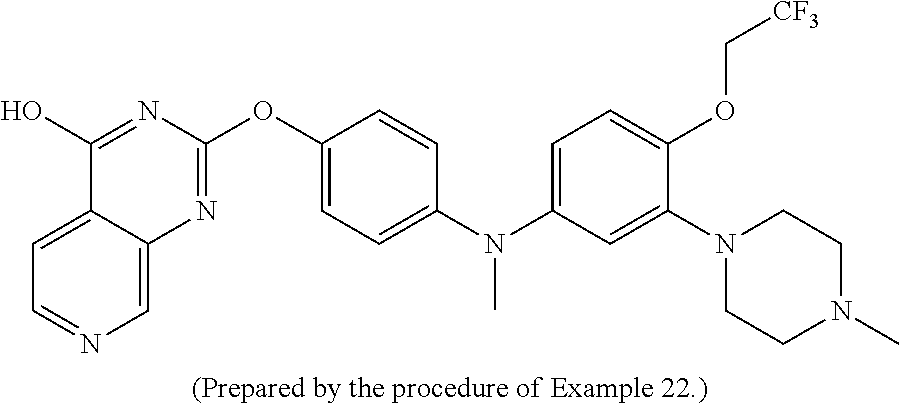
C00799
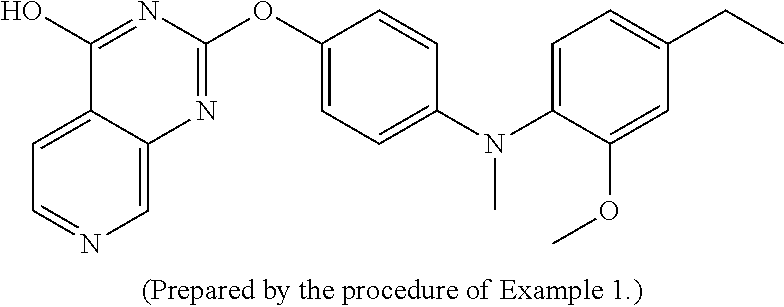
C00800
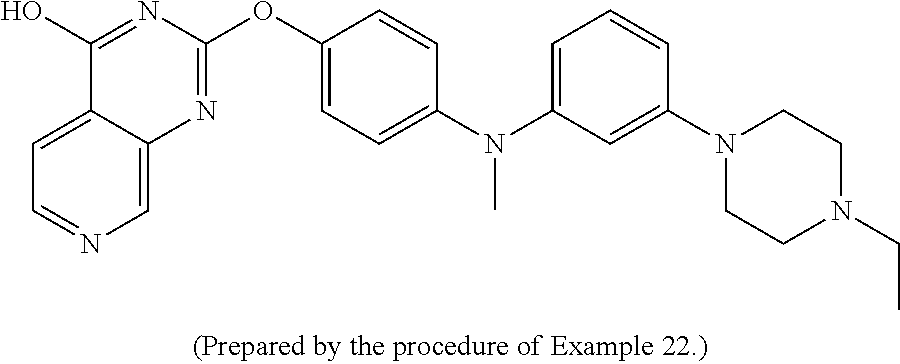
C00801
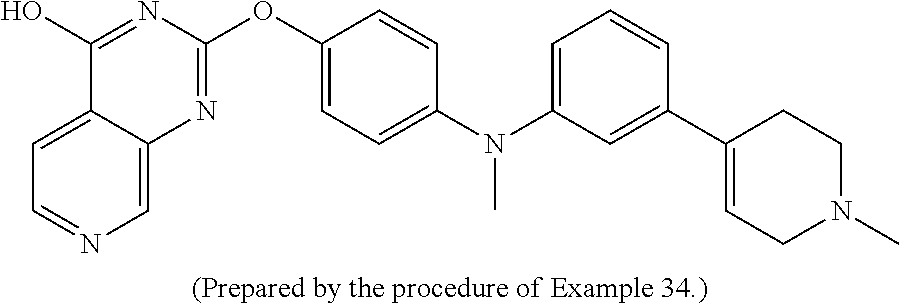
C00802
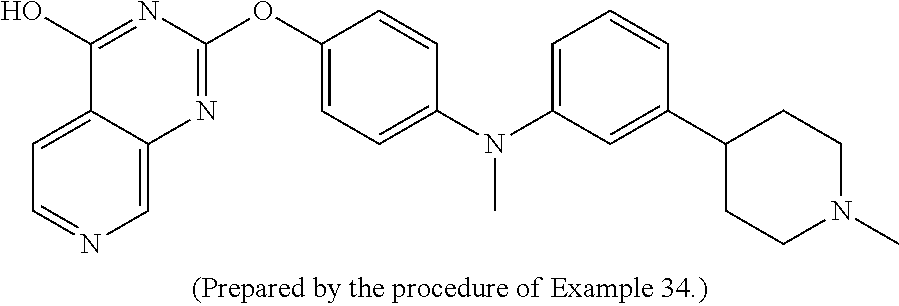
C00803
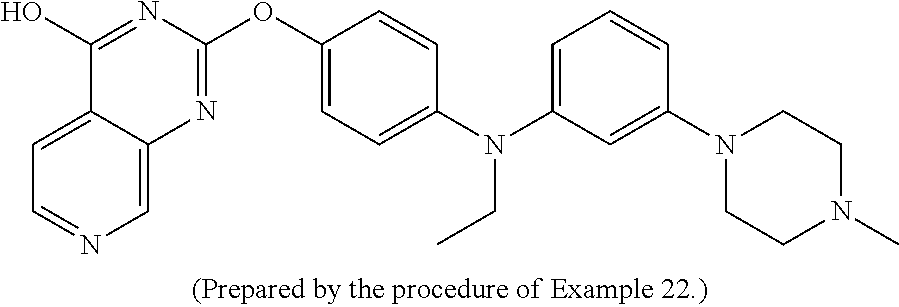
C00804
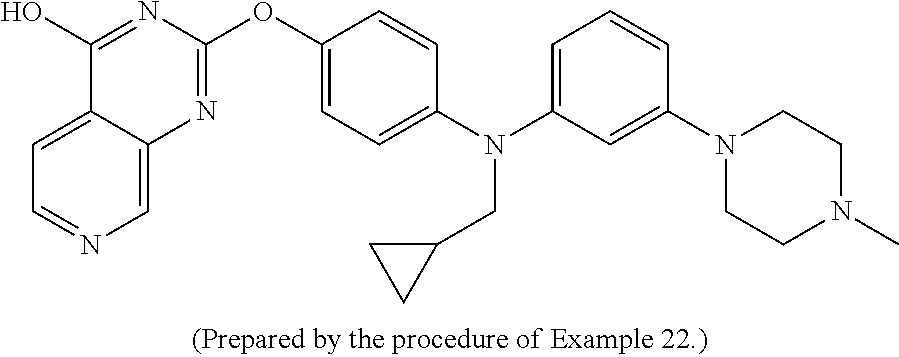
C00805
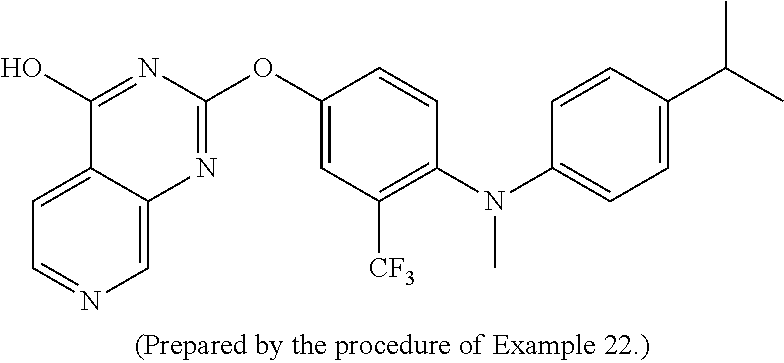
C00806
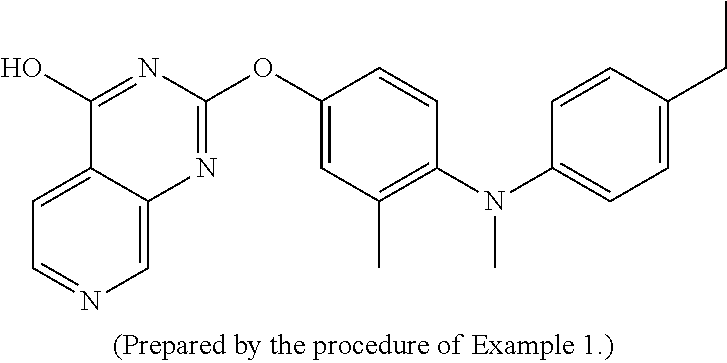
C00807
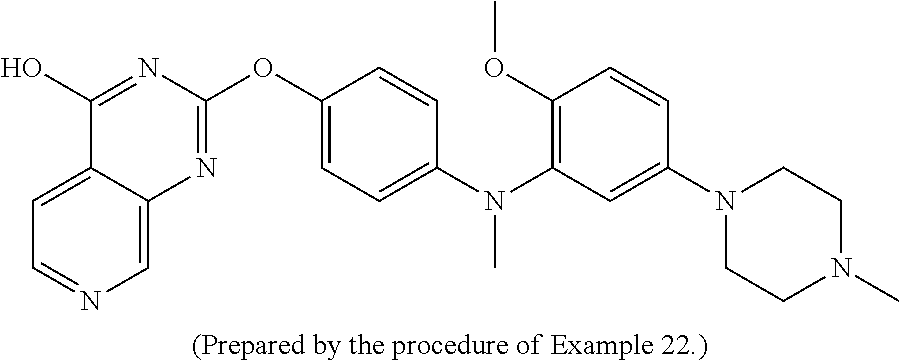
C00808
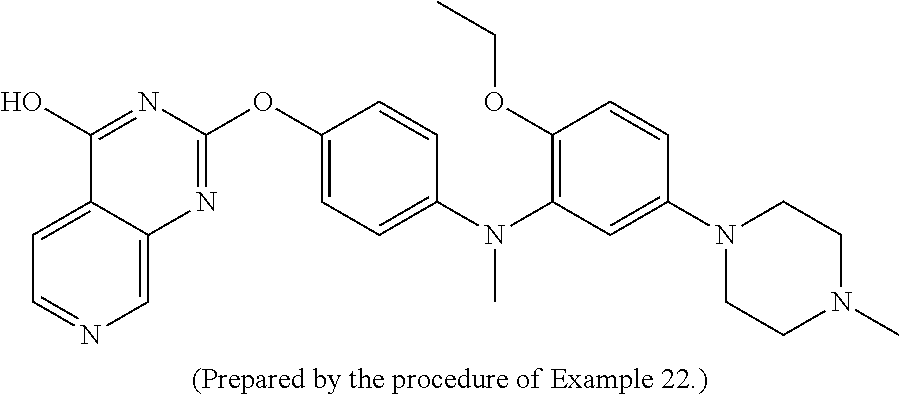
C00809
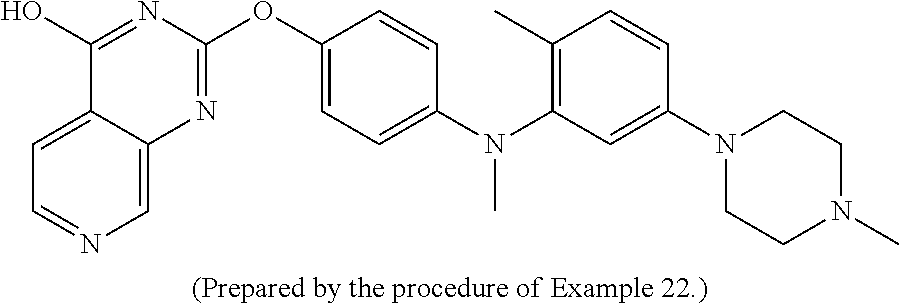
C00810
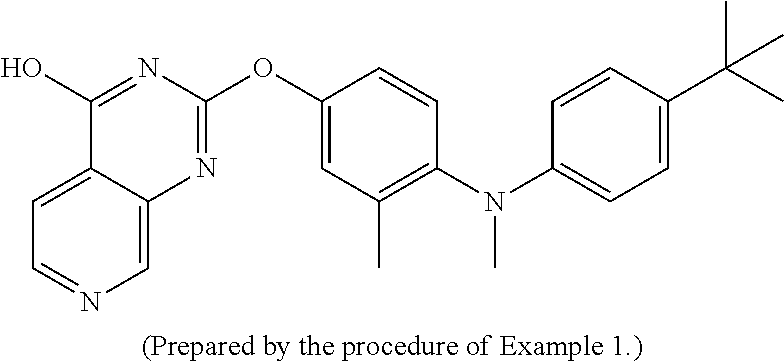
C00811
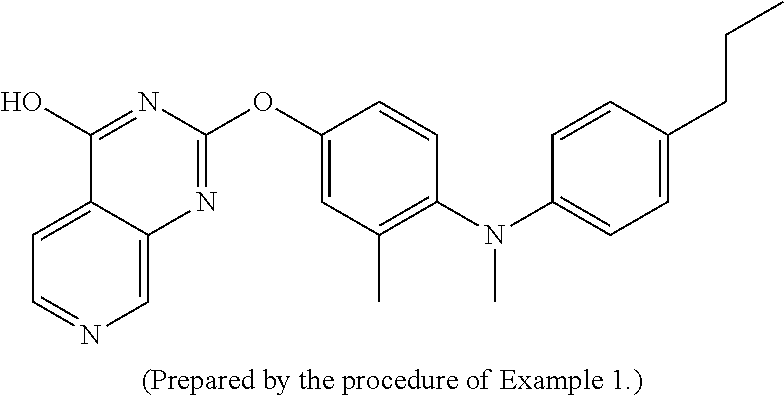
C00812
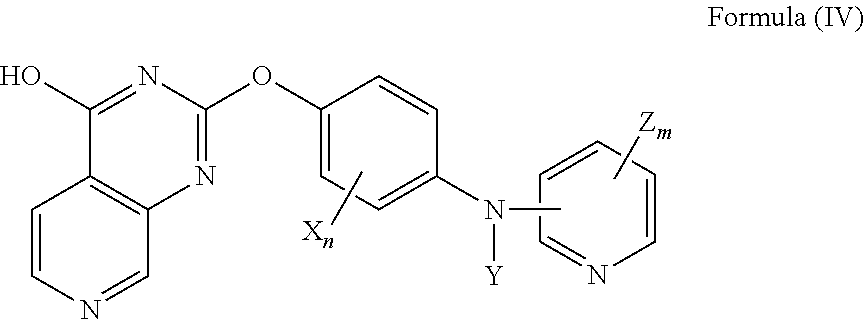
C00813
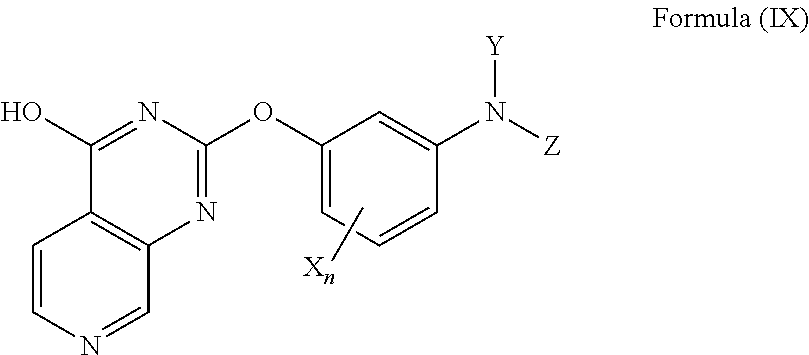
XML
uspto.report is an independent third-party trademark research tool that is not affiliated, endorsed, or sponsored by the United States Patent and Trademark Office (USPTO) or any other governmental organization. The information provided by uspto.report is based on publicly available data at the time of writing and is intended for informational purposes only.
While we strive to provide accurate and up-to-date information, we do not guarantee the accuracy, completeness, reliability, or suitability of the information displayed on this site. The use of this site is at your own risk. Any reliance you place on such information is therefore strictly at your own risk.
All official trademark data, including owner information, should be verified by visiting the official USPTO website at www.uspto.gov. This site is not intended to replace professional legal advice and should not be used as a substitute for consulting with a legal professional who is knowledgeable about trademark law.